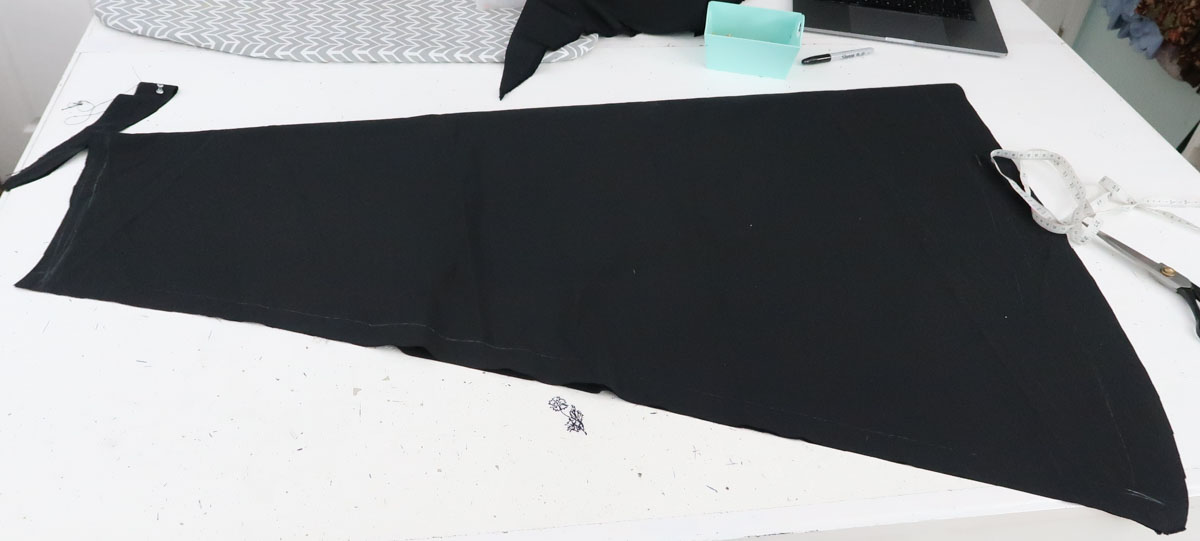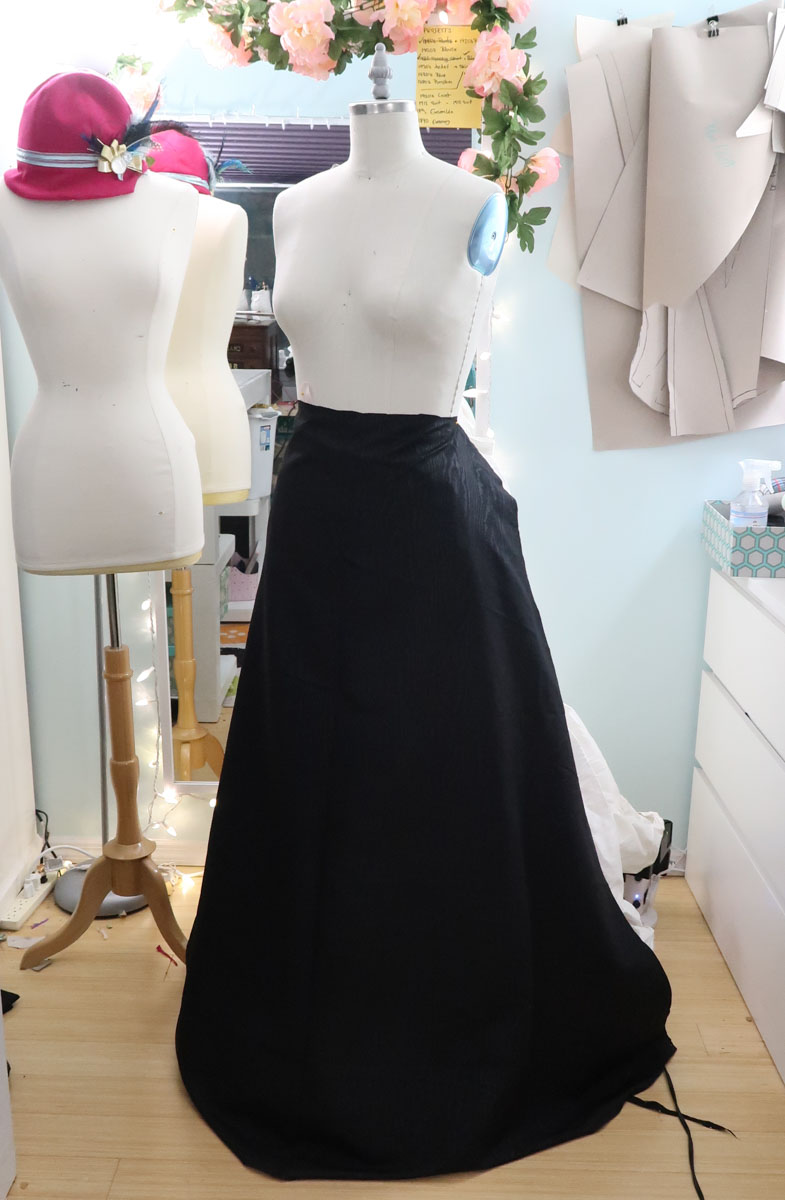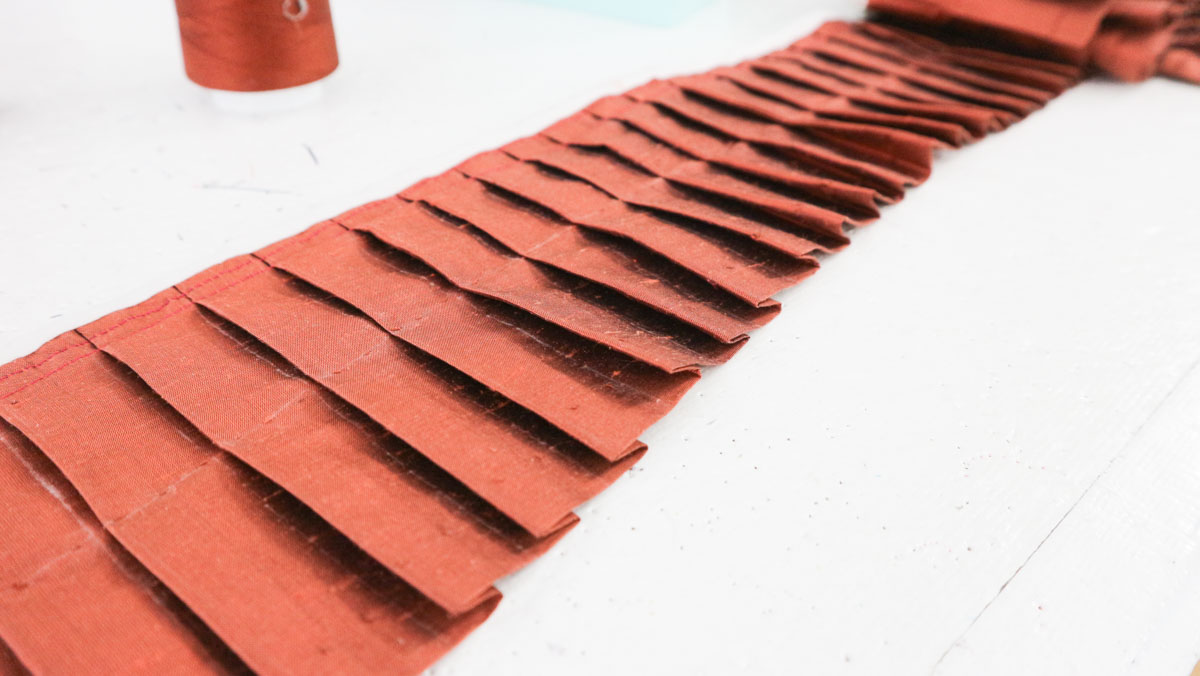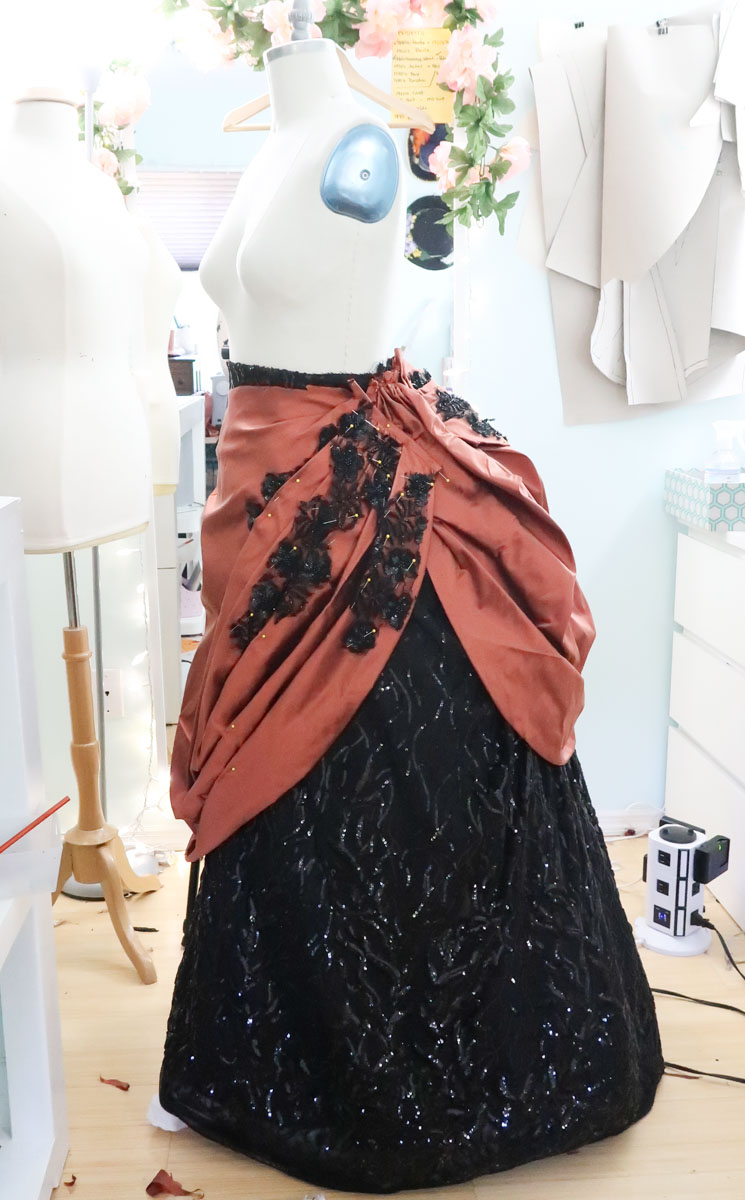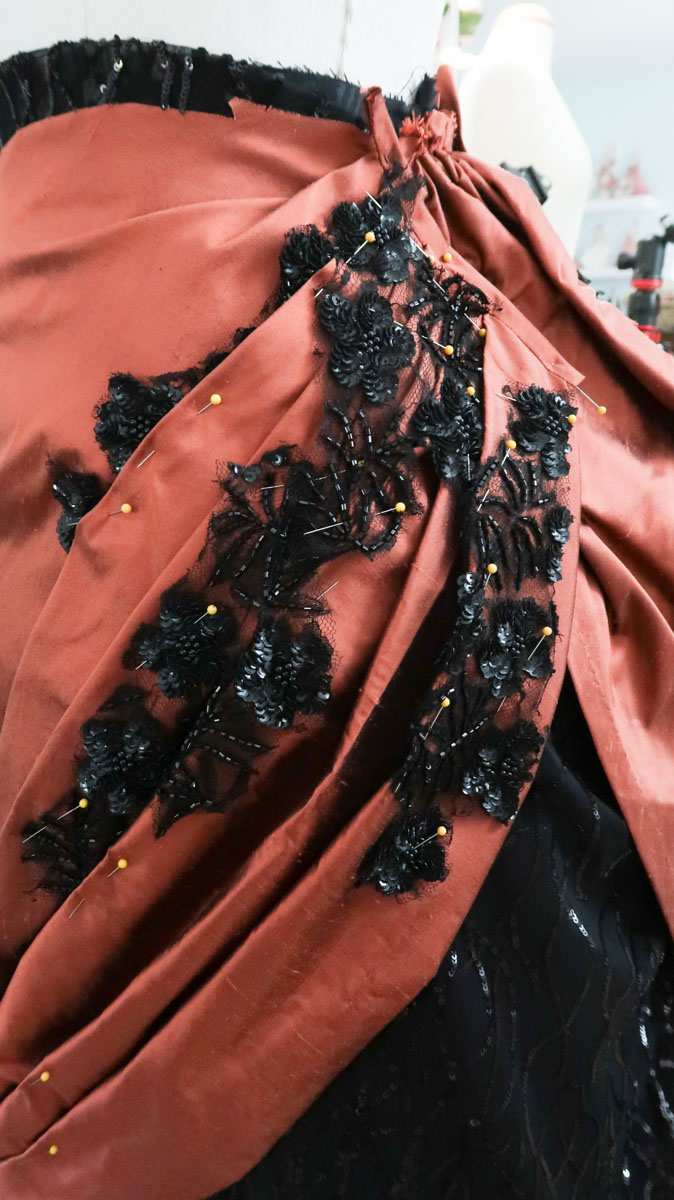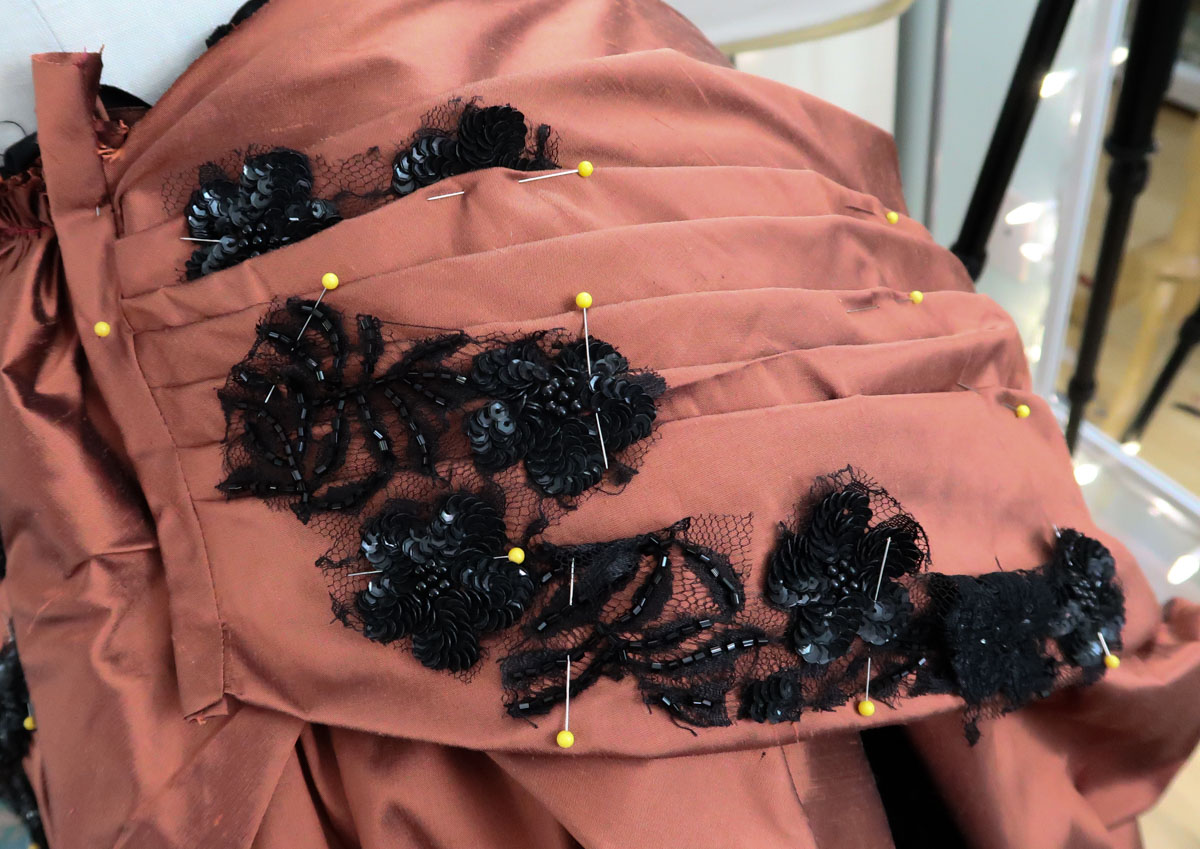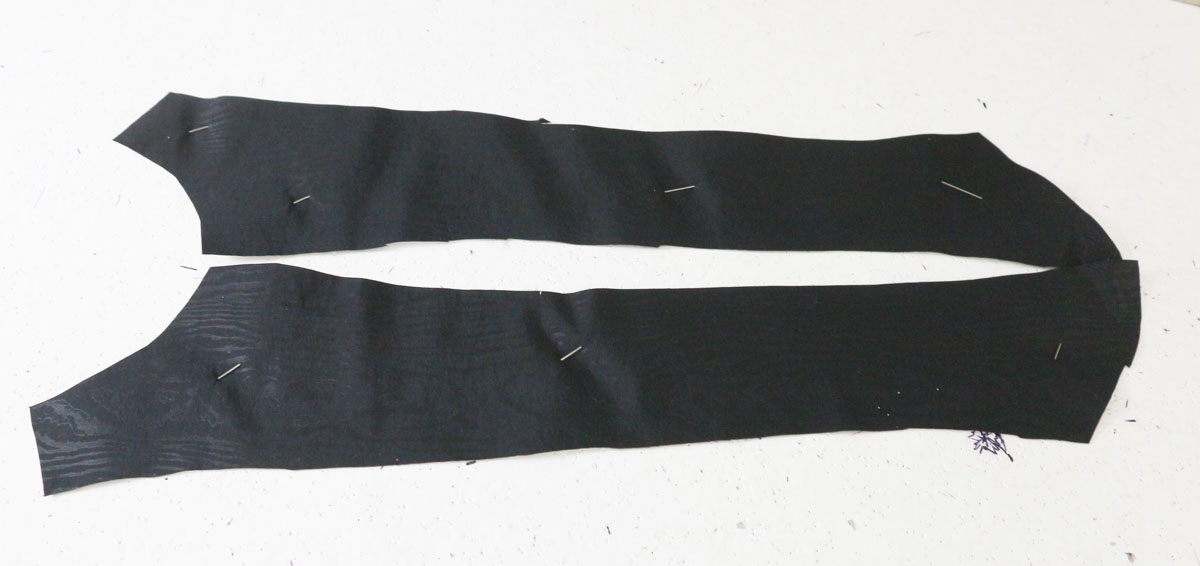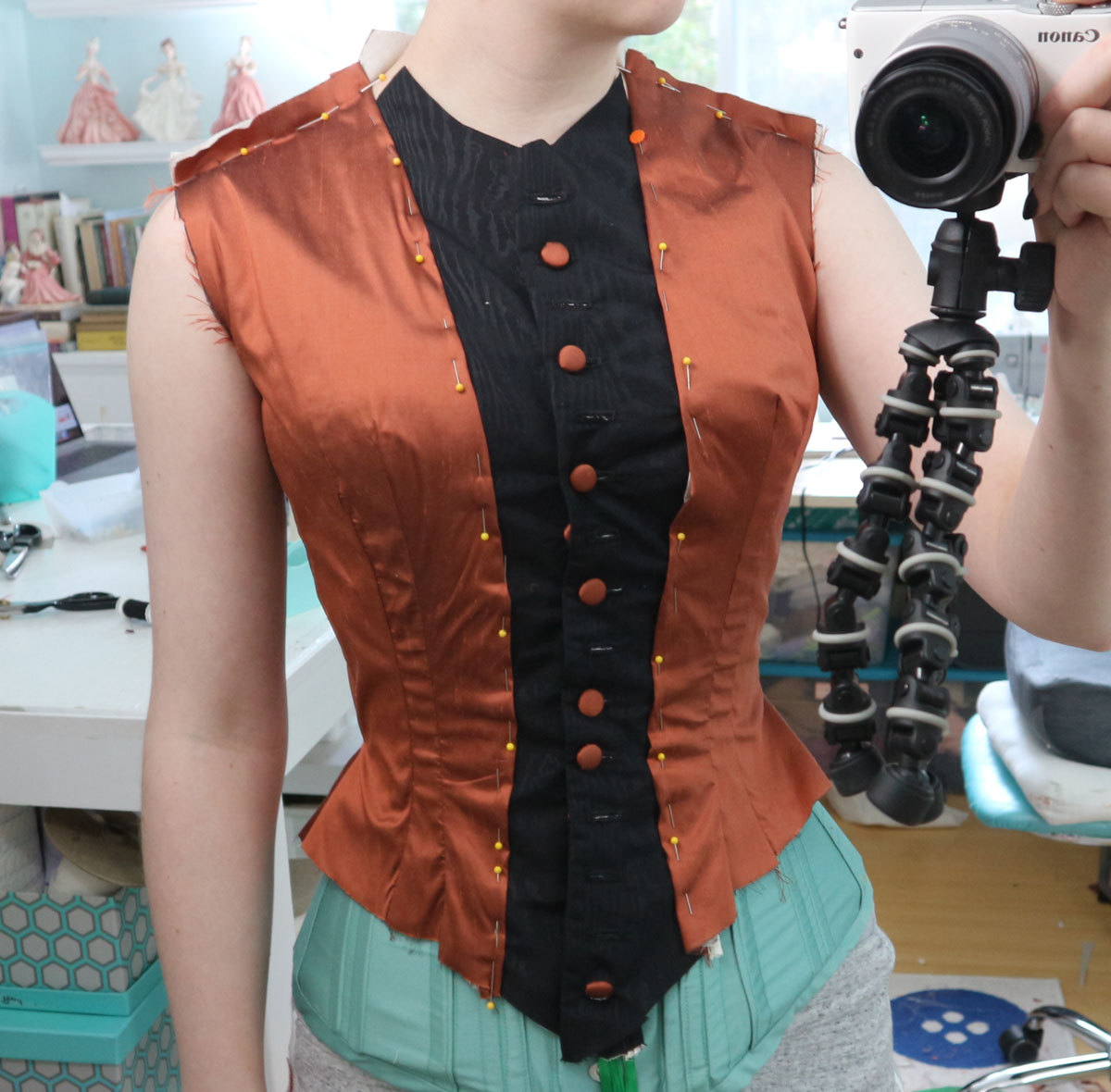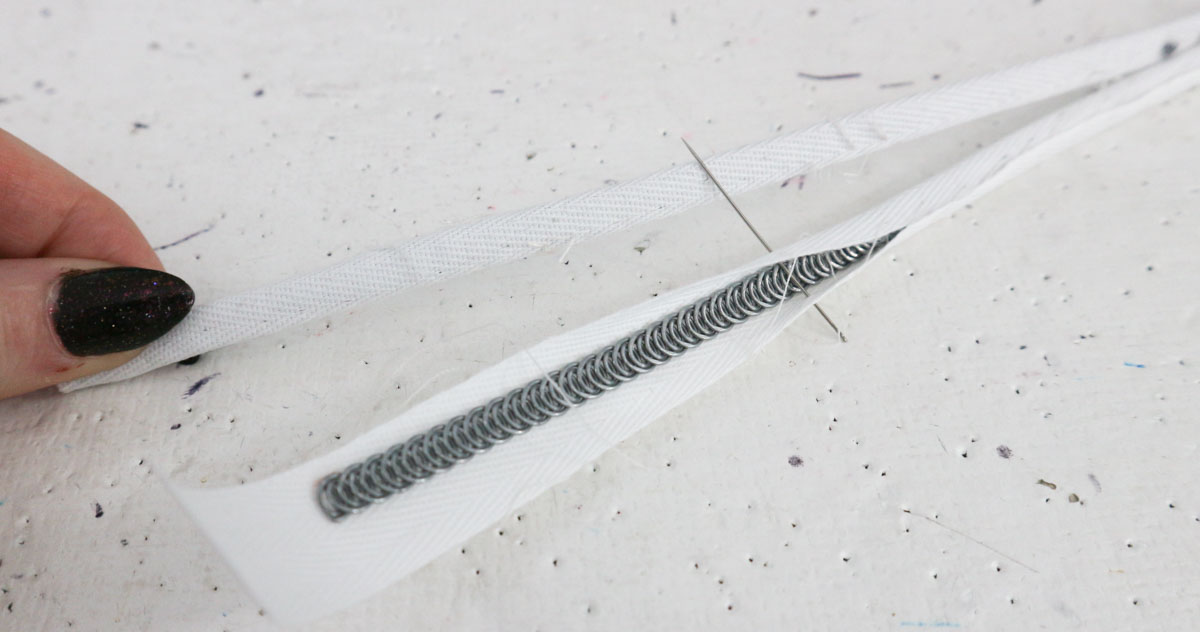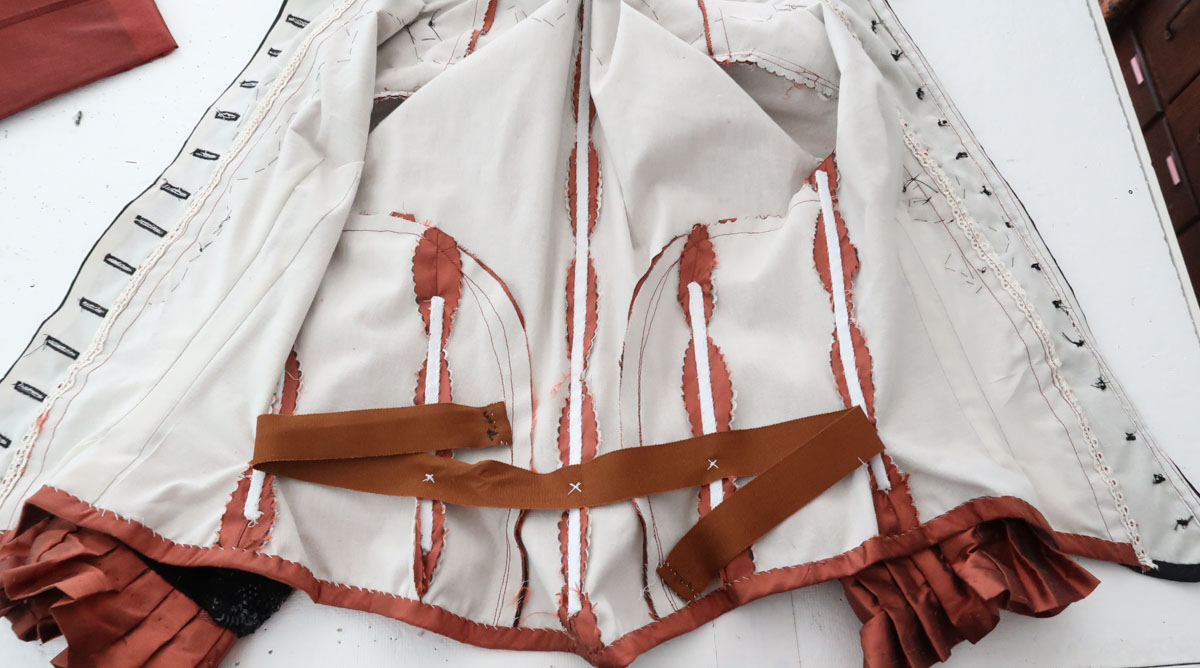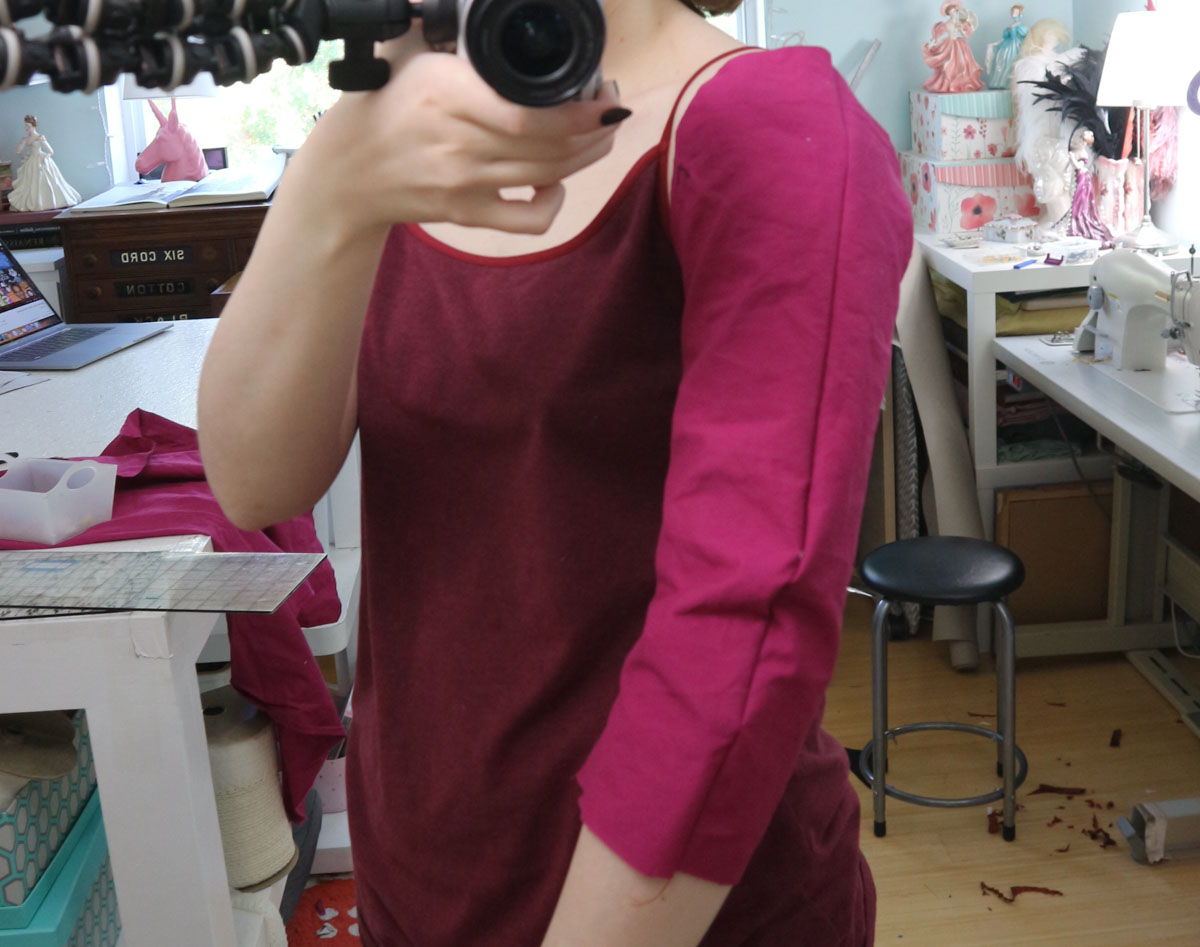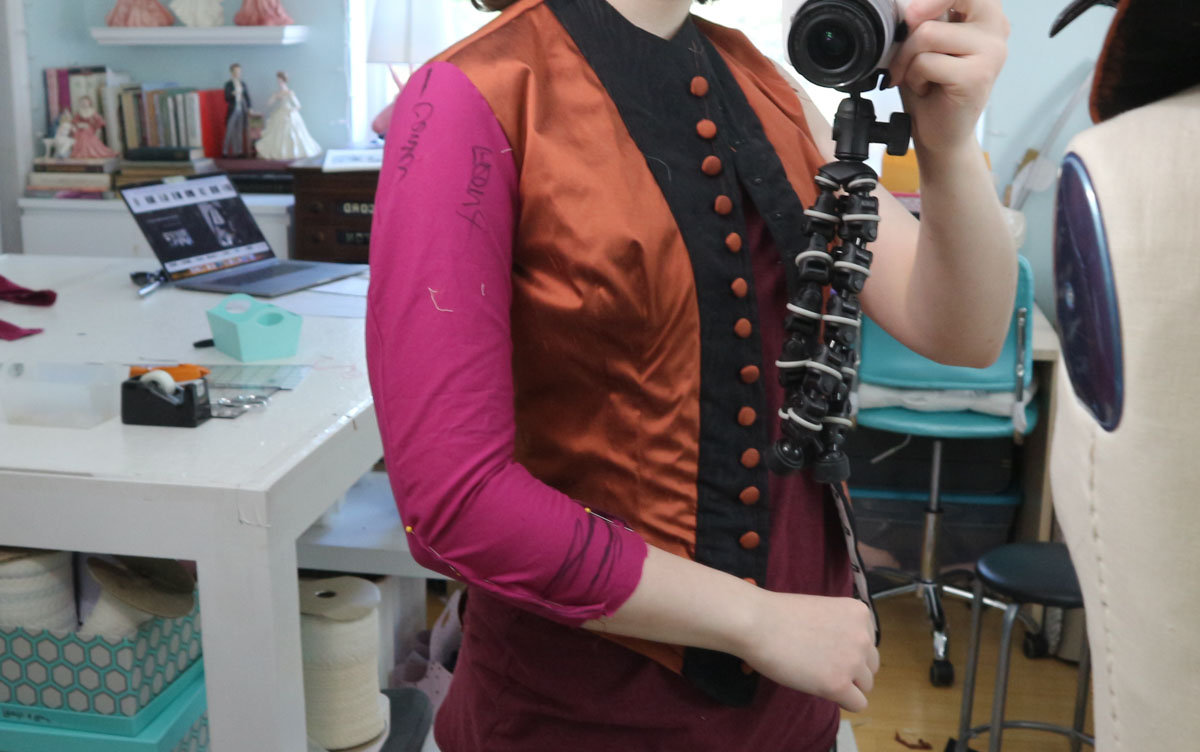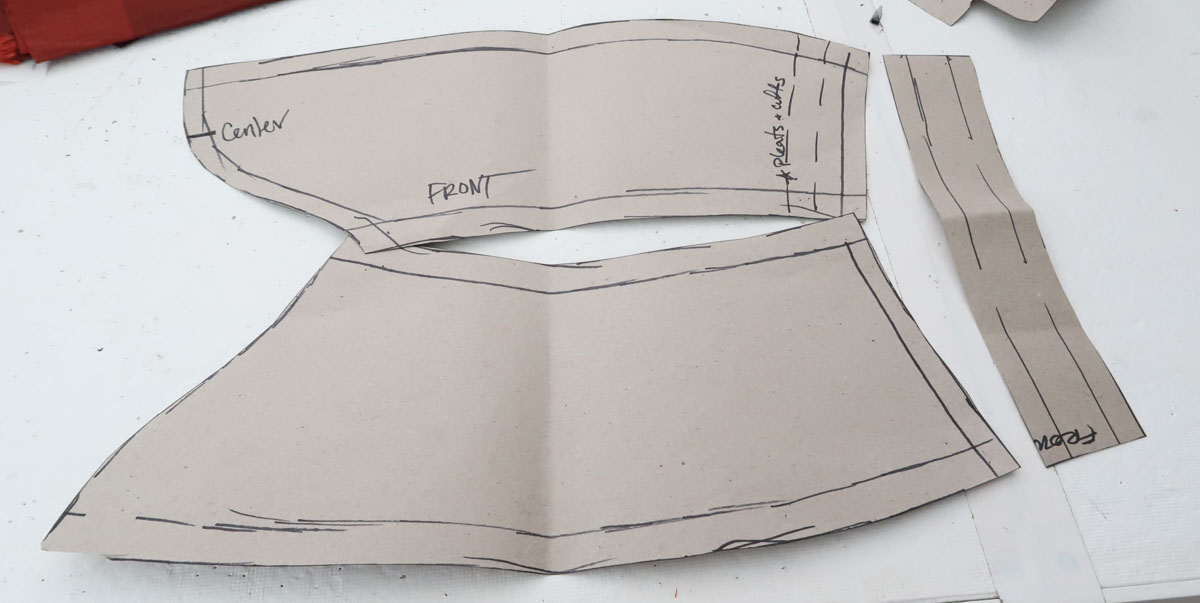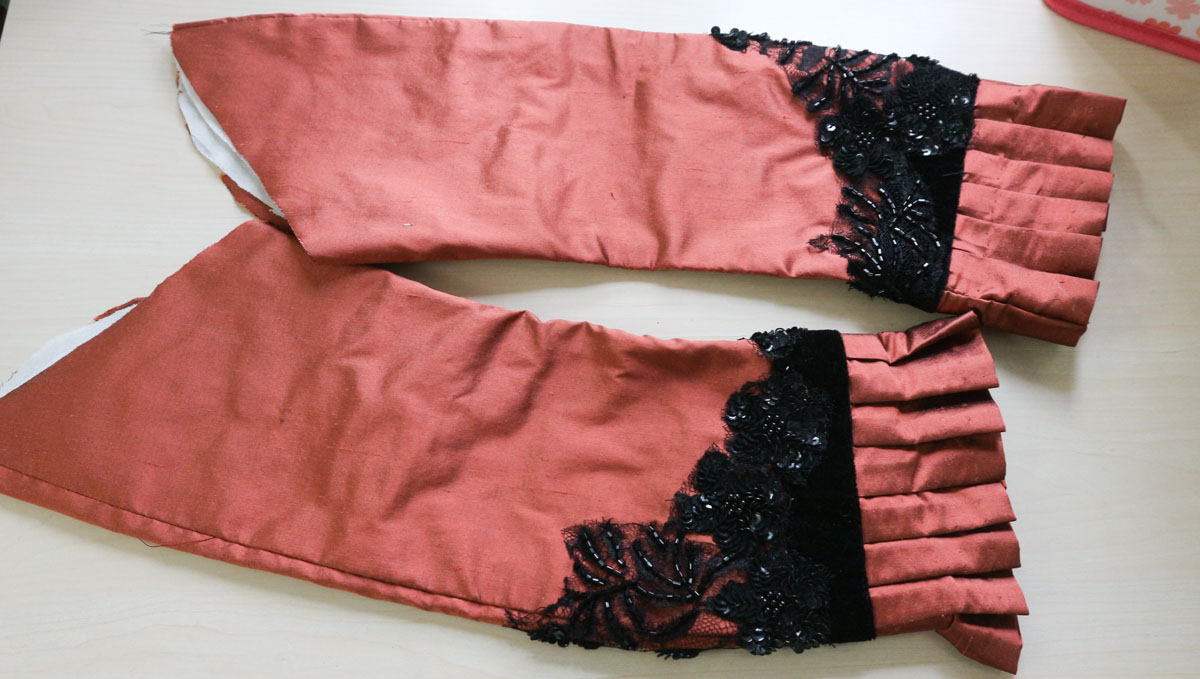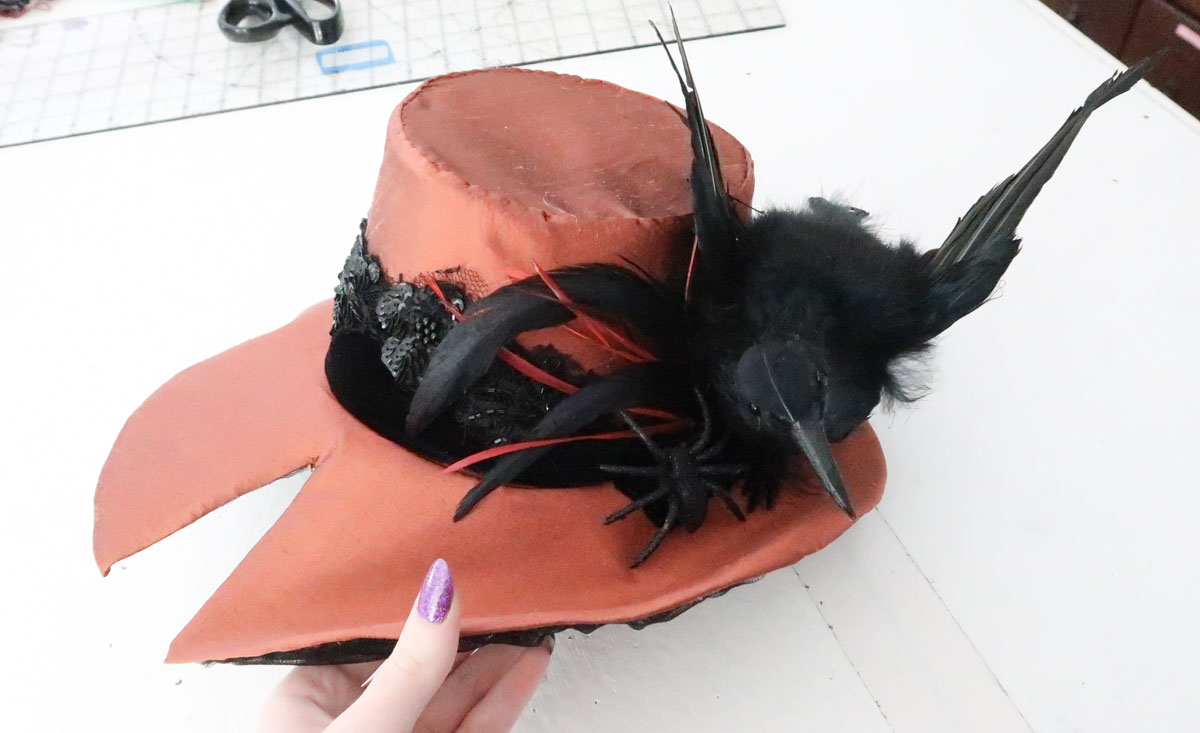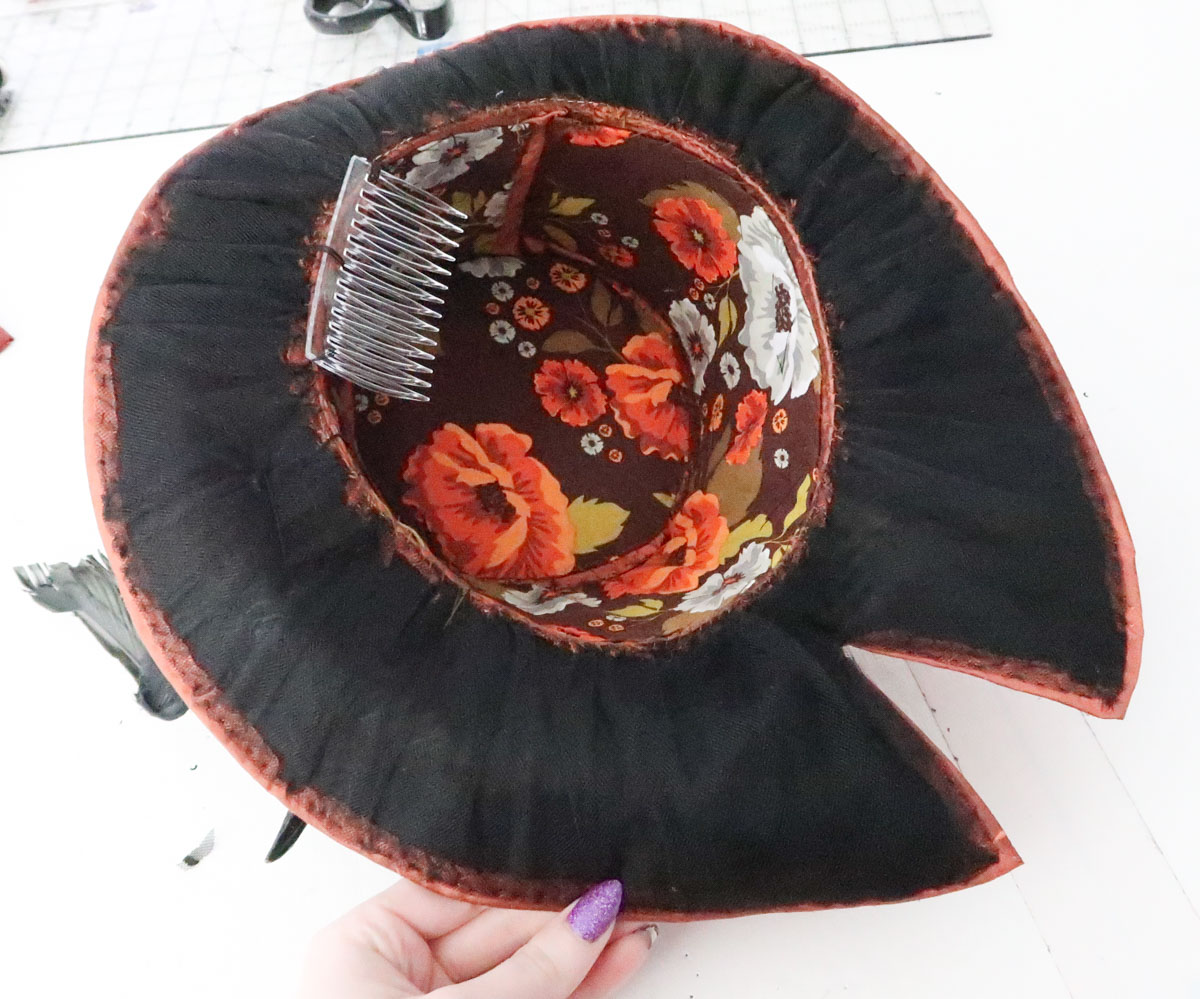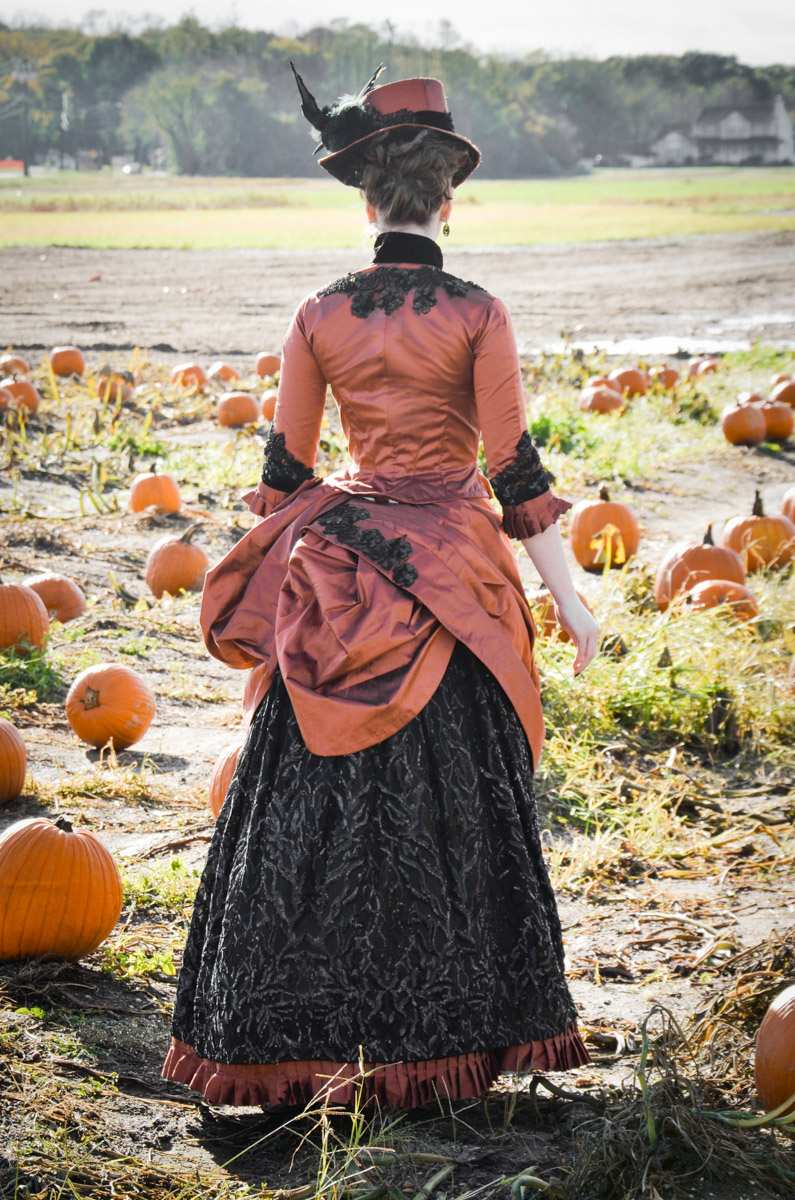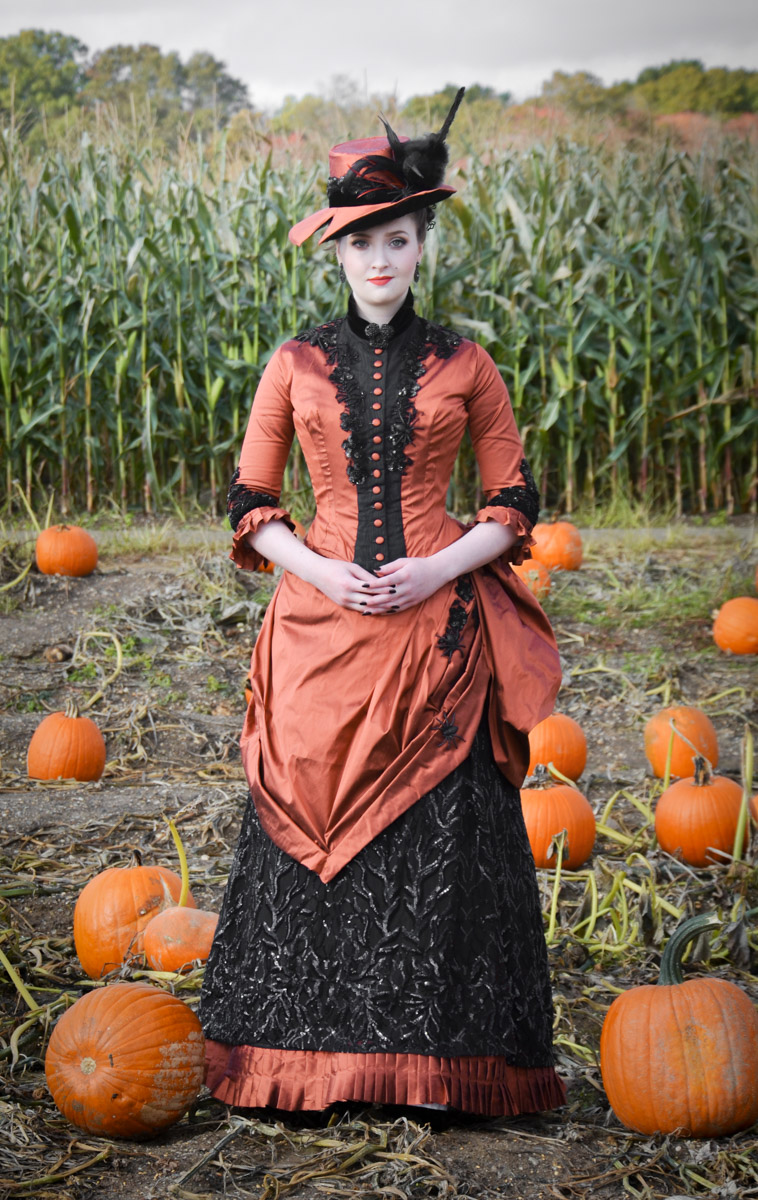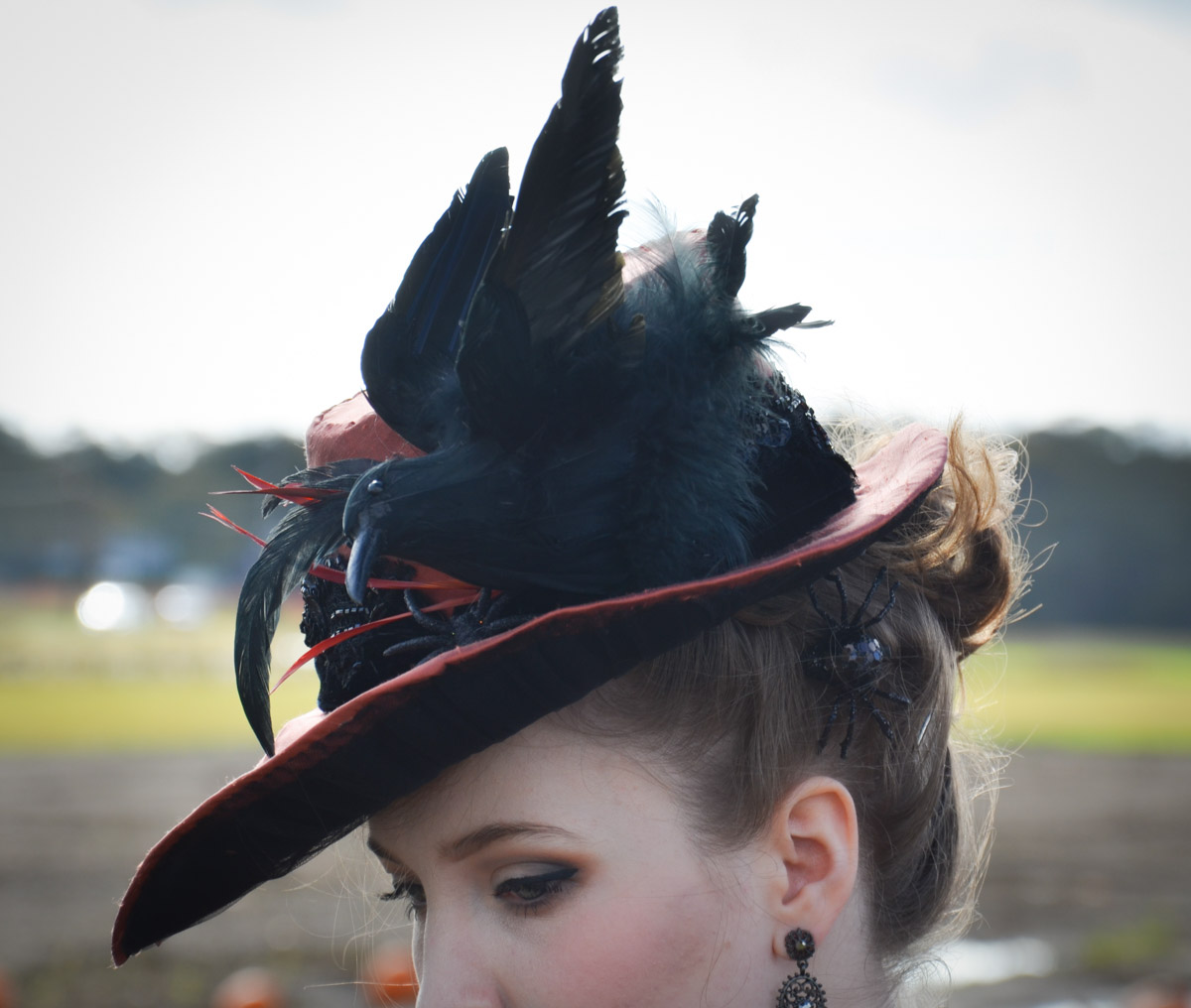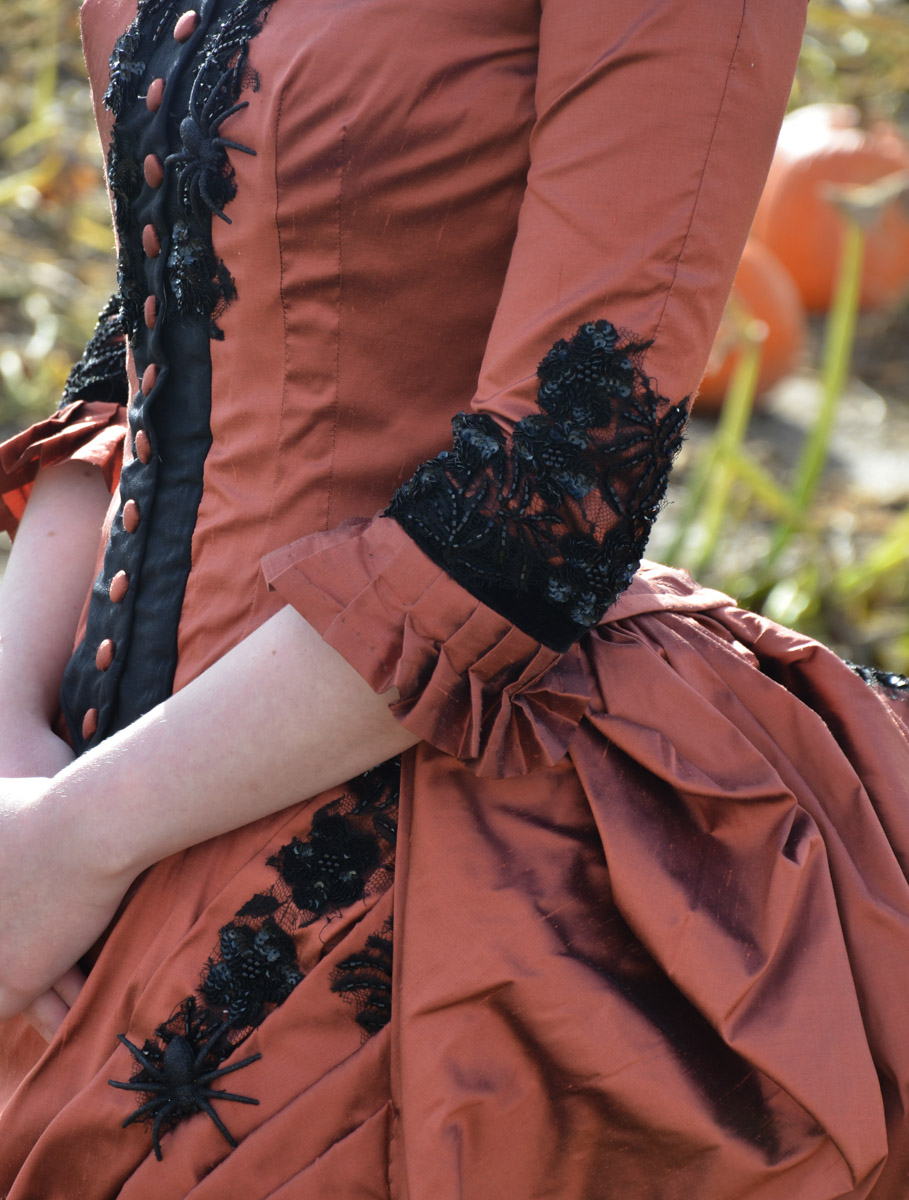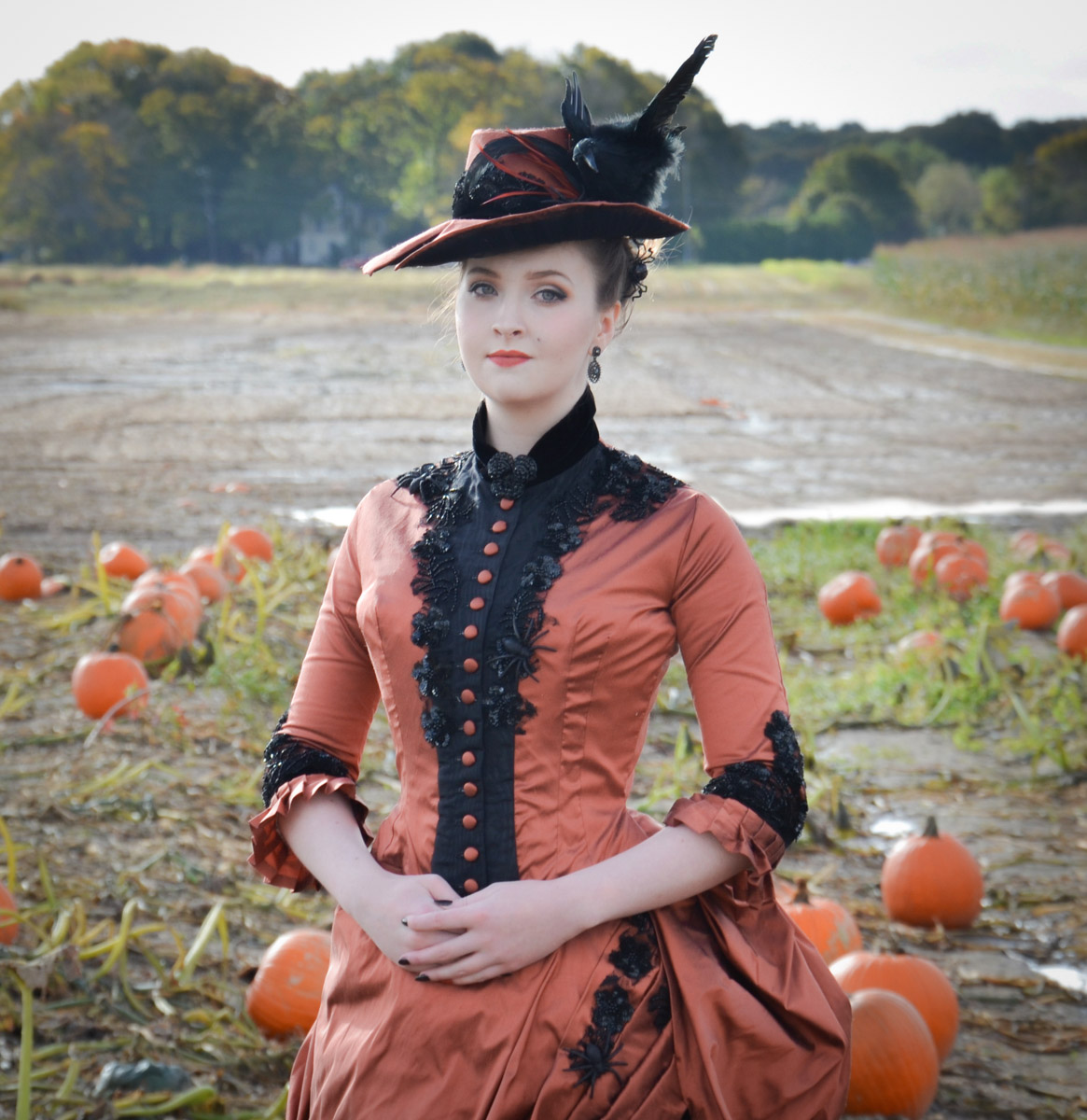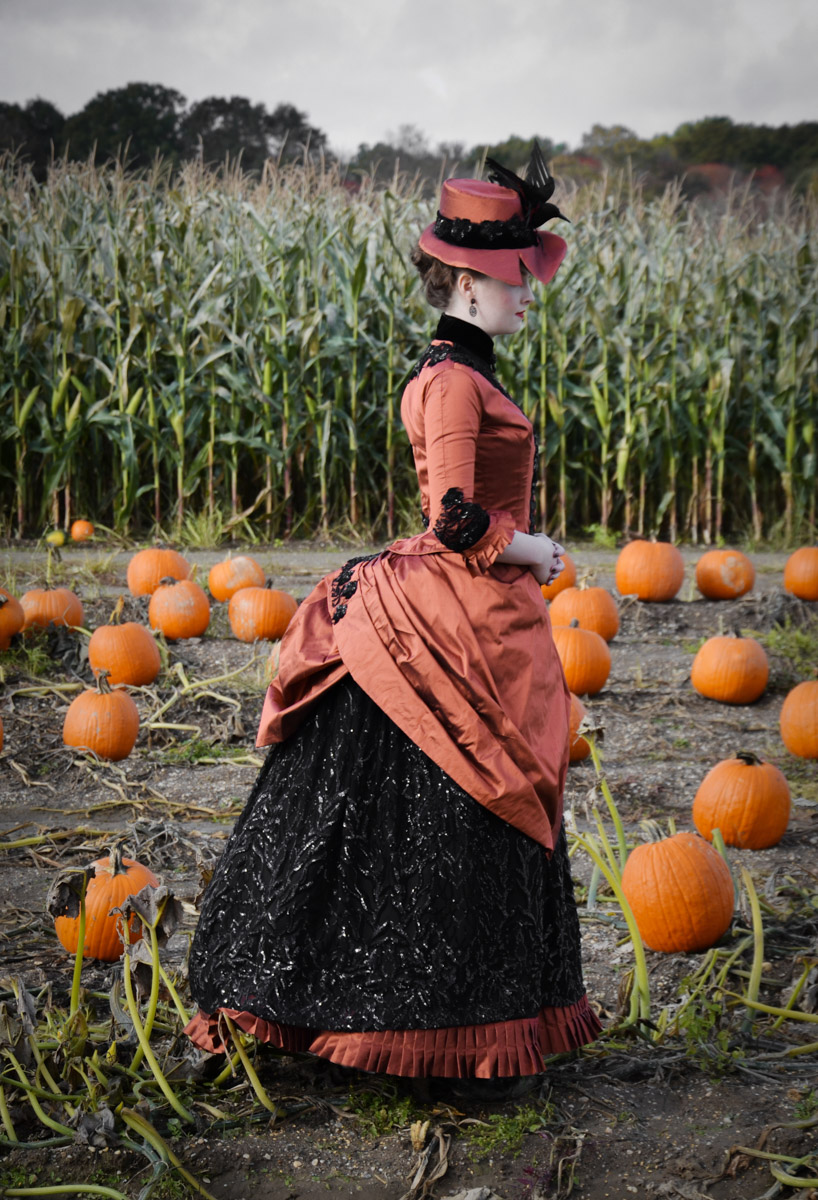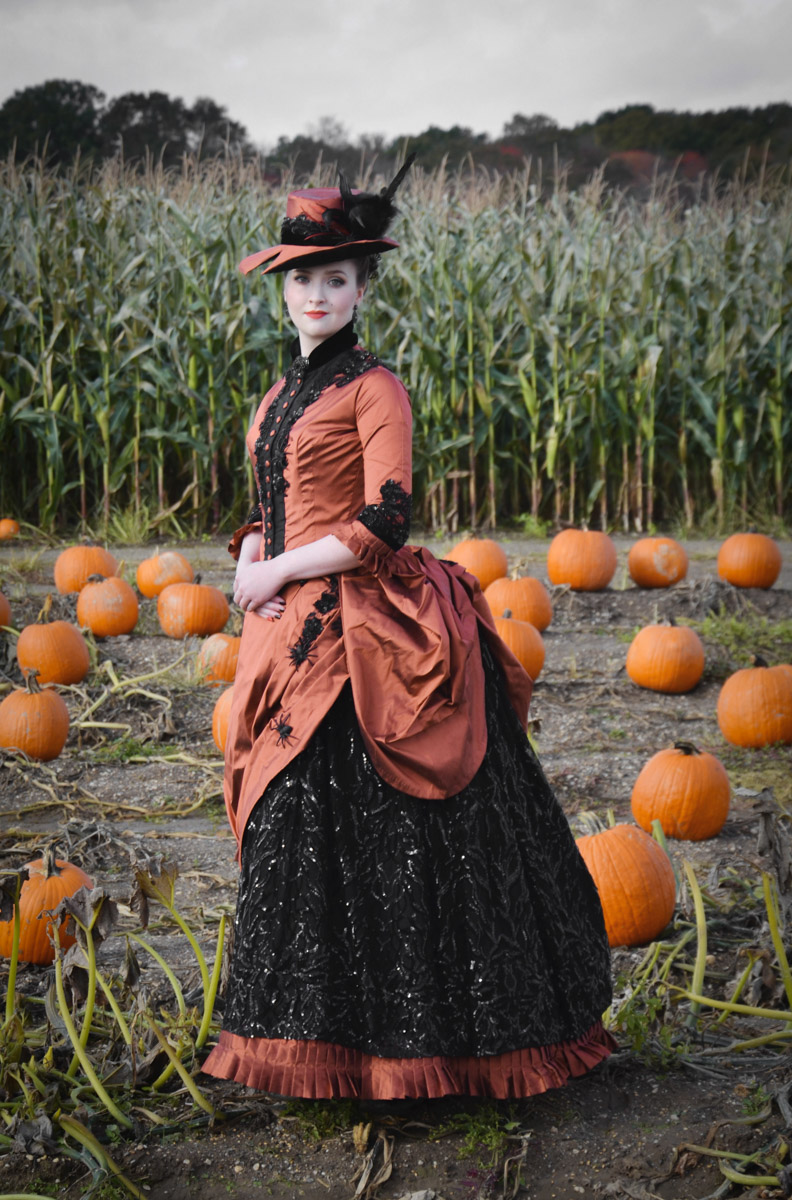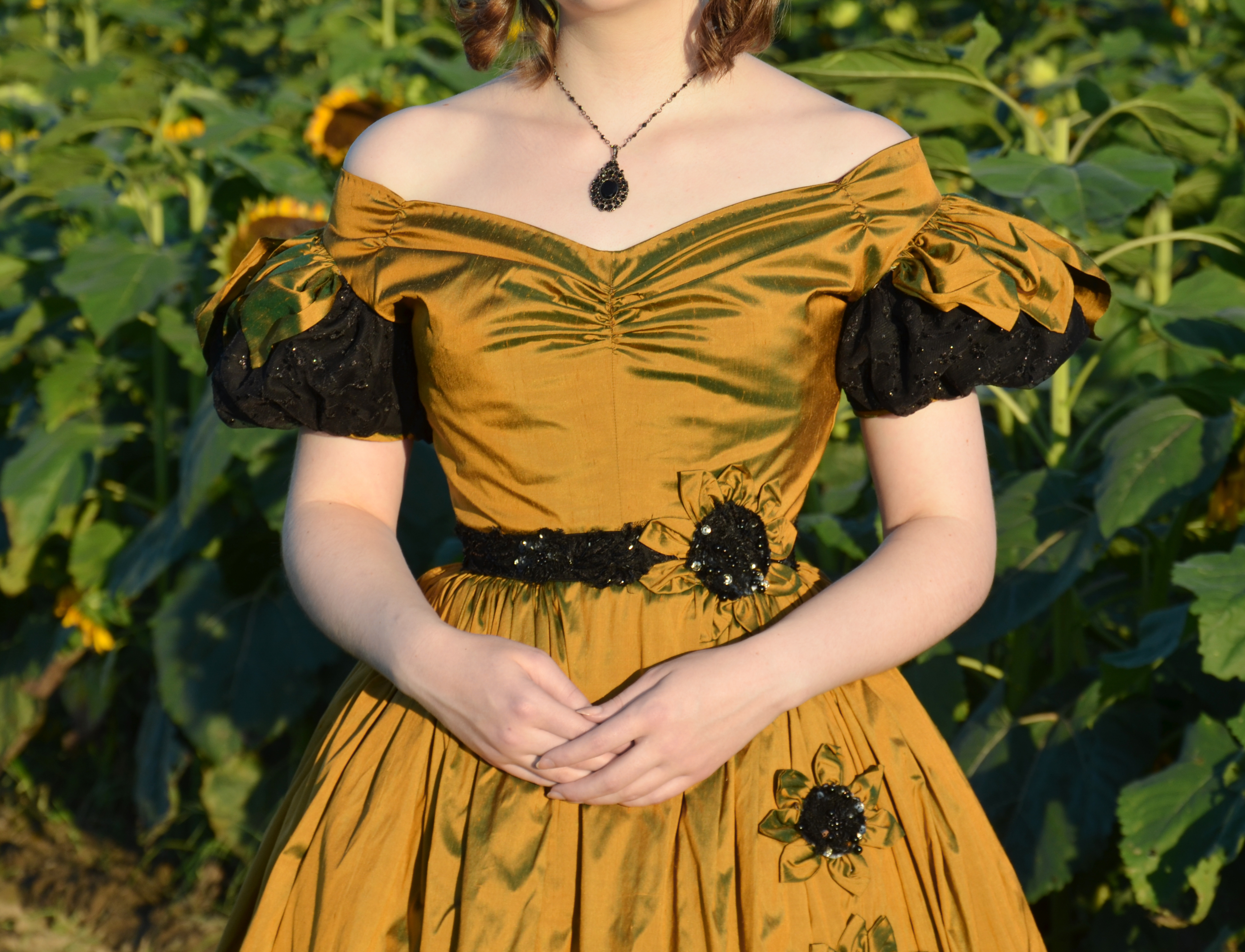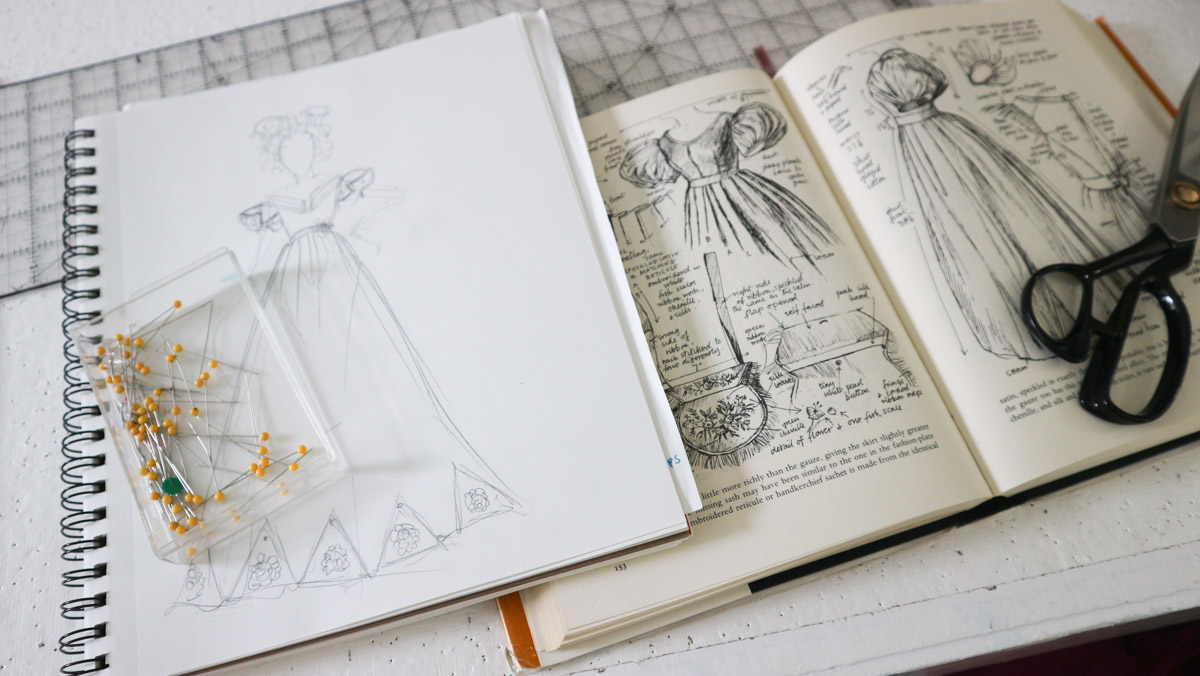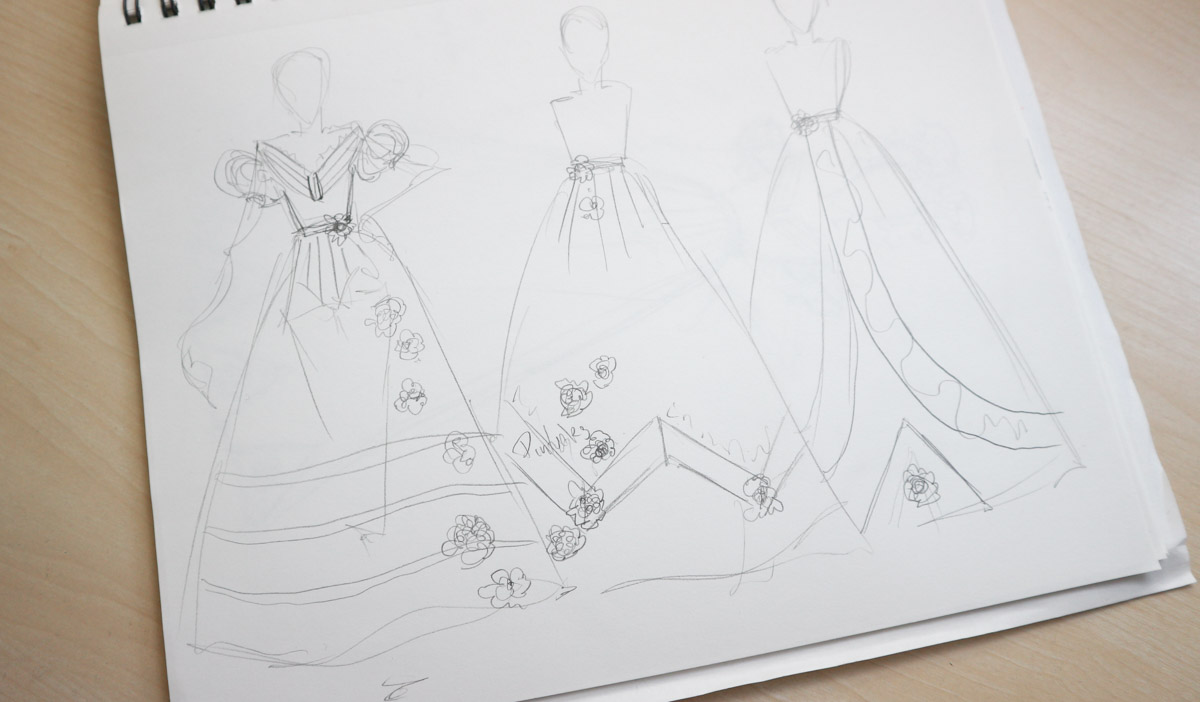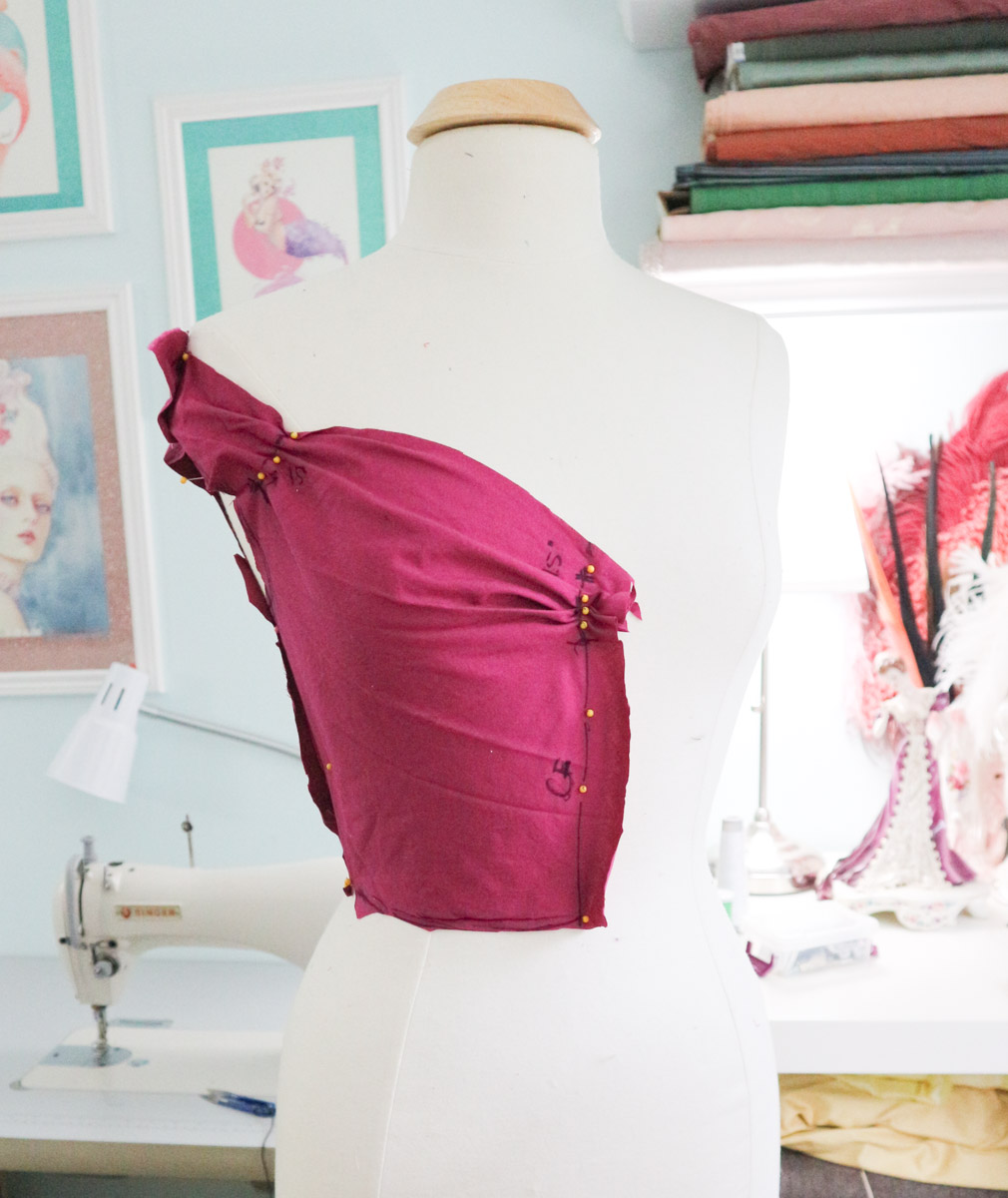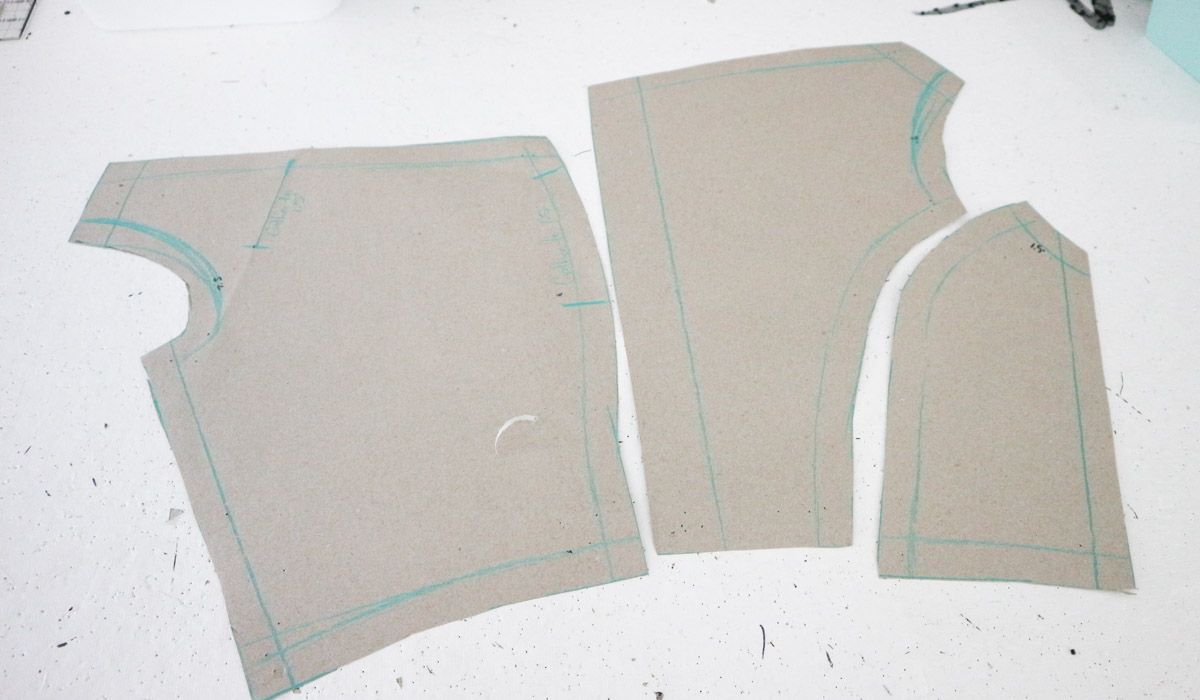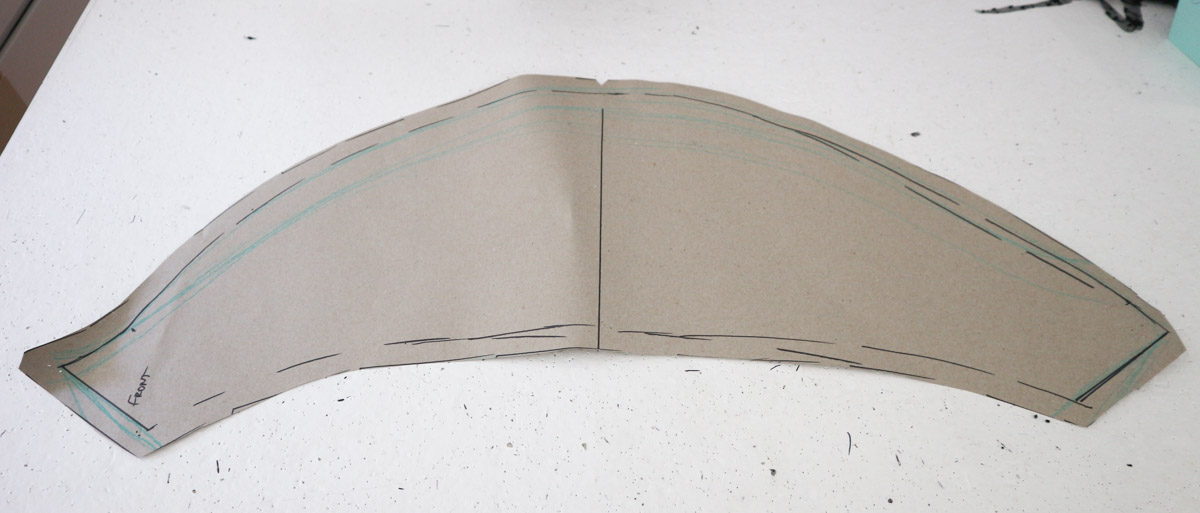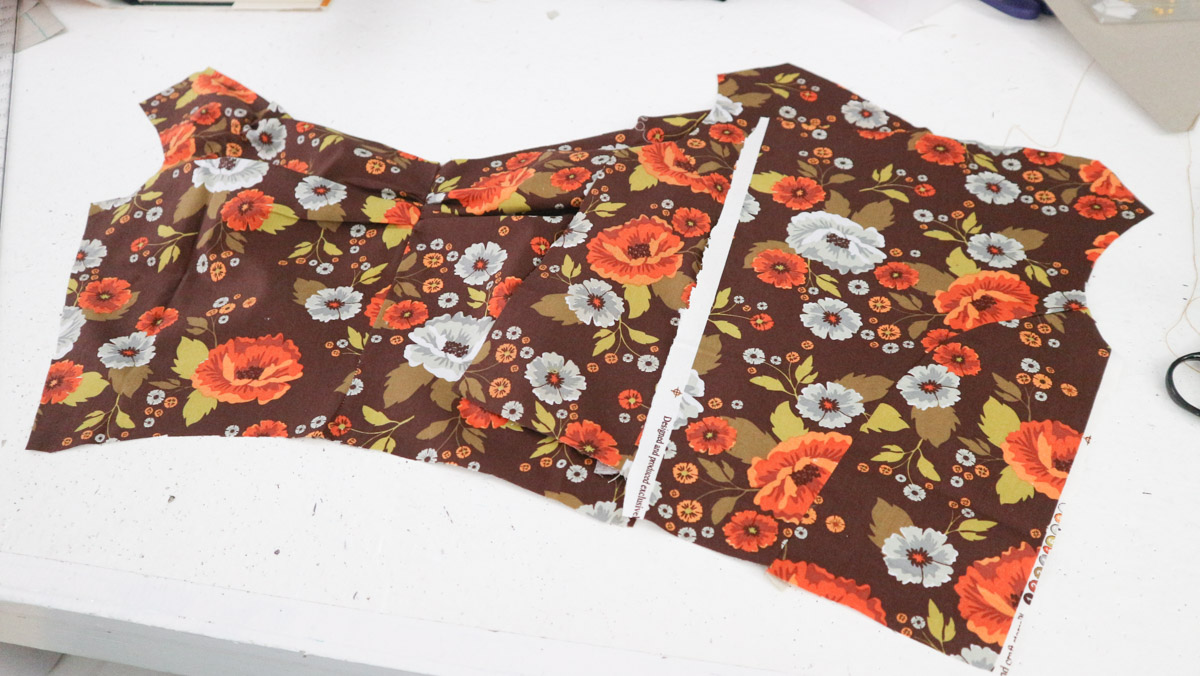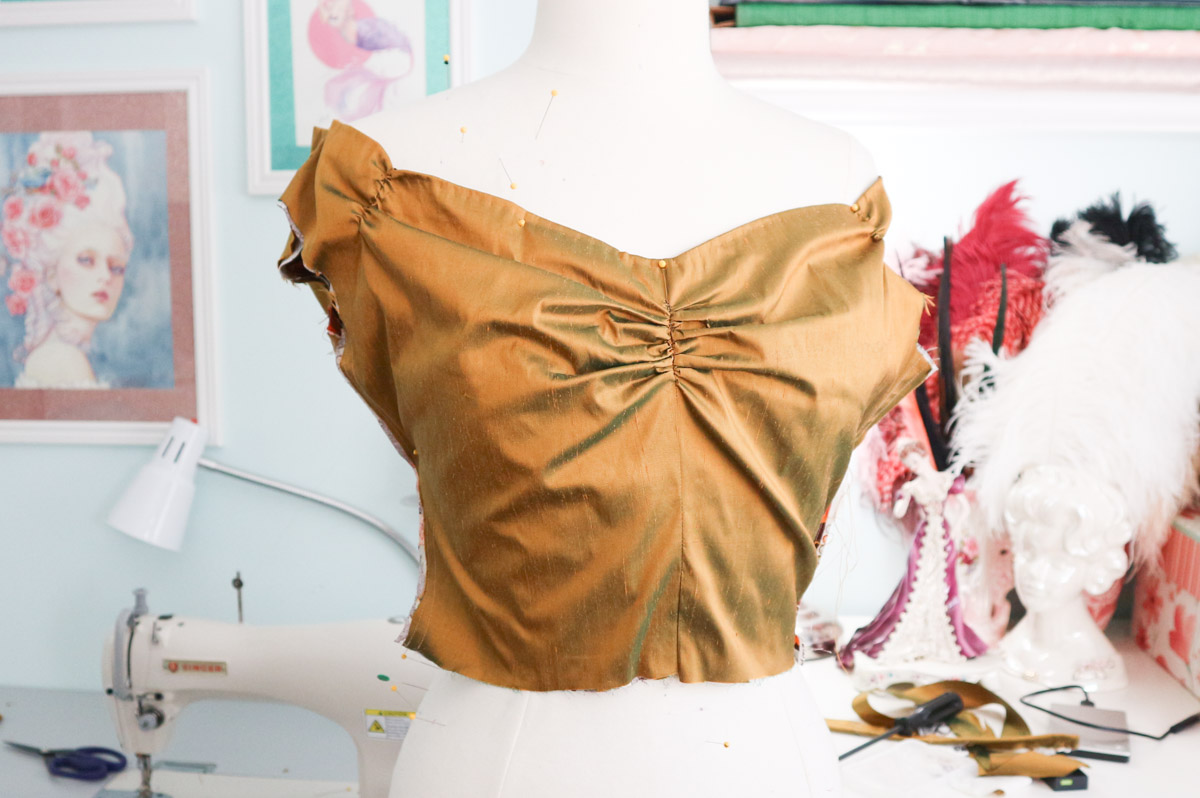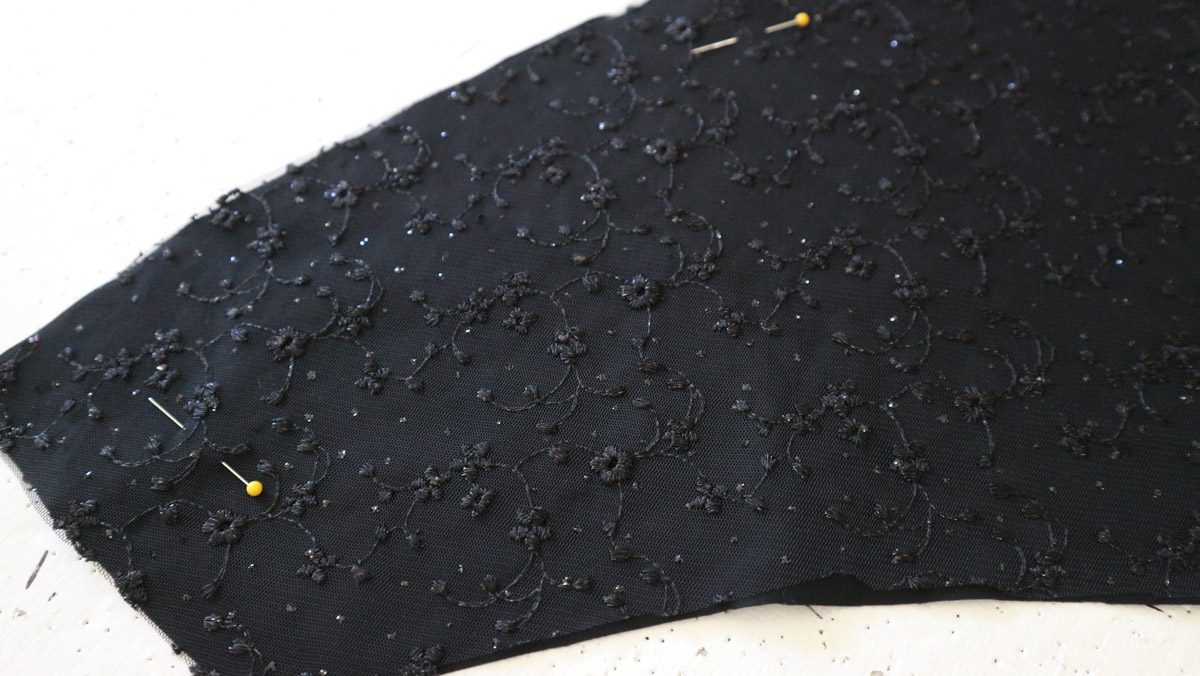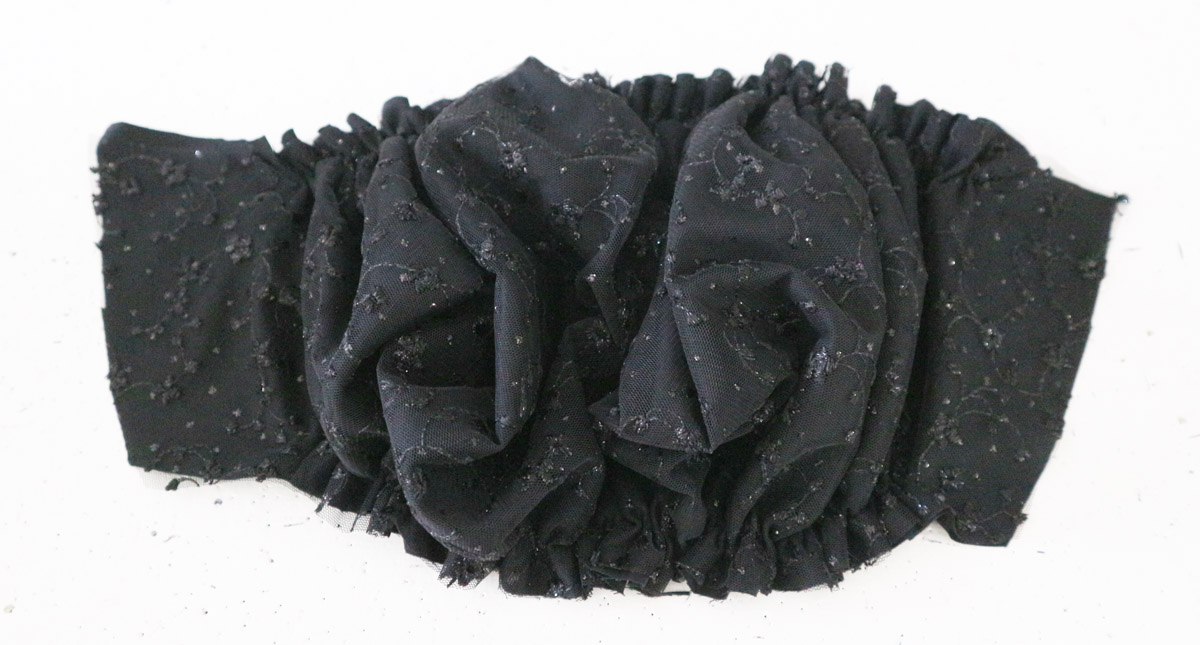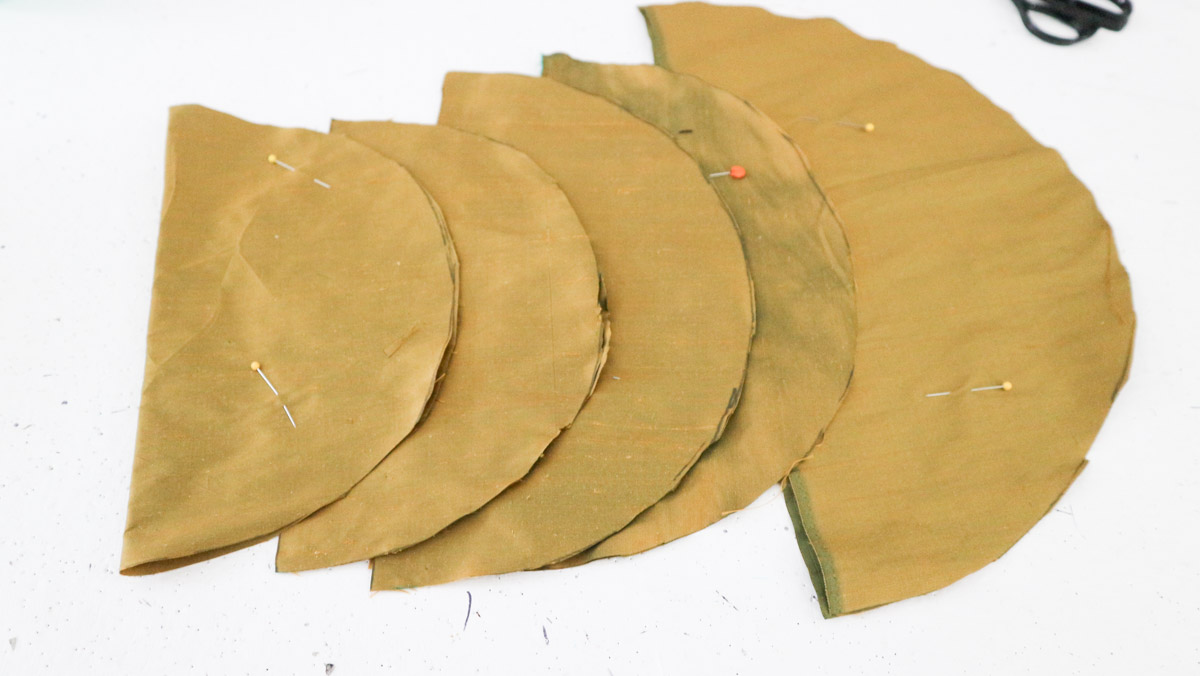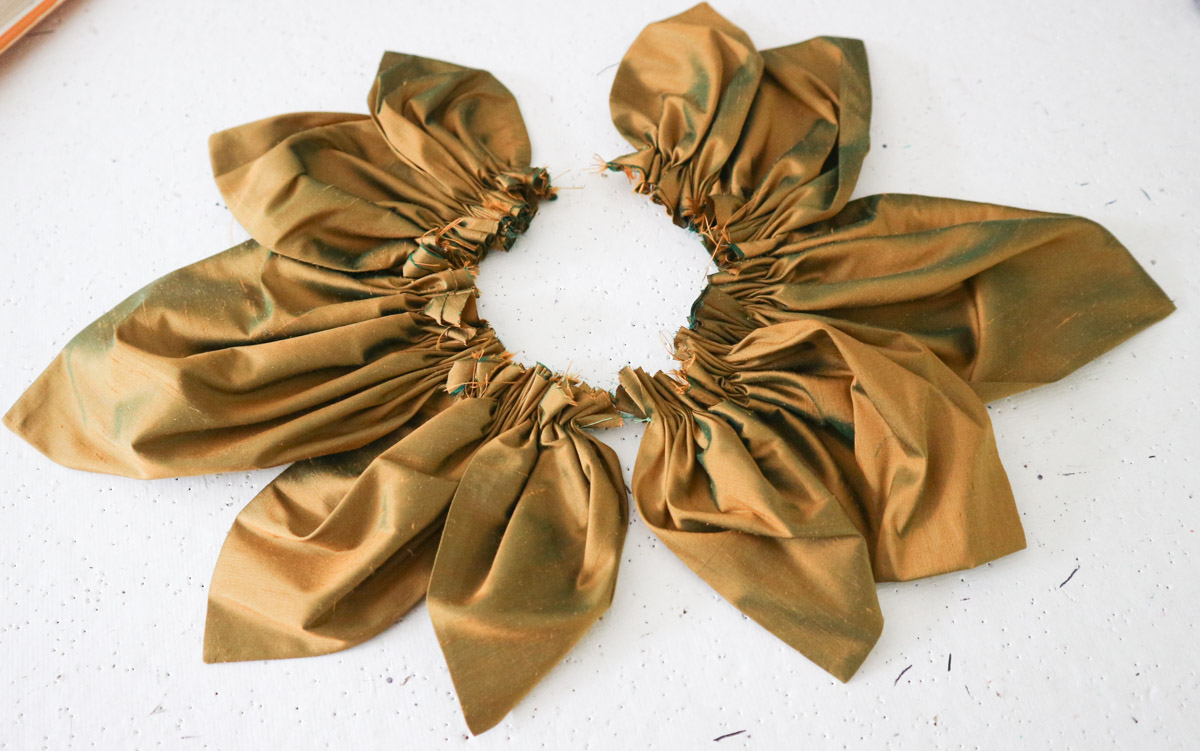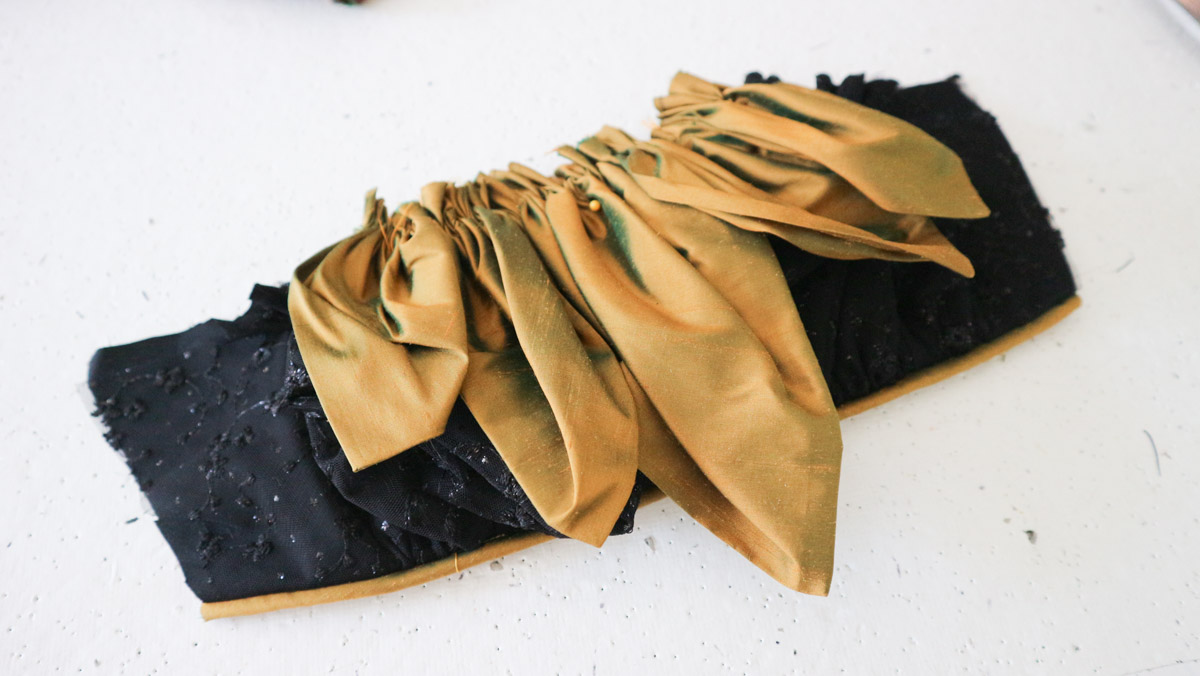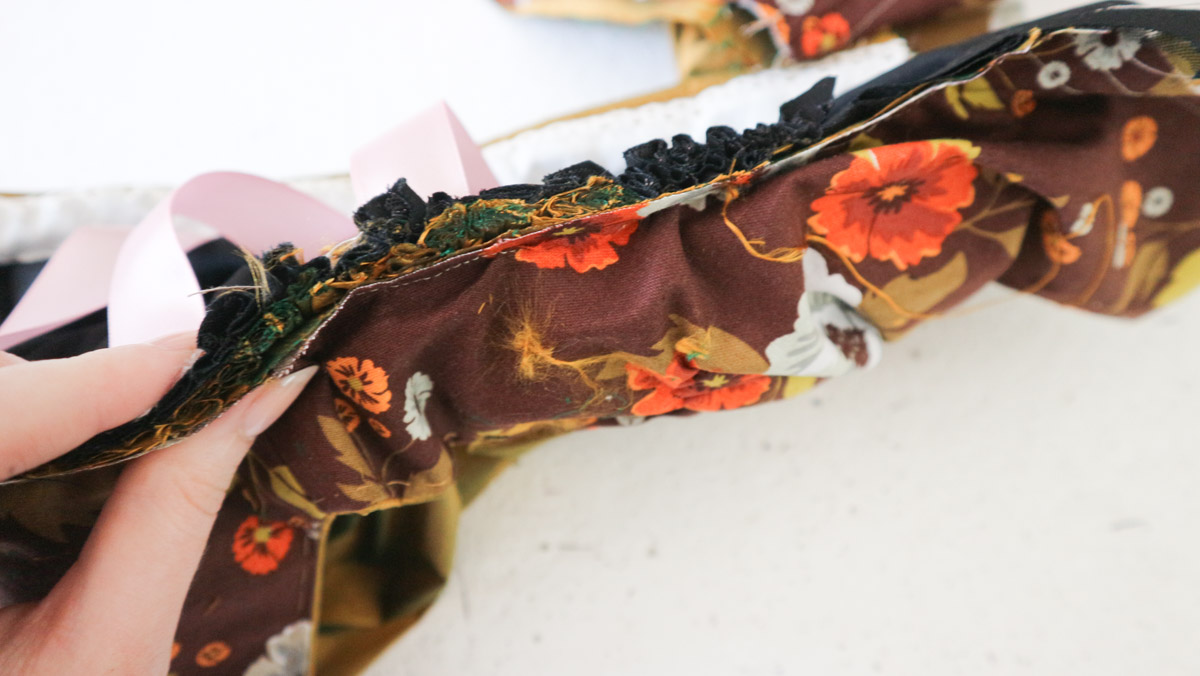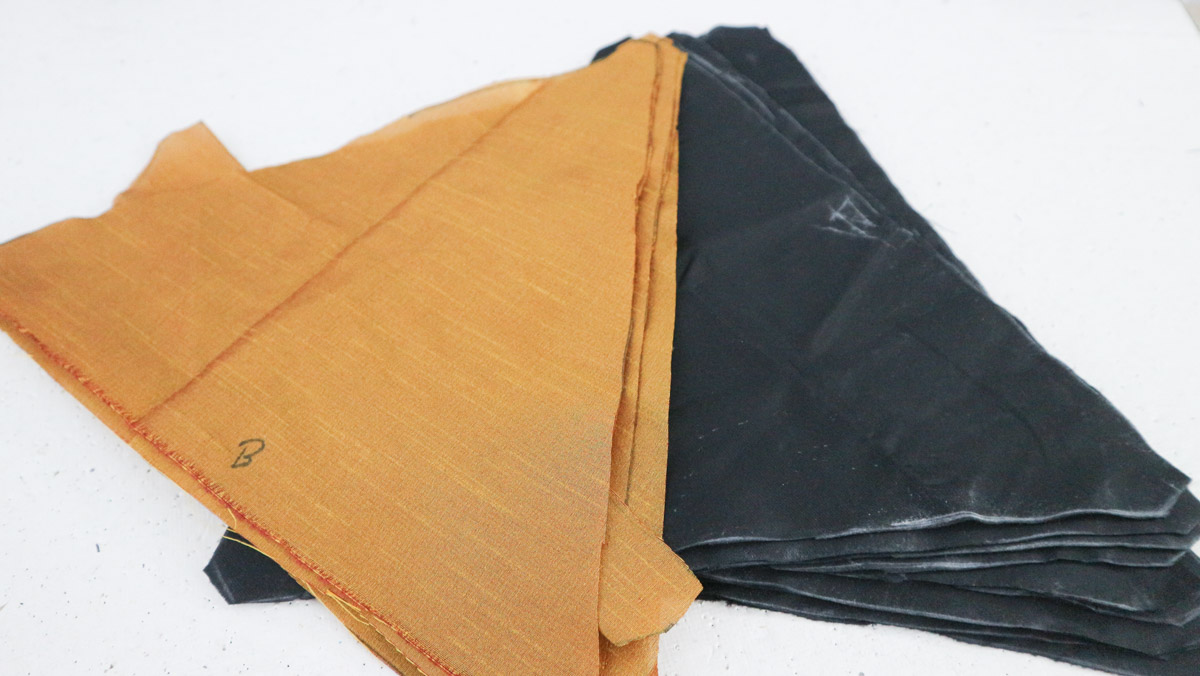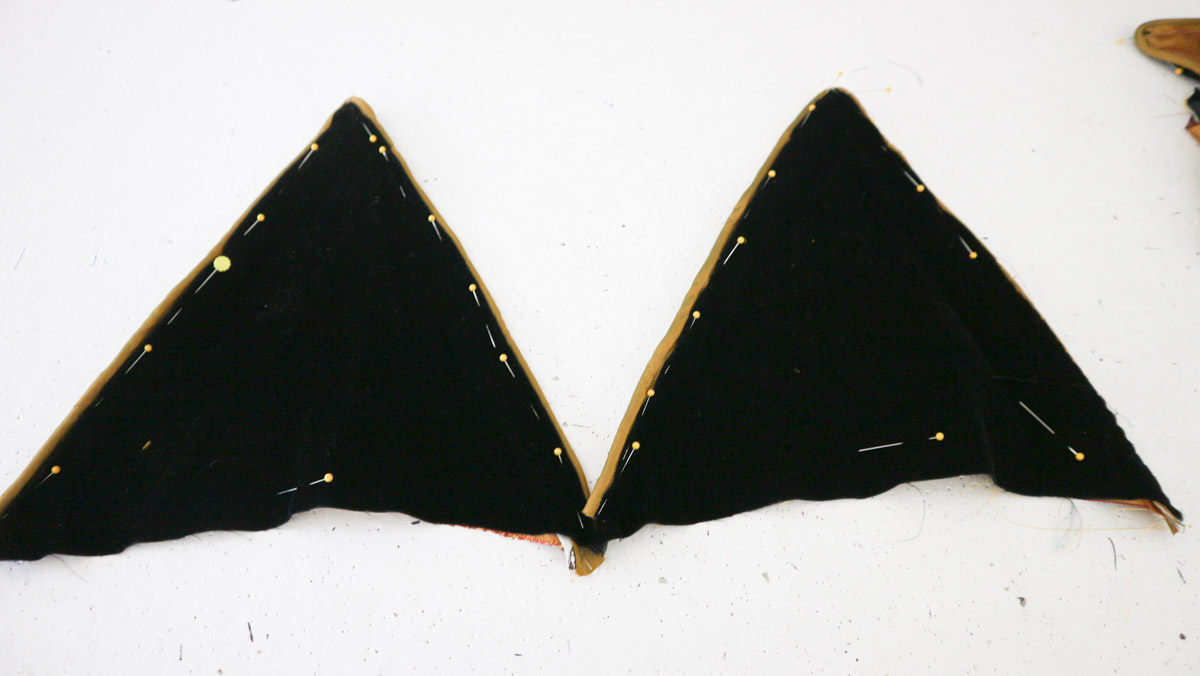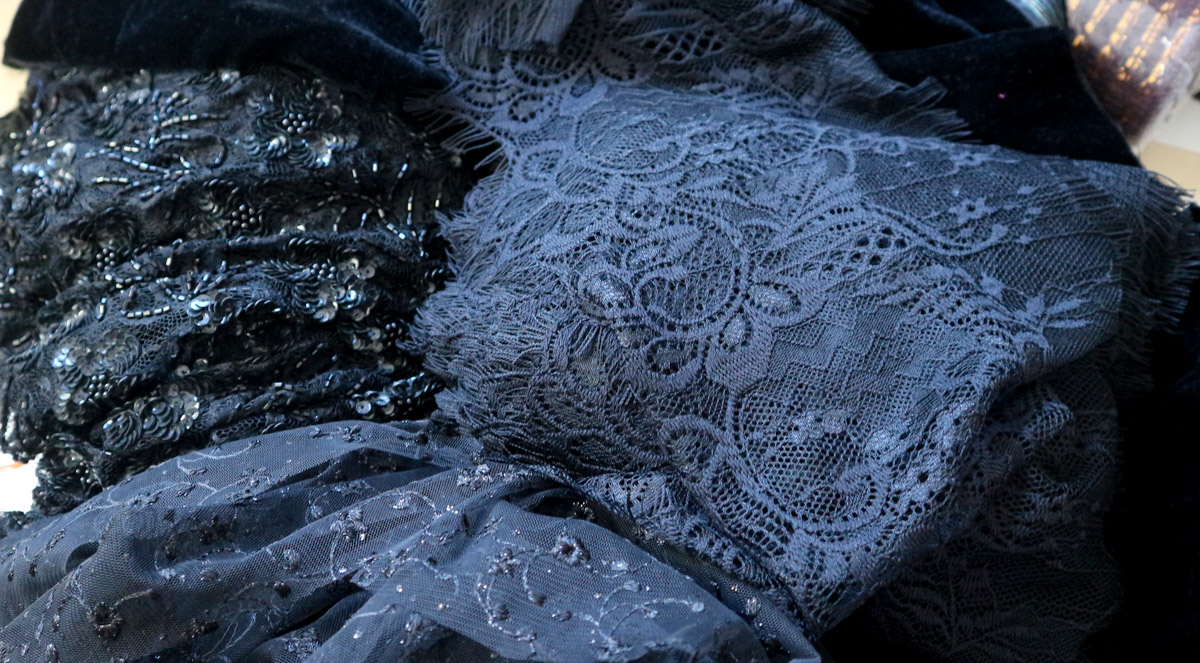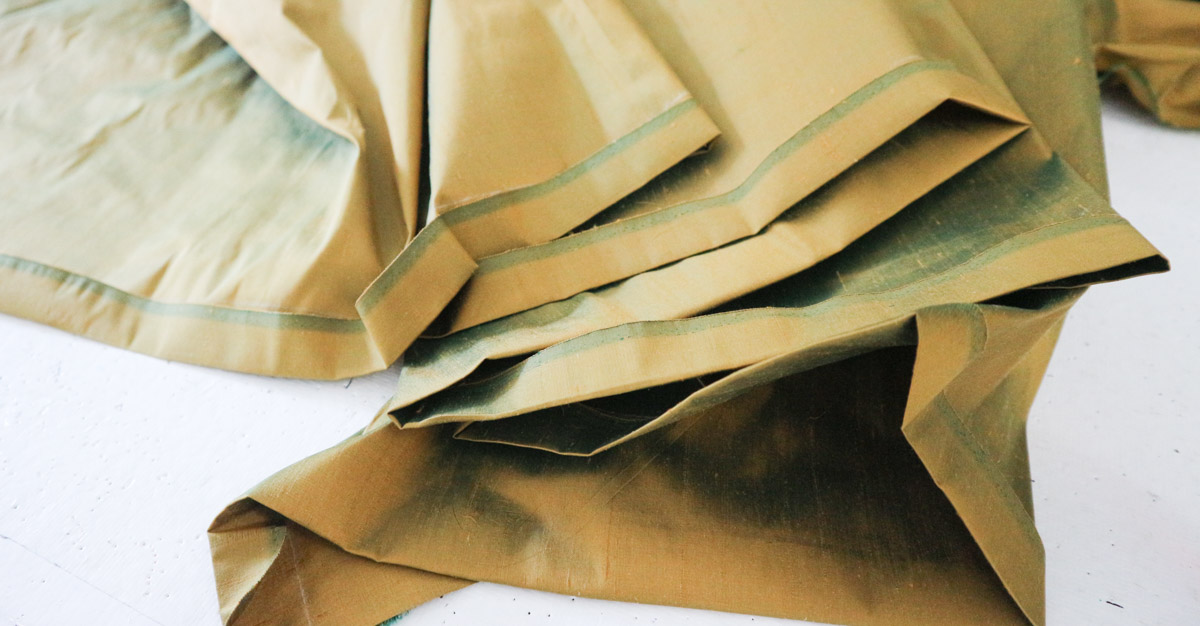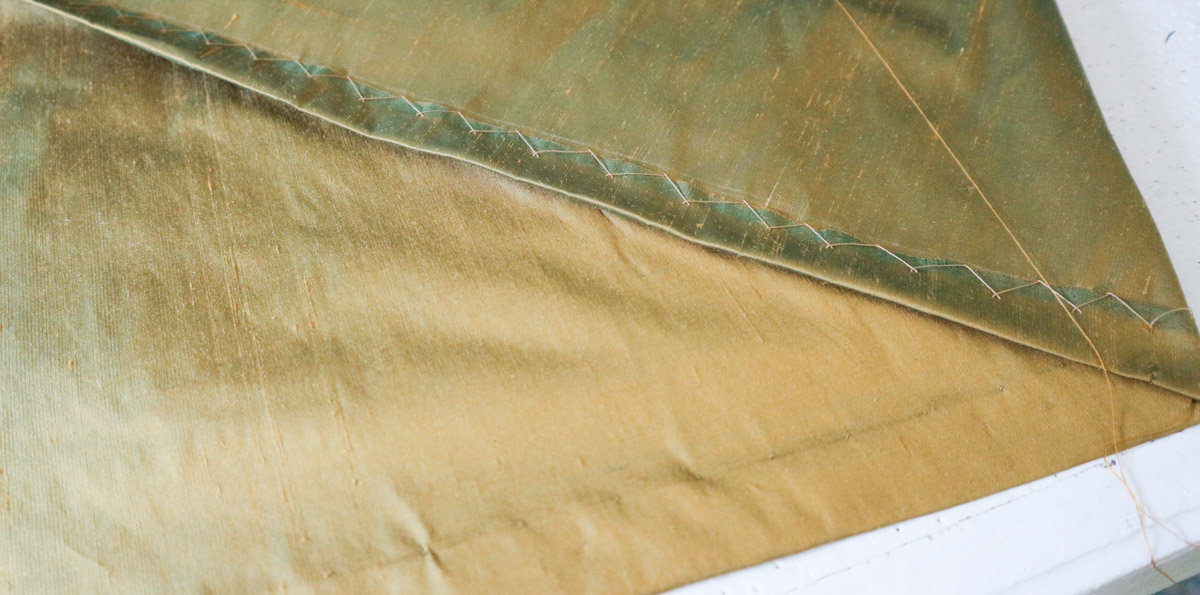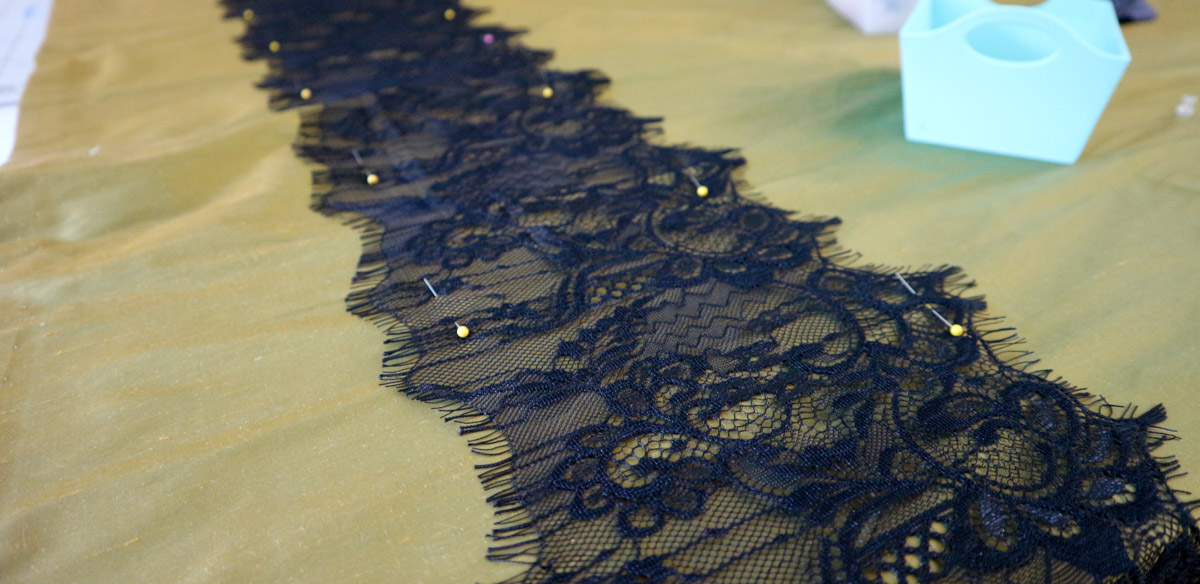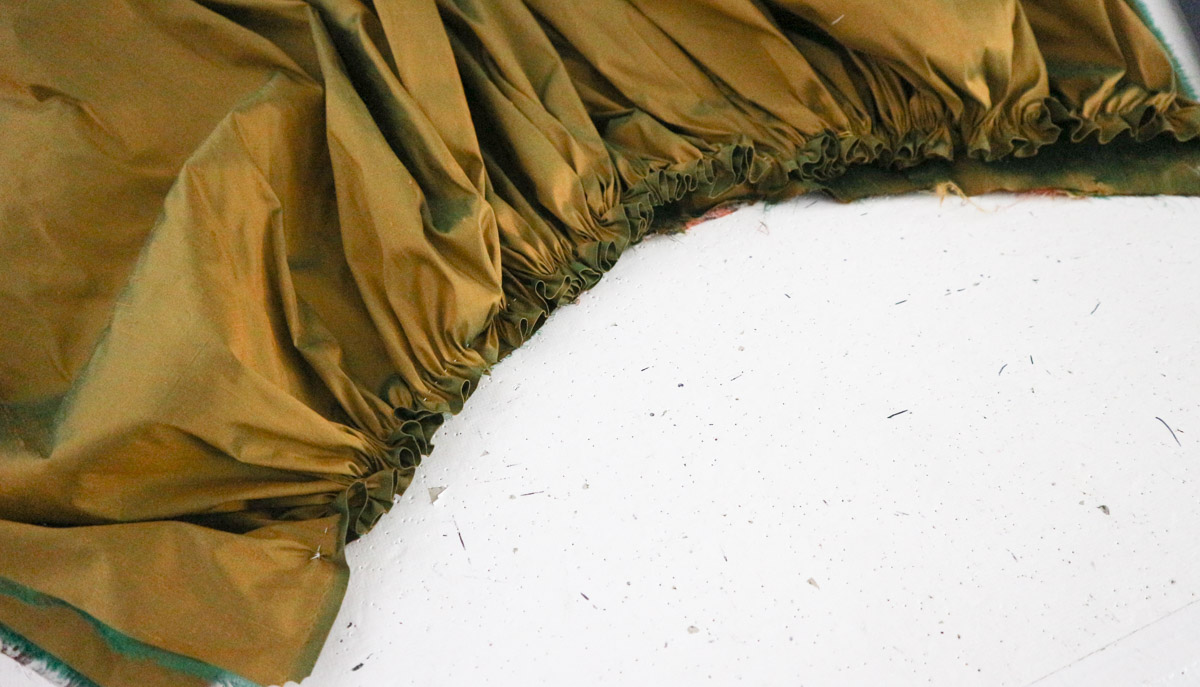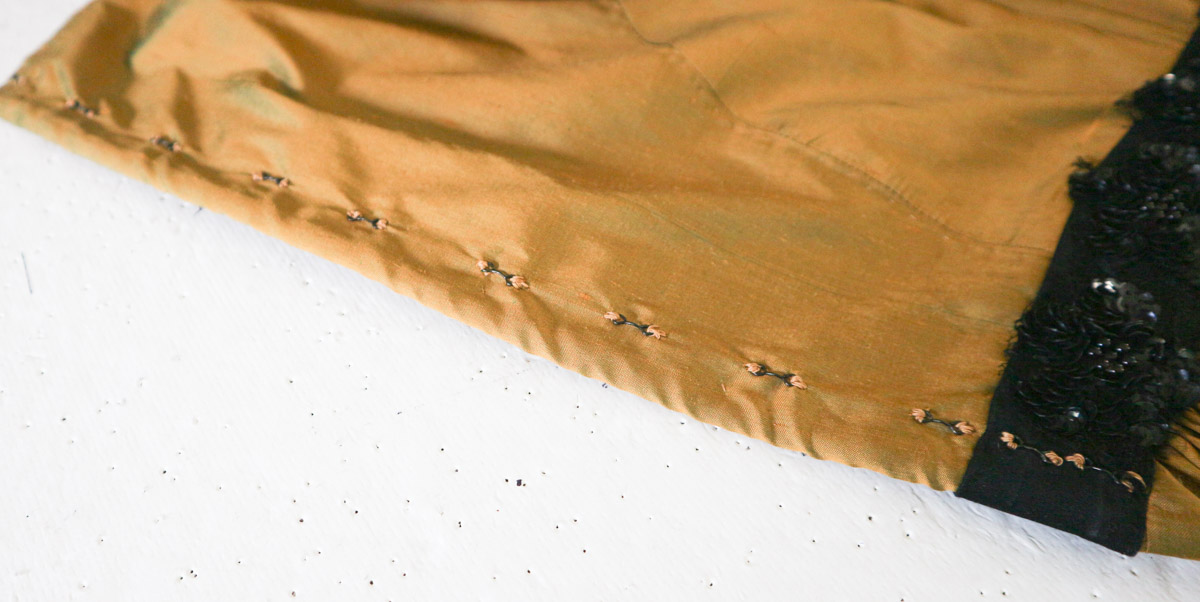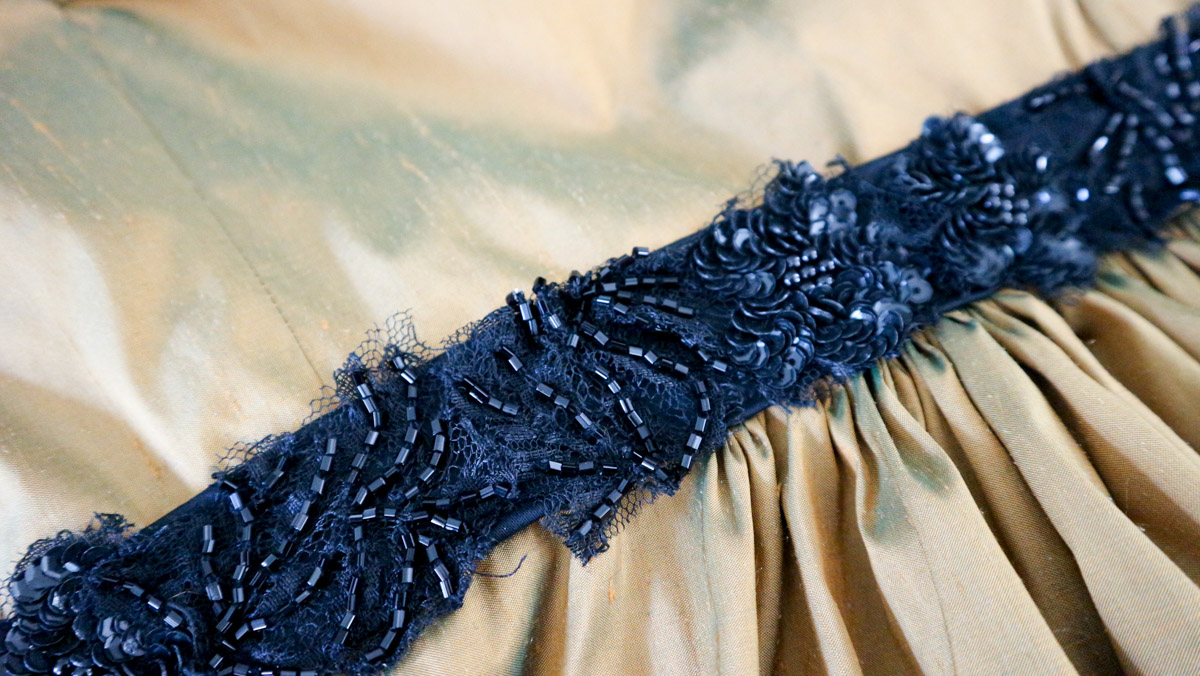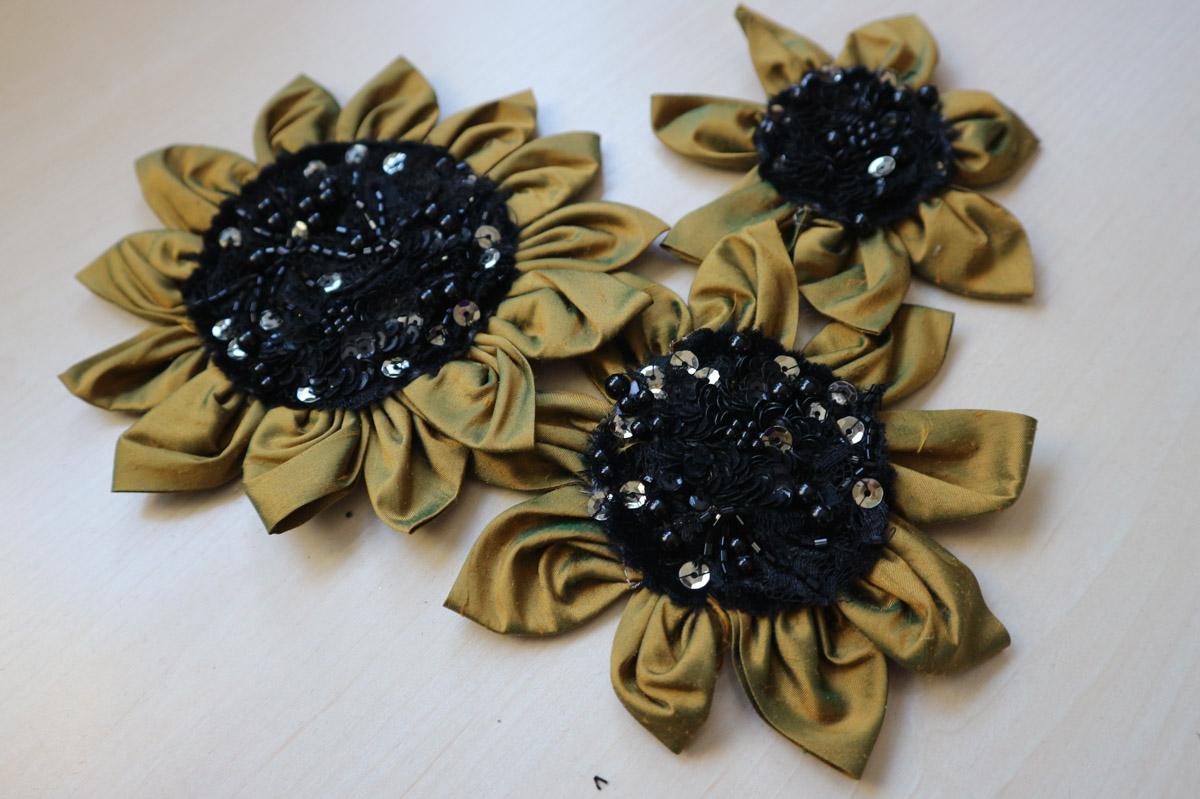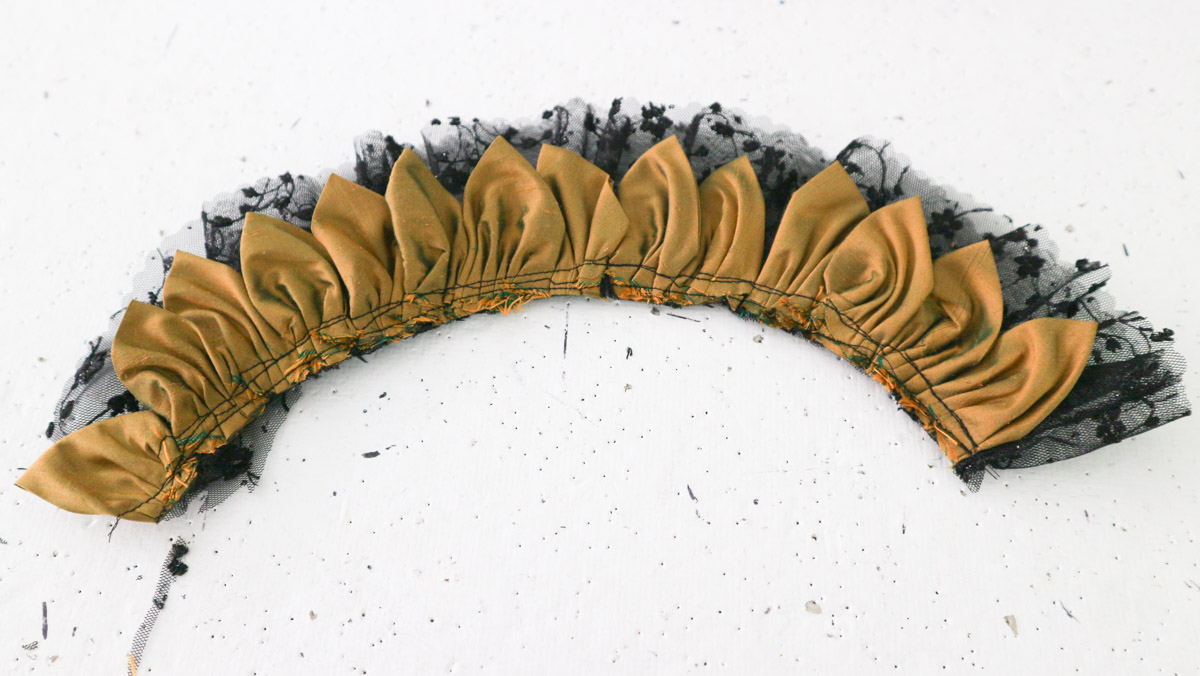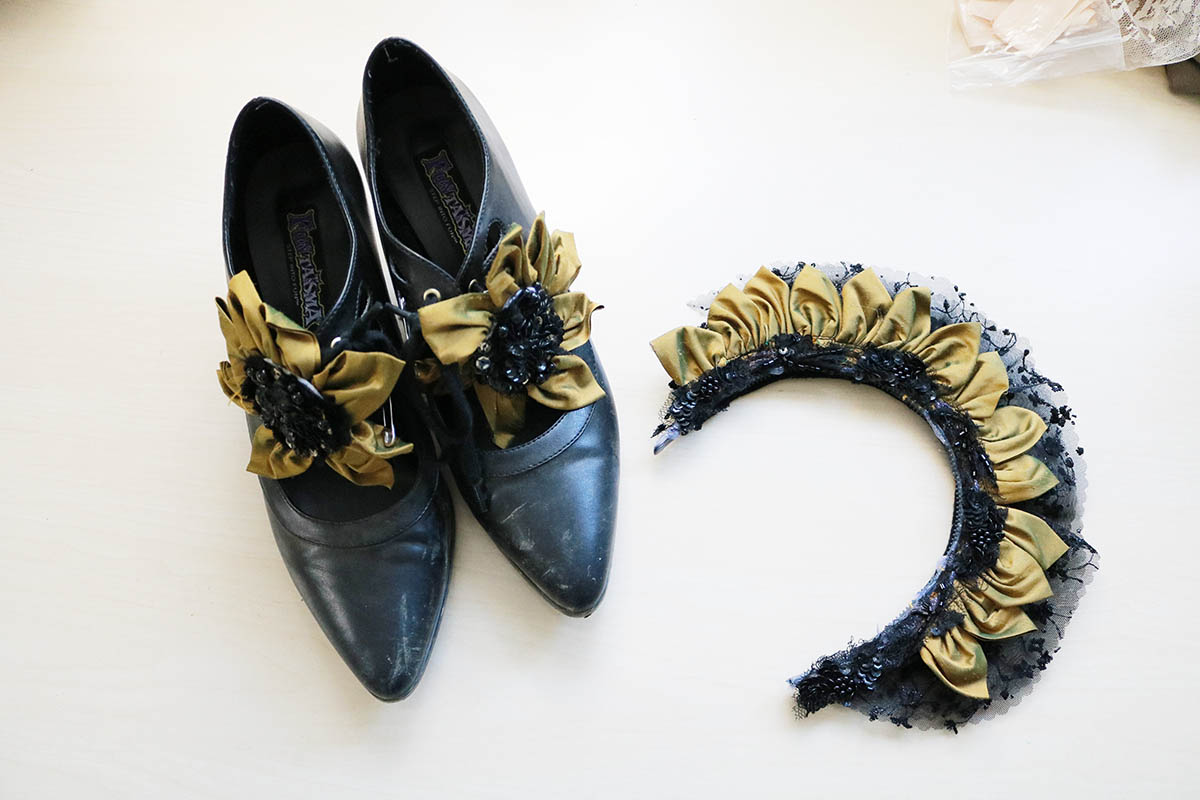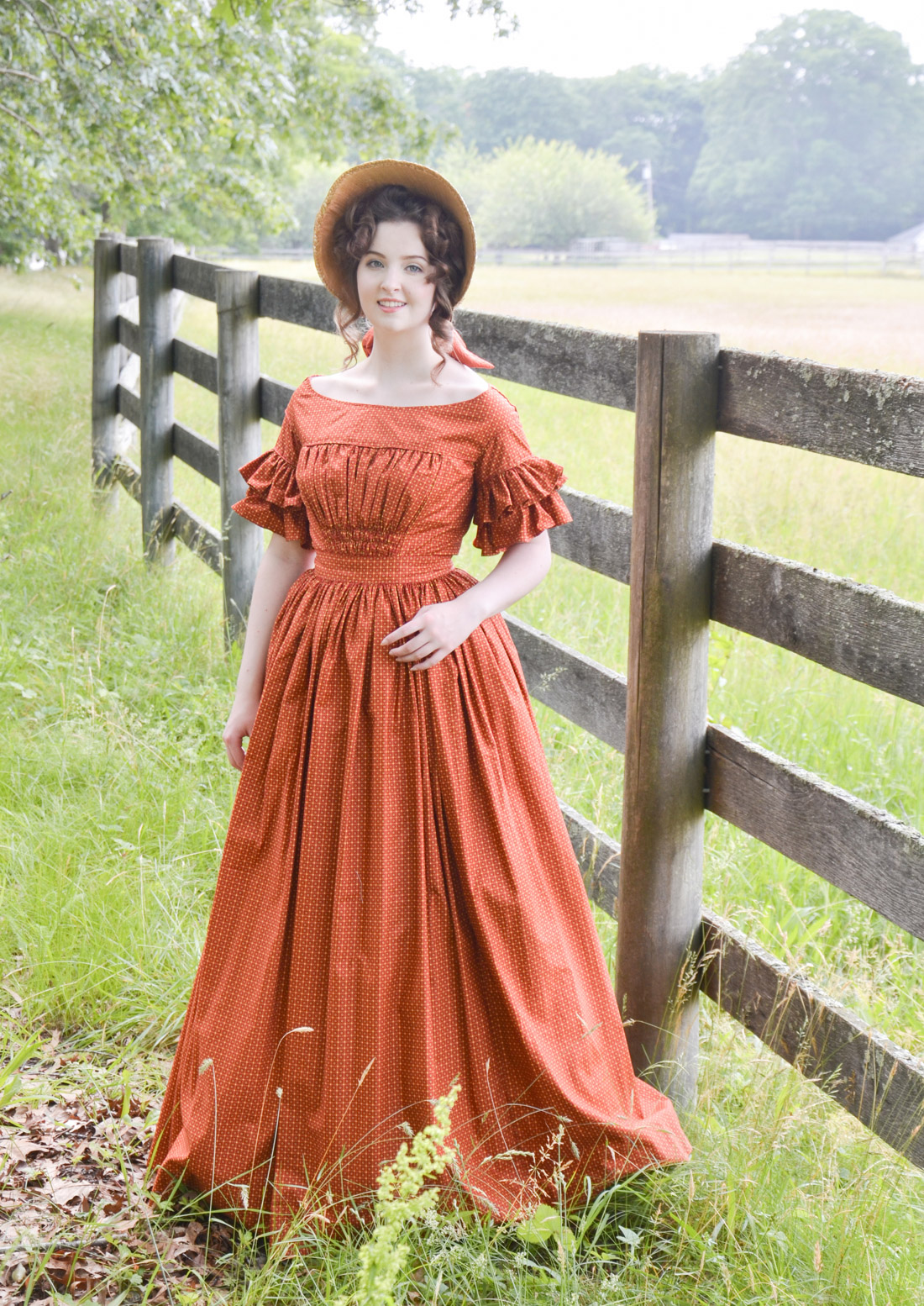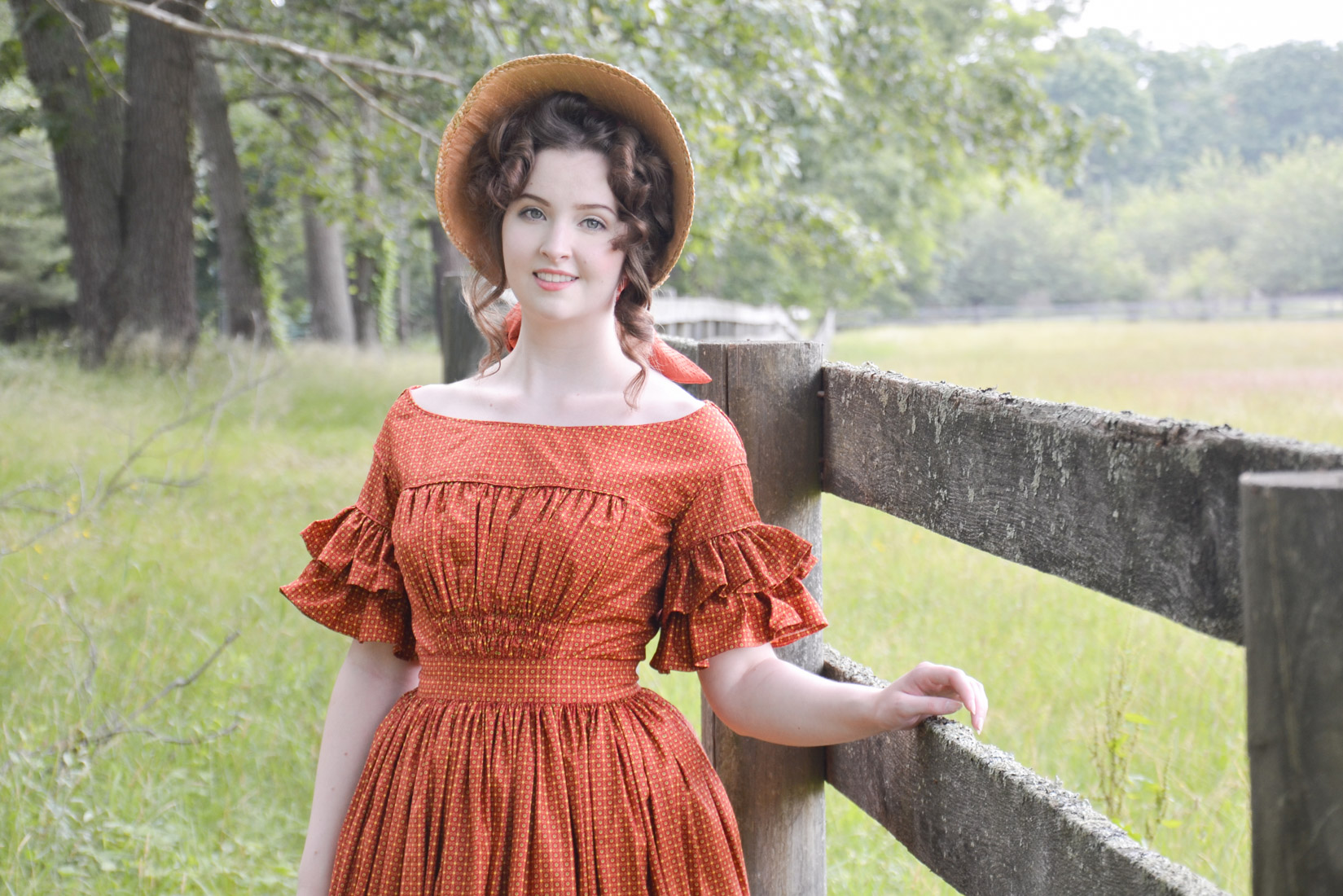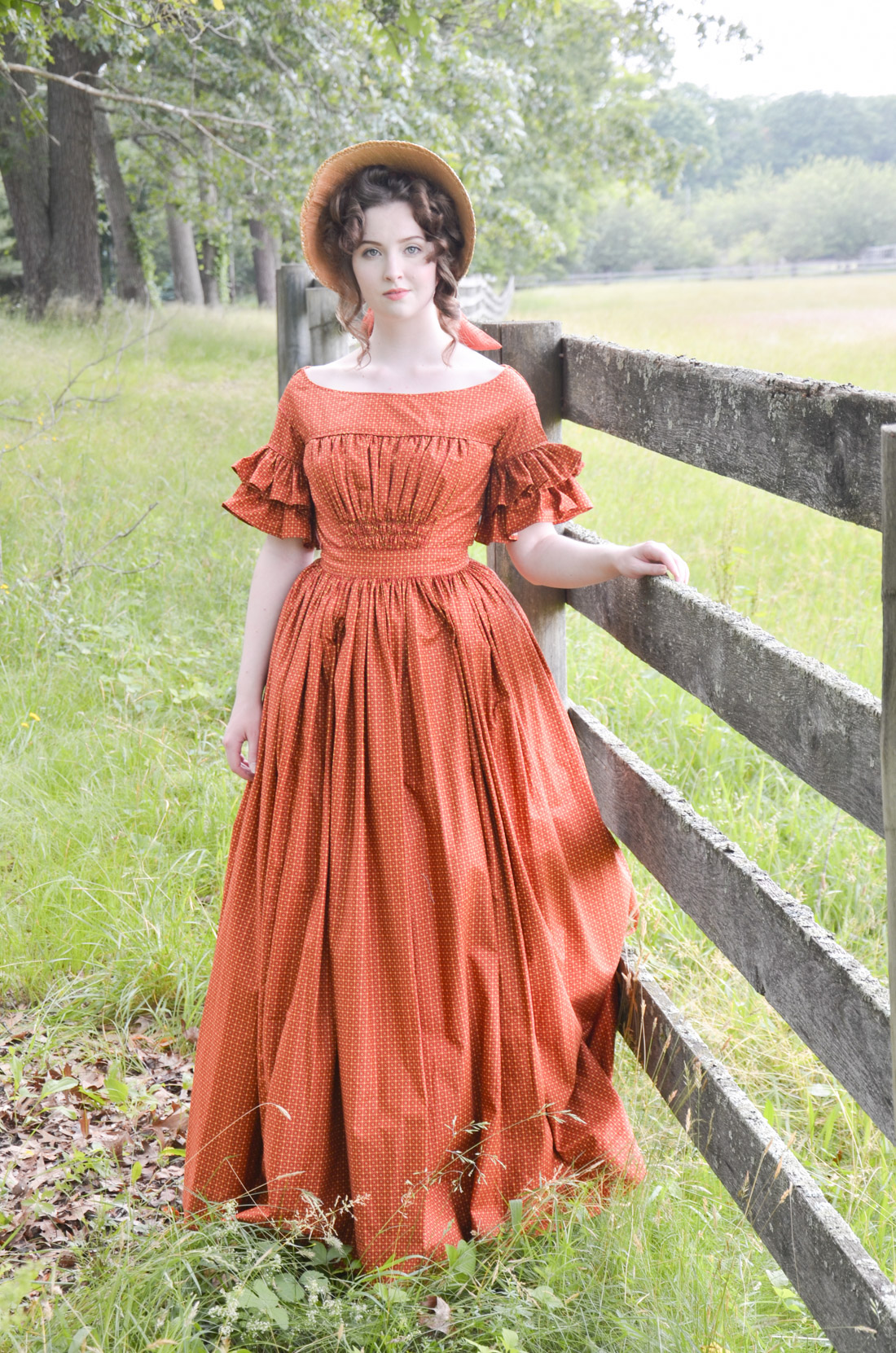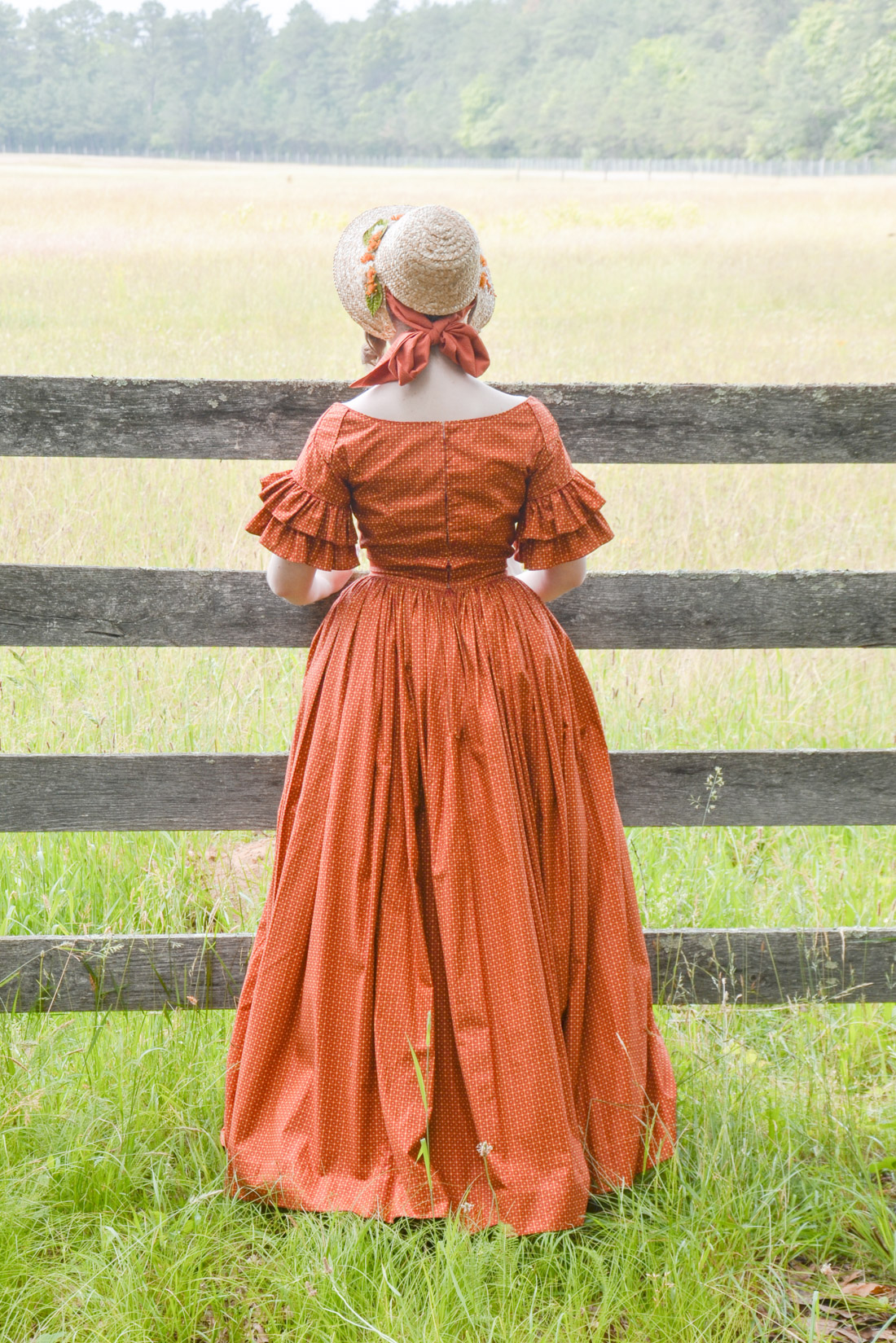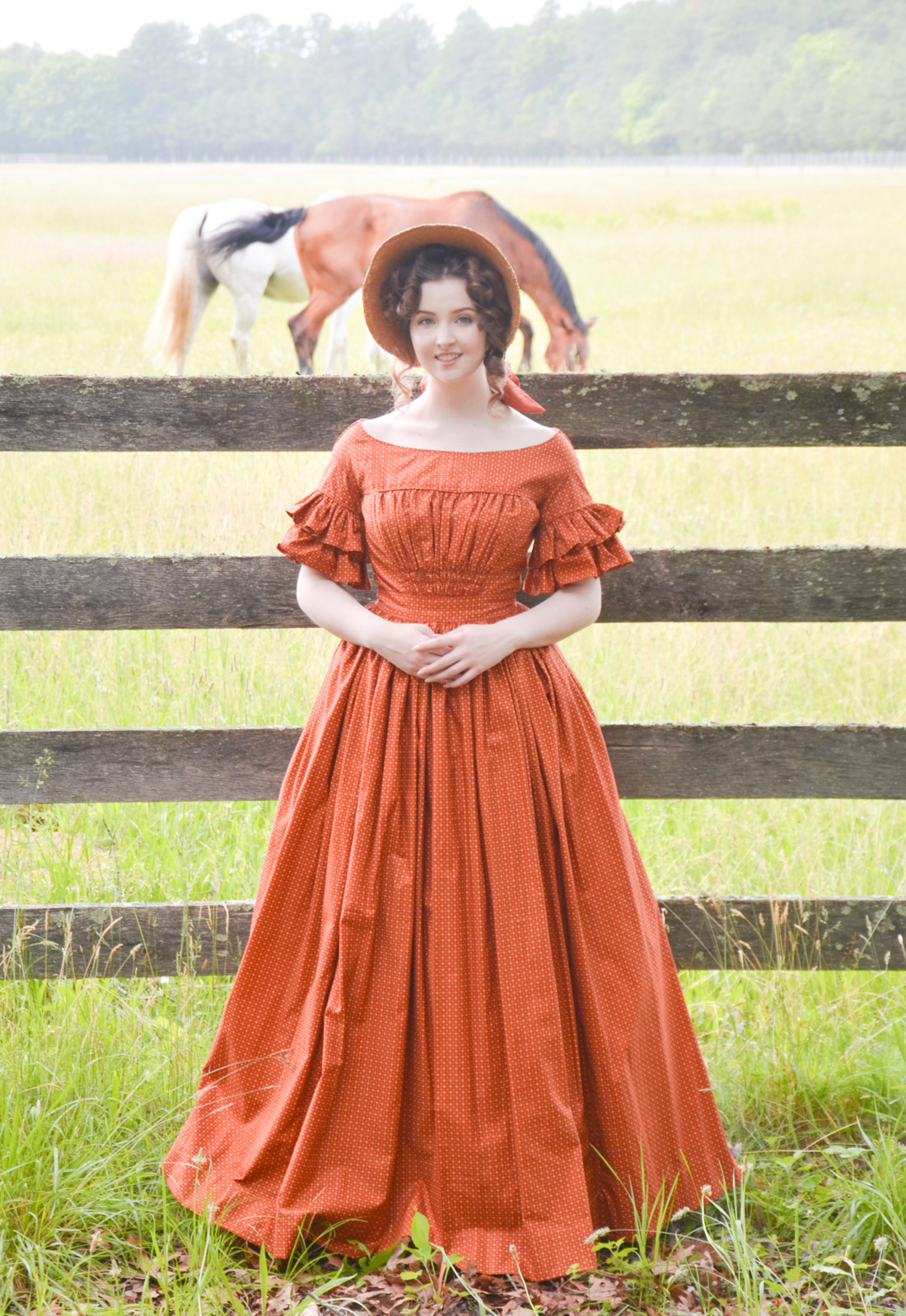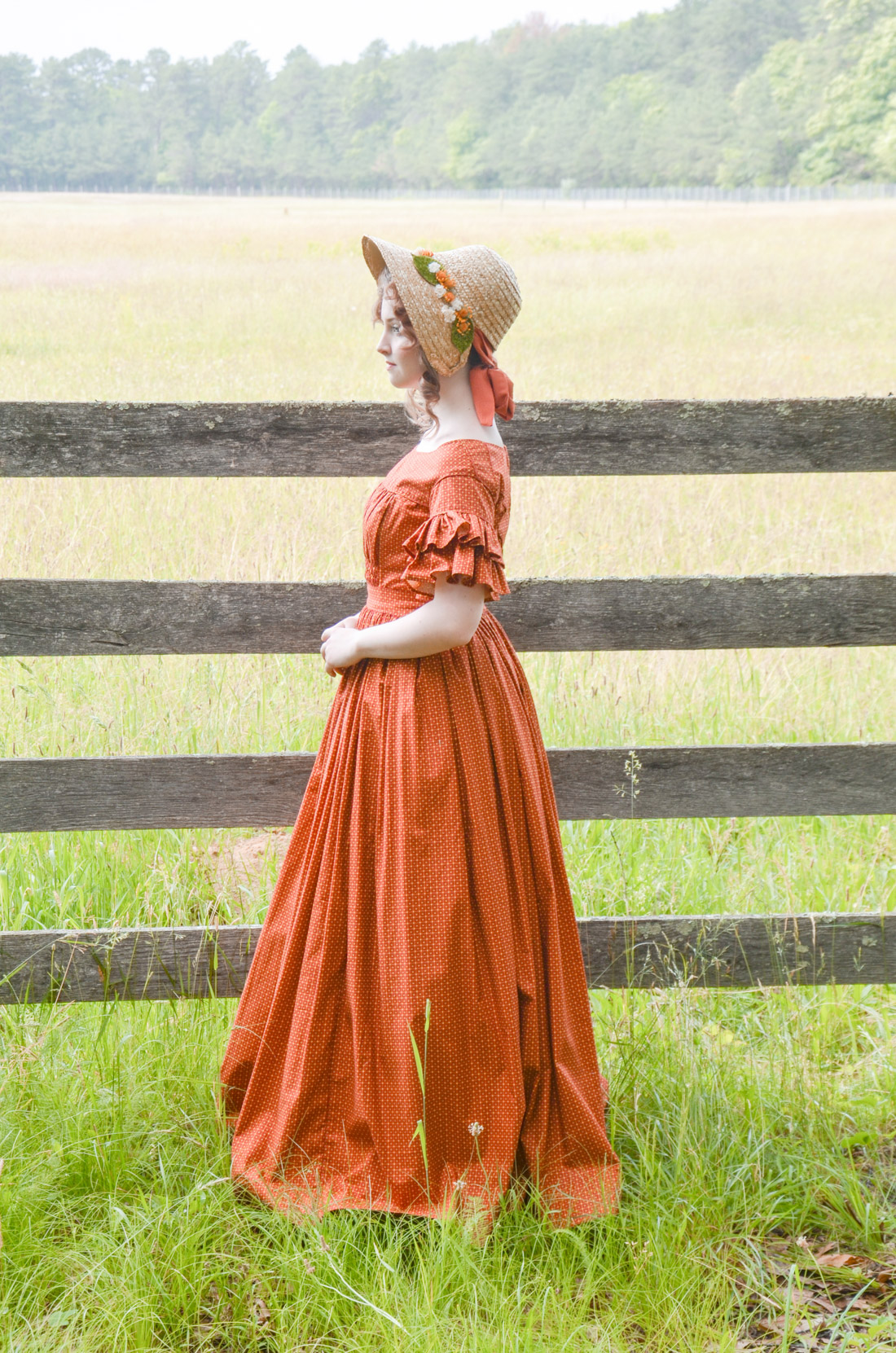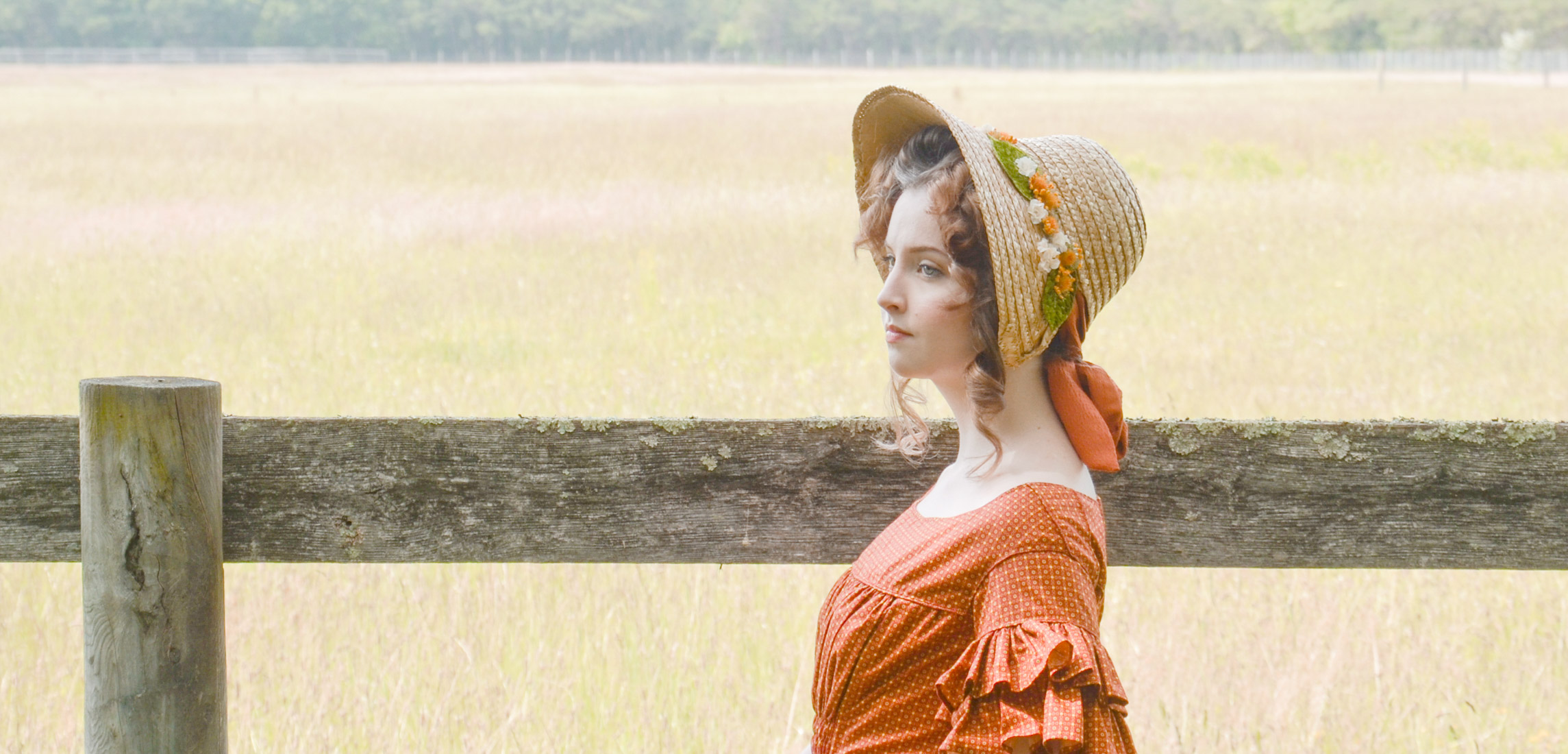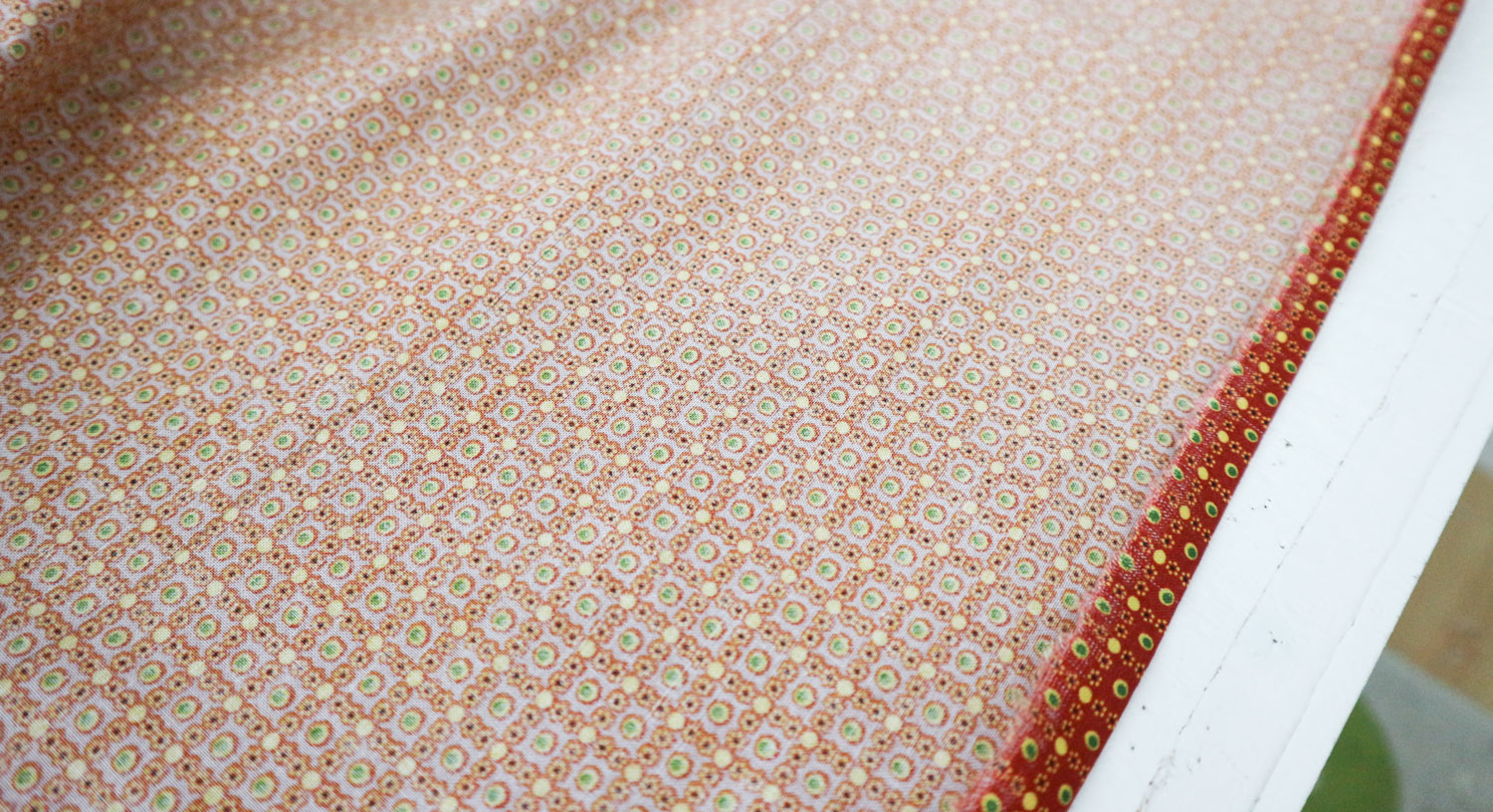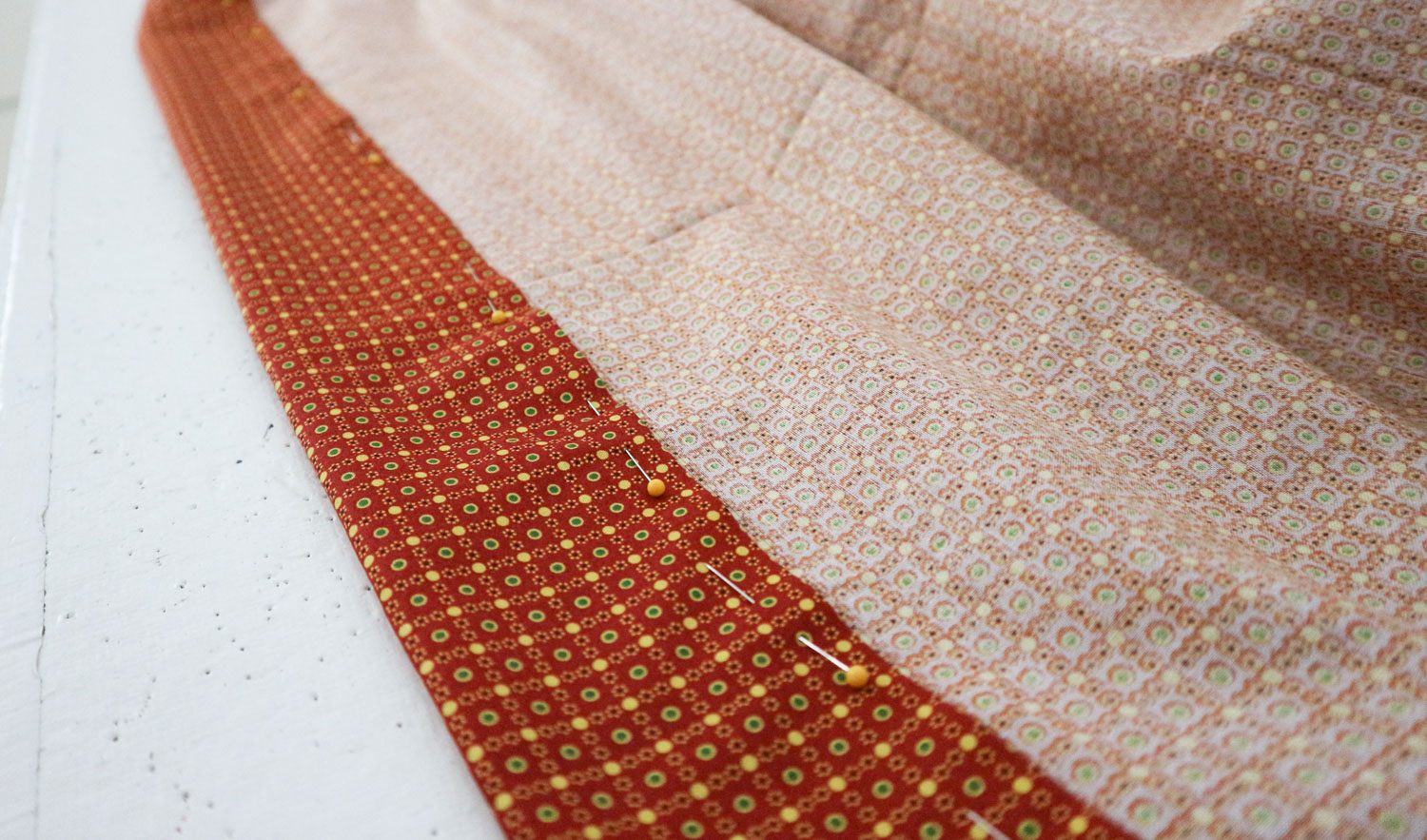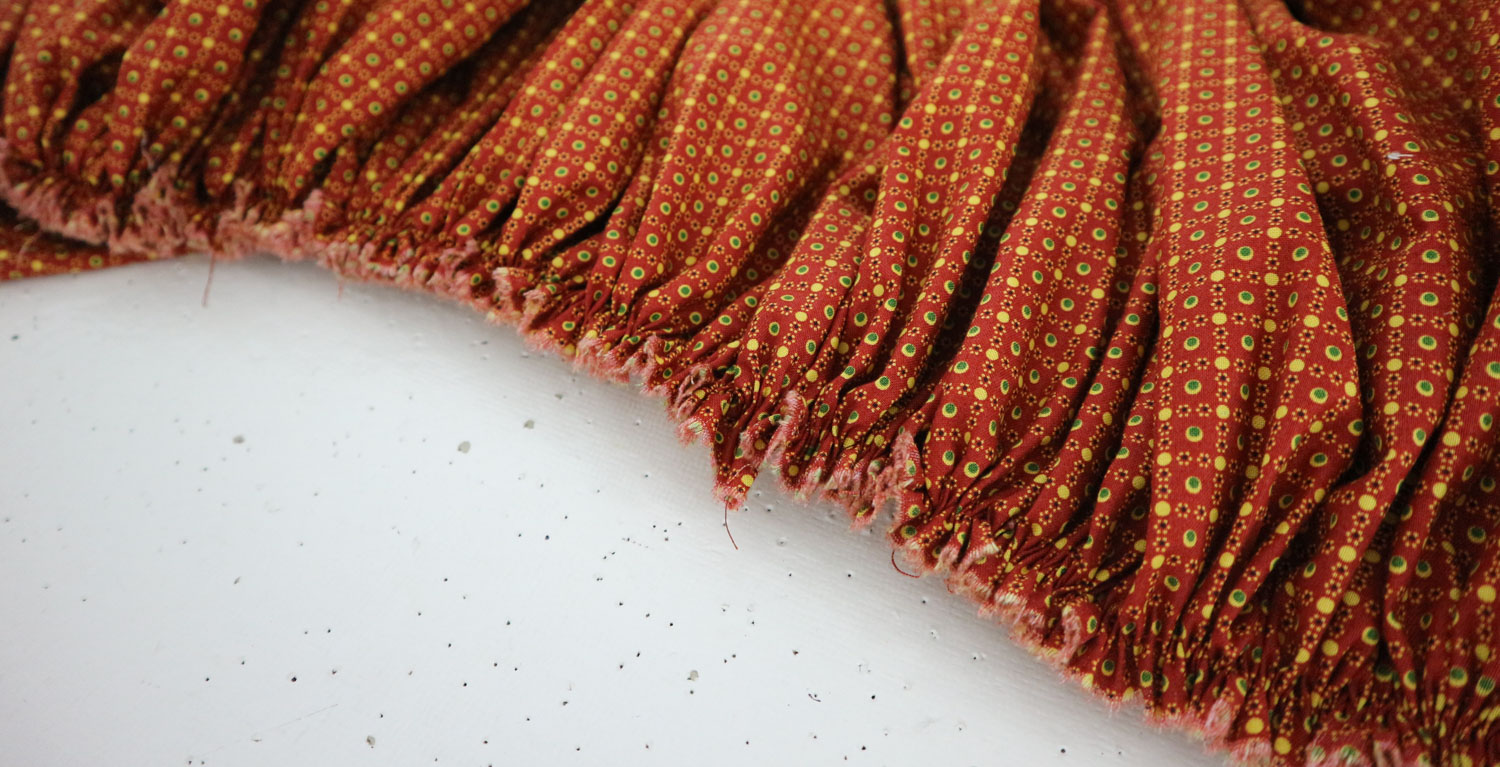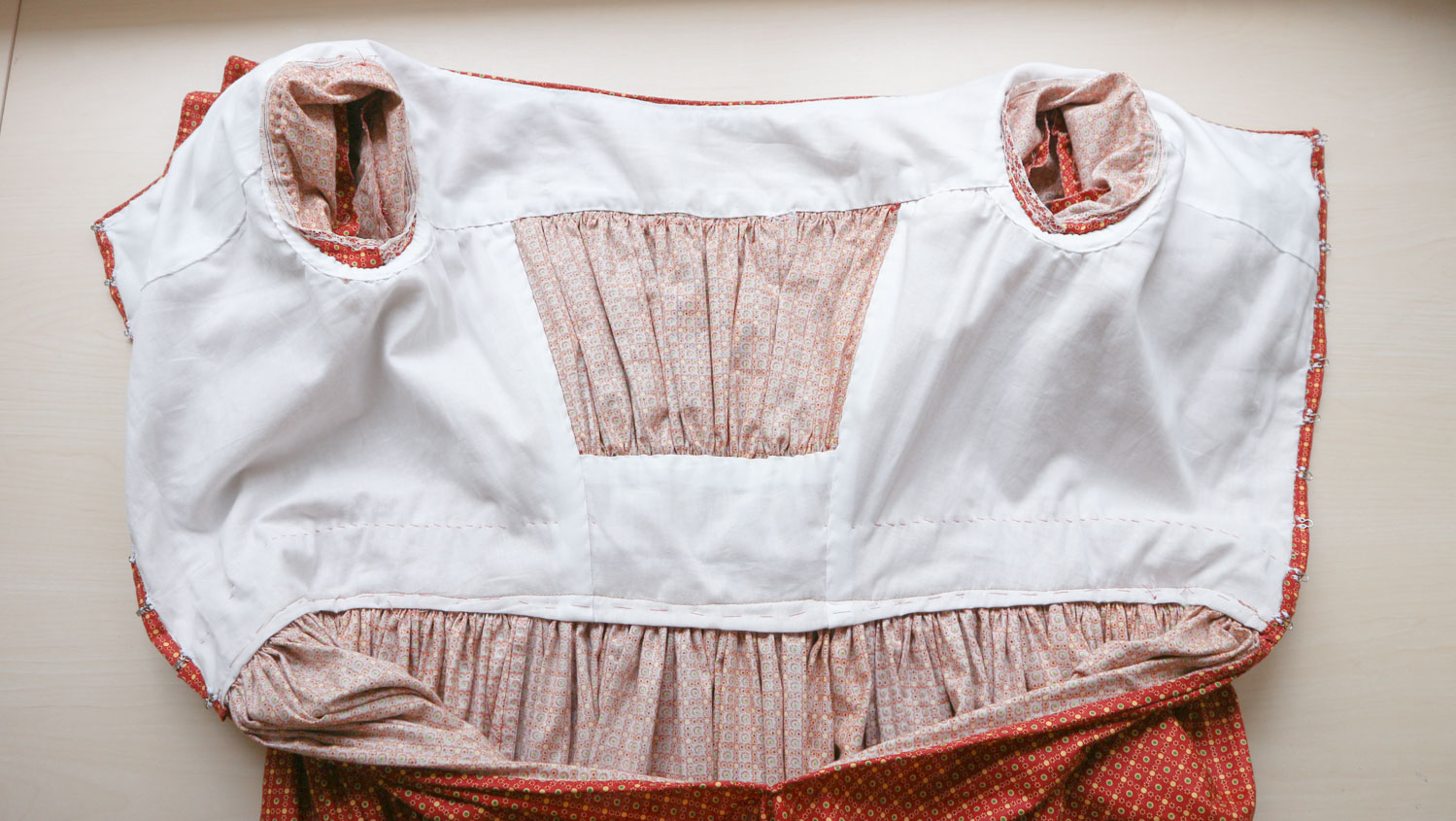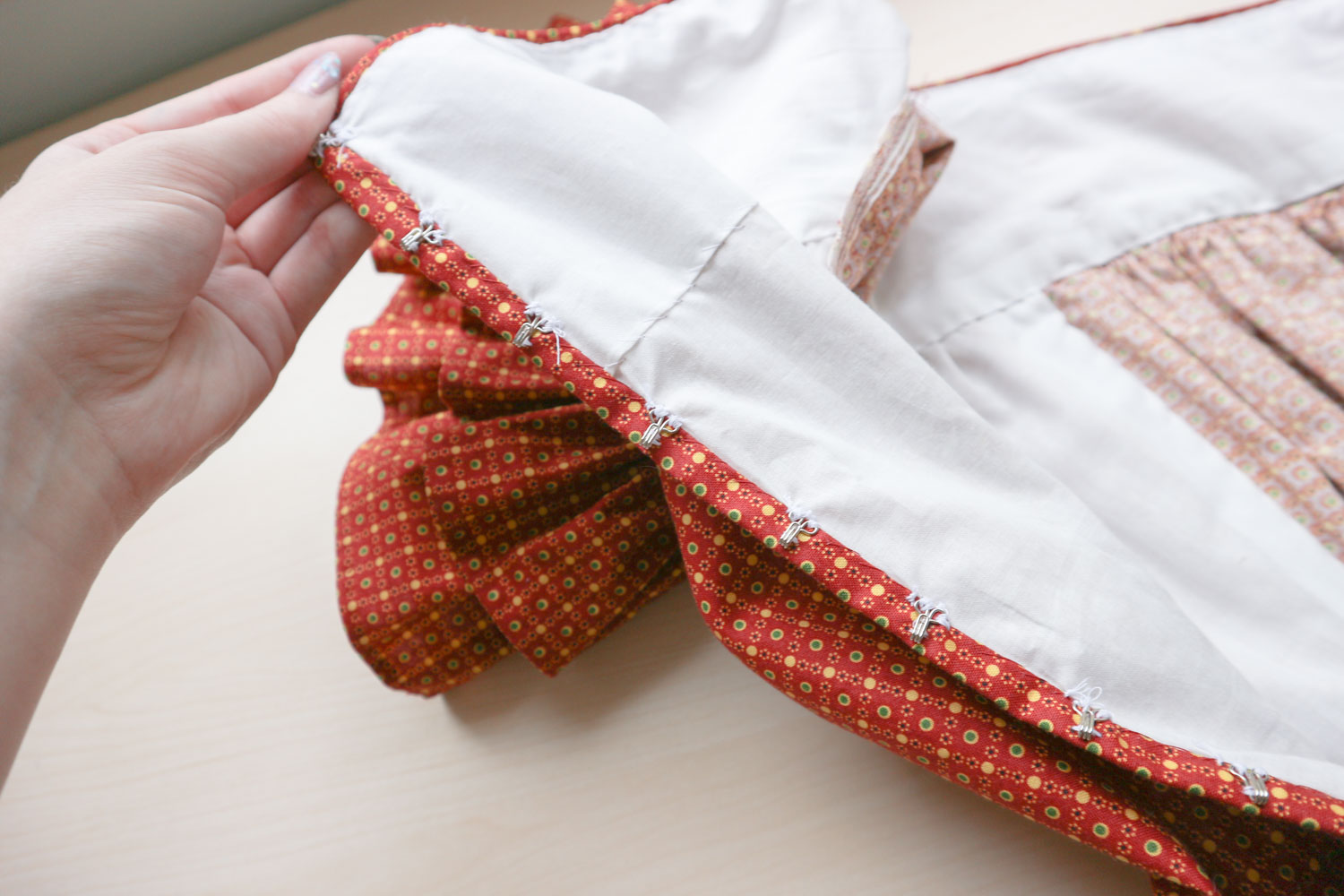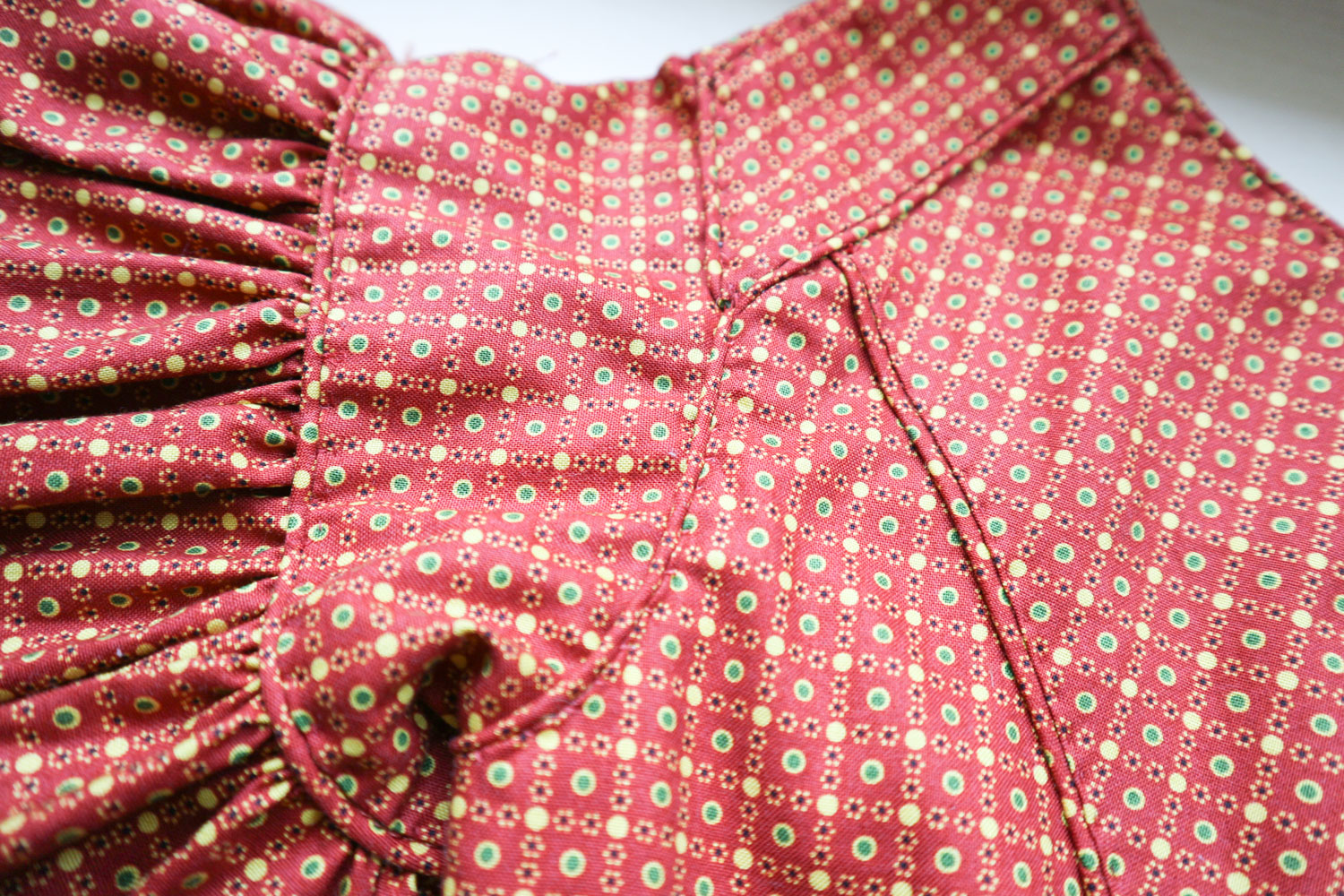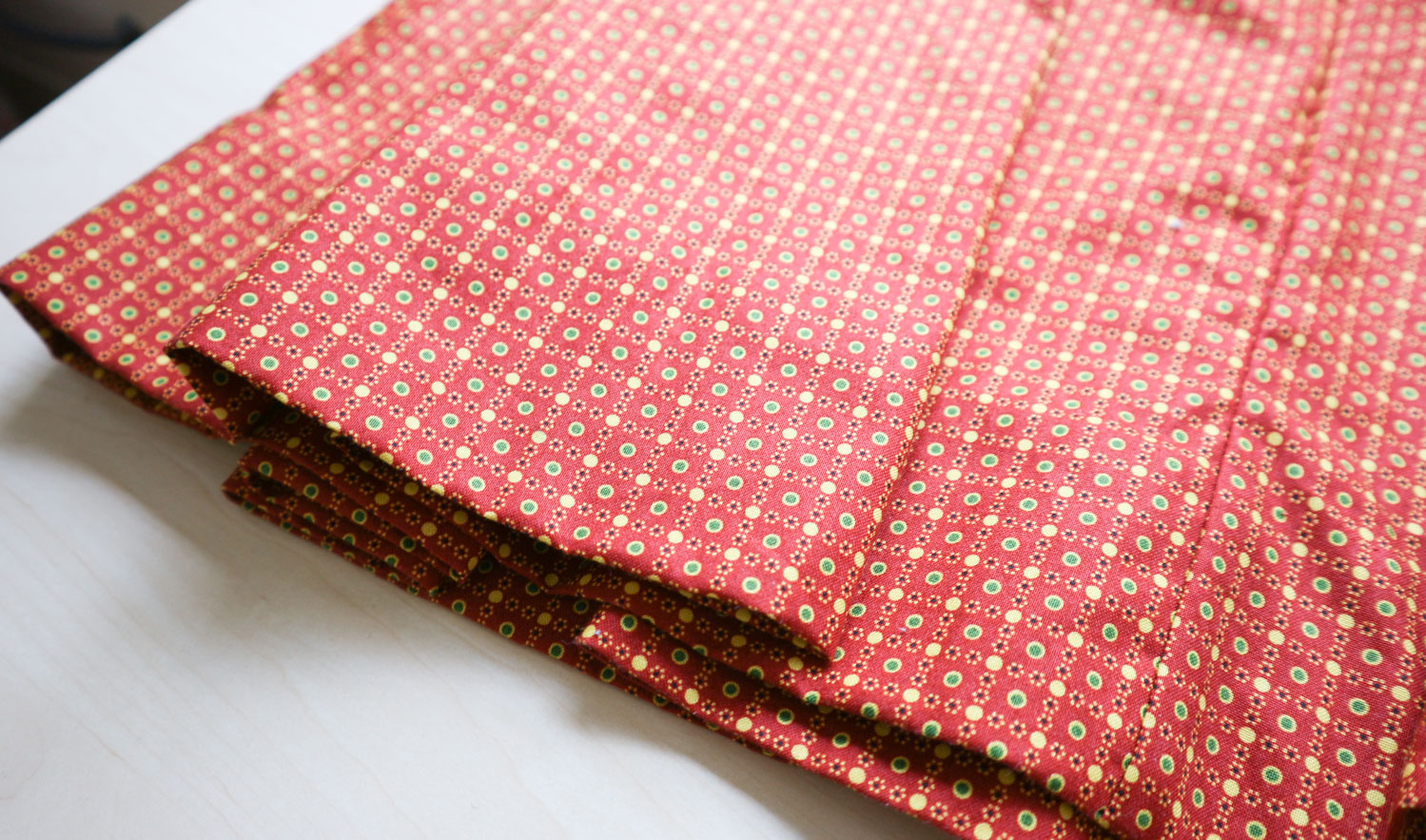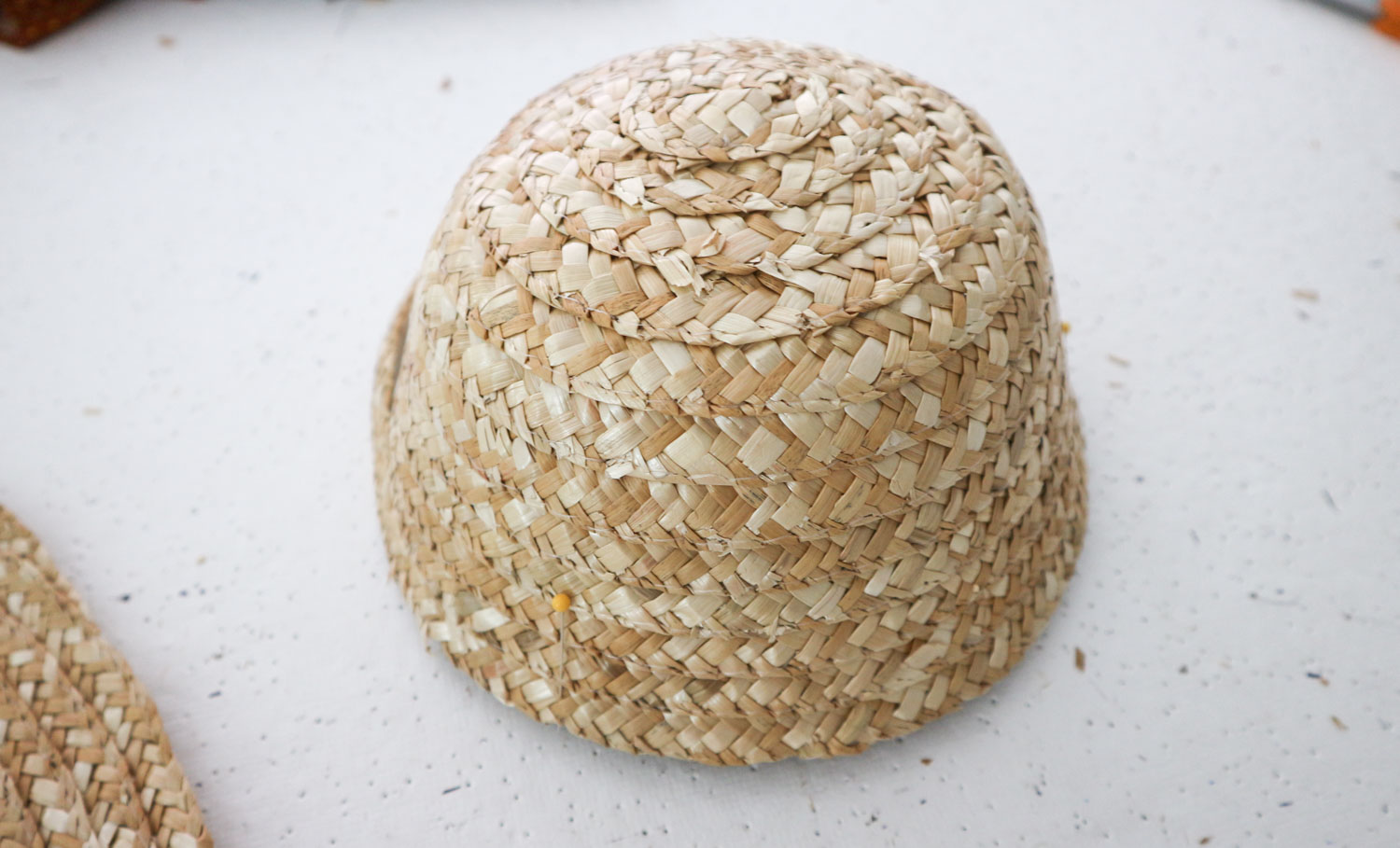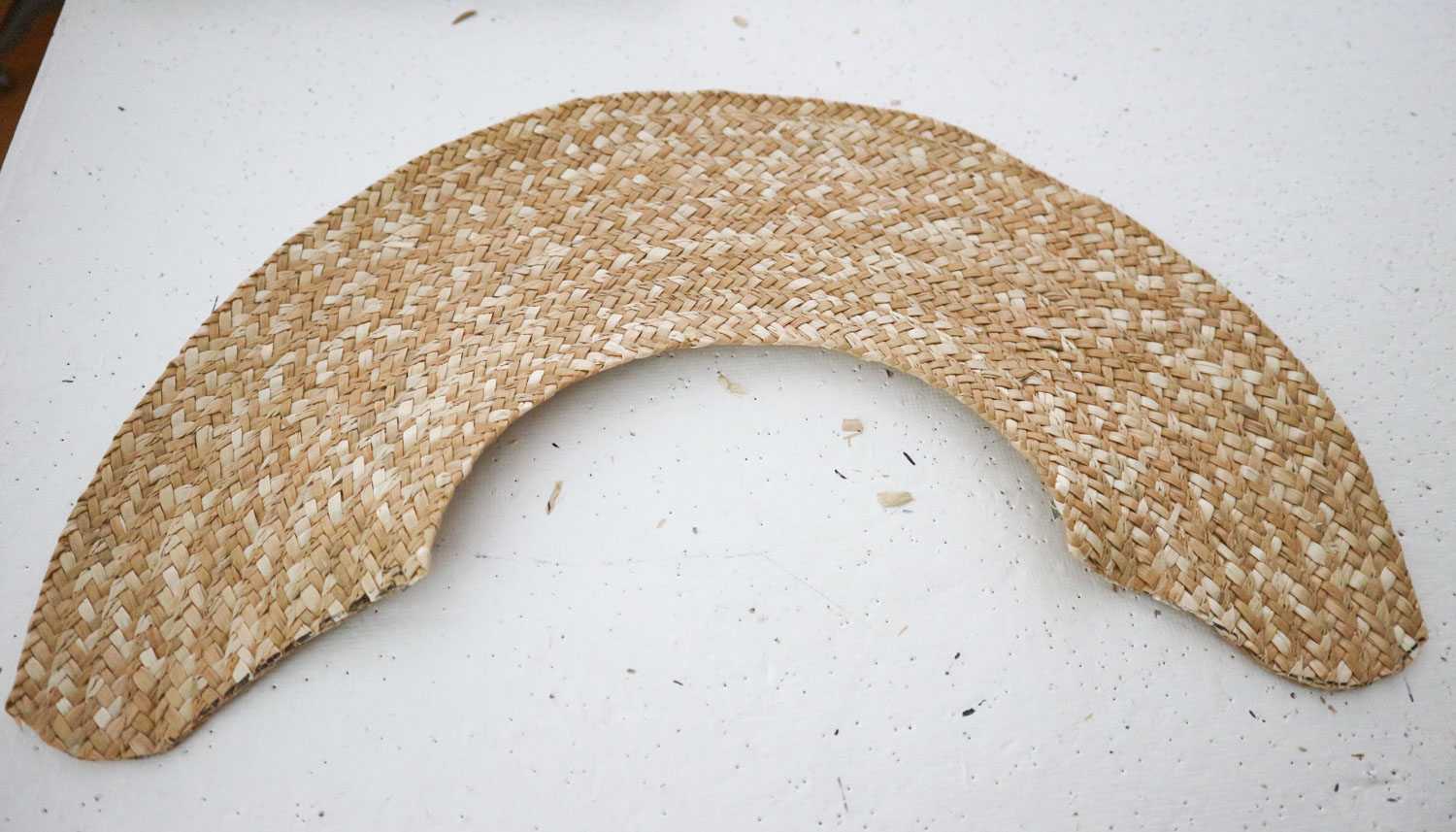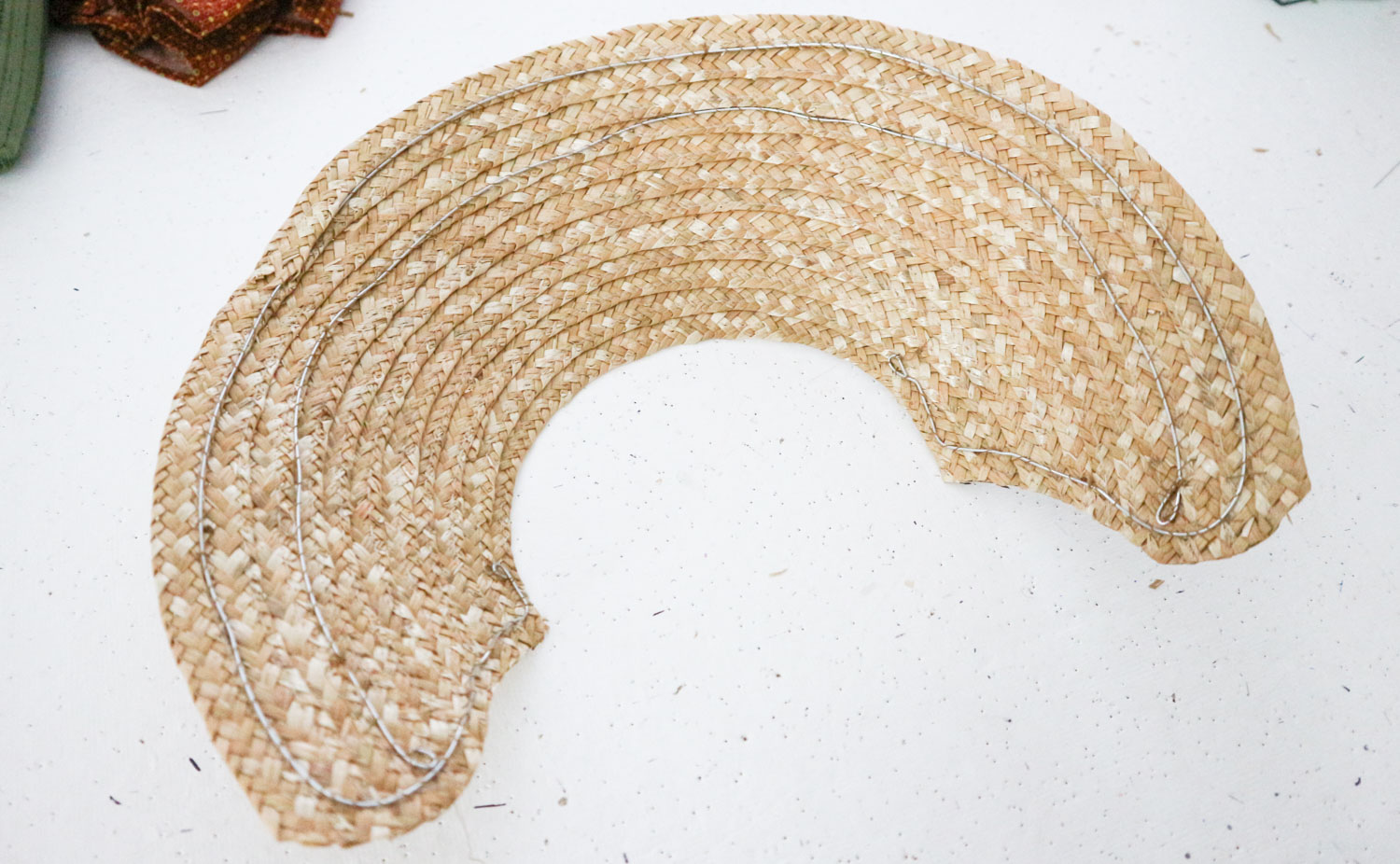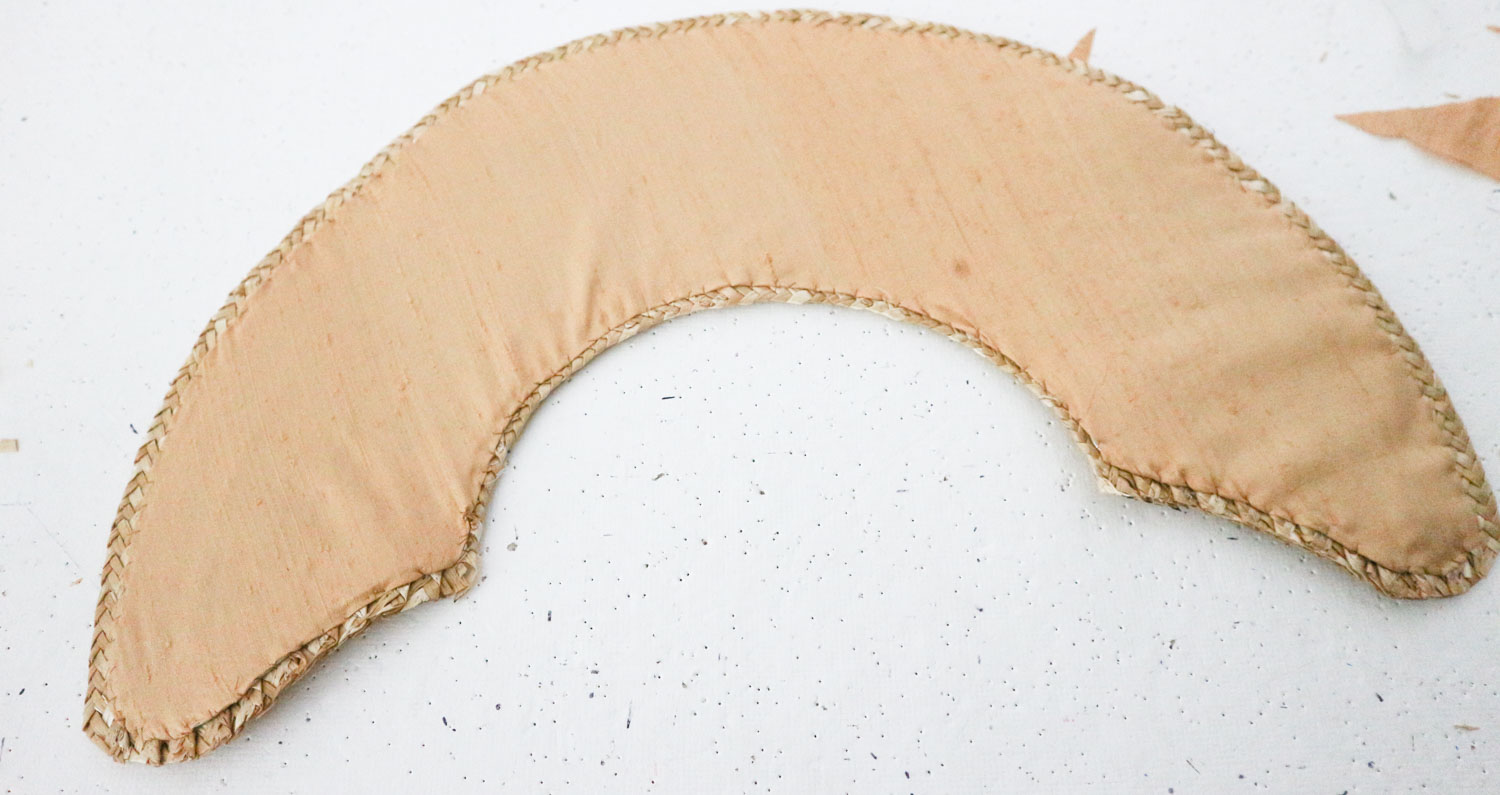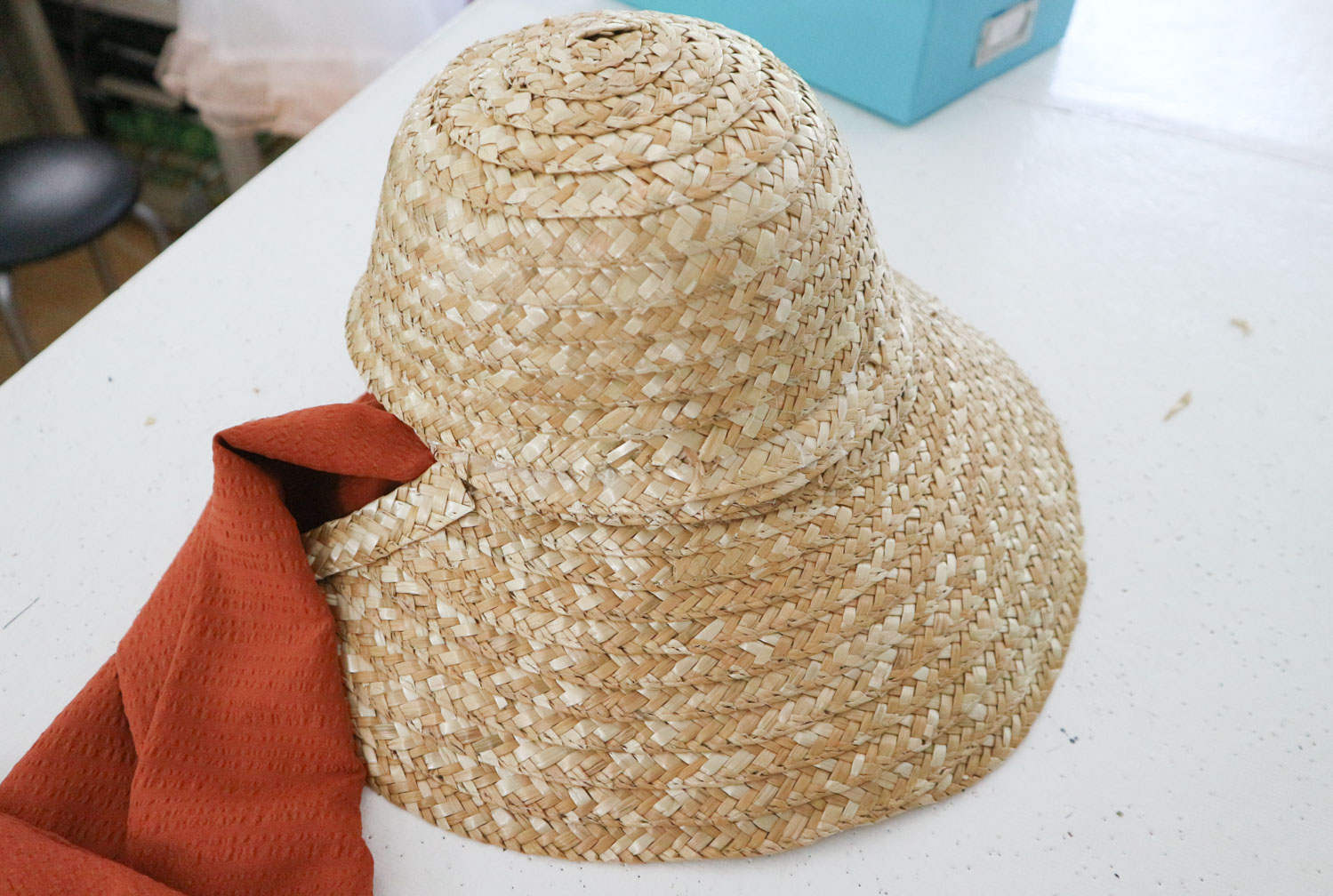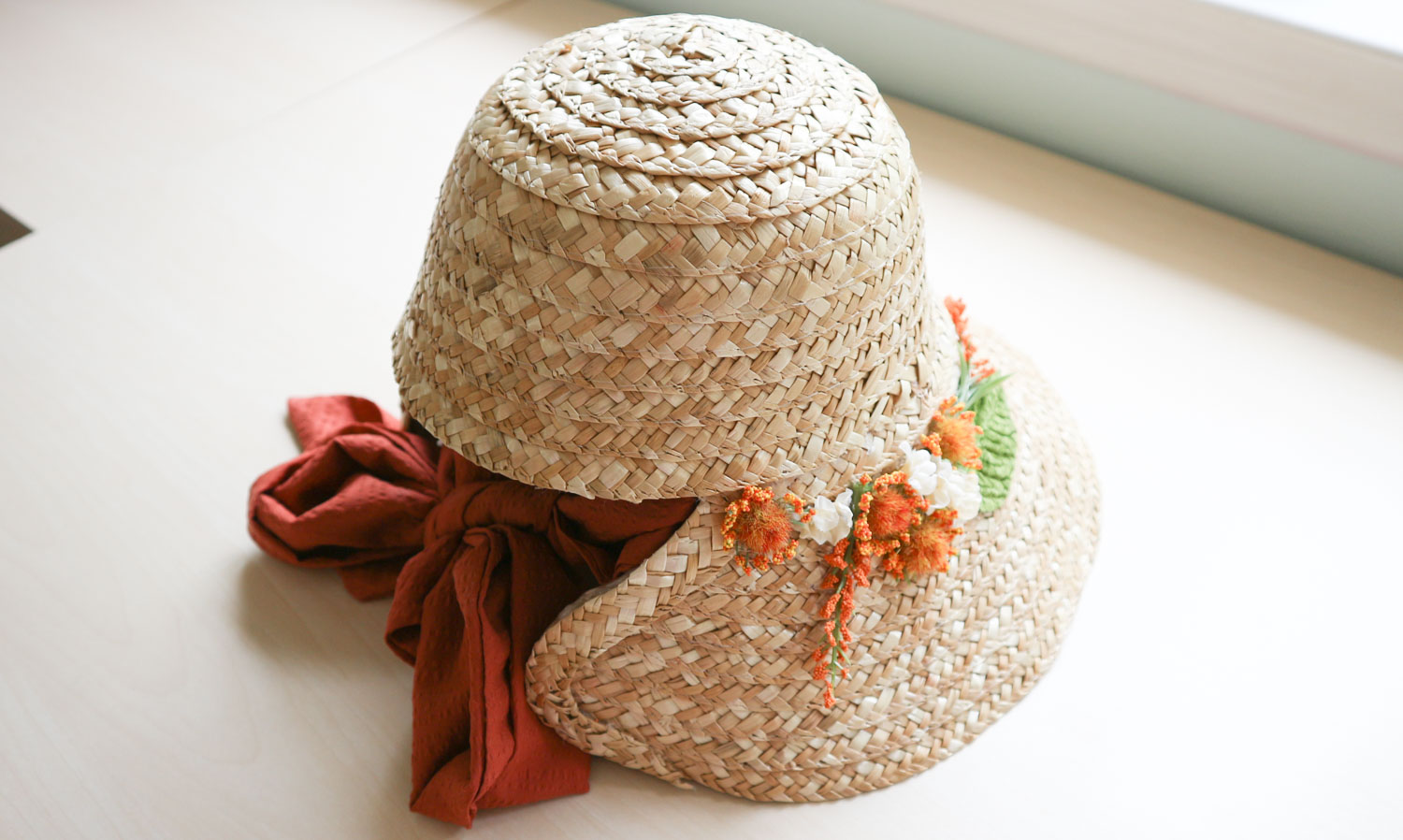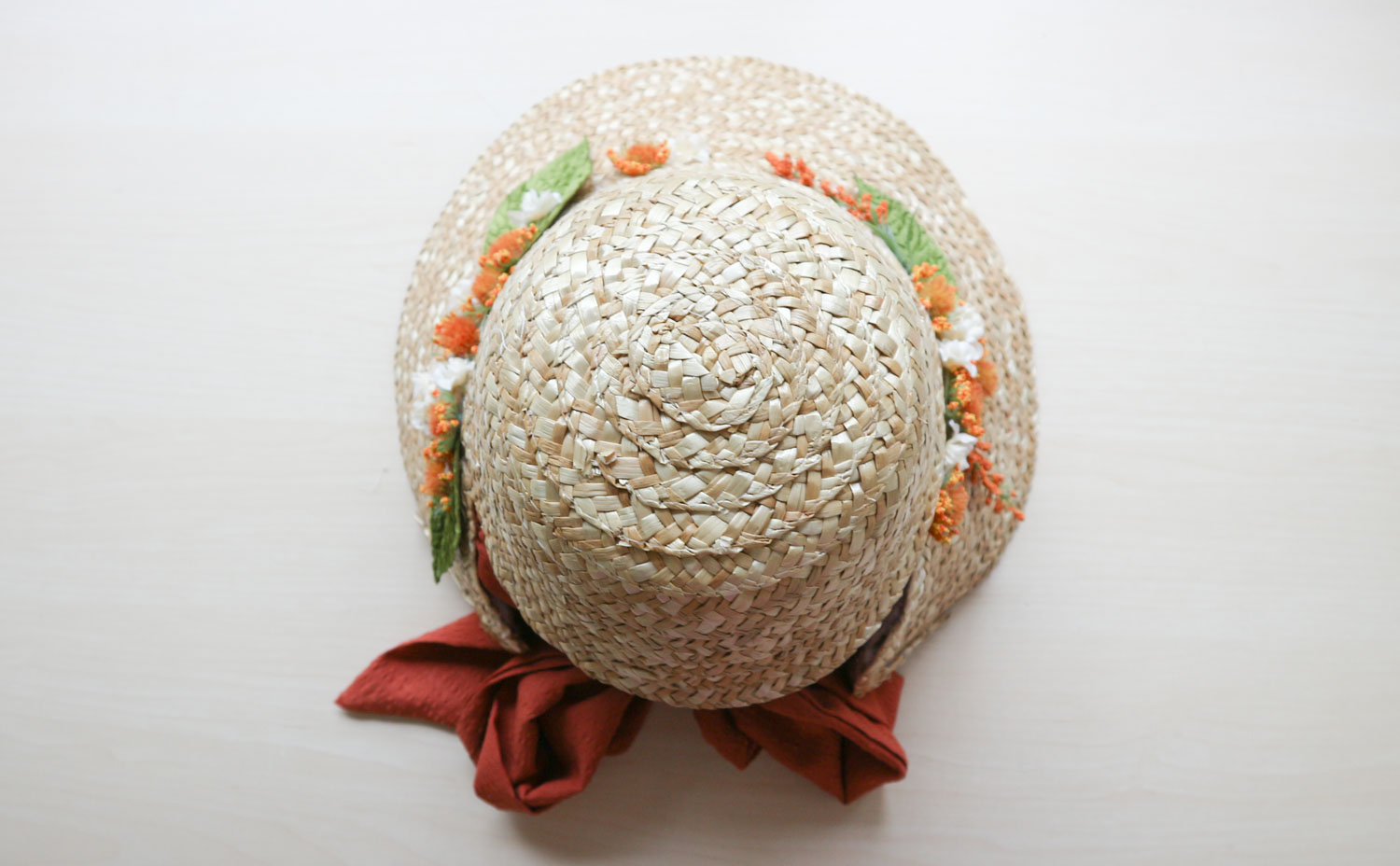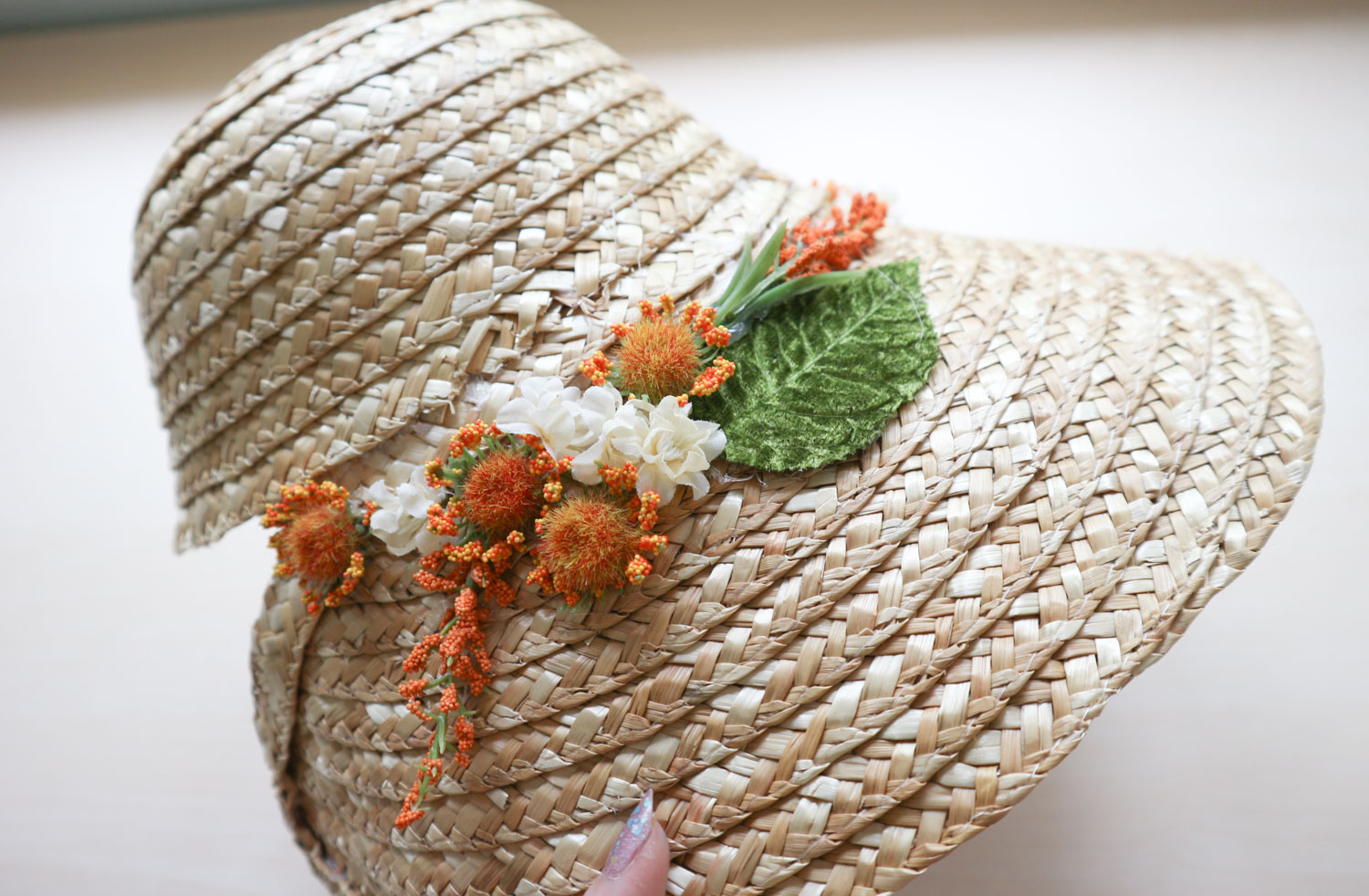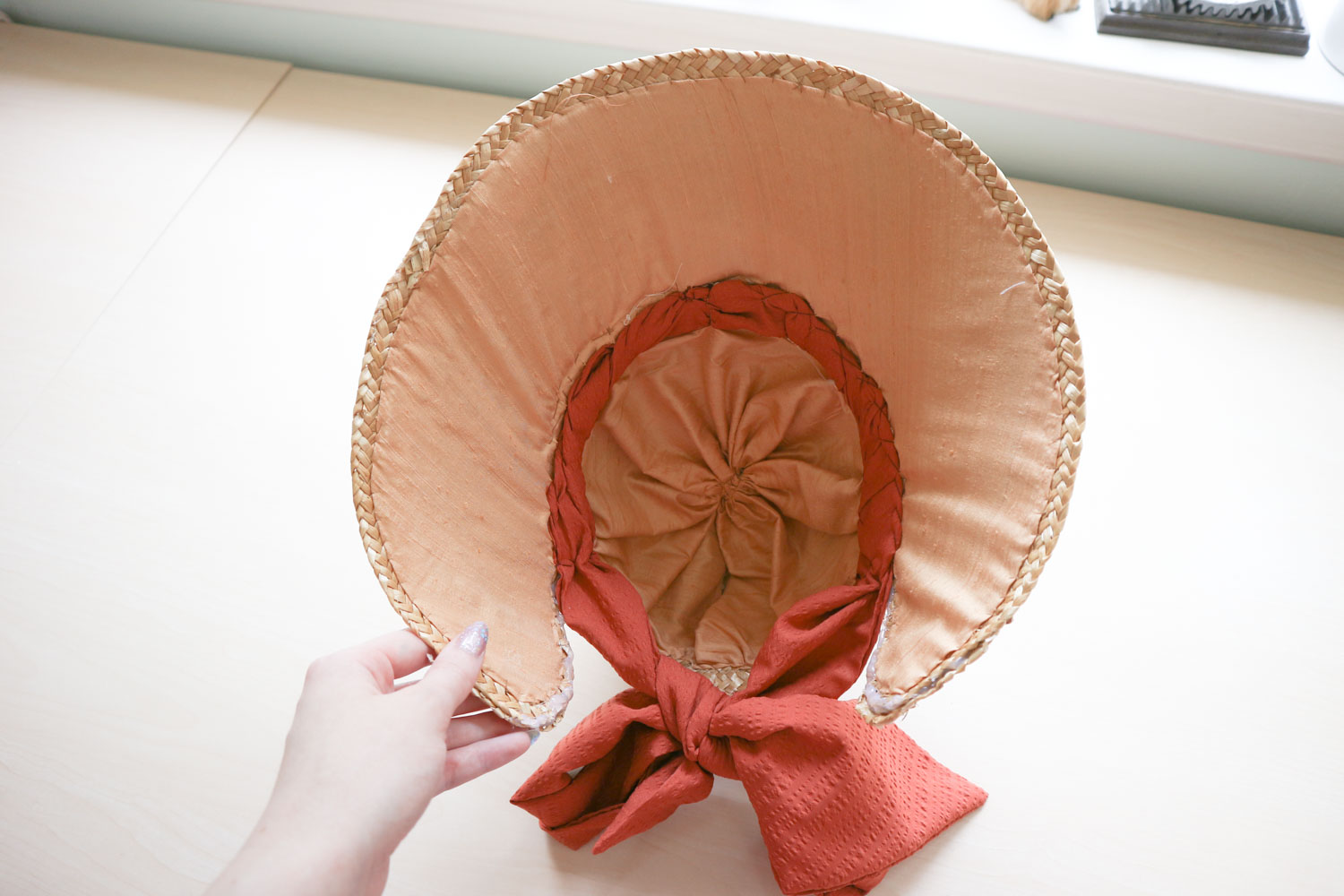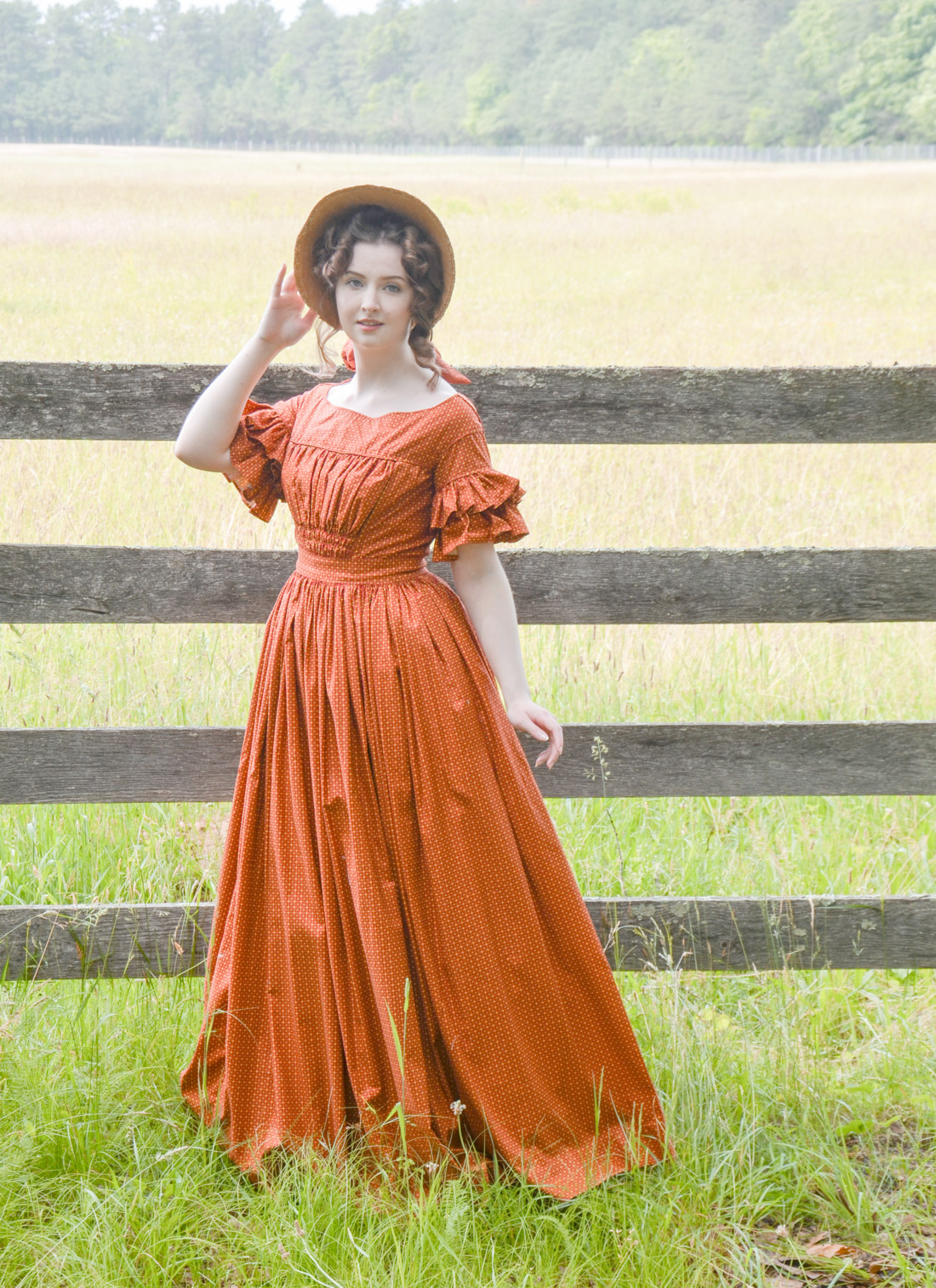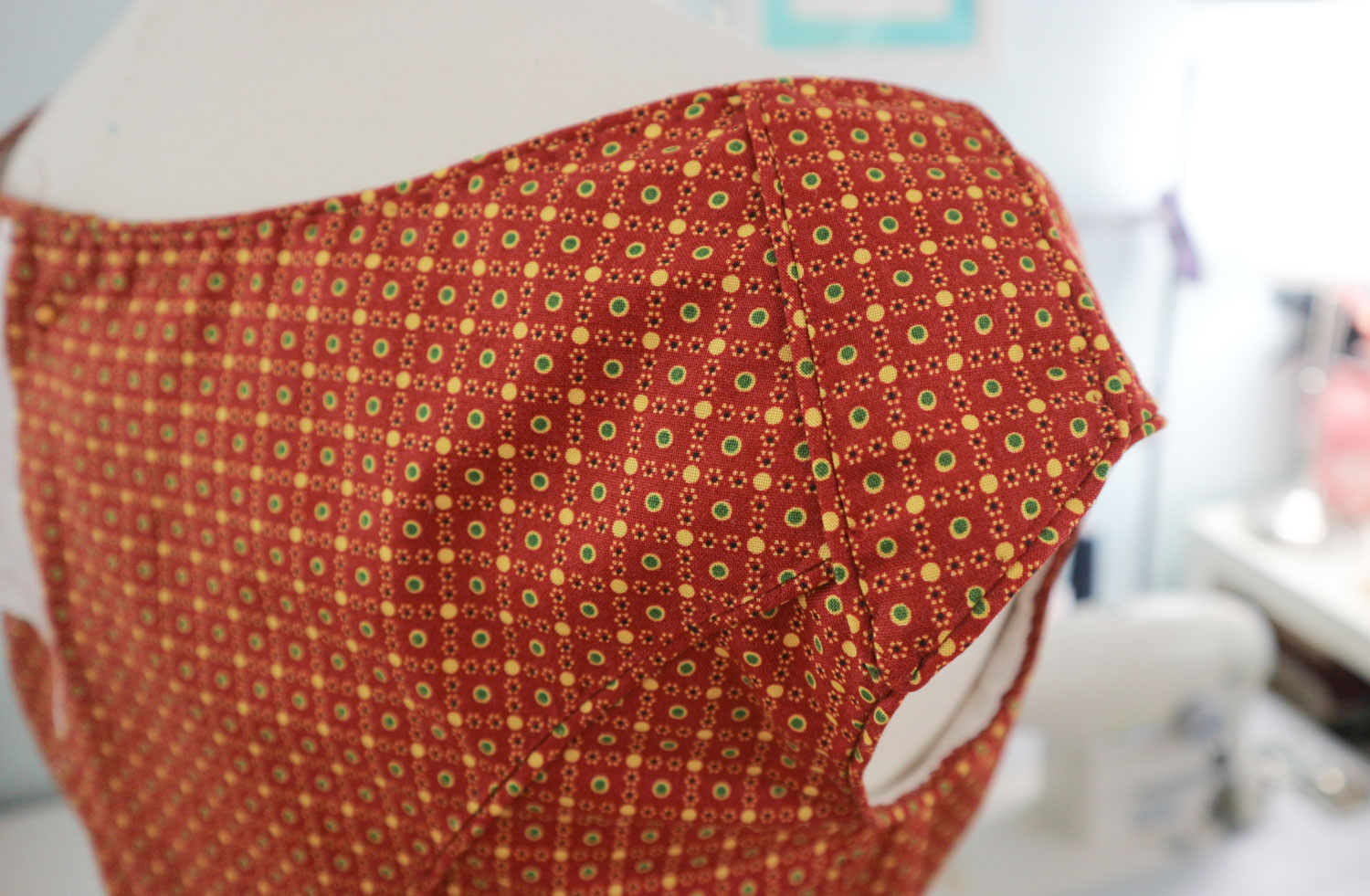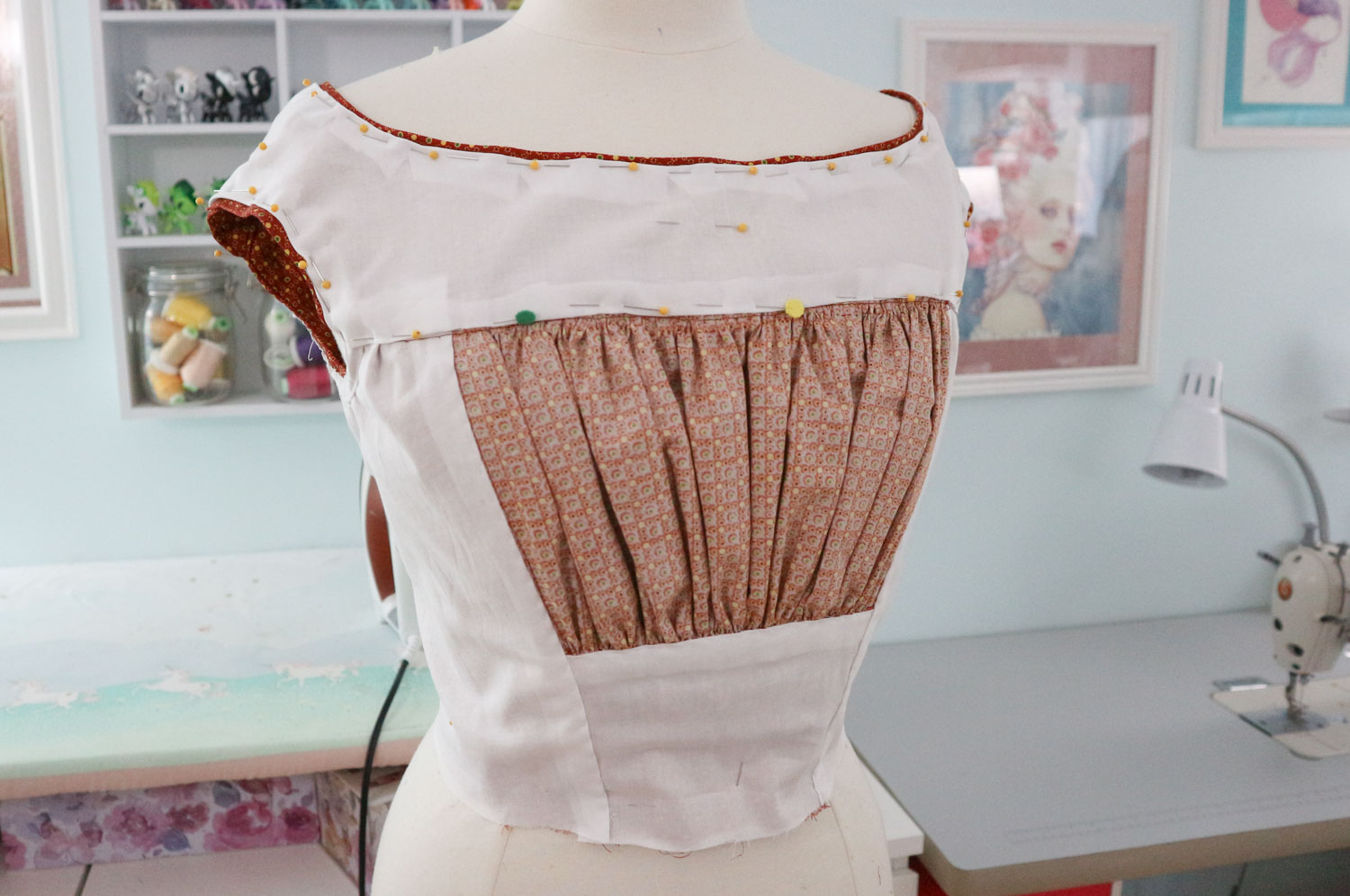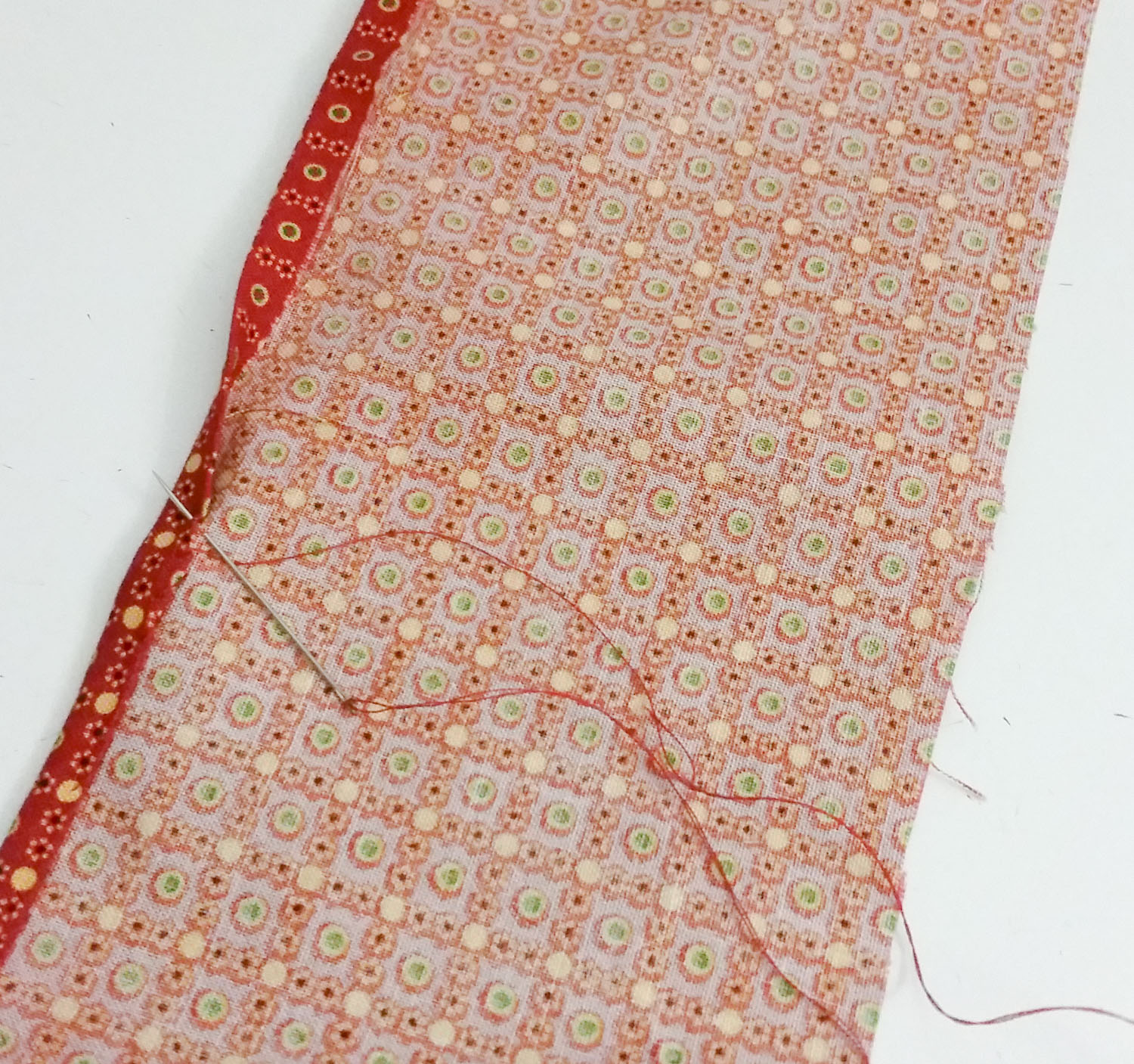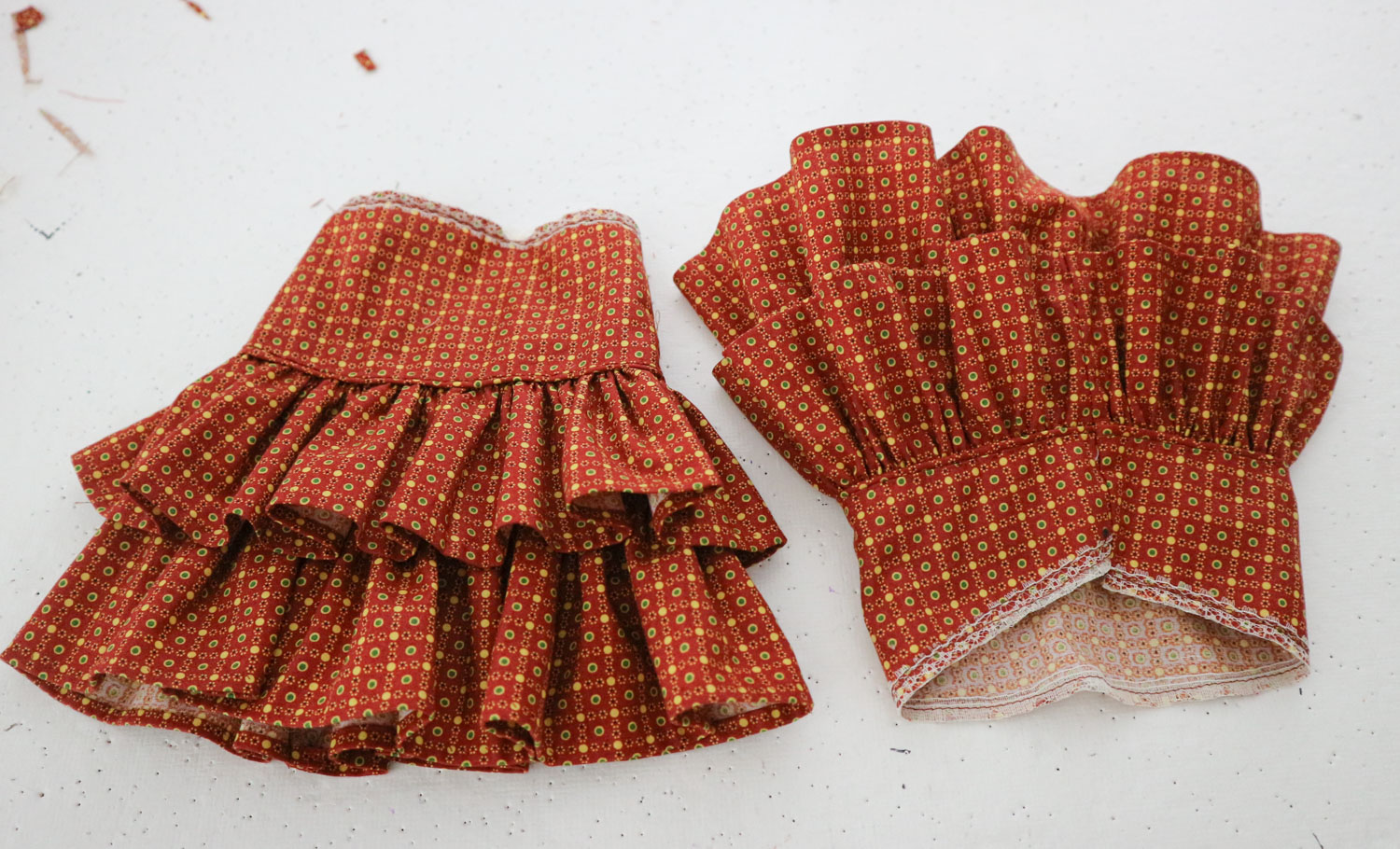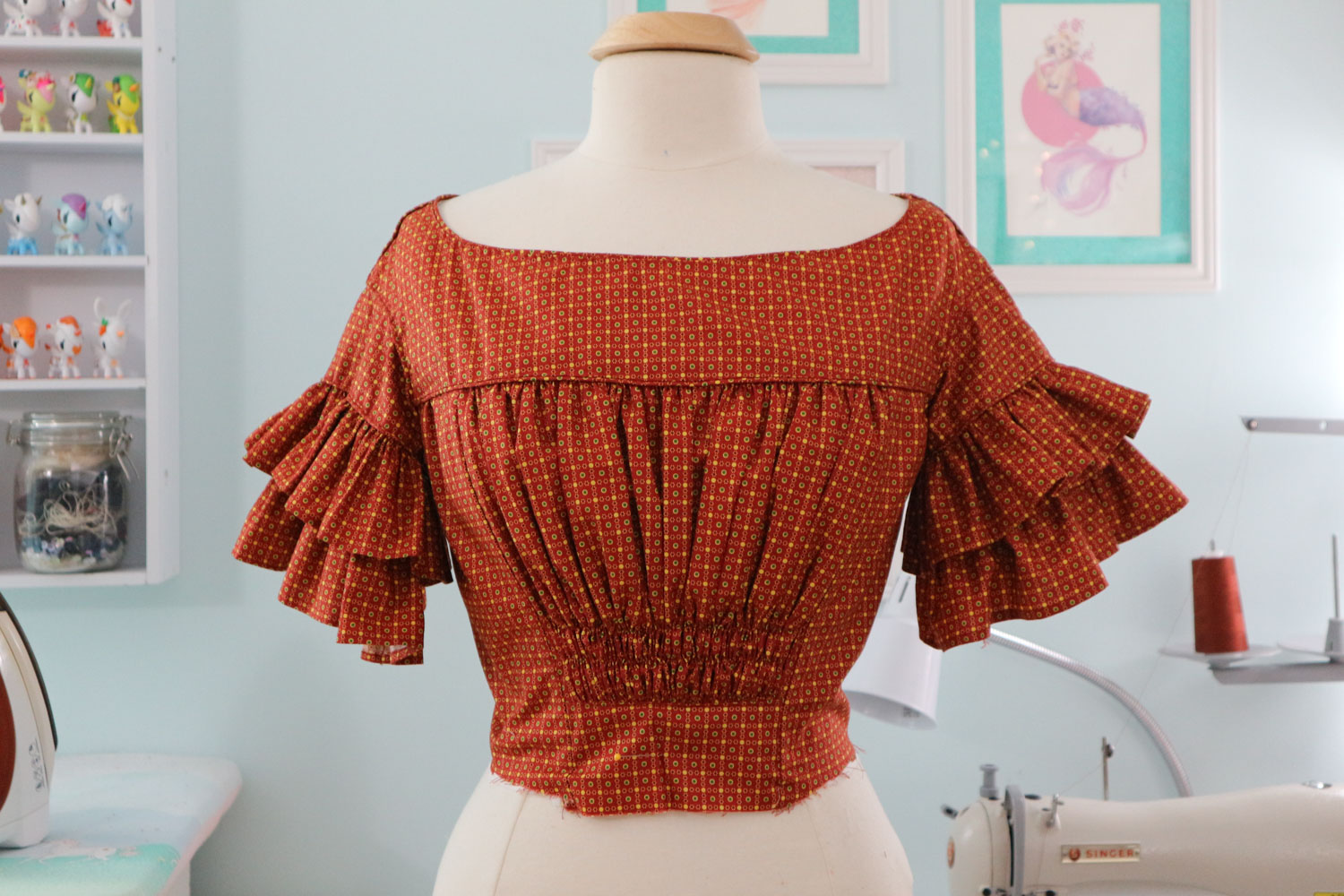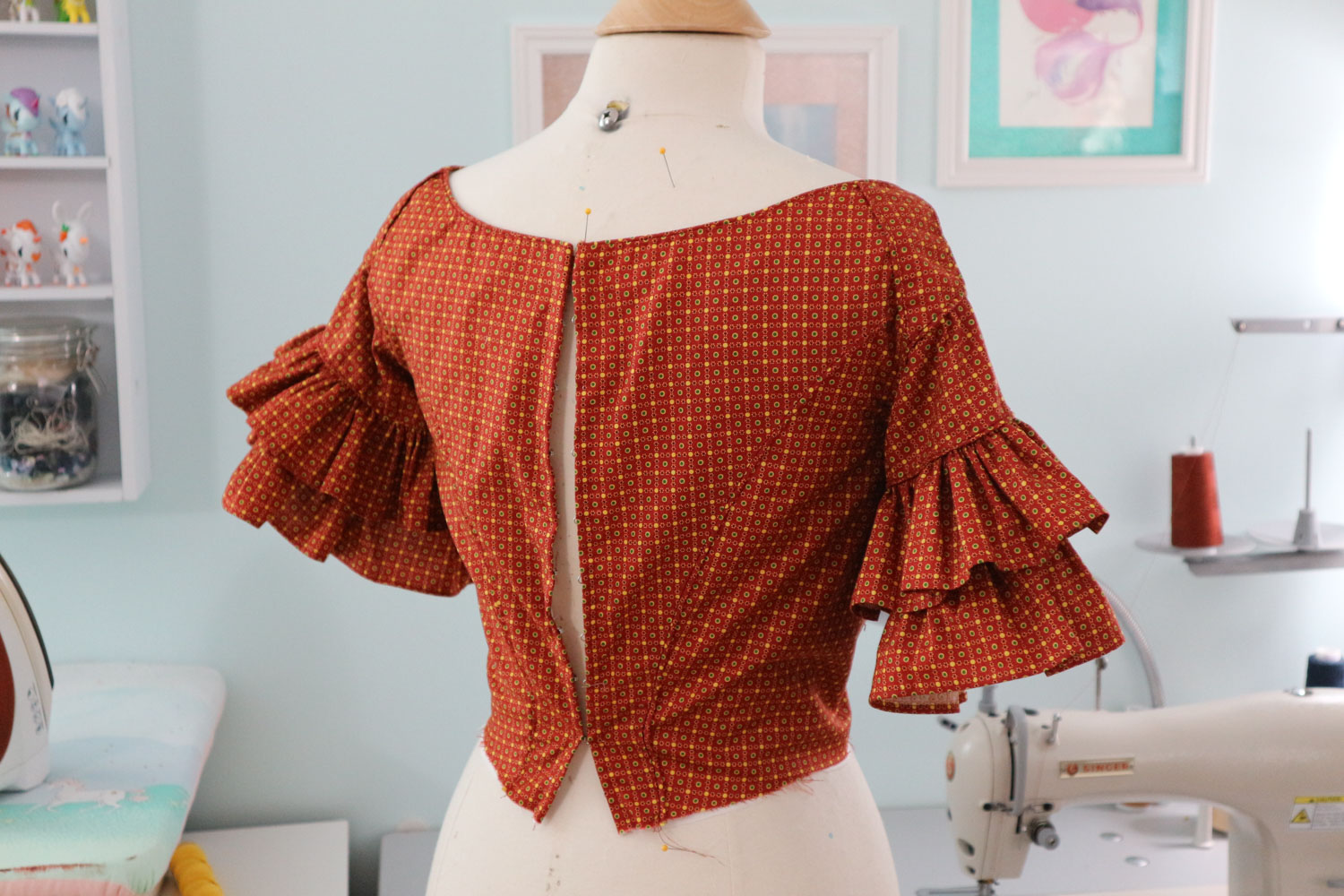Hello everyone! So, it’s been a while. And when I say a while, I mean a year. Technically it’s only been 364 days, but I think I can justifiably round that up to a year.
I don’t have a good excuse for my absence. But I will say that up until recently it’s taken all of my energy just to keep up with my Patreon commitments and a somewhat regular video schedule on youtube. And pretty much everything else – including this blog, has fallen to the wayside. I elaborate a bit on the reasons behind that here.
But for the first time in a long while I’m feeling optimistic about the future and more like my old self. And my old self blogged regularly. So here I am!
…
Today I’m writing about my fourth annual pumpkin patch project. If you’ve been following me for a while, you might be familiar with this tradition. It consists of me making an autumnal or halloween inspired historical costume, and photographing it at a local pumpkin patch.
These projects are some of my favorites, since they allow me to take inspiration from the cooler weather and falling leaves…and add a spooky twist, by embracing some halloween influences!
…
This year I found myself inspired by a material that was very seasonally appropriate…but far from historically accurate. This fabric is by Wilmington and part of their “Gone Batty” collection. I ended up buying three fabrics from the collection, but this one is what really sparked my interest.
Though the print is wild with skulls, bats, pumpkins and beetles, the actual scale and striped pattern of the print reminded me of fabrics that were popular in the mid 1700s. I’ve made a lot of 18th century gowns before, but one style I’ve never attempted is a Robe a la Polonaise. So I decided to combine that fabric with that idea, and this is the end result!
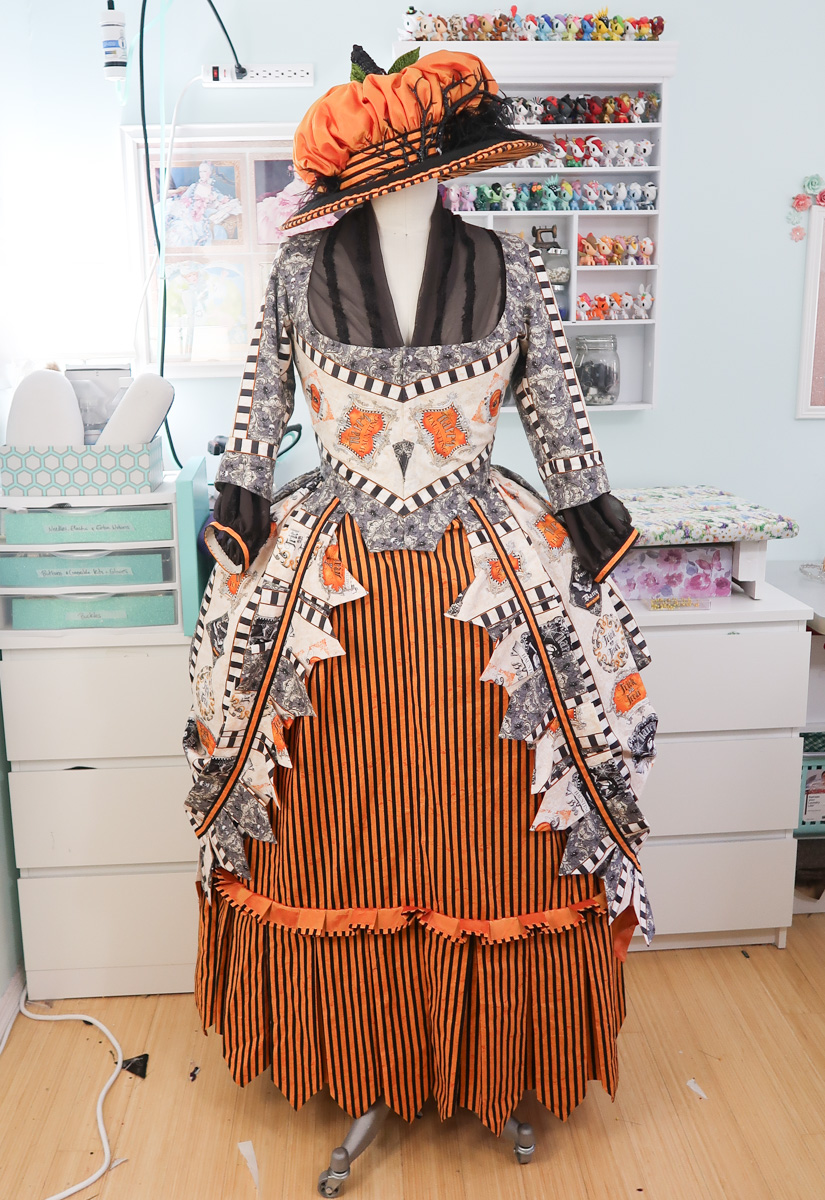
Though I went in with a solid idea of what I wanted to make, I still searched the internet for references so I could accurately piece the back of the bodice. I ended up finding this robe a la polonaise from The Metropolitan Museum of Art which was very similar to what I had envisioned, and served as a major influence on this design.
I also took some inspiration from the hat they modeled that extant garment with. I thought the stiff brim and slouchy cap kind of resembled a pumpkin. And that a pumpkin themed lunardi would be a fun twist on a popular 18th century style of hat. So with all that in mind, I got to sketching my final design!
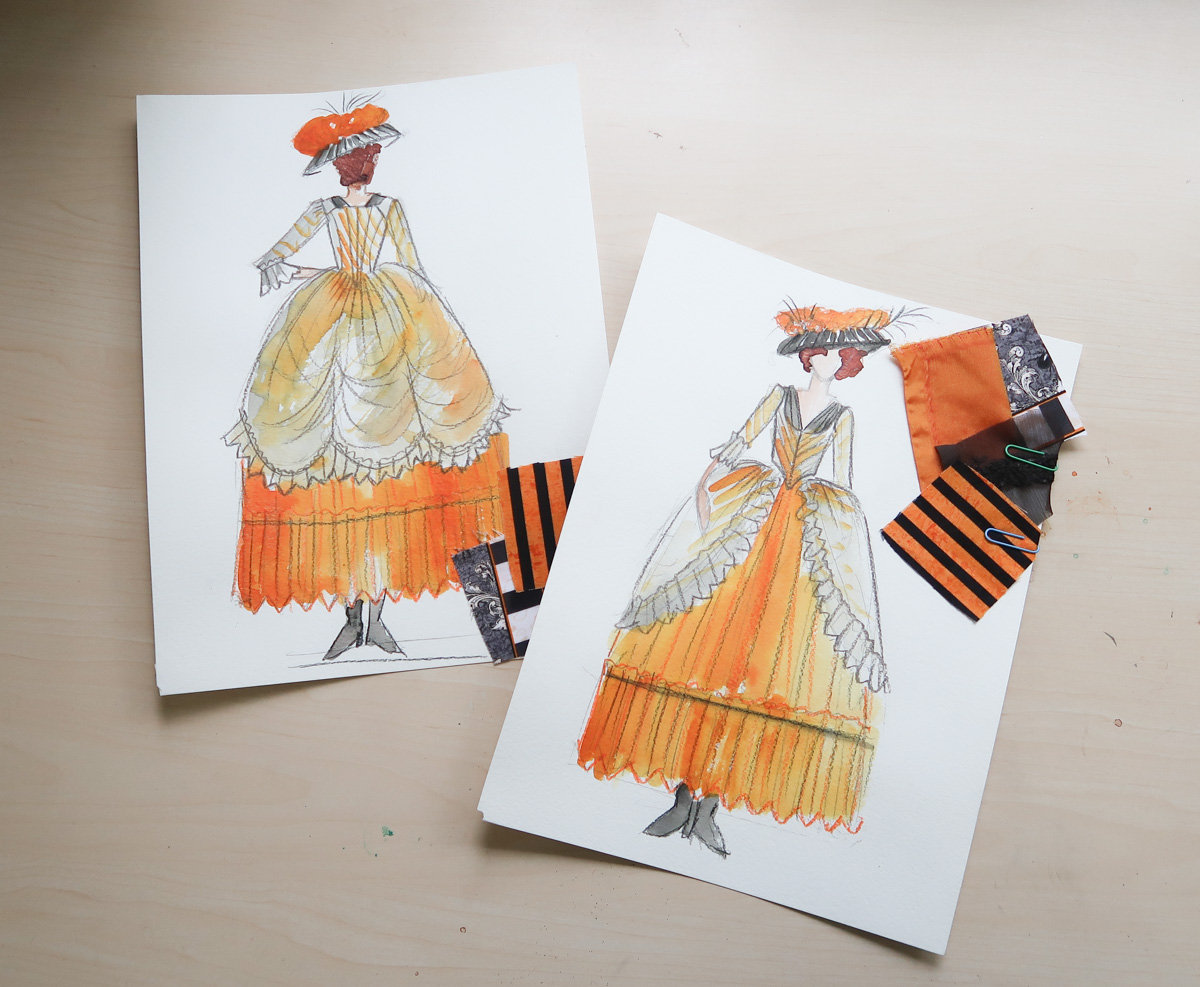
And with a sketch to go off of, I could get right to draping! I didn’t photograph the draped bodice, but it was draped overtop of a pair of stays and a pannier to ensure the shape of the pieces would suit my figure when worn with the proper foundation garments.
My first mockup was an inch too small, but otherwise very nicely fitted at the back and shoulders. I liked the shape of the neckline a lot too.

So I made a few minor alterations, then moved ahead with the finalized pattern, which looked like this!
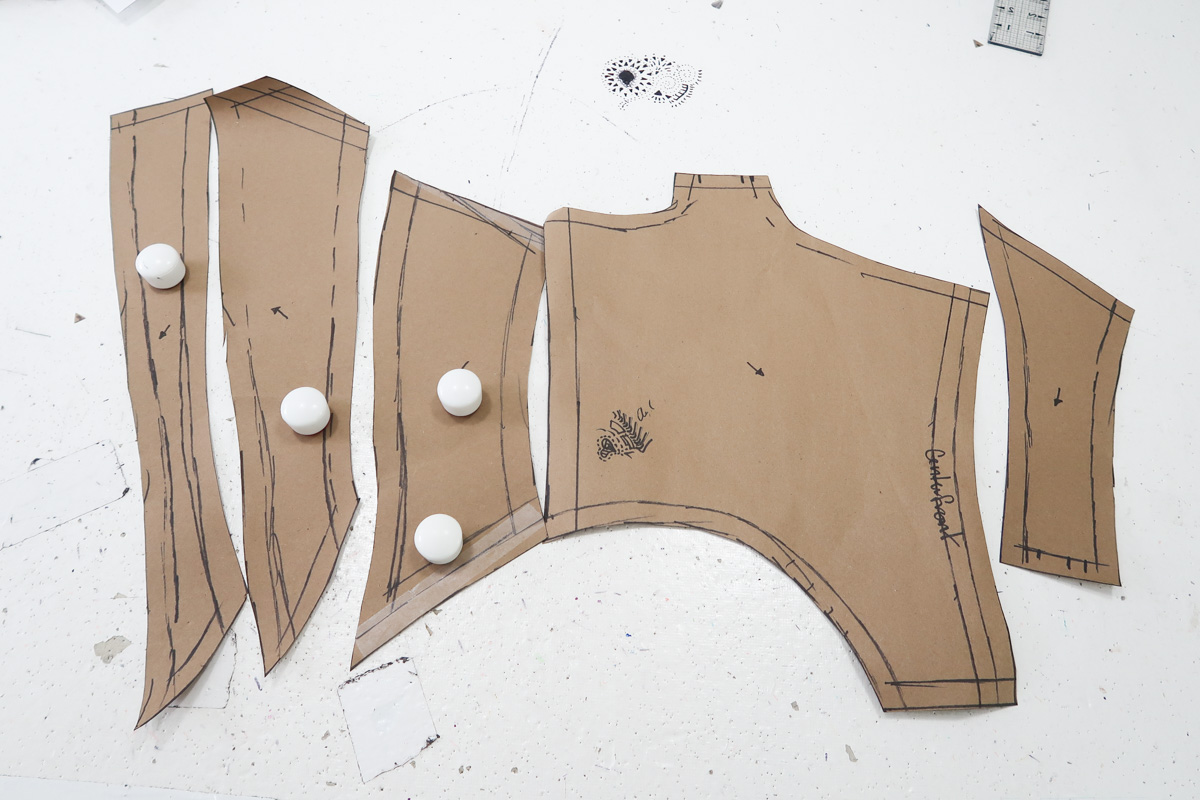
The arrows on the pattern signify the grain line they should be cut on. Since I was working with a striped fabric I just had to take advantage of the print and cut the bodice on the bias, so it would form a zig zag design when sewn together.
I messed up more than I would care to admit during this process, and probably wasted a yard of fabric. Which led to some mild panic later on when I didn’t have enough fabric left to cut out the skirt and sleeves. That was unfortunate, but doesn’t this look fabulous?!

I used a pencil to mark the seam allowance on each piece, then carefully pinned and sewed them together.
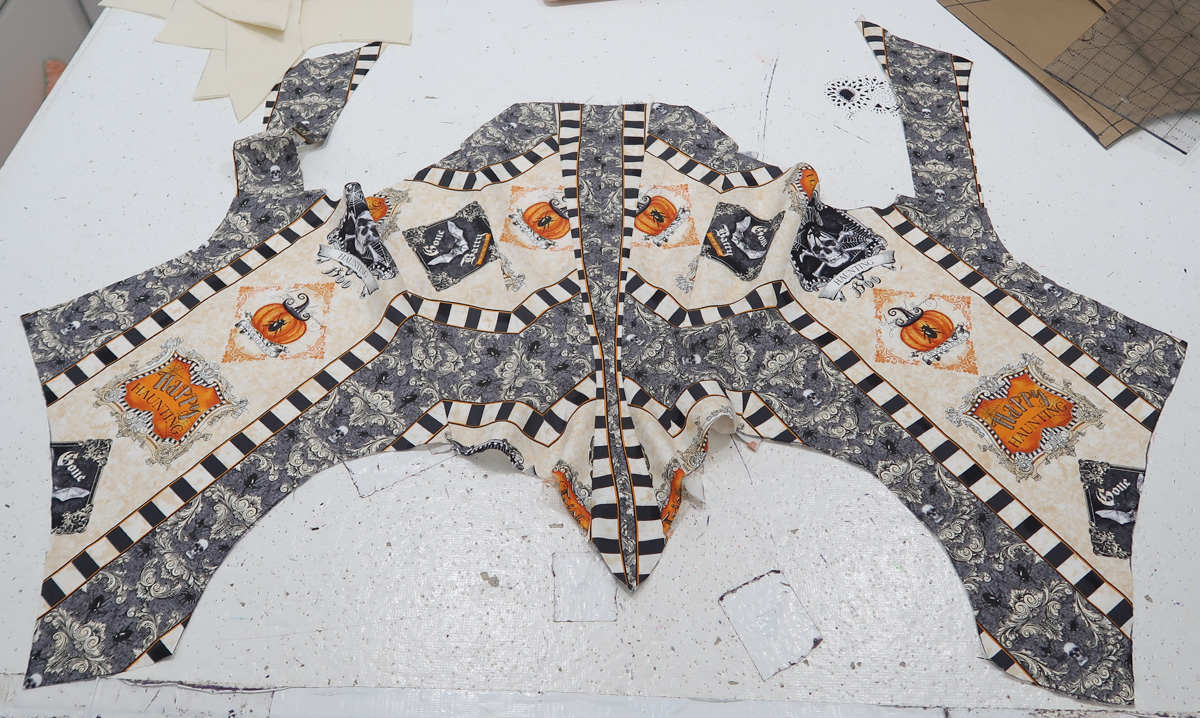
All the edges were turned inward by a half inch – except for the center front edge. I waited to finish that until a later fitting.
Then I turned my focus to the bodice lining, which was made from the same pattern. However instead of sewing all the lining pieces together, I decided to turn the seam allowance of each piece inward, then sew a boning channel into each edge.
I matched the edges of each piece of lining up with seam allowances of the outer layer of fabric. Then the edges were whip stitched in place, and boning was added.
I lined the back and side back panels first, then did a fitting before lining the fronts of the bodice.
I’ve had a few projects recently that shrunk when I added the lining – okay, they didn’t shrink, but the lining reduced the ease of the garment, which altered the fit dramatically. So just to be safe, I did a fitting after the partial lining was added.
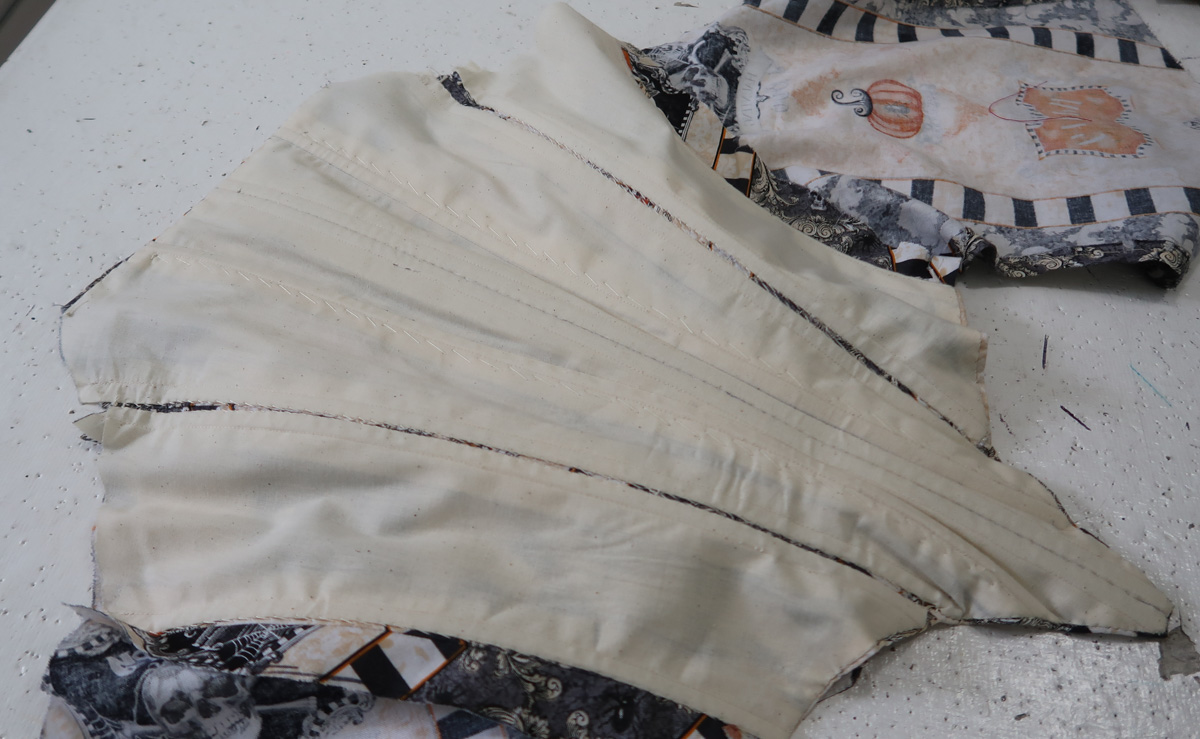
Thankfully, it still fit. So I cut the lining for the fronts of the bodice, and stitched a boning channel into each panel.

This was pinned, then whip stitched in place. I did yet another fitting before finishing the center front edge and adding closures.

The fronts of the bodice overlap by a quarter inch, and close with hooks and bars.
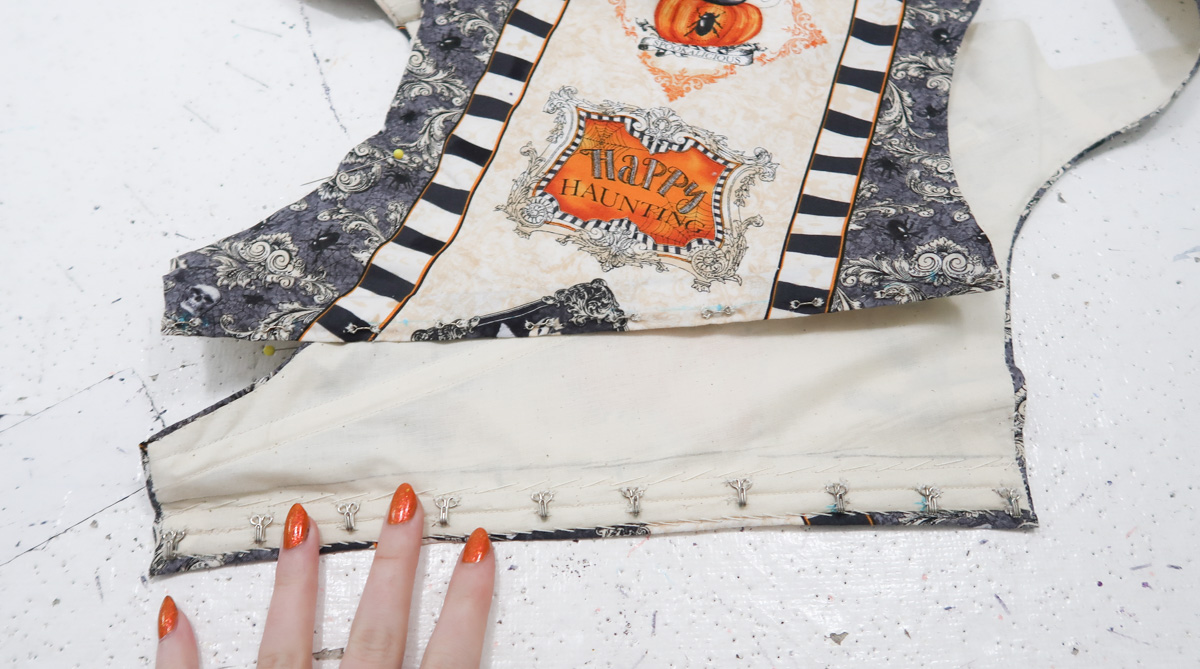
Here is how it looked from the outside.
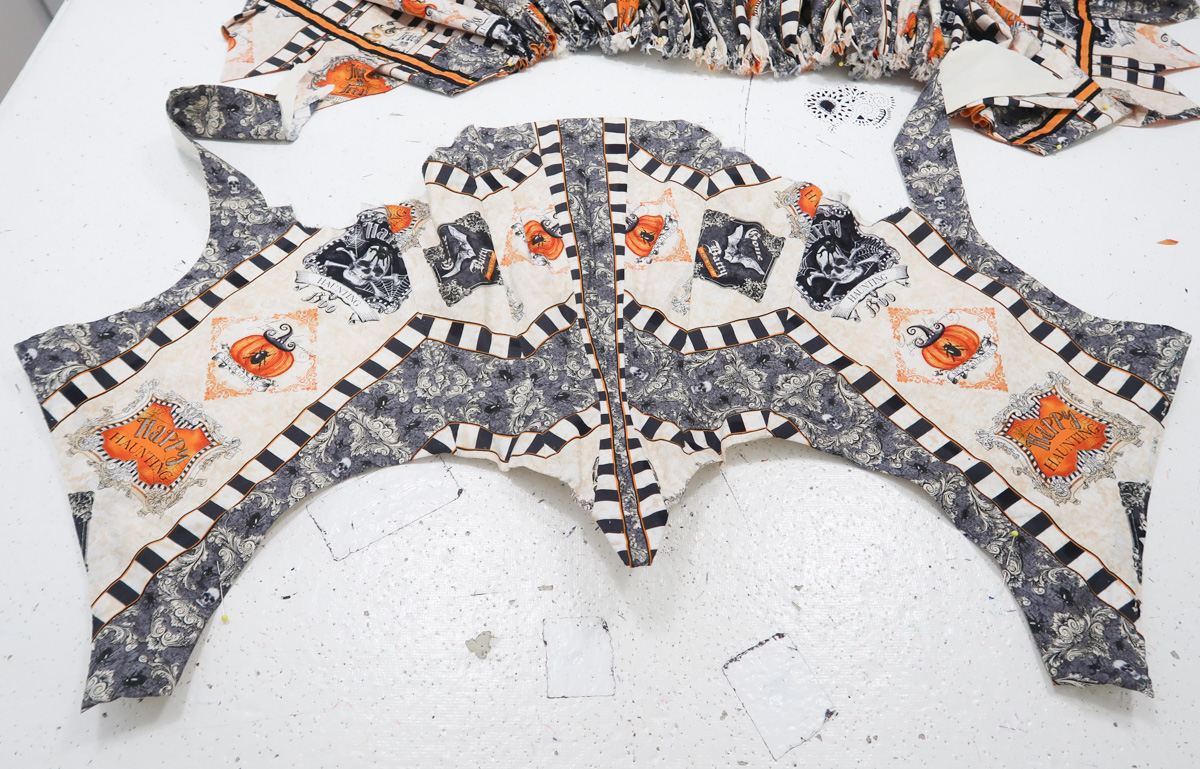
And on my dress form! I’m so pleased with the print placement at the front. And how the strap was cut so it seamlessly blends in with the top stripe of the bodice – that was very intentional, and I think it looks very good!
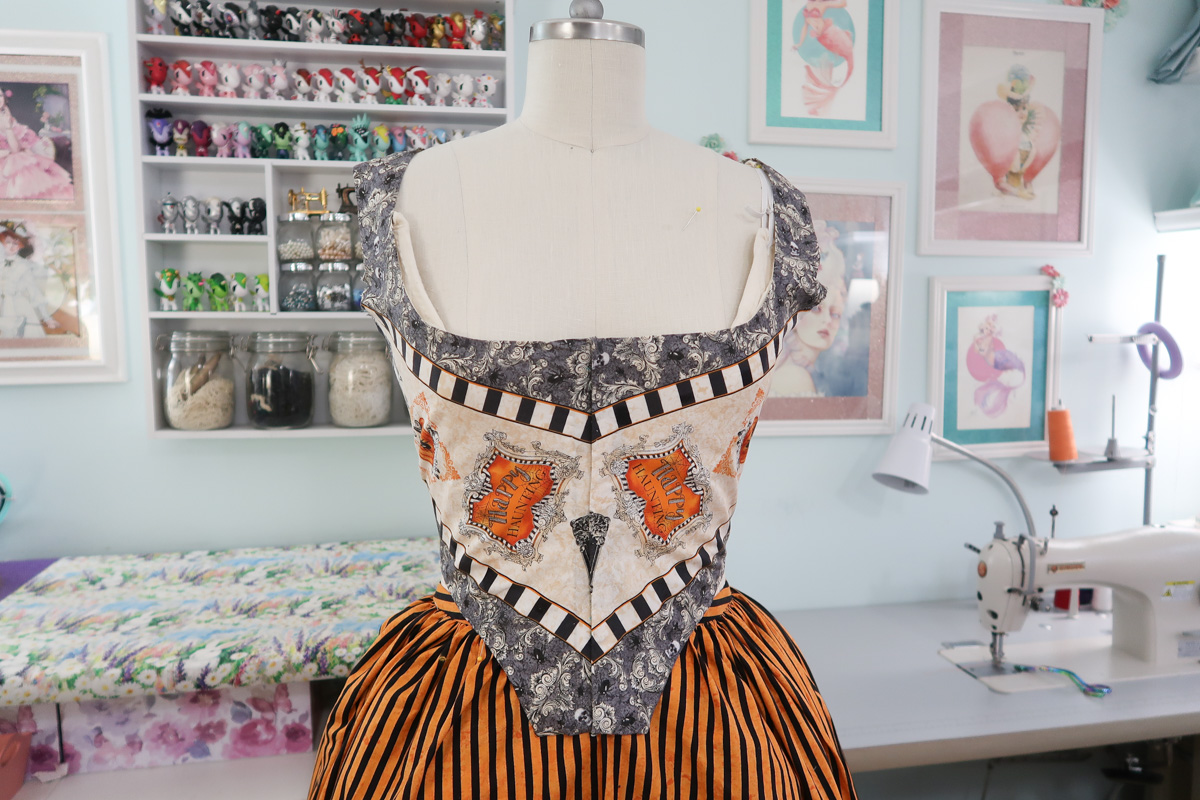
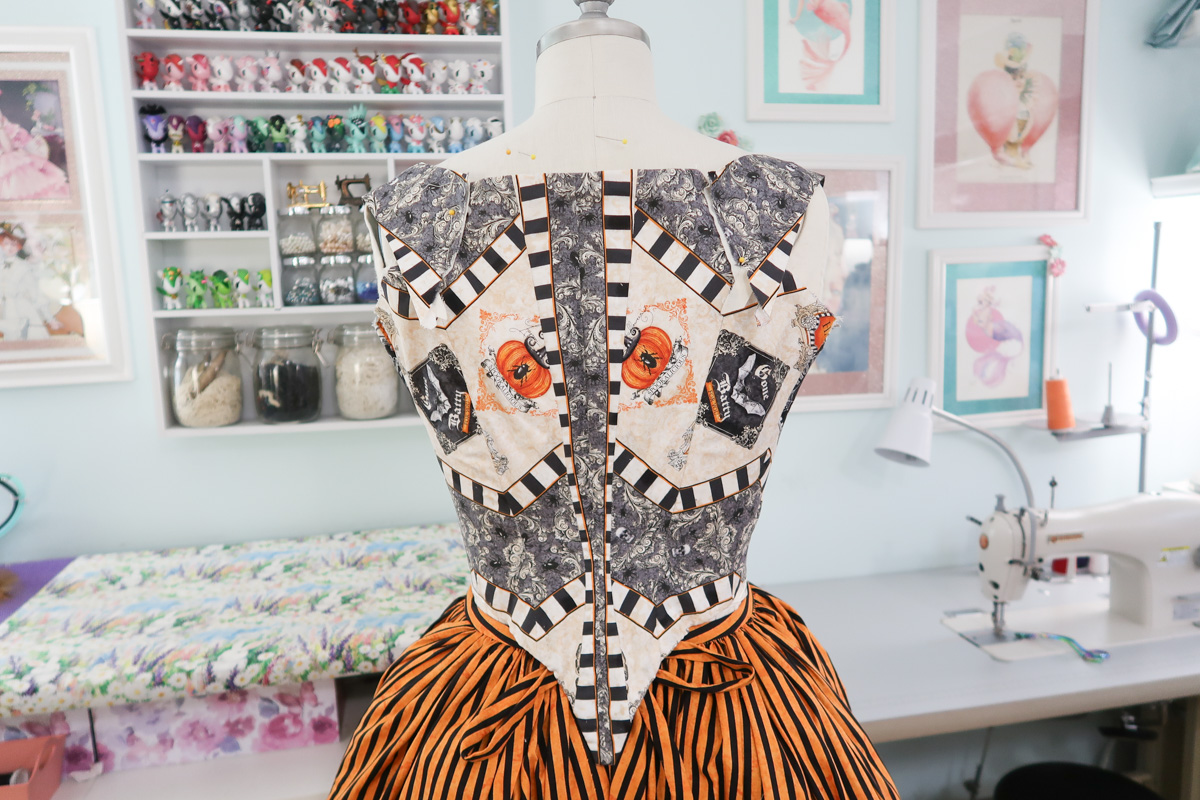
You can probably tell that the bodice is worn over a coordinating skirt in the photos above. So let’s switch focus for a moment and go through the process of making that.
I didn’t take many photos of making the upper half of this skirt. But it’s basically four rectangles with sloped sides that were stitched together. Two panels make up the front, and two make up the back. I left the center back seam completely open to make it easier to add the trim later on.
The top edge was gathered down to my waist measurement, then bound with bias binding. The binding extends past the back edge of the skirt to form ties.
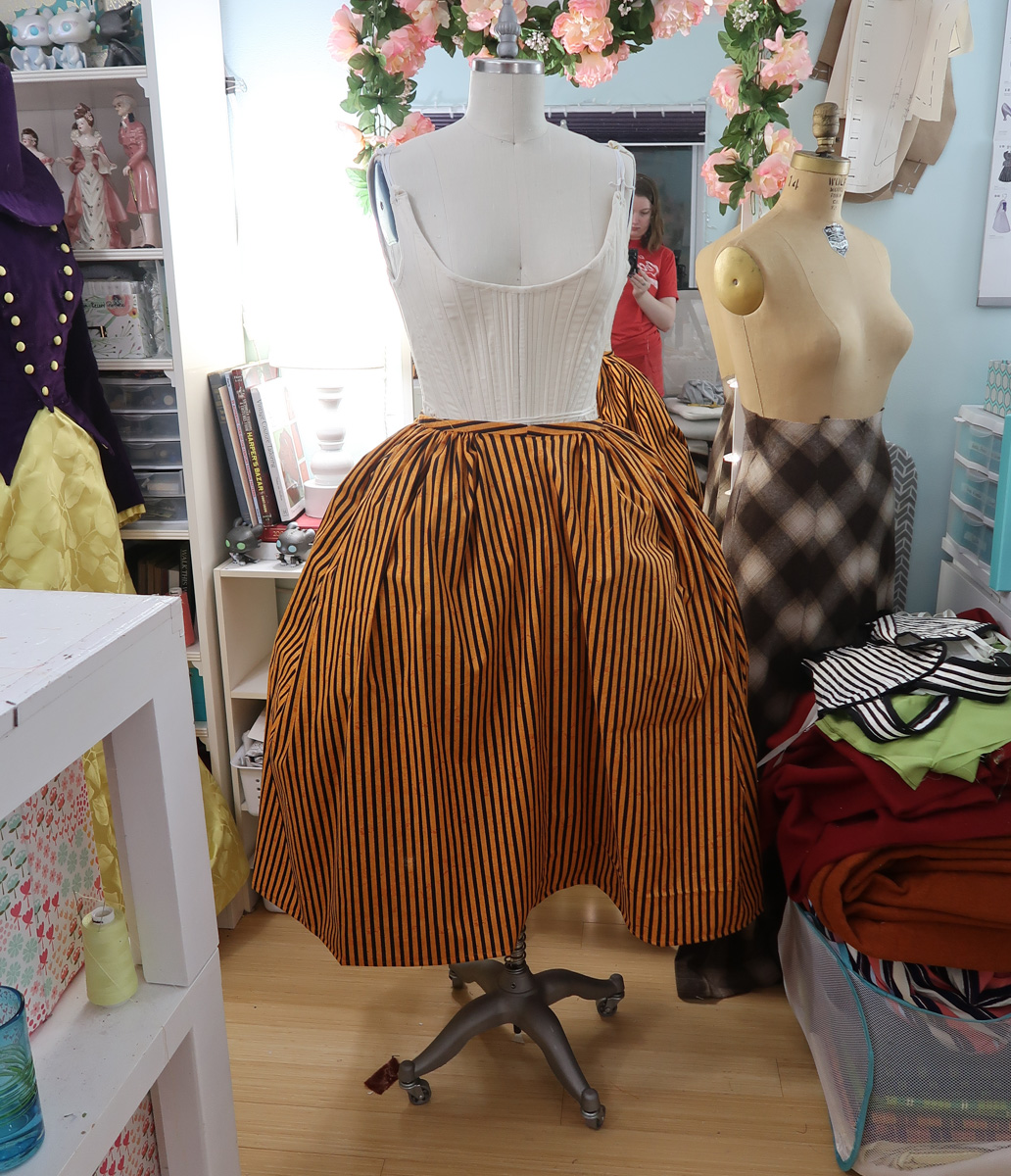
Hopefully I made up for my lack of documenting the upper half by taking a good dozen photos of making the trim for the hem. Because the trim was kind of complicated. I knew I wanted it to be pleated, and I wanted it to have a zig zag pattern (also known as a dagged edge) around the hem.
I started by cutting out eight 42″ wide strips that were a half inch longer than I wanted my trim to be. All these strips were sewn together to form one, very long strip. I repeated this process with a coordinating fabric that will be used for lining.
Then I made a template out of cardboard. I lined the straight top edge of the template up with the top edge of the strip of fabric. Then I traced around the bottom edge of the template to transfer the design to the wrong side of the fabric. This was repeated a bunch of times until the entire strip of fabric had the zig zag design drawn onto the hem.
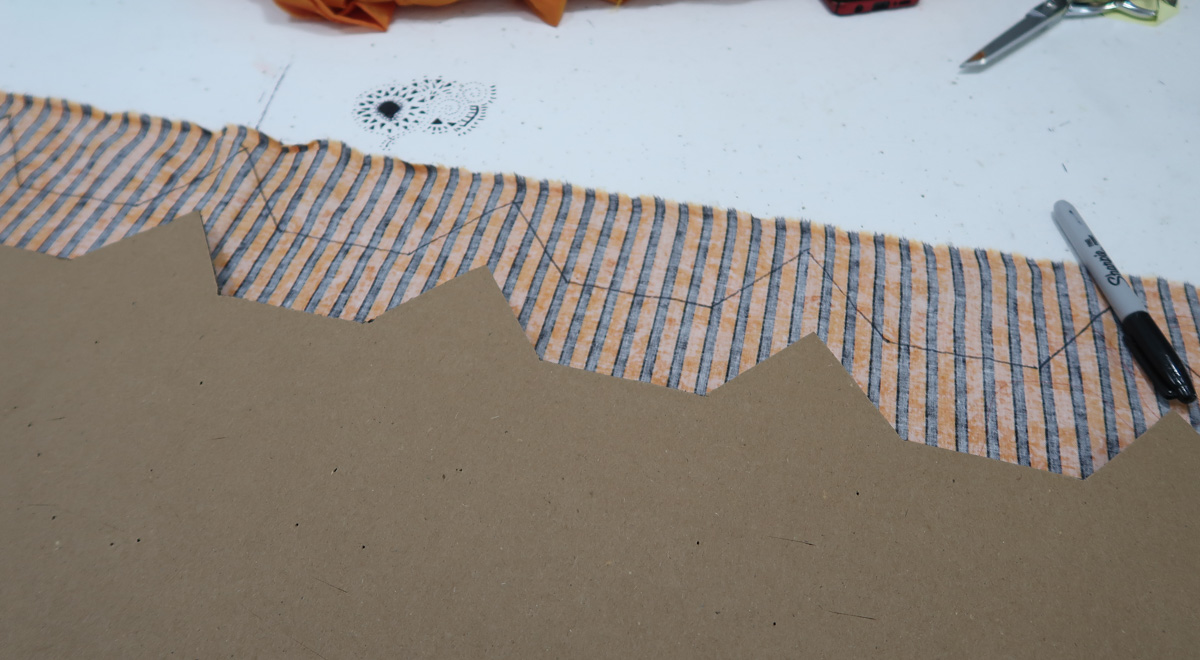 I also marked a line 2″ away from the top edge, then ironed the fabric inward so it touched that line. This created an even 1″ hem across the top edge.
I also marked a line 2″ away from the top edge, then ironed the fabric inward so it touched that line. This created an even 1″ hem across the top edge.
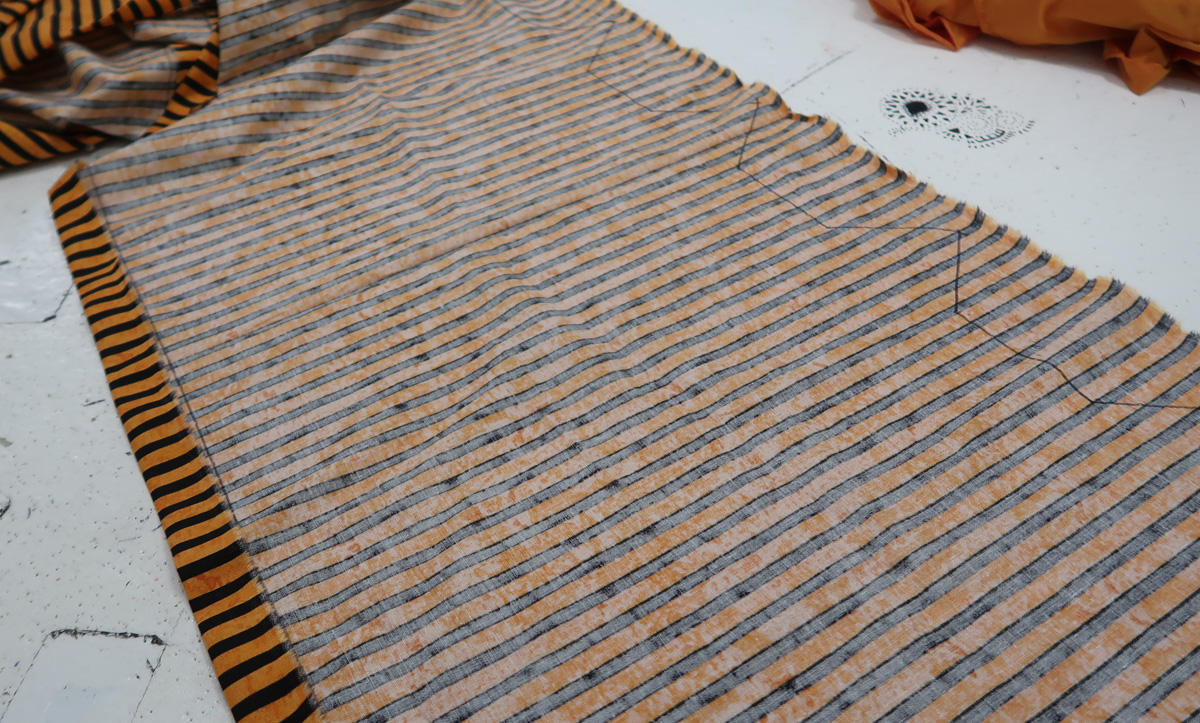
I pinned the lining and outer layer of fabric together, across the bottom edge, with the right sides facing each other. Then I stitched across the markings from the template, making sure to pivot at each point and corner.
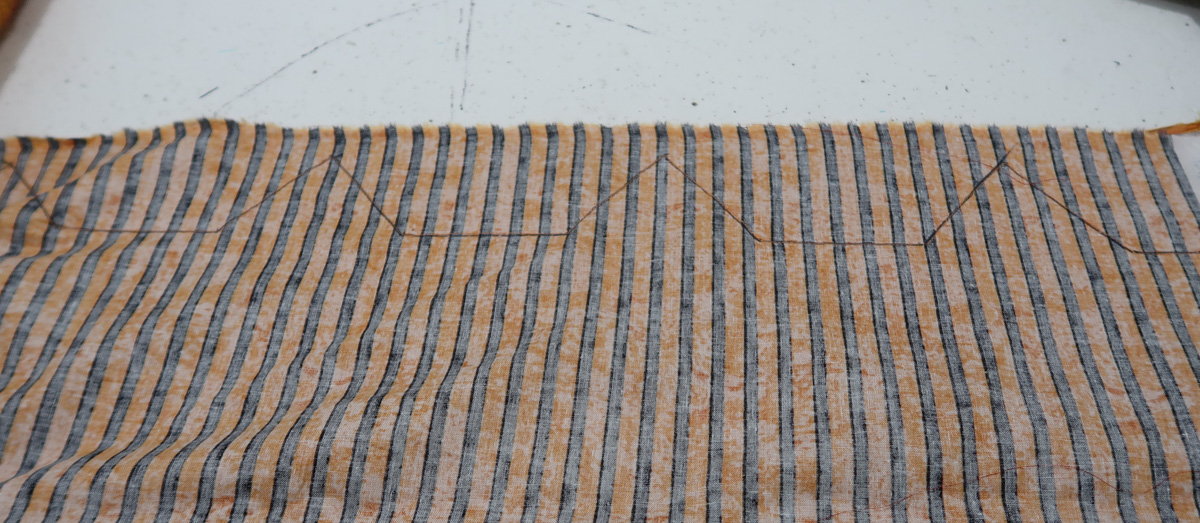
Then I cut away all the excess fabric. This included clipping into the corners, and trimming the fabric very close to each point.
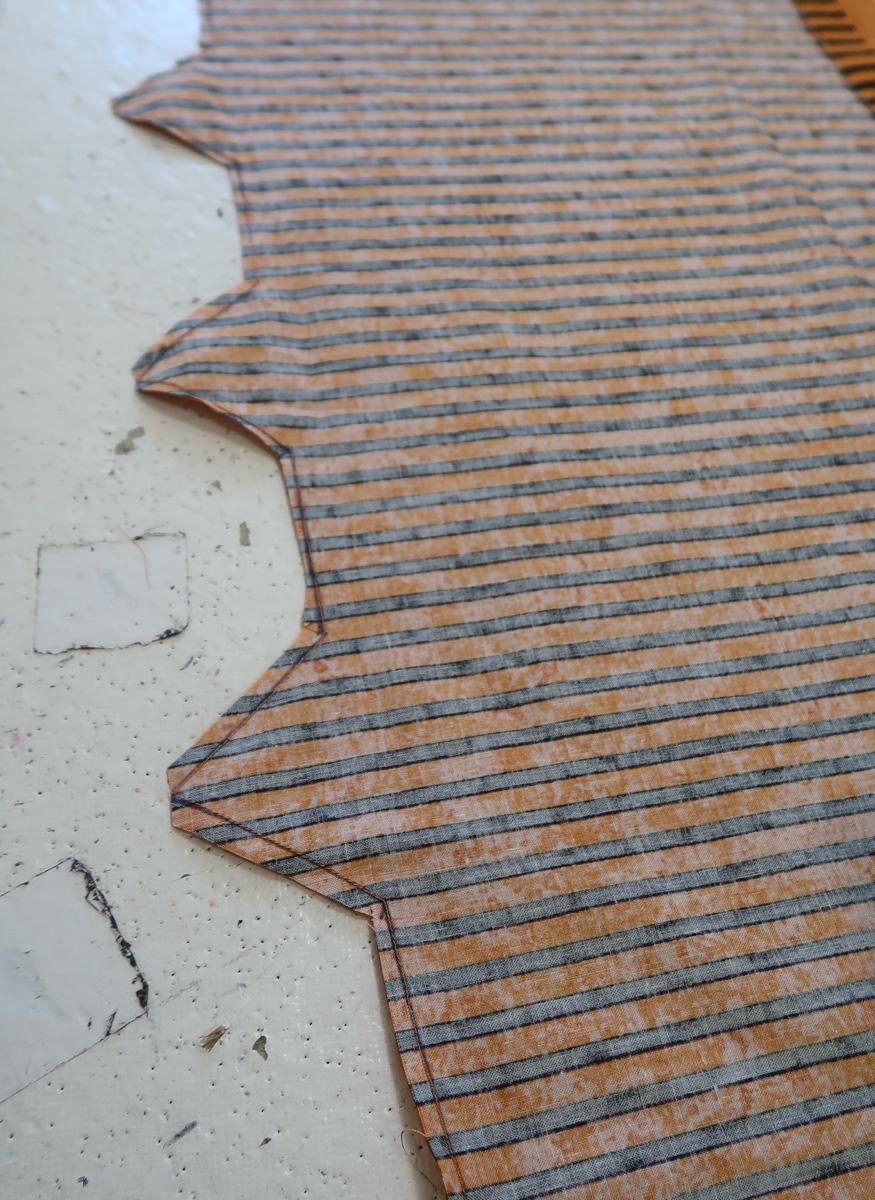
Then the strip was turned right side out, and I used a turning tool to get each point looking sharp.
Here is how it looked from the outside after being ironed.
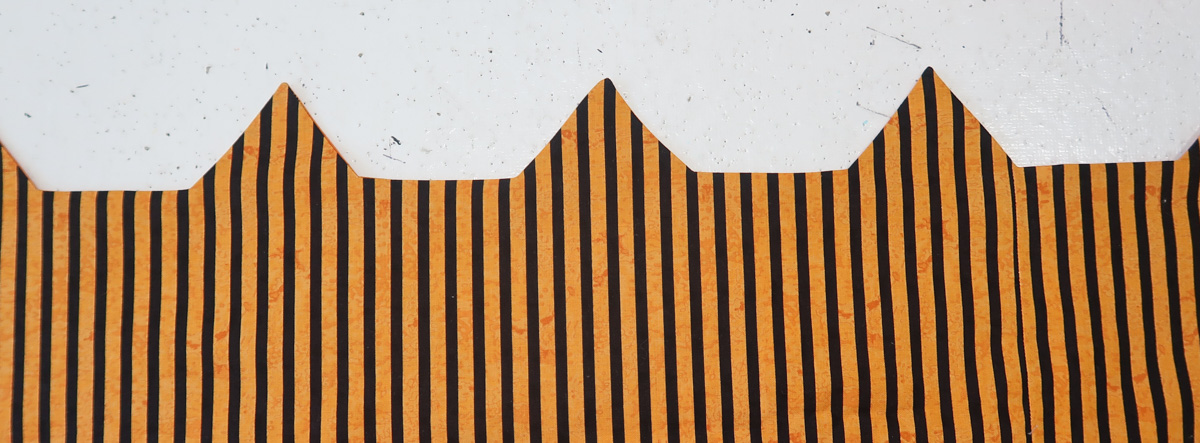
And from the inside!
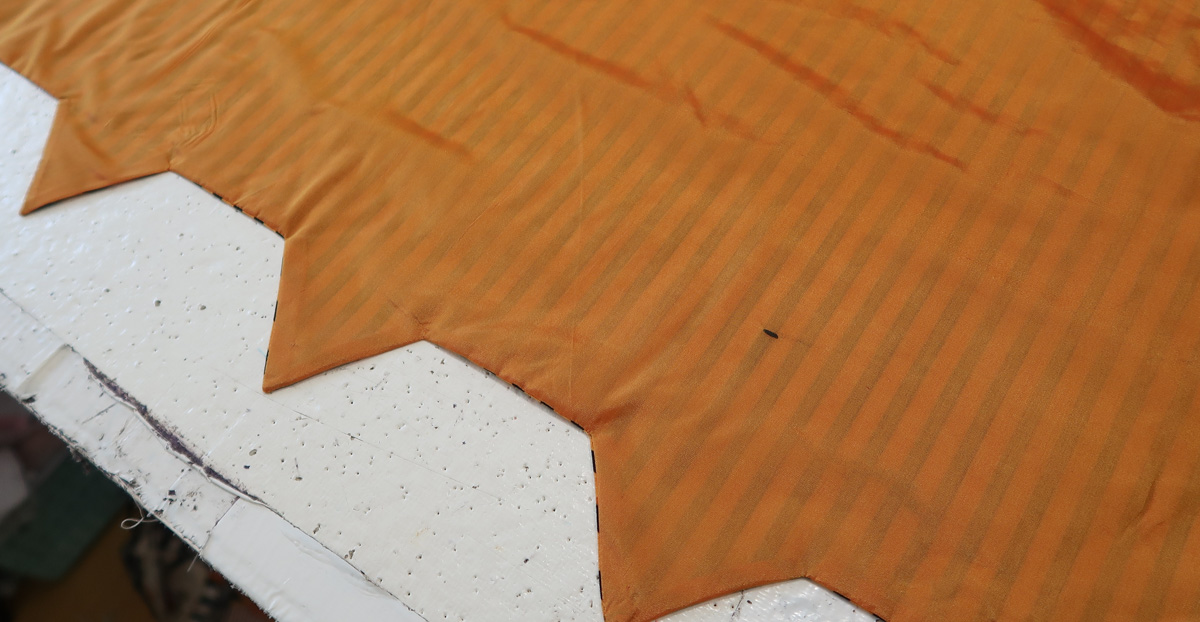
I laid the trim flat, with the right side facing down. I smoothed the lining out, then I turned the top edge of the lining inward, until it sat 1/3″ below the edge of the outer layer of fabric.
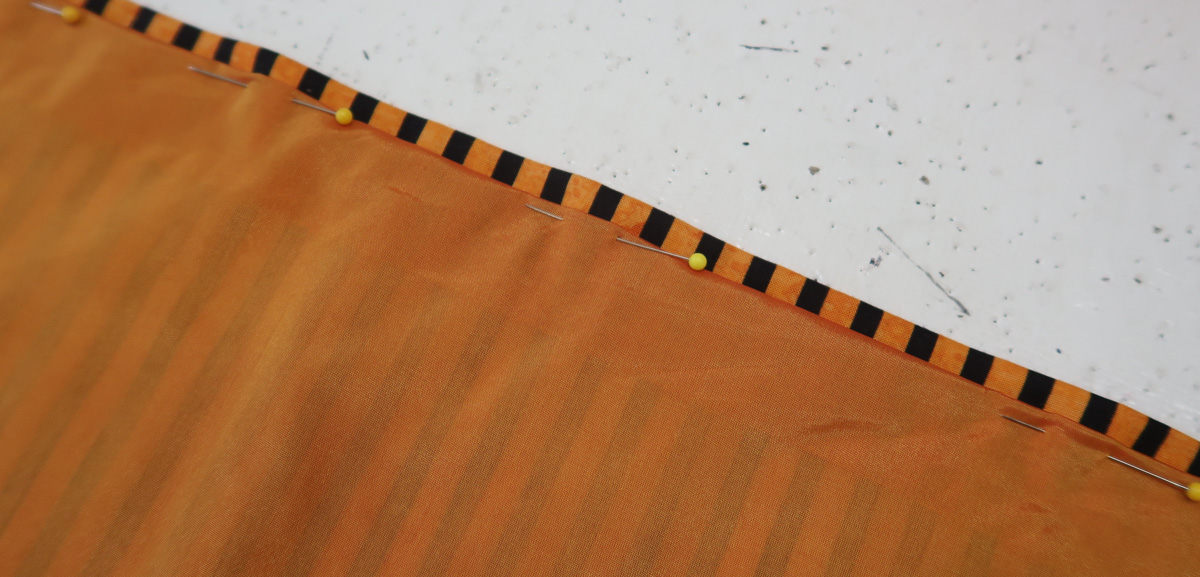
I sewed the lining in place with whip stitches.

And now you might be thinking the trim is done and ready to be sewn onto the skirt. Oh how I wish that was the case. But no, it still needs to be pleated.
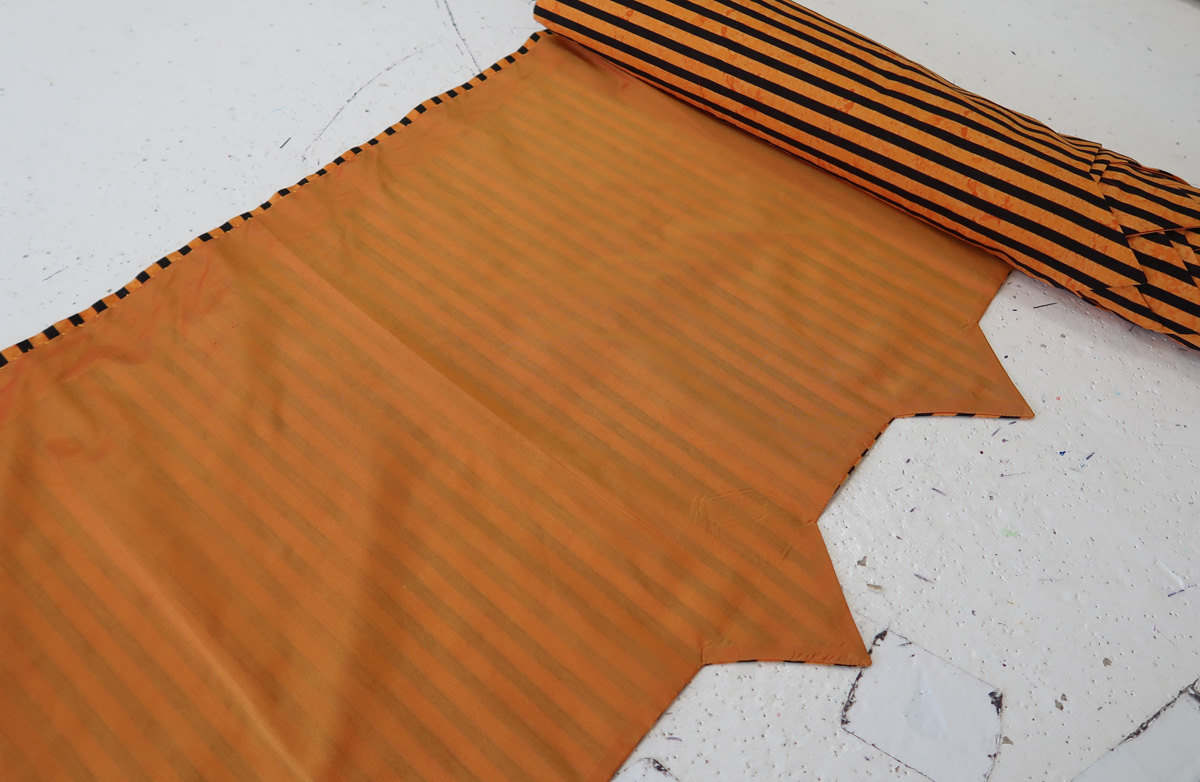
The pleats are 3″ wide box pleats (the width of the pointed portion) and 3/4″ deep. I used the stripes on the fabric as a guide for the pleats, so it was actually pretty speedy to do!

To secure the pleats in place, I stitched a line by machine 1.5″ away from the top edge. Then the pleats were thoroughly ironed before removing the pins.
The pleated trim could now be sewn to the skirt – which I also opted to do by machine. But I covered that stitching with coordinating binding, cut from horizontal strips of the striped fabric. And that was all sewn on by hand.

With the trim on, I began sorting out the back. I actually turned the back edge inward by an inch and whip stitched it down prior to gathering the top edge. So the back edge was “finished” – it was just left completely open.
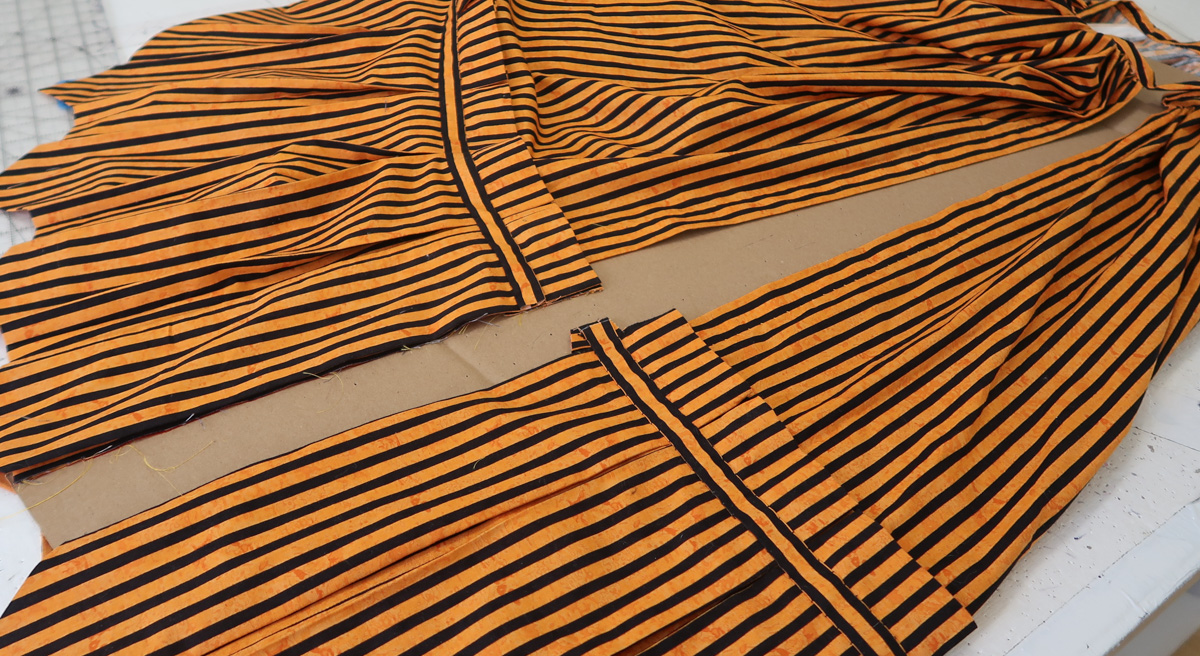
I turned one of the sides inward by an inch, then lapped it over the other side. I did my best to get the points and trim to line up.
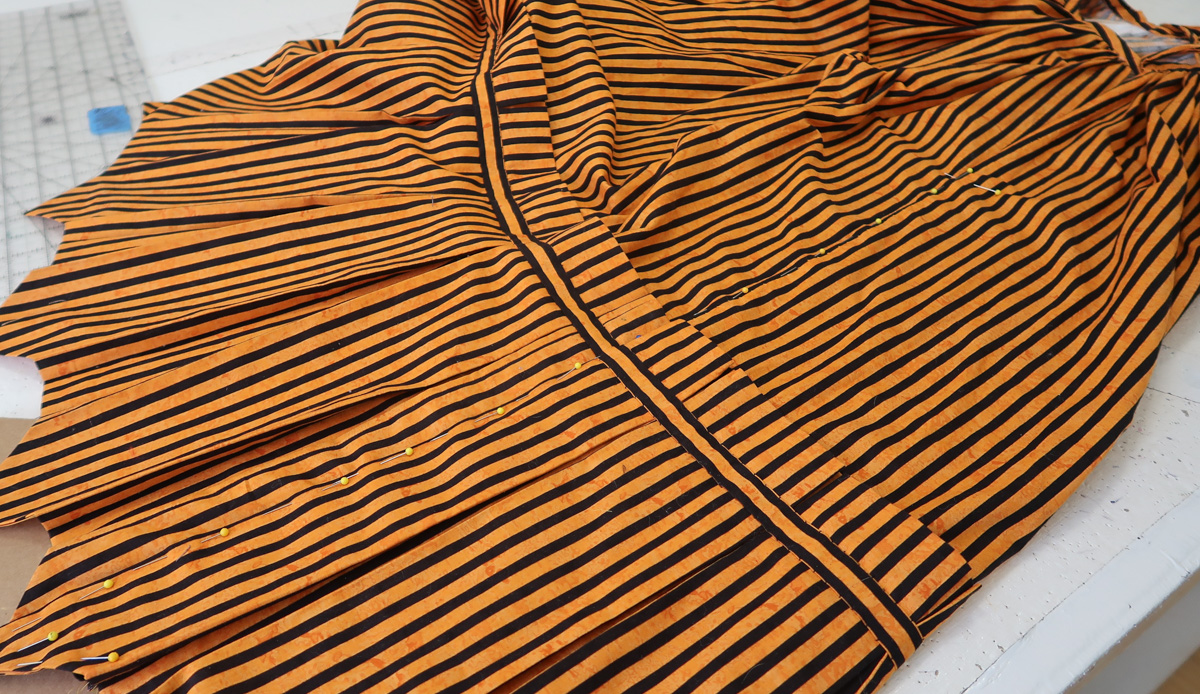
I sewed across this edge by hand using whip stitches. And I left the top 10 or so inches open, allowing me to easily get the skirt on and off.
I also did my best to make the inside look pretty by turning the raw edges inward…I’m not sure how successful this was, but I tried!
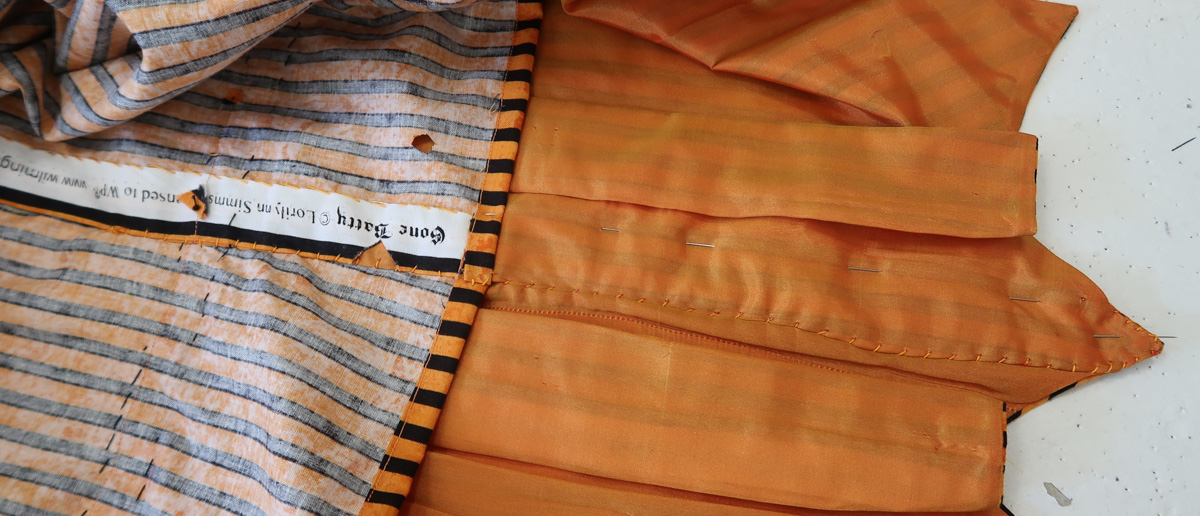
Now the underskirt was done! And it was time to get back to work on the polonaise. However instead of going back to the bodice, I began work on the skirt.
I measured my fabric before cutting the skirt out and realized I didn’t have quite enough for the skirt, trim, and sleeves. At least not if I wanted to make them according to my original plan. But I knew the trim would add some length to the skirt, allowing the skirt panels to be shorter, and leaving me with more material leftover for the sleeves.
So with that in mind, I decided to make the trim first, and figure out the skirt panel length later on. The trim was made using the exact same method show above – just with narrower strips, and a different fabric.
Here is my handy template.
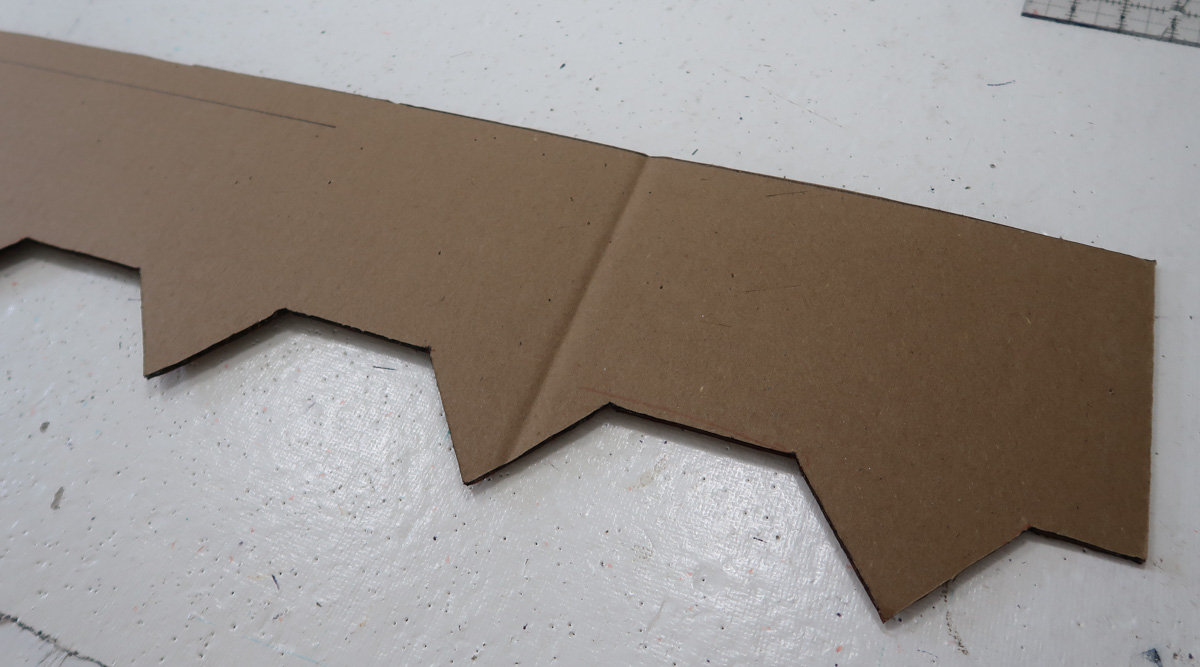
And the marked strip pinned to the lining.
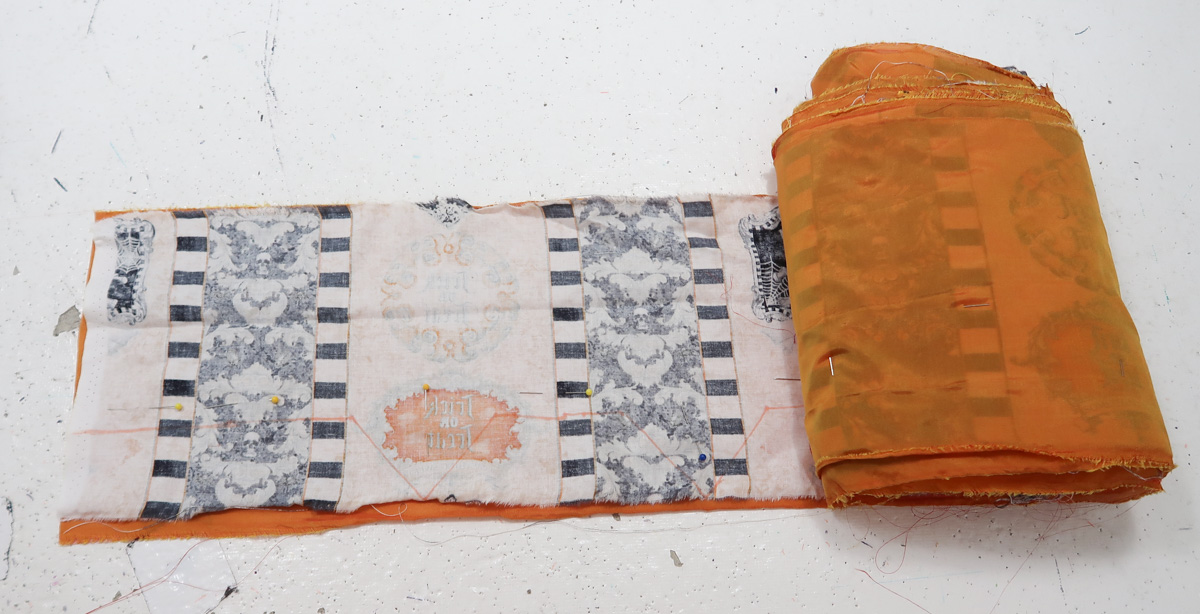
Here it is after being sewn.
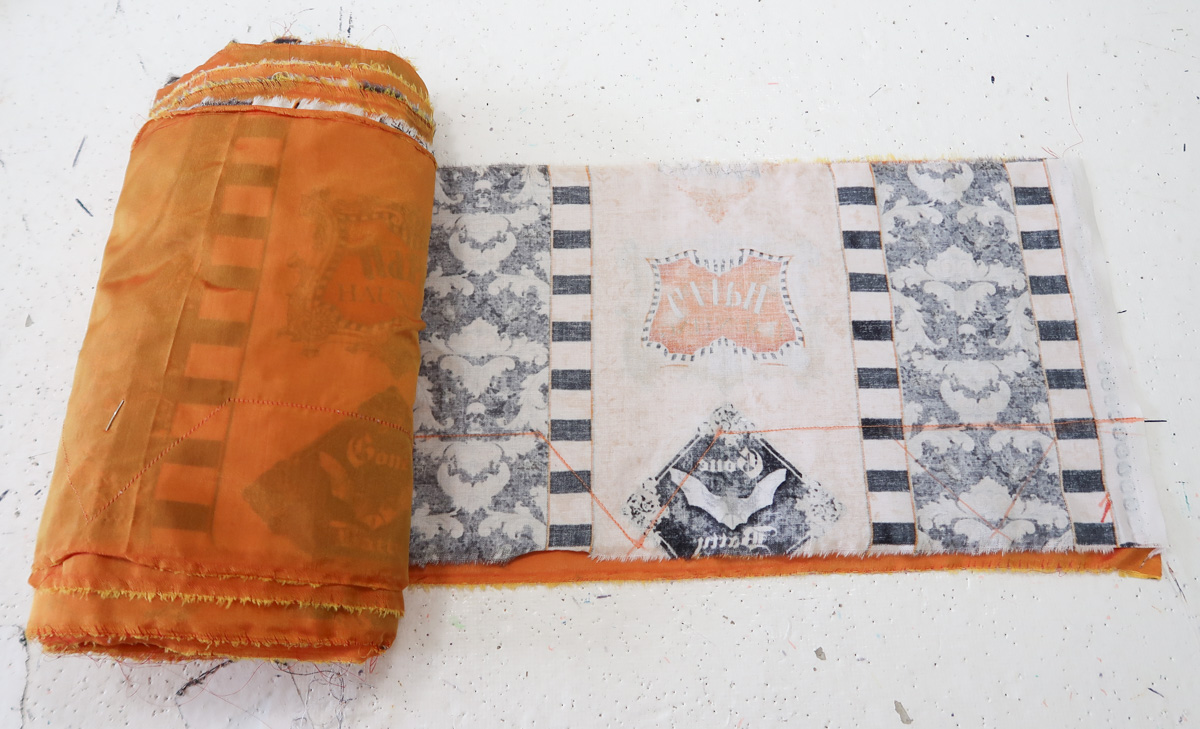
Then it was trimmed…
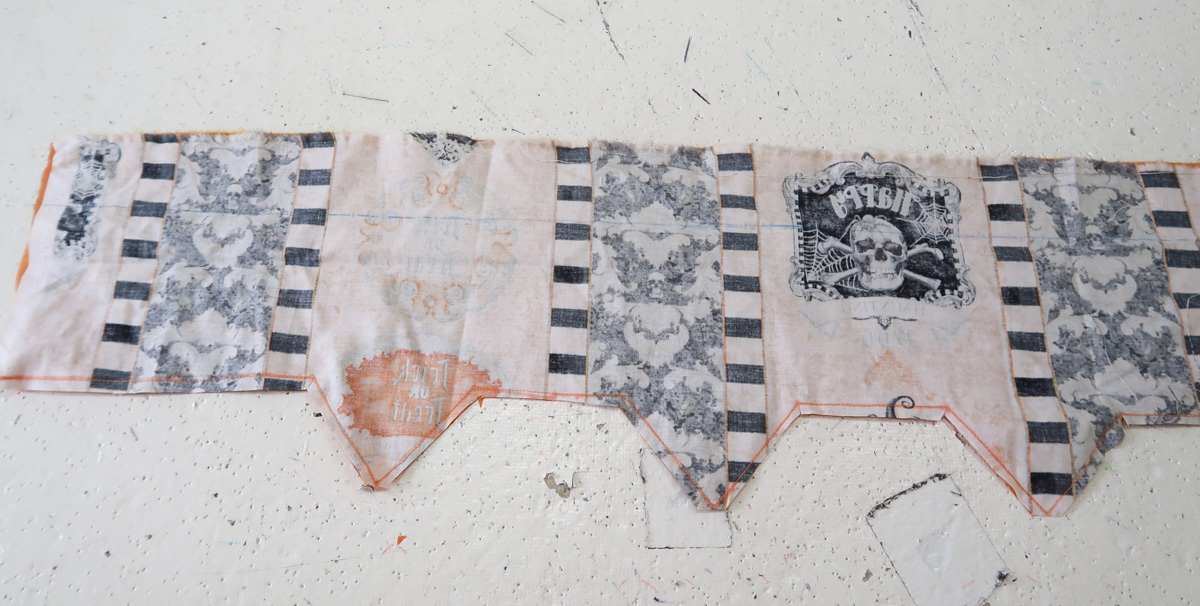
Here it is after being turned right side out.

And after ironing.
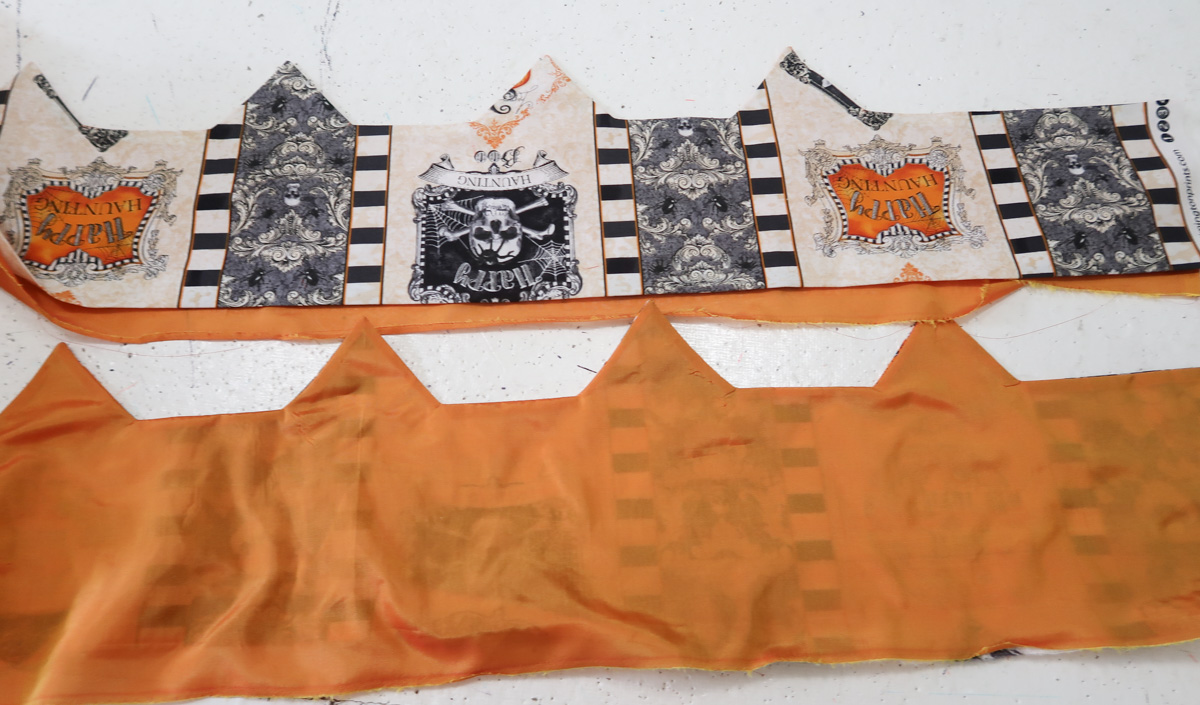
To finish it off, I folded the top edges inward and pinned them together. Then stitched them together by hand.

Like with the longer trim, the strip was pleated using the stripes as a guide. Then I sewed 1.5″ away from the edge by machine and gave it a thorough ironing.

But I couldn’t sew it on, because I didn’t have anything to sew it on to.
I ended up cutting 12″ off my remaining fabric and setting it aside for the sleeves. Then I divided the remaining length of fabric into three equal pieces, and hoped like hell that my skirt would be long enough.
The three equal lengths of material were stitched together, selvedge to selvedge.
Now, because this is a robe a la polonaise, the skirt will be bustled in the back. Which sometimes reveals the under side of the fabric. This isn’t a big deal with woven prints, since the print is usually identical on both sides of the fabric. But with stamped prints (aka quilting cotton – which is what I’m using) that are printed onto the fabric, one side tends to have much lower saturation and can look pretty ugly.
So I decided to line the hem with 15″ wide strips of polyester tissue taffeta. This is also what I was using to line the trim.
The taffeta was sewn on with a quarter inch seam allowance – leaving as much length to my skirt as possible. Then it was turned inward and pinned down.
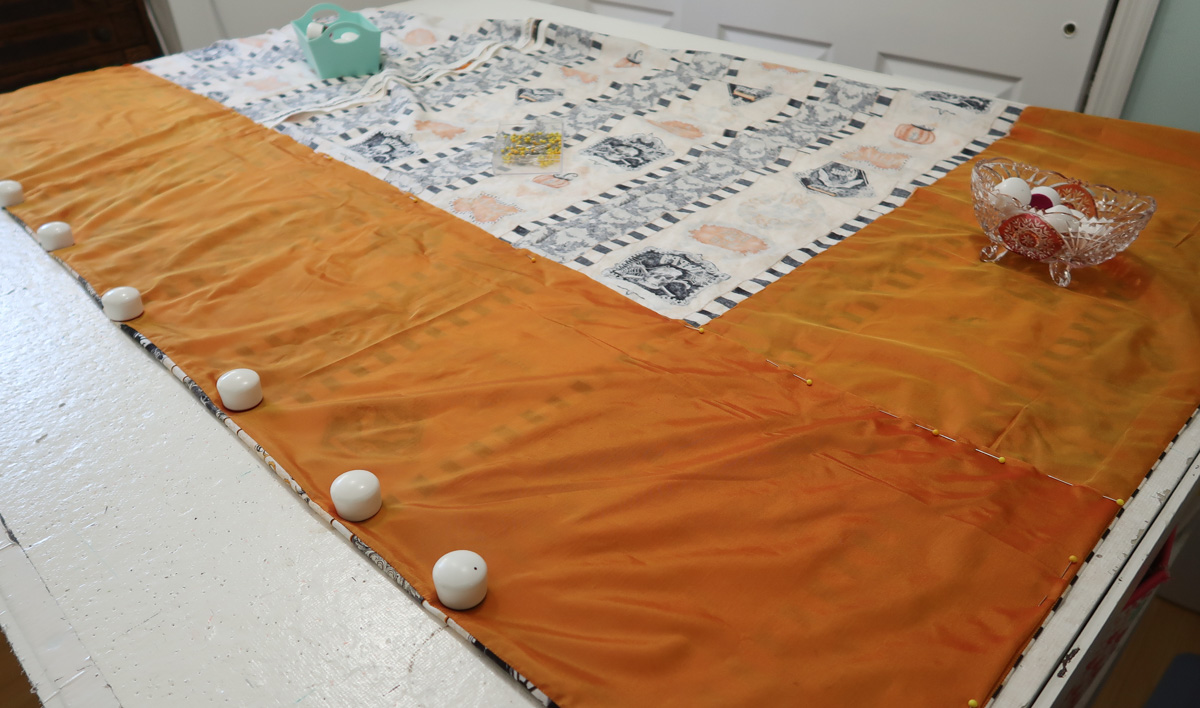
I folded the top edge of the taffeta inward by about an inch. Then whip stitched the folded edge in place by hand.
Annoyingly, my tissue taffeta was one inch narrower than the quilting cotton. Which meant three strips sewn across the bottom edge came up two inches short. Requiring me to cut another strip. Luckily I had lots left!
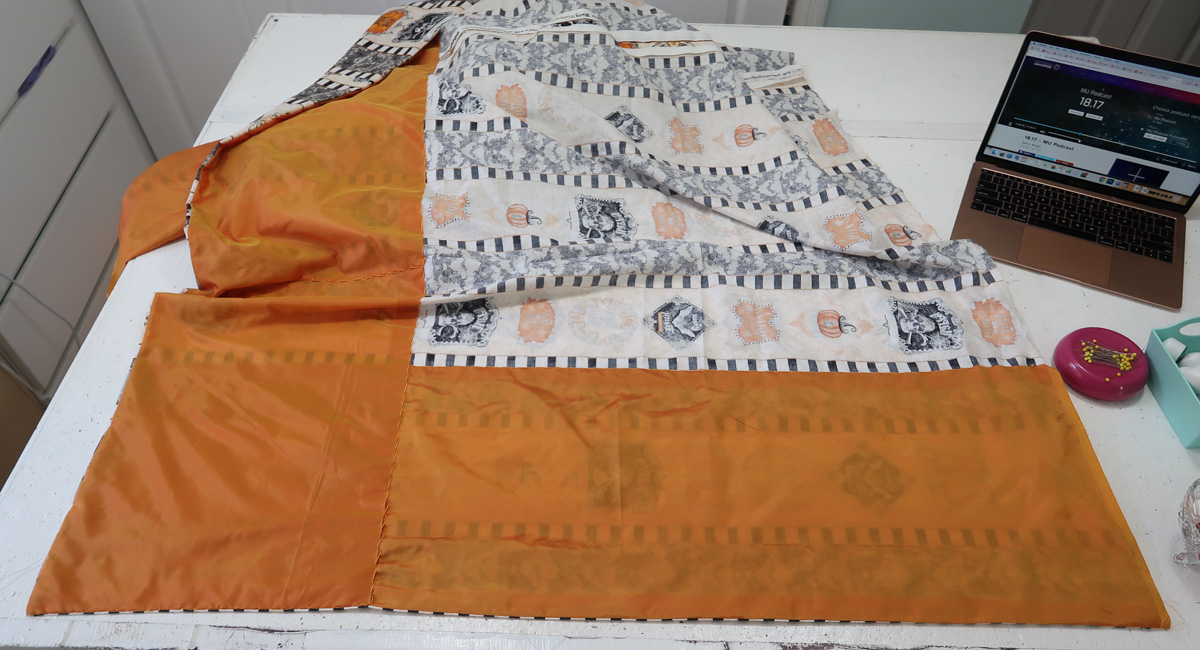
Now the trim was sewn on by machine. And once again, I planned on covering the machine stitching with binding. The binding is made from horizontal strips of the orange and black striped fabric.
The strips were sewn together, then the edges were ironed inward.
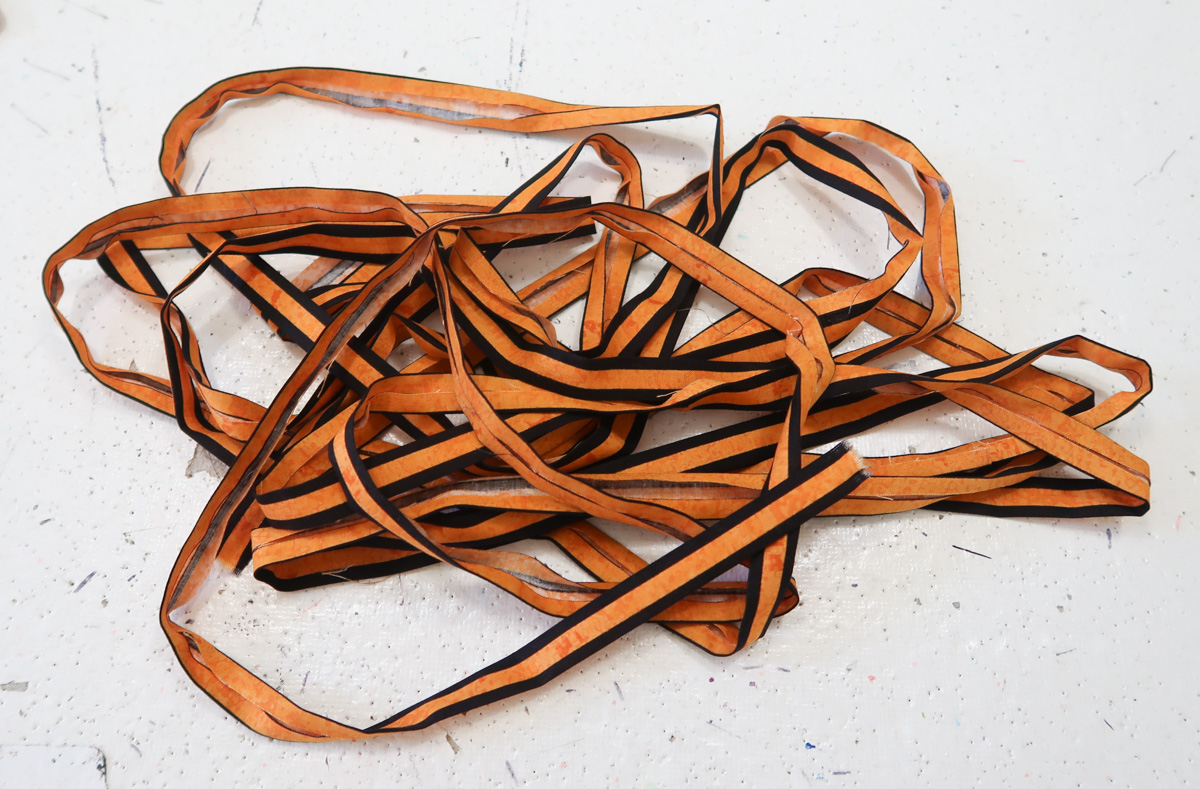
The strip is cut on the straight grain, so easing it around corners takes some care…and a lot of pins!
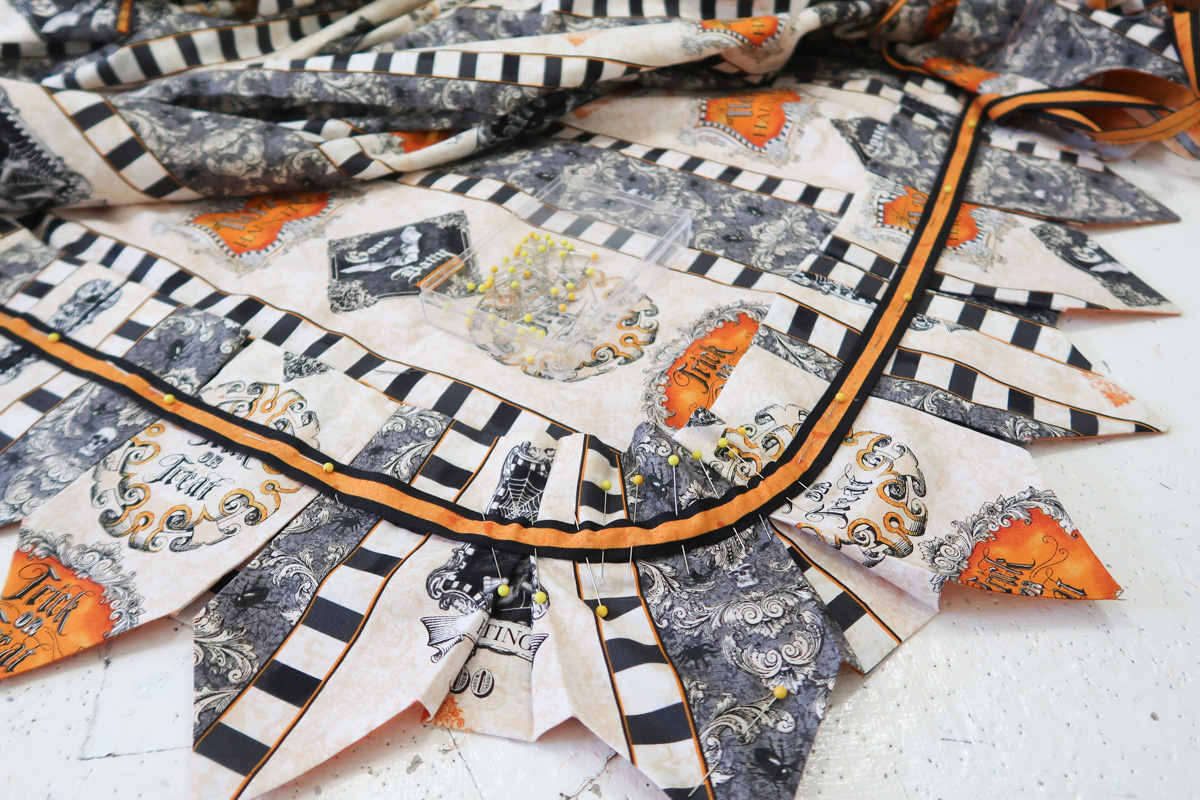
And here it is after being hand stitched in place!
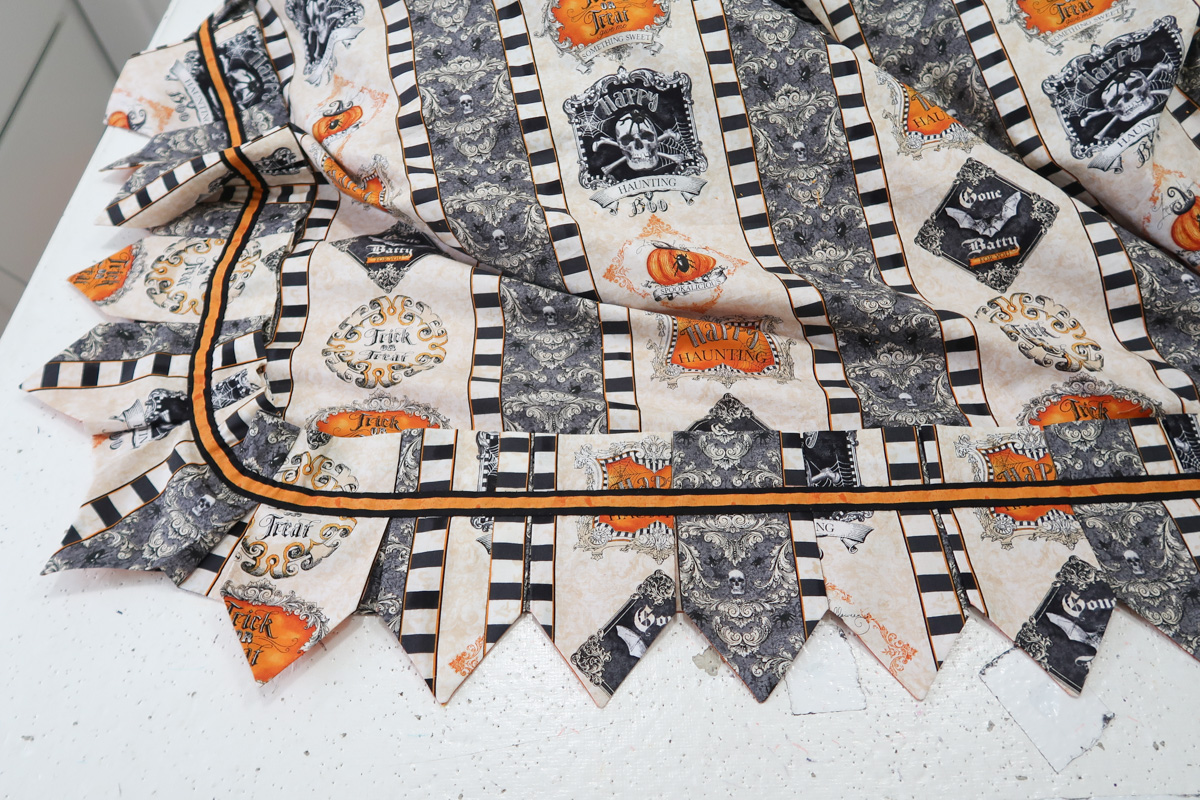
I measured across the bottom edge of my bodice, then gathered the top edge of the skirt to that length.

The skirt was whip stitched to the bodice.
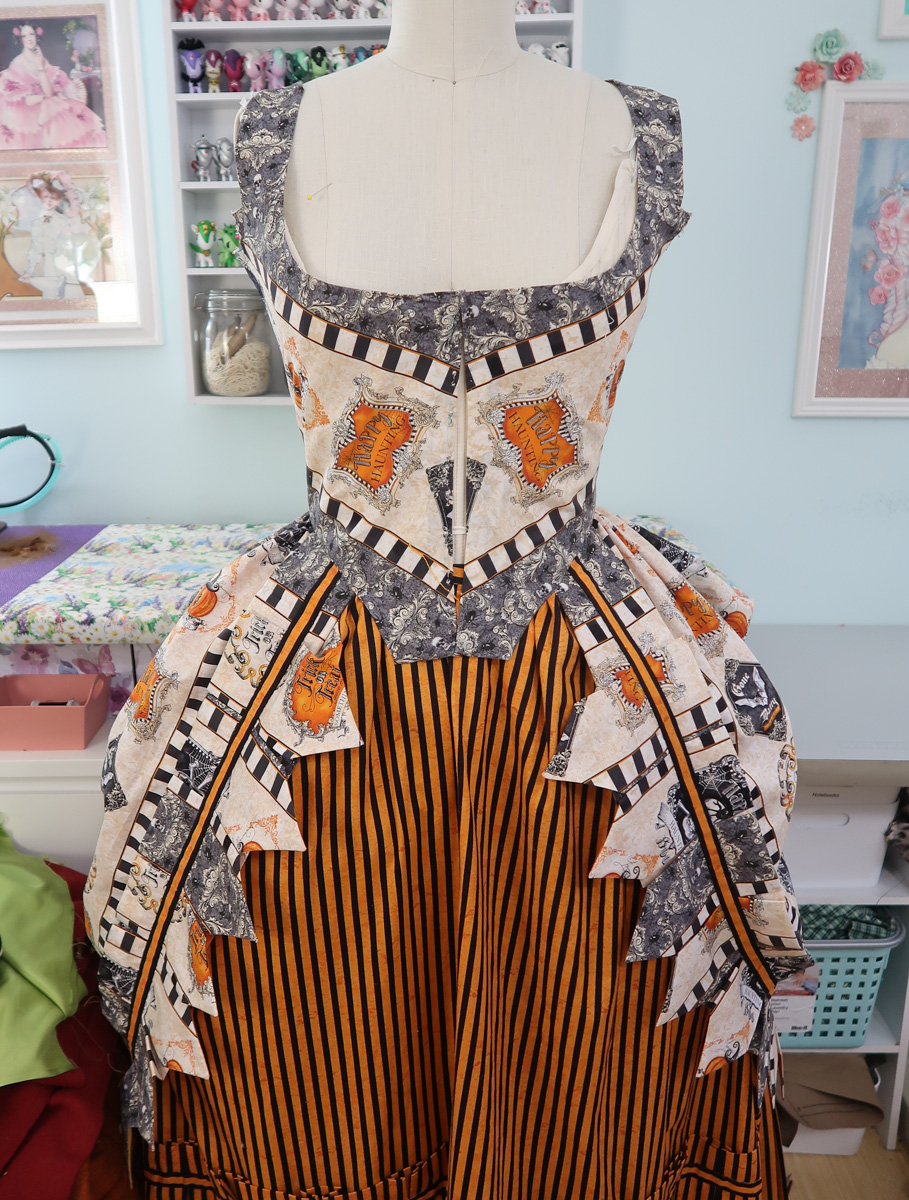
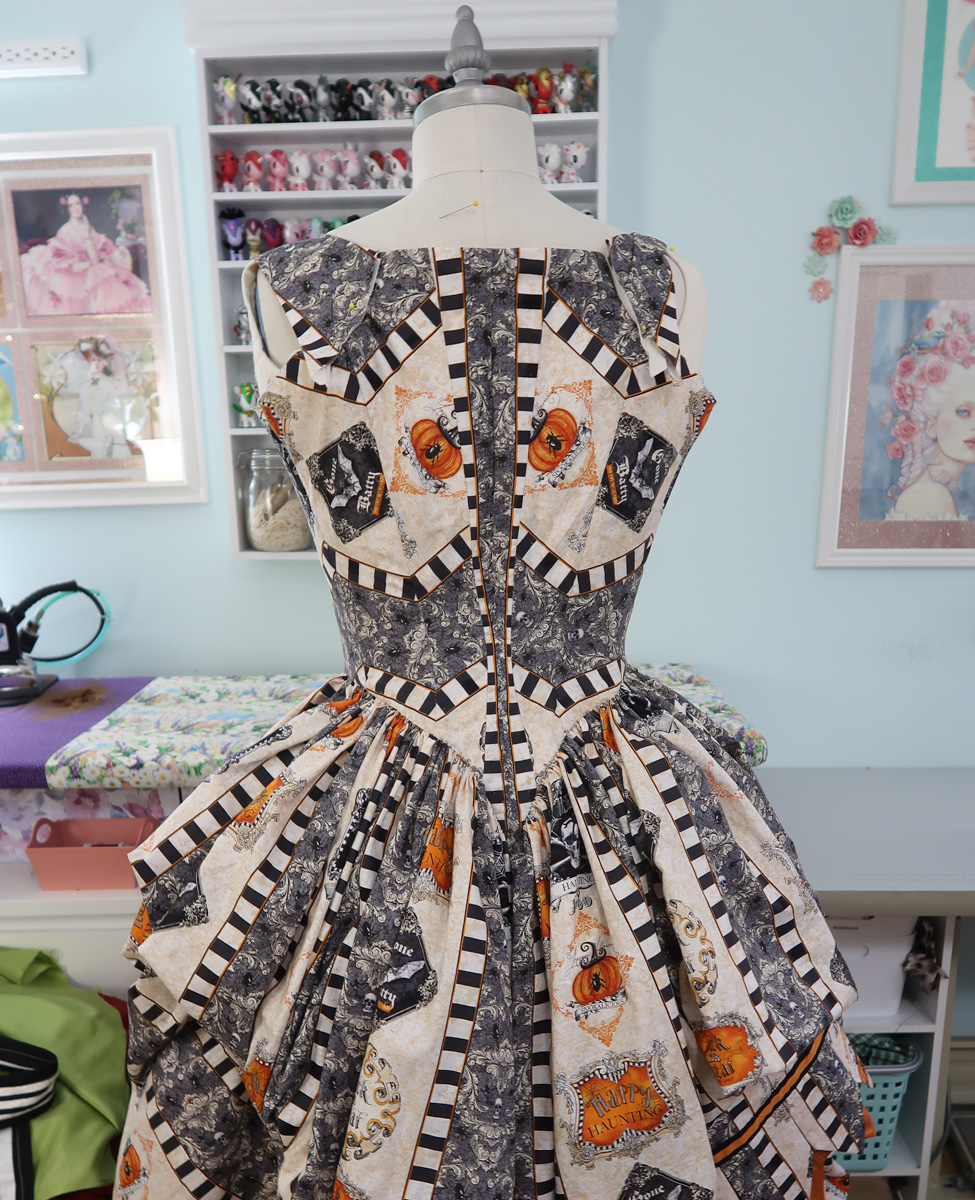
Now for the sleeves! I kind of cheated and used a sleeve pattern from a robe a la francaise that I made earlier in the year. Even though I’d used the pattern before, I still made a mockup and altered the fit and shape to be better suited to this design.
And then I used that pattern as the basis for a lantern sleeve pattern, which is about four inches longer than the original pattern. This will be used to make a set of under sleeves from a lightweight silk chiffon.
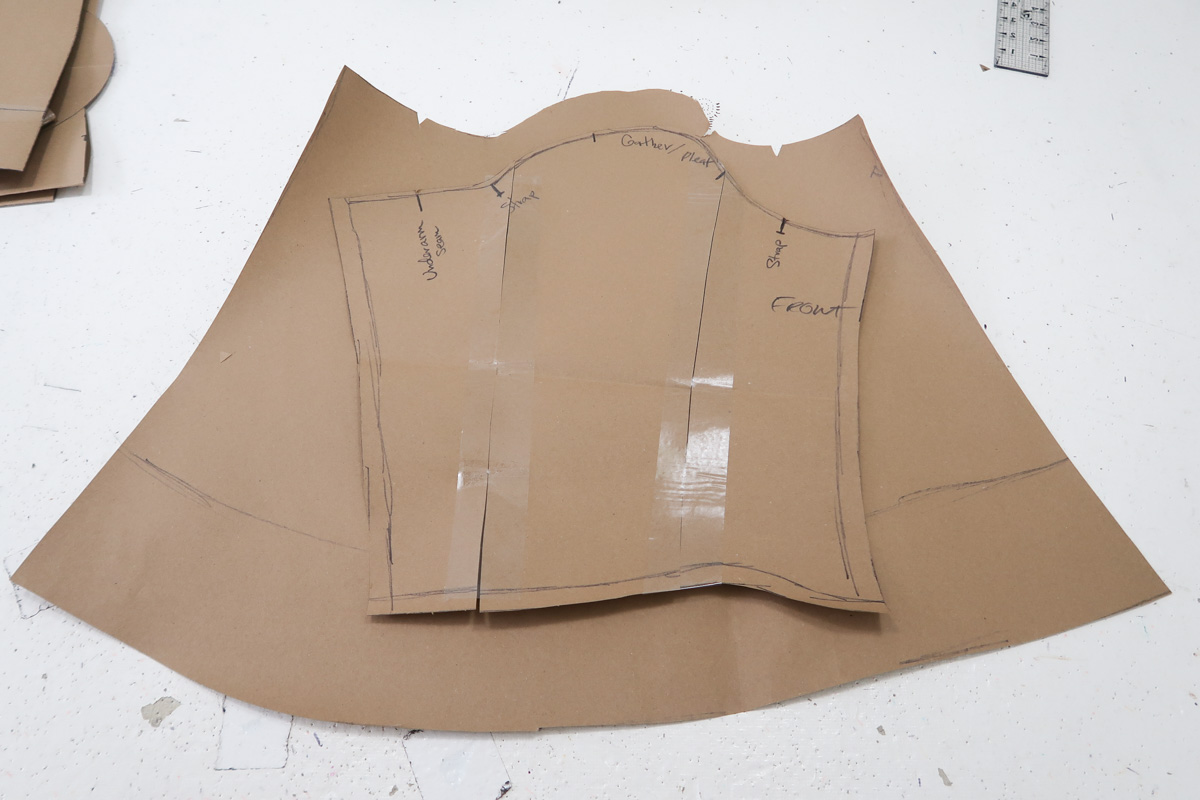
It turns out that 12″ piece of fabric I set aside earlier was way too short for the sleeves I ended up drafting. Luckily I had some scraps leftover from cutting the bodice that I could put to use. I ended up adding a horizontal band to the bottom of the sleeves, which gave me the length I needed and creates a really cool windowpane effect within the pattern.

The sleeves were sewn with 1/2″ seam allowances and fully lined.
Then the bottom half was stitched to the underside of the bodice armscye. The top half of the sleeve was set the 18th century way, by being pinned between the strap lining and outer layer of fabric. This allows you to adjust the volume of the sleeve head and get a customized fit.

Here is what it looked like from the inside after the sleeves were sewn on.
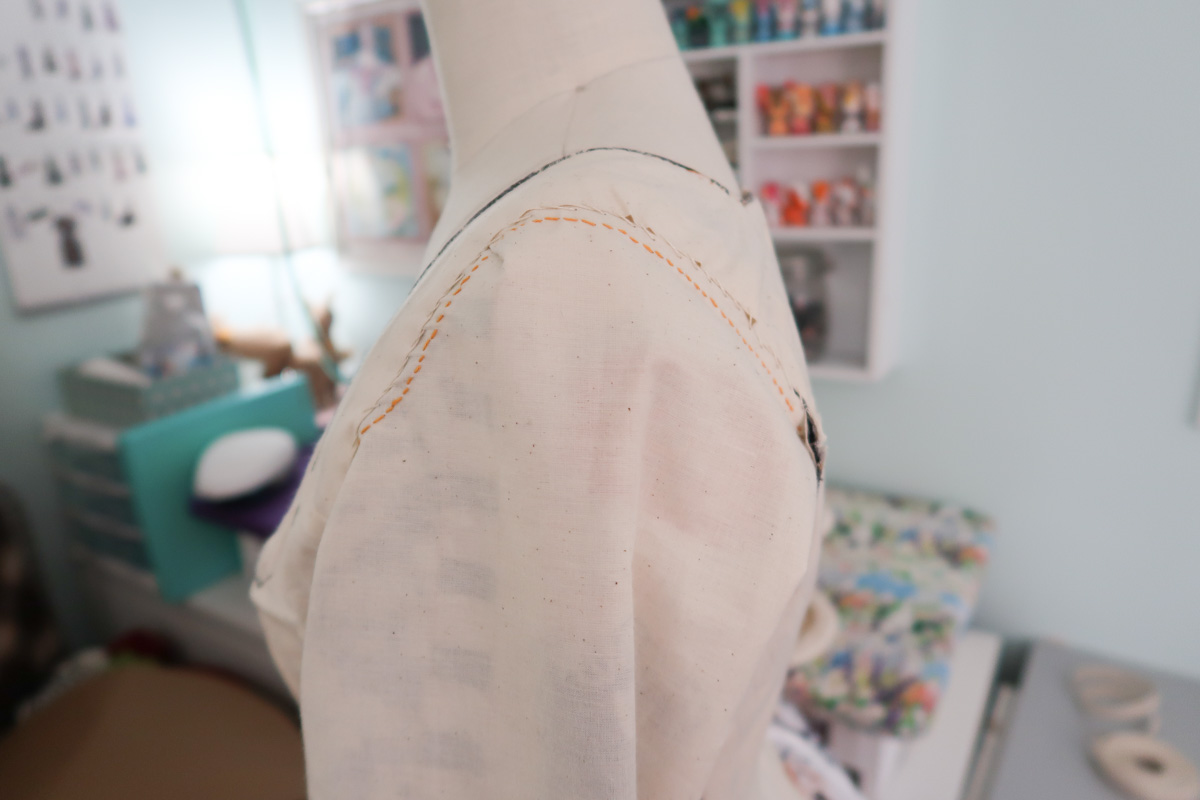

Now it was time to add the under sleeves. These were originally supposed to be part of a decorative chemise worn beneath the dress. But I didn’t have enough fabric to make a chemise, so I decided to make undersleeves that could be removed, and a matching fichu to trim the neckline.
I showed the pattern for these above. The bottom edge was gathered to 12″, then linen ribbon was stitched to the underside. I sewed the side seam as a french seam, and sewed cotton binding overtop of the linen ribbon, sandwiching the raw edge of the chiffon in between and out of sight!
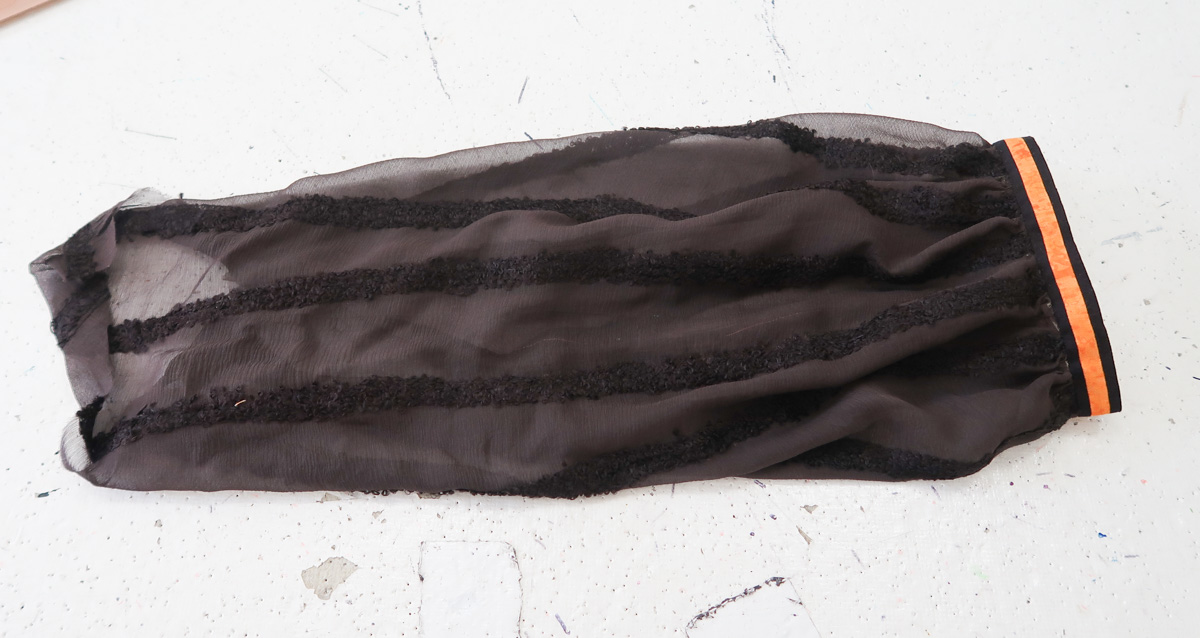
I folded the top edge inward, then whip stitched it to the lining around the armscye of the bodice. These aren’t removable in a modern sense – as in they don’t snap or velcro into place. But historically trims were often basted to dresses and removed as fashion evolved or pieces needed to be laundered. So in that sense these are very much able to be removed if I want to style the dress differently in the future.
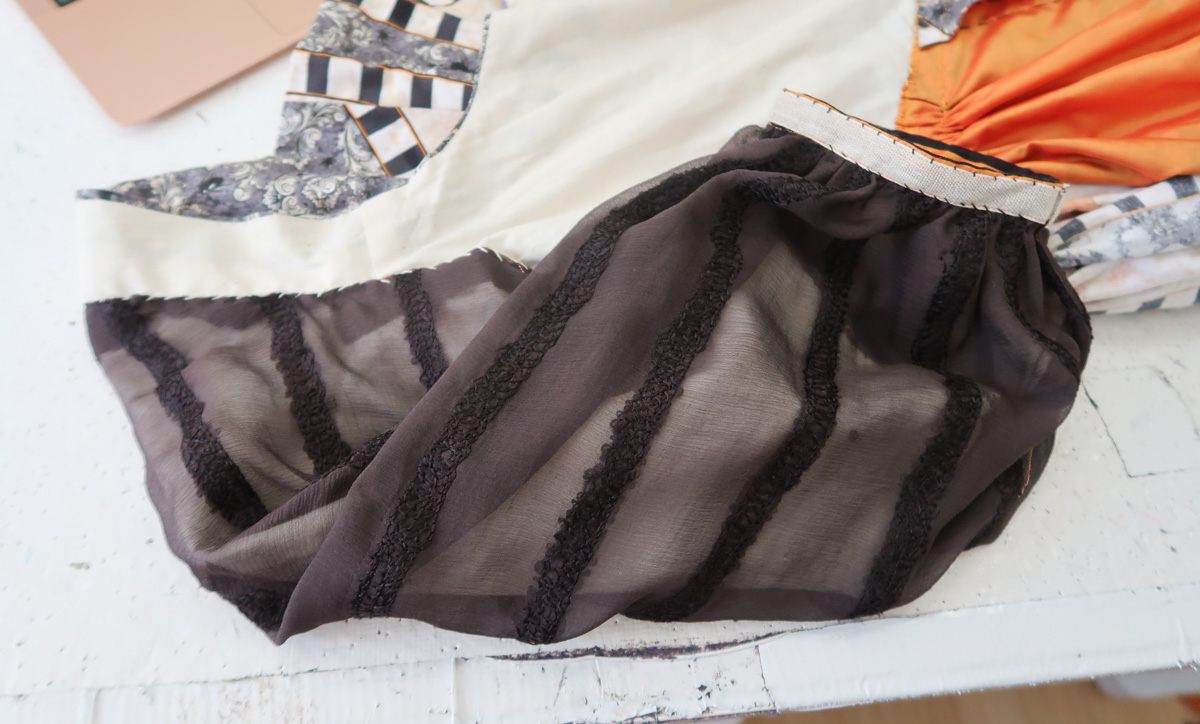
The last step was sewing the ties in place. These are what change the shape, and style of the dress and turn it into a robe a la polonaise.
There are ties placed about 30″ from the front of the skirt, and 15″ away from the hem. And those tie-to-ties sewn to the waist of the bodice, at the base of each side seam.

Here is what the finished interior of the bodice looks like – I’m soo proud of the construction on this one, and all the finishing work done by hand. Even though it’s a quirky fabric I think the quality of work (and the silhouette, obviously) help give it that historic flare.
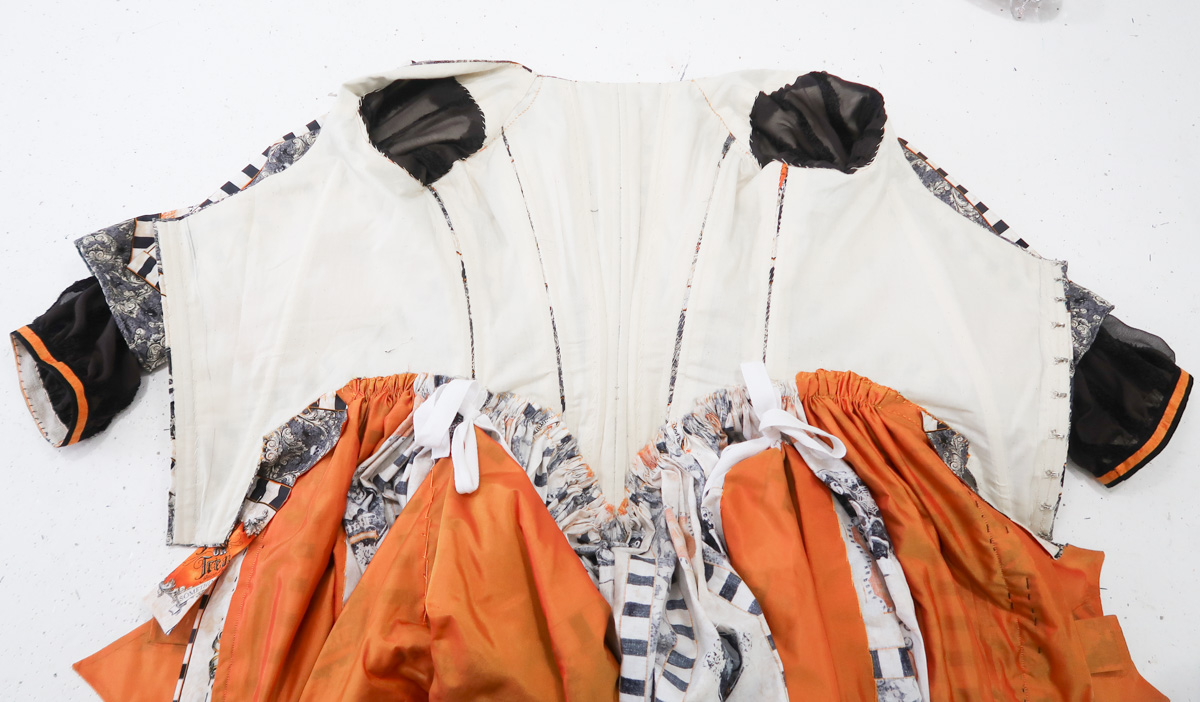
I also love the lining. Lining fabrics are so cheap in the garment district, I really should stock up and line the skirts of more of my projects. That way if the hem flares up at any point, the interior still looks very tidy.
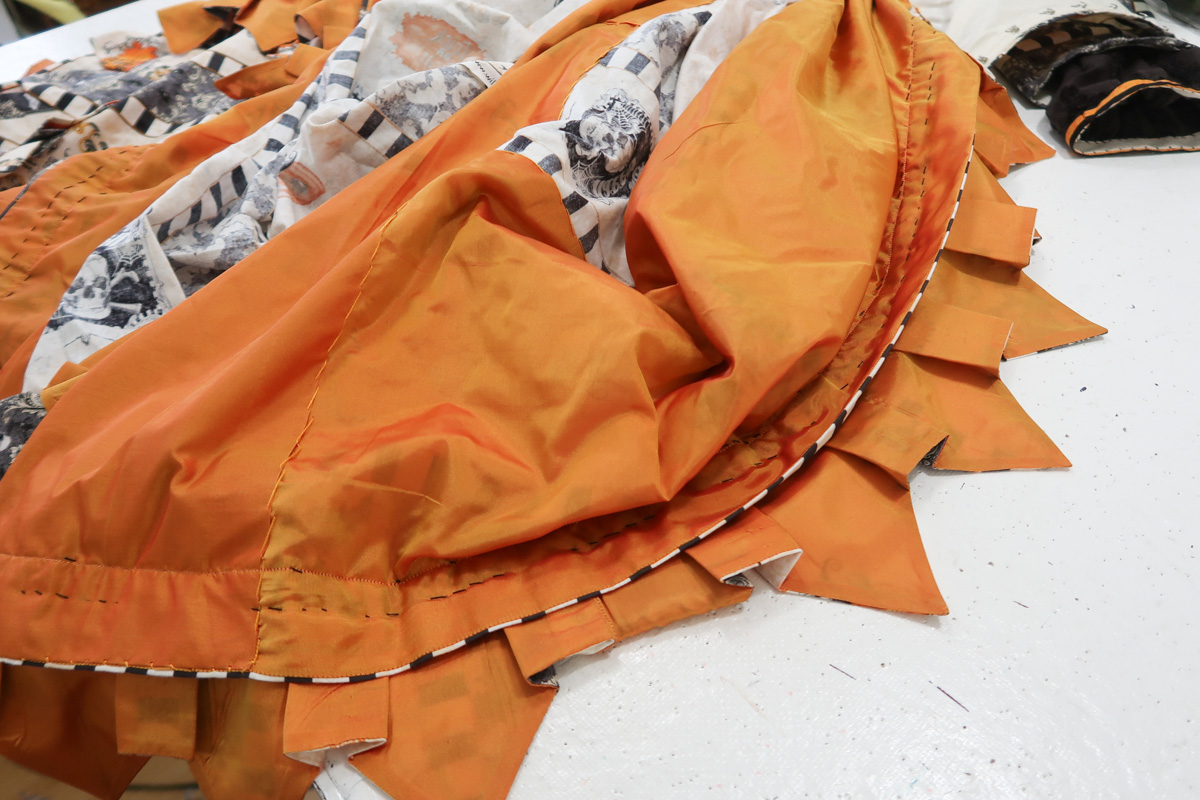
And that finishes off this dress! As I said, I’m really proud of the quality of work on this one. And I think it’s quite nice visually too. It also fits better than any previous pumpkin project (especially last years, oof).
Unfortunately as soon as I put on the entire ensemble, the trim on the underskirt started sagging. It didn’t do this AT ALL while it was on my dress form, prior to photographing it. So I’m not sure if it was the wind, or the movement from wearing it…but it looks like this now, which is a bit of a bummer.

Though it kind of looks intentional? So this is probably the only time I’ll point it out.


The back is by far my favorite part. It has so much volume and texture, I love it.
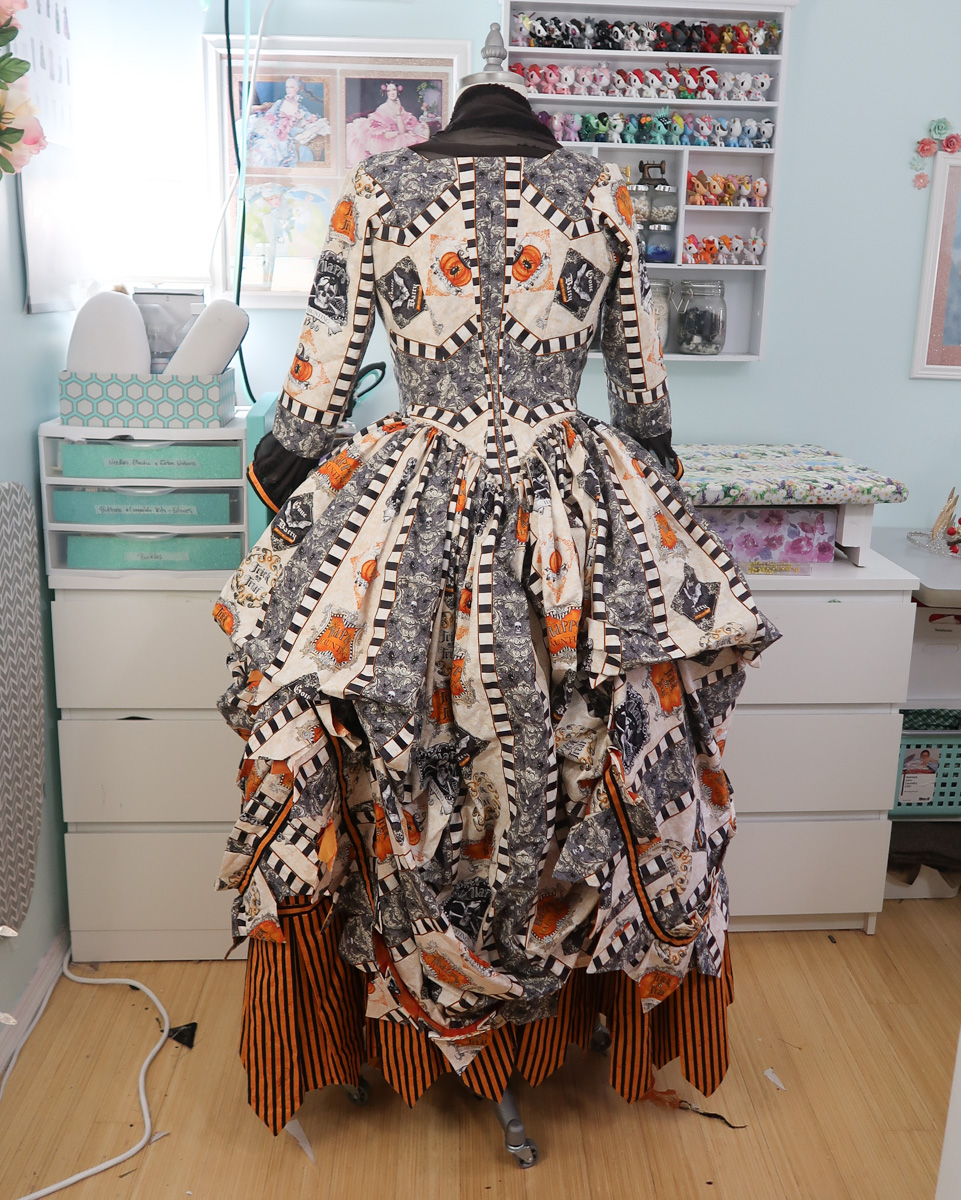
Though my favorite part of this project isn’t even the dress. It’s the hat. It’s such a great hat. It was also completed an hour before photographing this ensemble, so I think the adrenaline of trying to get it done on time has endeared me to it further.
As I said, this was inspired by a hat paired with an extant garment. Specifically a style of hat called Lunardi. Here are some examples of Lunardi (or simply, balloon hats).
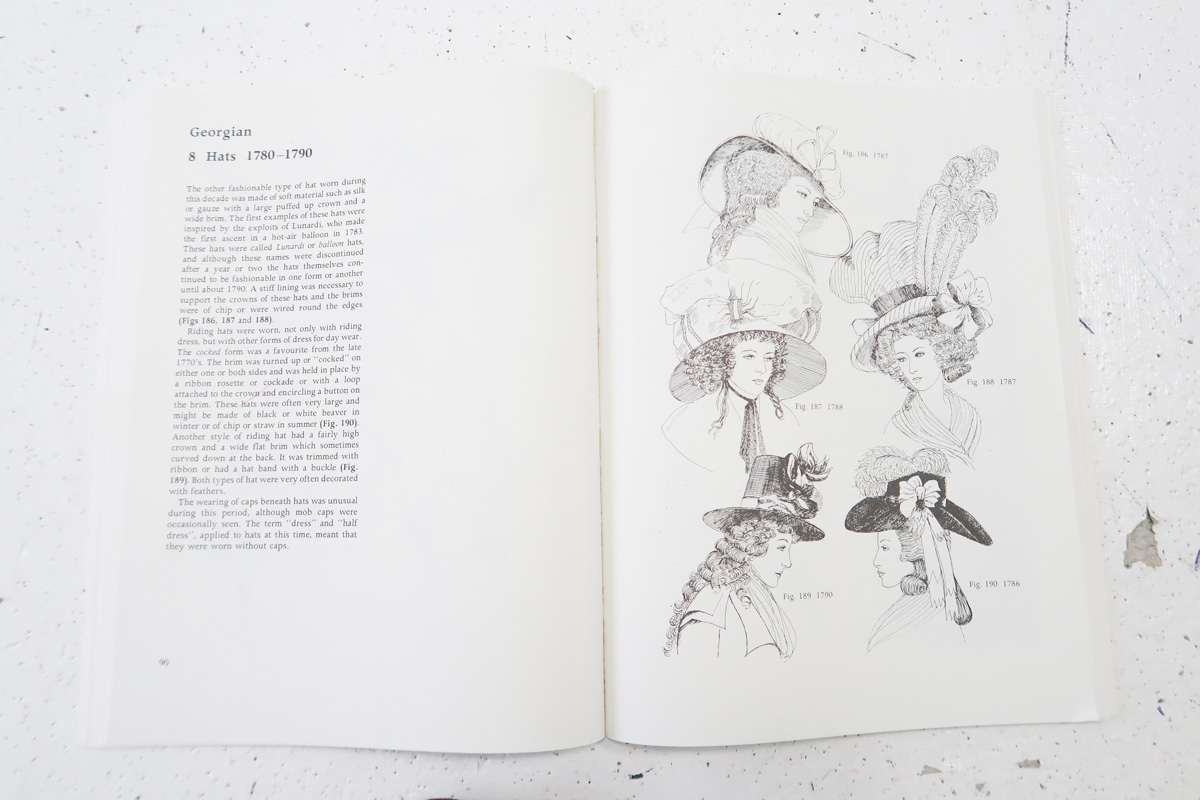
My hat started, as most hats do, as a pattern.
The brim is 4″ deep, and almost a full circle with a 26″ inner circumference. The top of the hat is an 8″ circle, and the wall is a 3.5″ x 26″ rectangle. The puffed portion is a 30″ circle gathered down to have a 26″ outer circumference.
You with me?
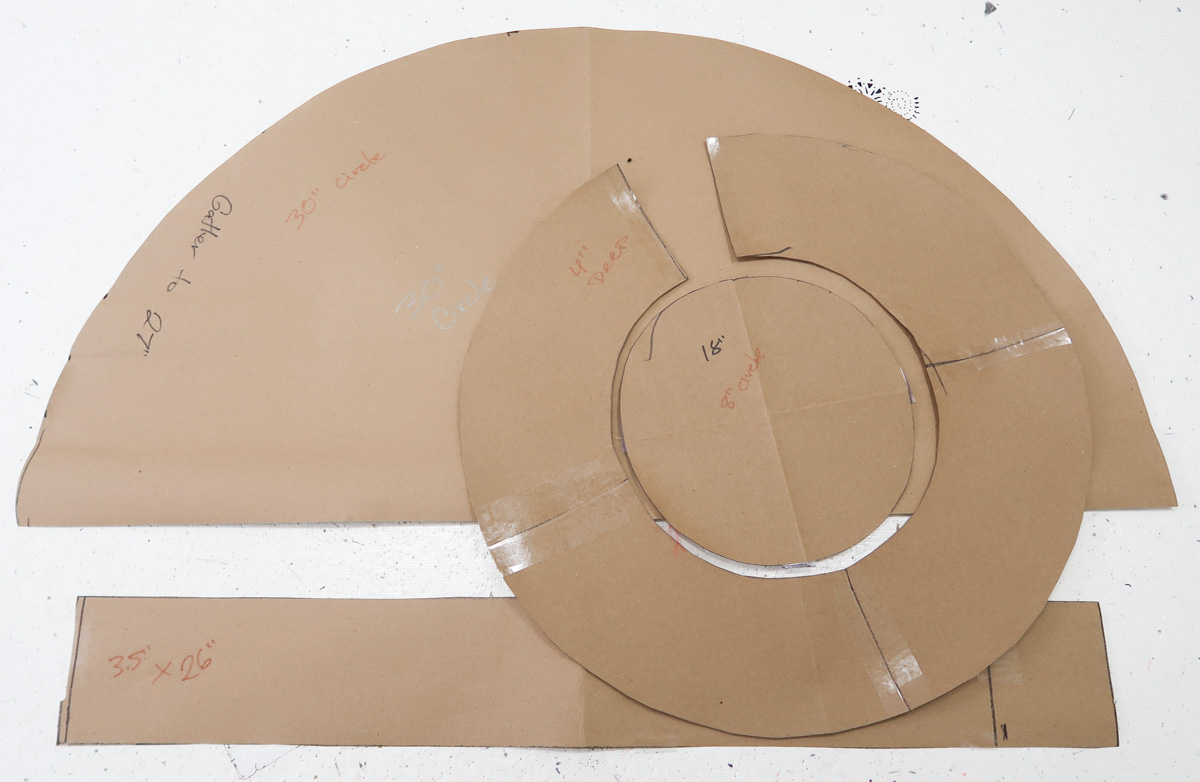
The 30″ circle was cut from orange tissue taffeta (which featured as lining for the dress and underskirt) and flat lined with muslin to add body and opacity.

The other pieces were all cut out of felt weight interfacing – this is the stuff they sell for handbags, so it’s pretty sturdy.
The top of the hat is really just a support structure for puffed portion I’ll add later on. So I didn’t reinforce these pieces with wire, I just covered them with tissue taffeta.
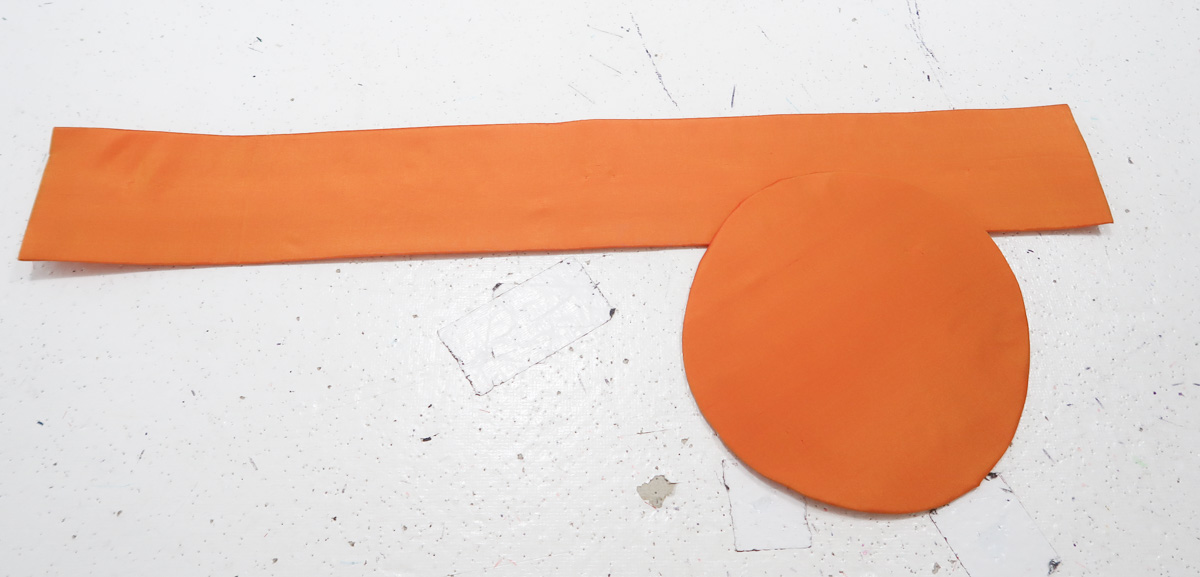
The side covered with taffeta is actually going to be the inside of the hat. The outside will be covered later on.
With that in mind, the pieces were whip stitches together. This is the outside of the hat.
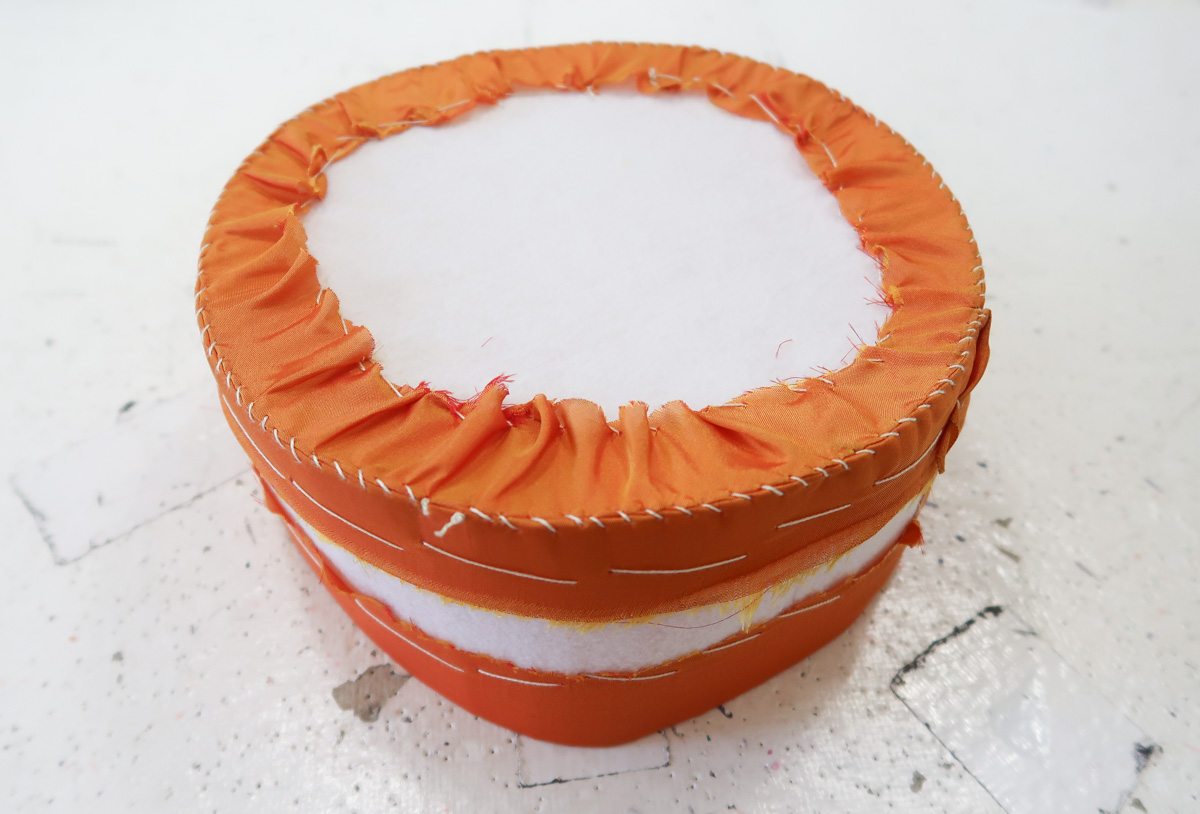
And the inside.
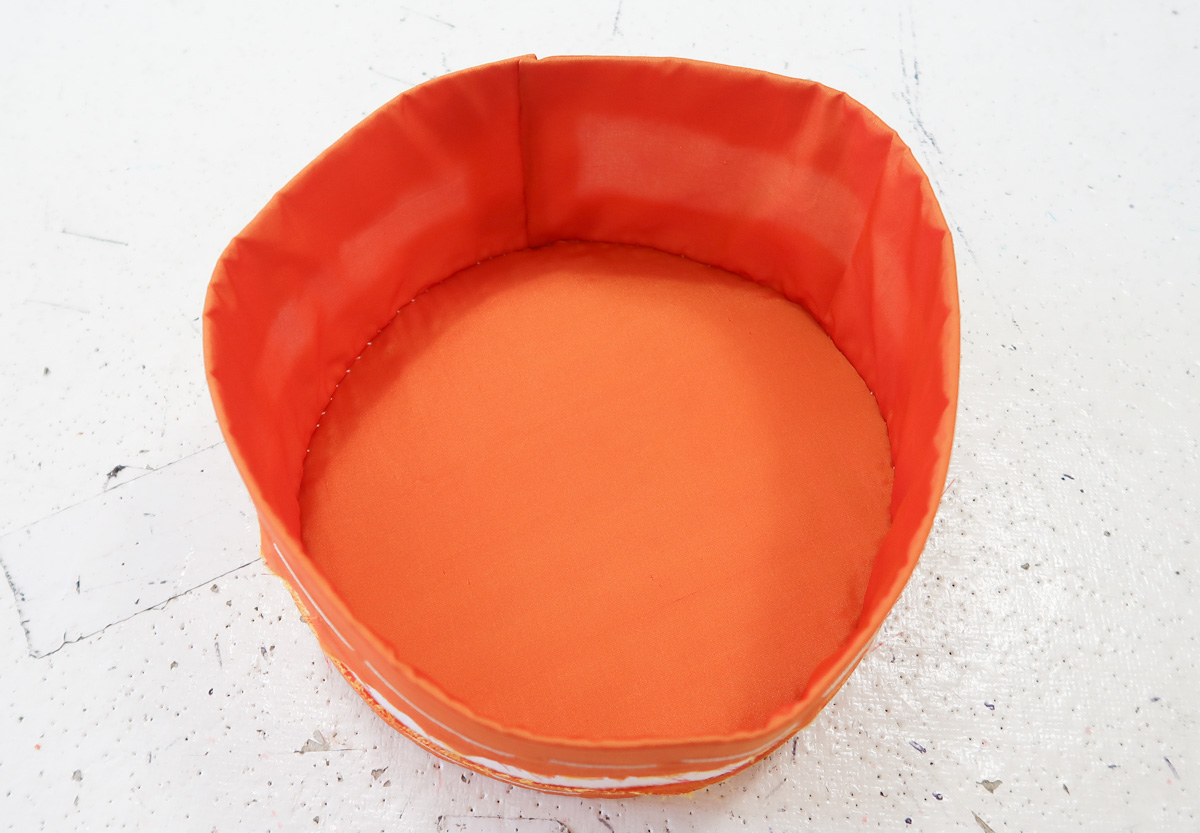
The brim however, supports the whole hat. And needs to be reinforced in order for it to keep its shape. So I used a zig zag stitch on my machine to secure three bands of wire into the hat. I made sure the ends of the wire overlapped by a few inches so there wouldn’t be weak points.
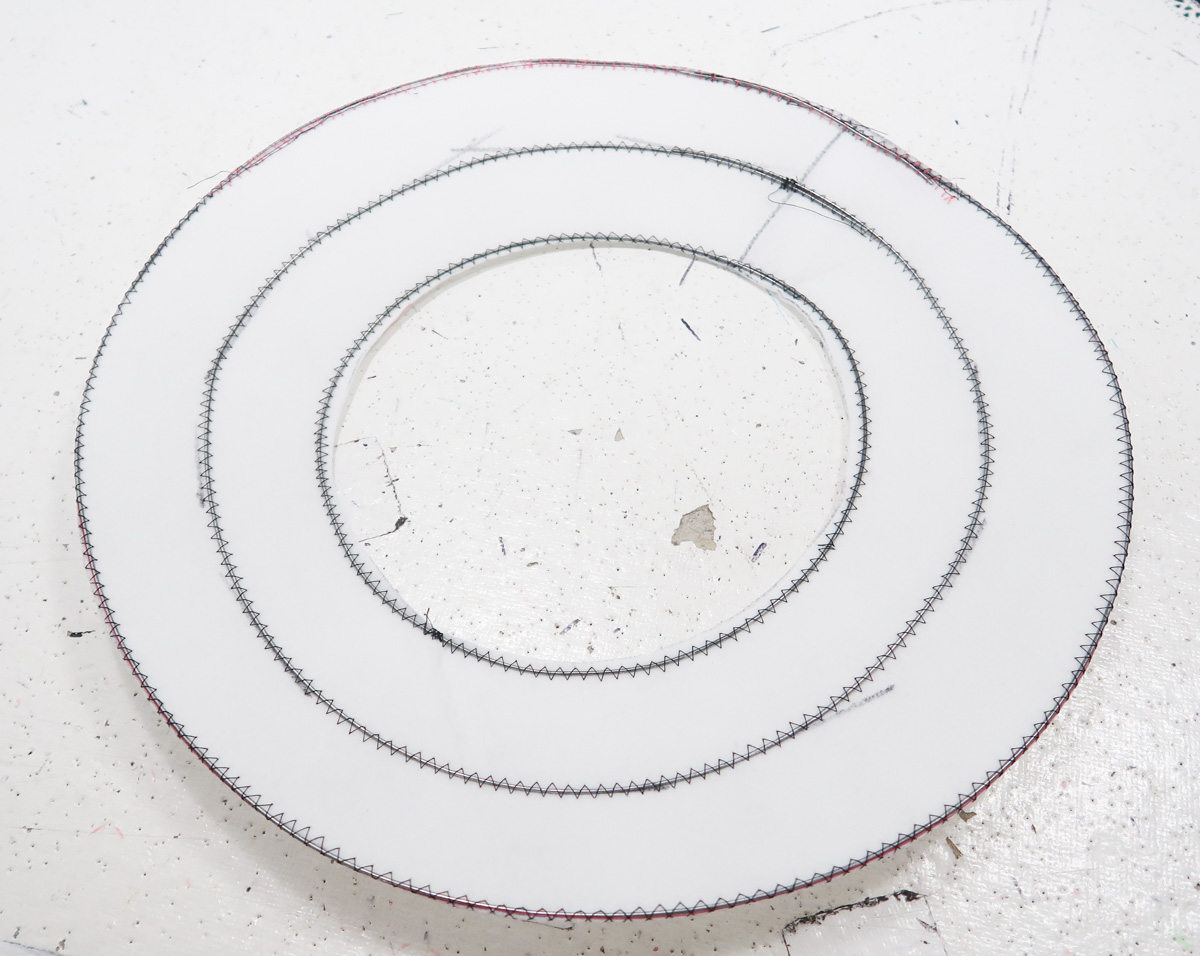
I basted black cotton sateen to the outside of the brim (the “outside” of the brim is the smooth side of the interfacing – the inside is the side with the wire stitched to it).
Then I sewed together three 4.5″ x 42″ strips of orange and black striped cotton. I gathered one edge down to 28ish inches – big enough to wrap around the inner circumference of the brim, with an inch or two to spare. This will be the lining.
The gathered edge was basted to the inner edge of the brim (this raw edge was covered by cotton sateen that was folded inward and whip stitched to the lining later on). The other edge of the lining was wrapped over the outer edge of the brim, extending by a 1/2″ onto the other side of the brim.
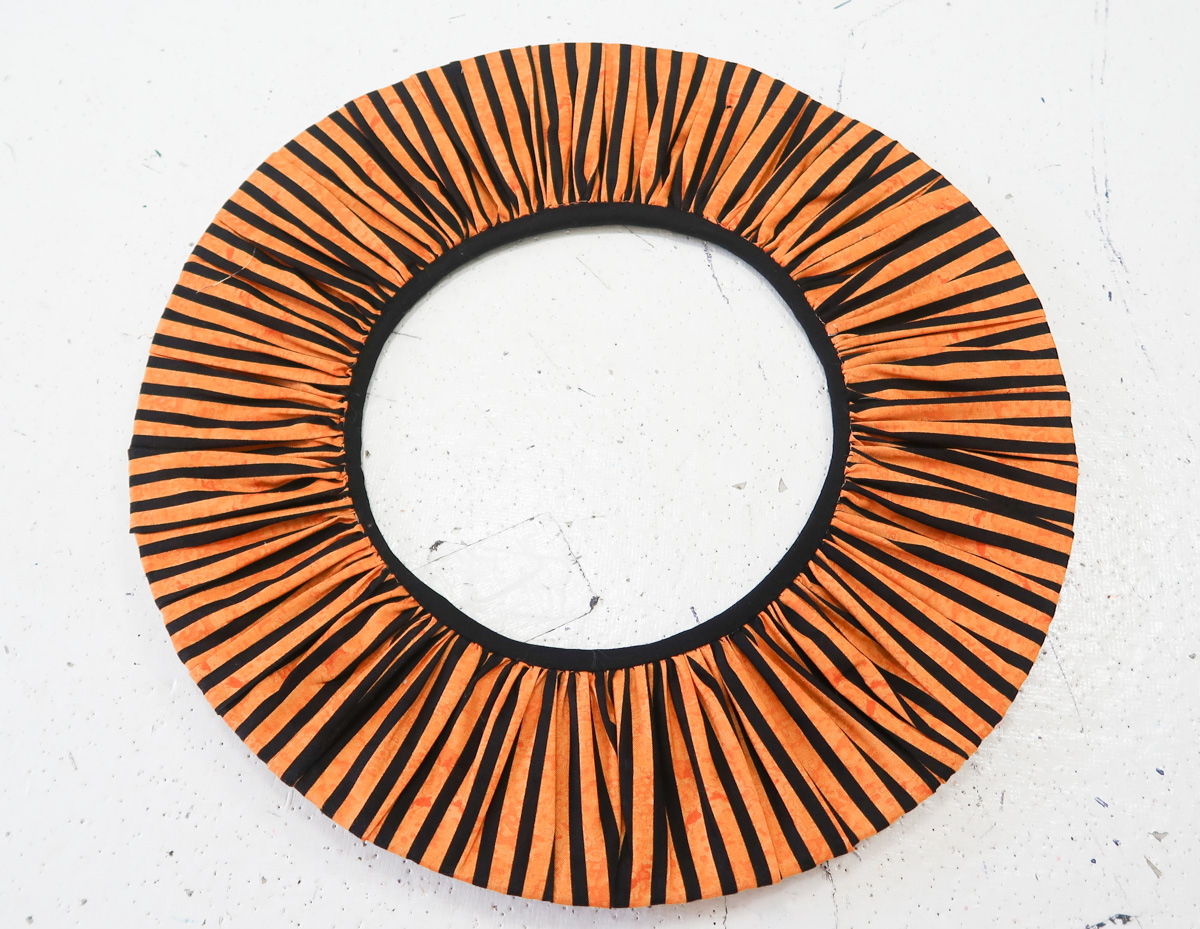
To cover the raw edge of the lining now visible from the exterior of the hat, I used more of the striped binding. As I said earlier, this is cut on the fabrics straight grain – it isn’t flexible like bias binding. So it had to be carefully pinned around each curve.
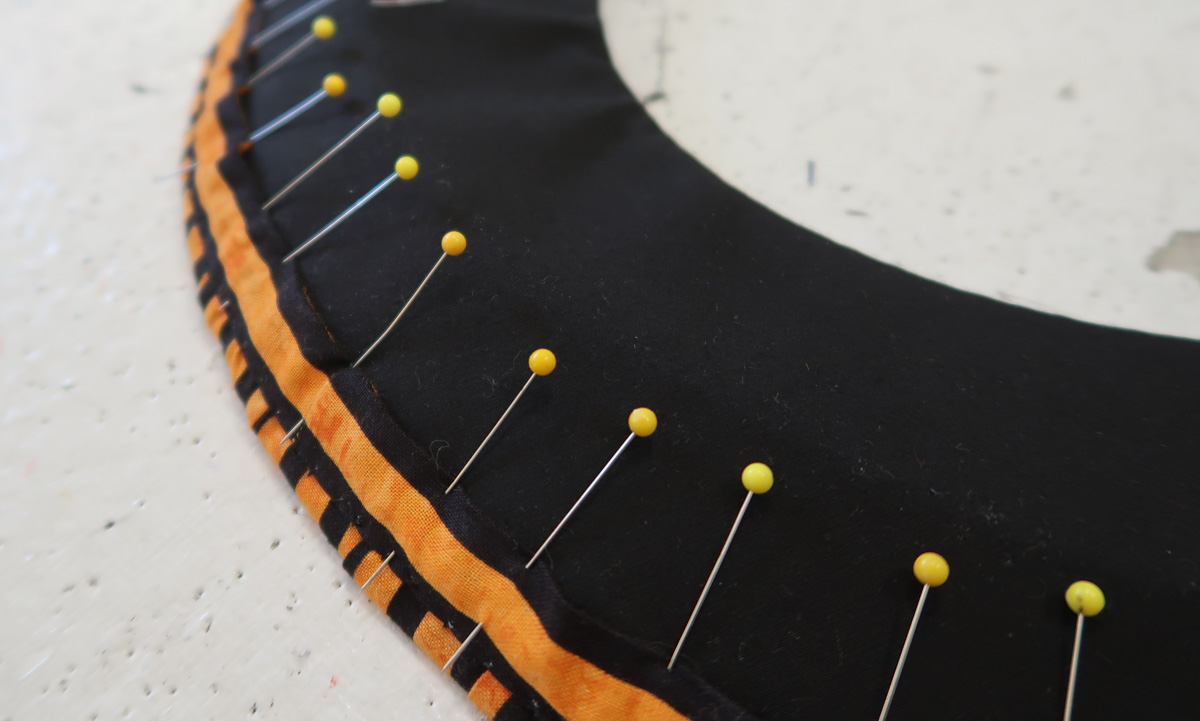
And here it is all sewn in place!
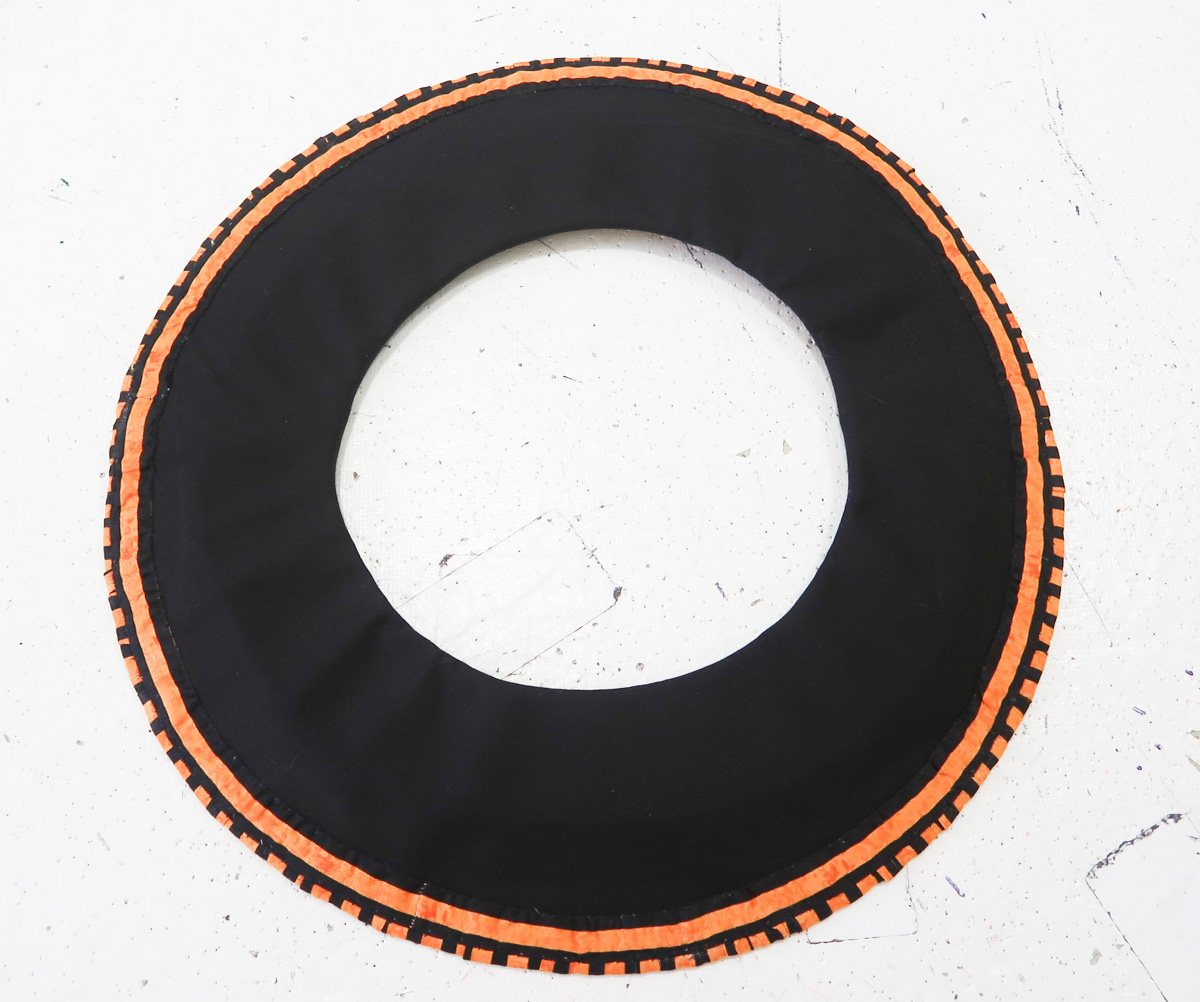
Now I whip stitched the brim to the cap of the hat. I always start stitching them together at the center back – that way if they don’t line up quite right, I can fudge it a bit and it won’t be visible from the front!
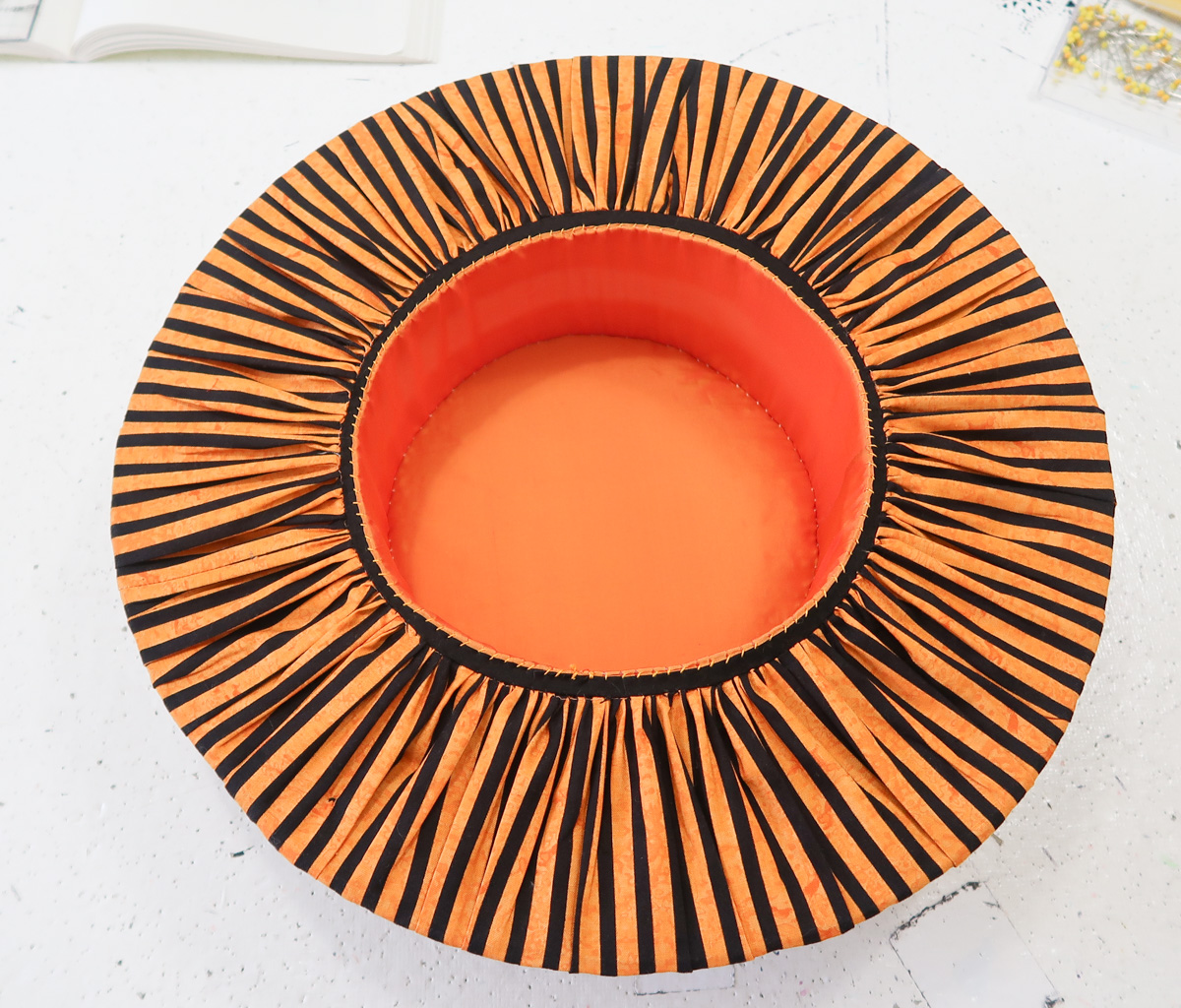
Here is what the top looks like. At this point, you may doubt the possibility of it looking like a pumpkin. I was right there with you. *But the main rule of hat making is that if you add enough crap, it will definitely look okay in the end. So I moved ahead.
*This may not be an official rule of hat making
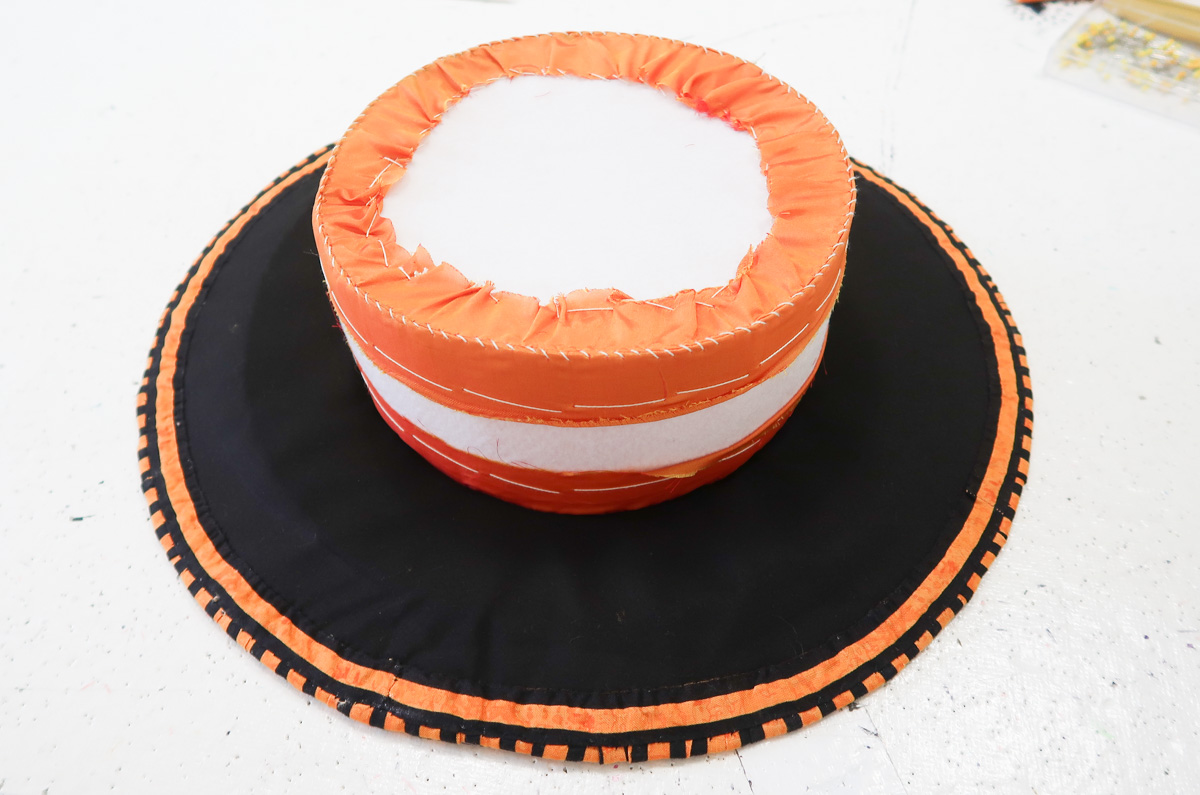
I gathered down the outer edge of the circle I cut out earlier. Then I tried placing it on top of my hat…and it was a little too big and floppy. So I ended up adding another row of gathers half inch away from the first row. But I only did this on one half of the circle, since I wanted it to sit asymmetrically on the hat.
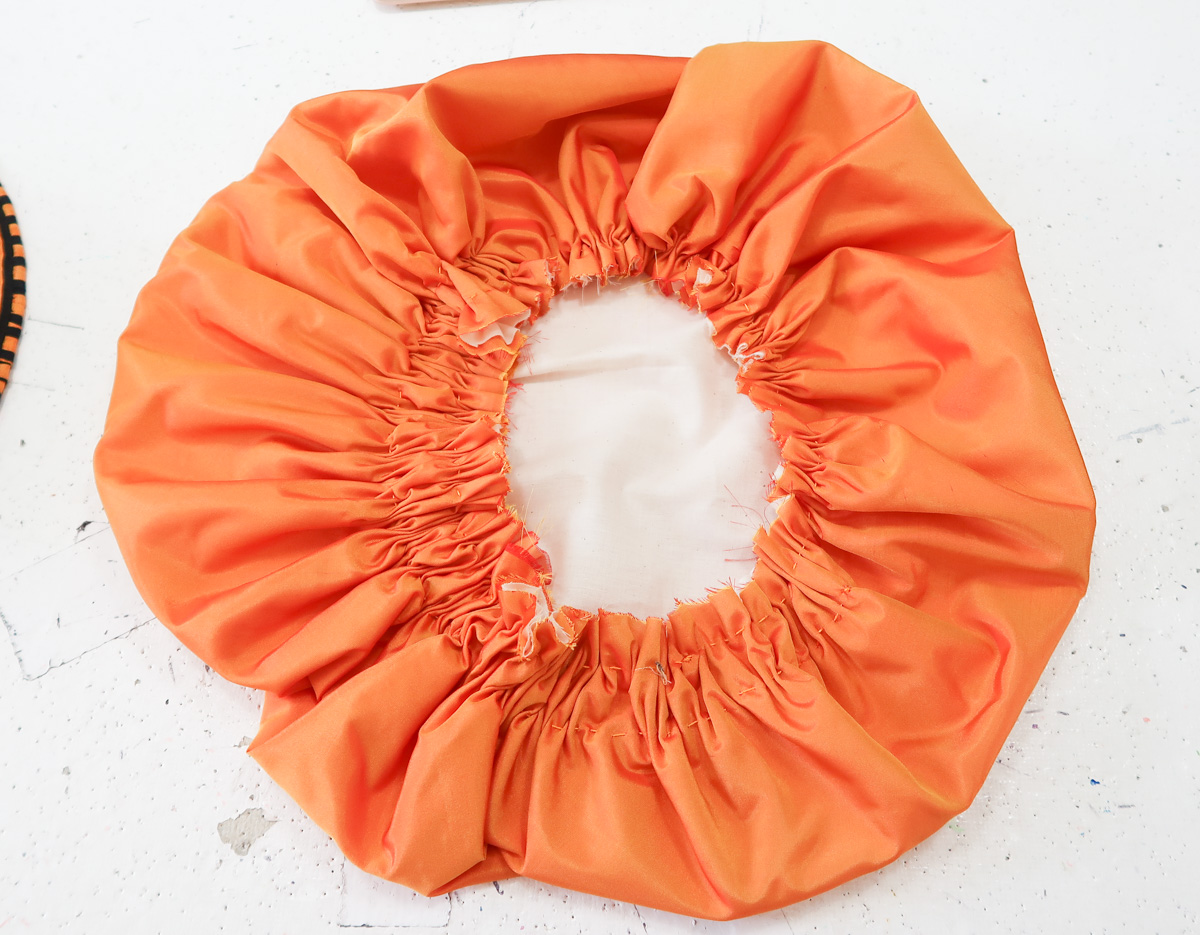
It was still looking pretty floppy and not pumpkin-y at this point. So I decided to pad it out a little using scrunched up pieces of tulle that I tacked to the outside of the hat.
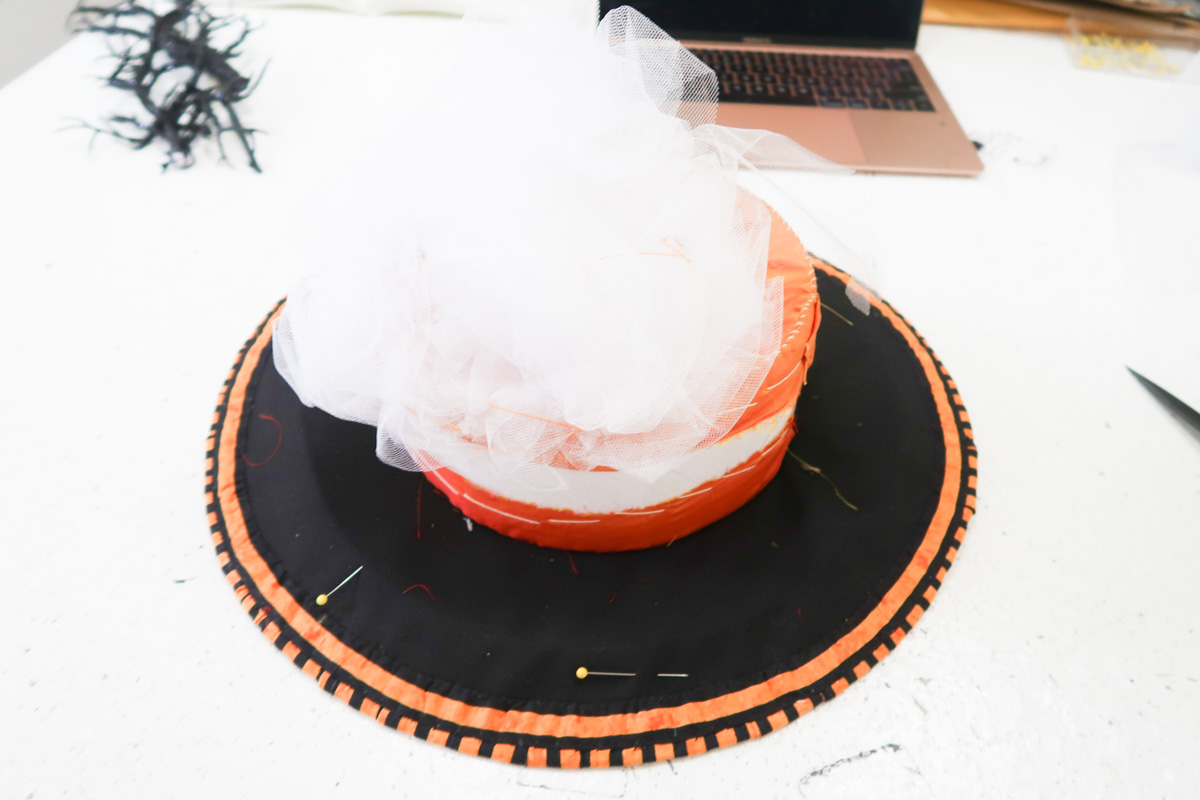
And now I was getting somewhere! I basted the bottom edge of the circle to the hat.

Then I covered the gathered edges with a band of striped cotton. The band is at its full width of 2.5″ at the front, but tapers to be 1″ wide on one side. This is to enhance the asymmetrical shape of the top.
The band was tied at one side, and basted to the hat to secure it in place.
The center of the top of the hat was tacked down to create a tufted effect that makes it resemble a pumpkin!
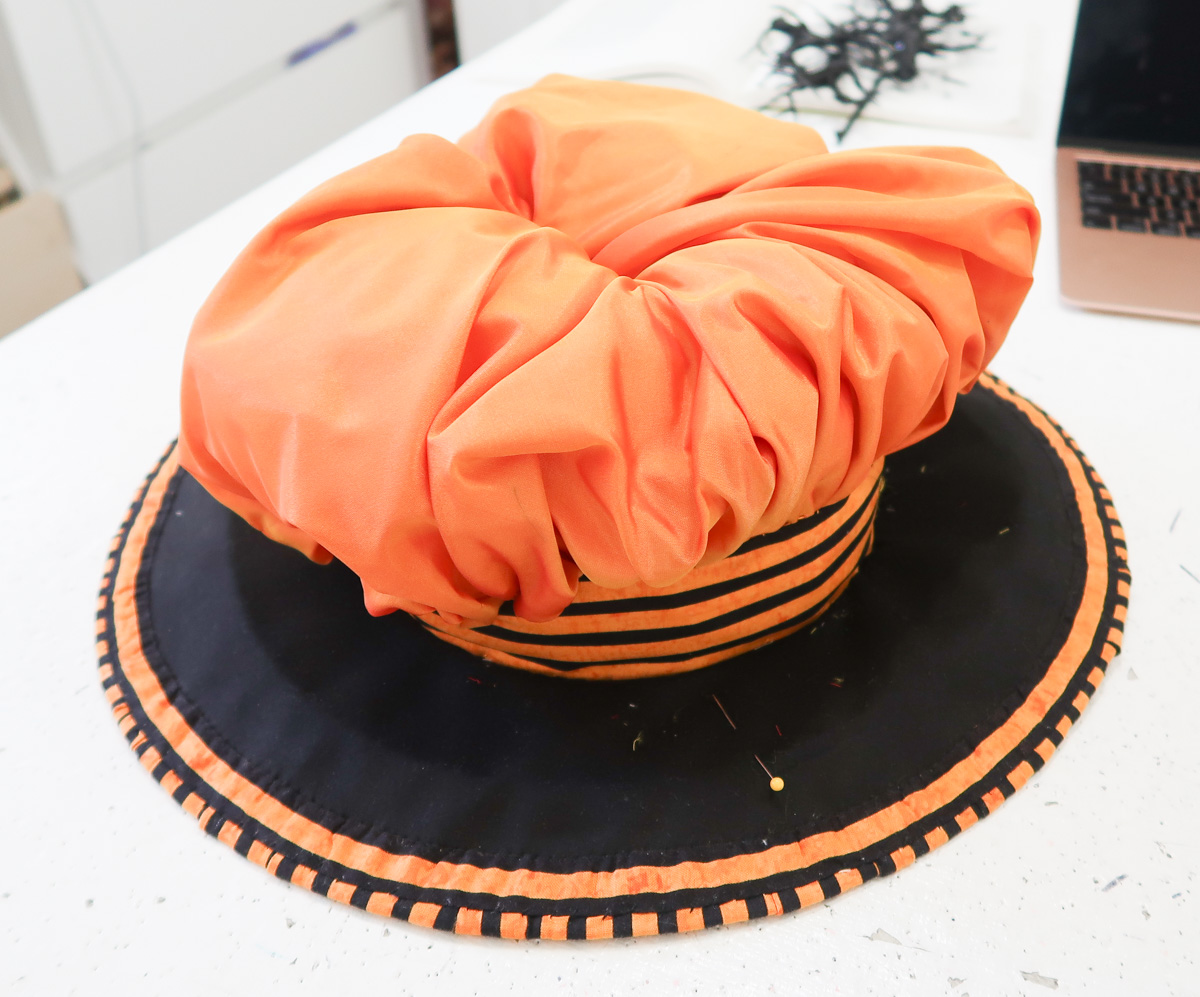
As far as trims go, I used some cut up ostrich feathers which were placed horizontally against the base of the brim to add texture. I also used some black glittery branches I bought for a $1 at Michaels. Both the feather and the branches were sewn on by hand.
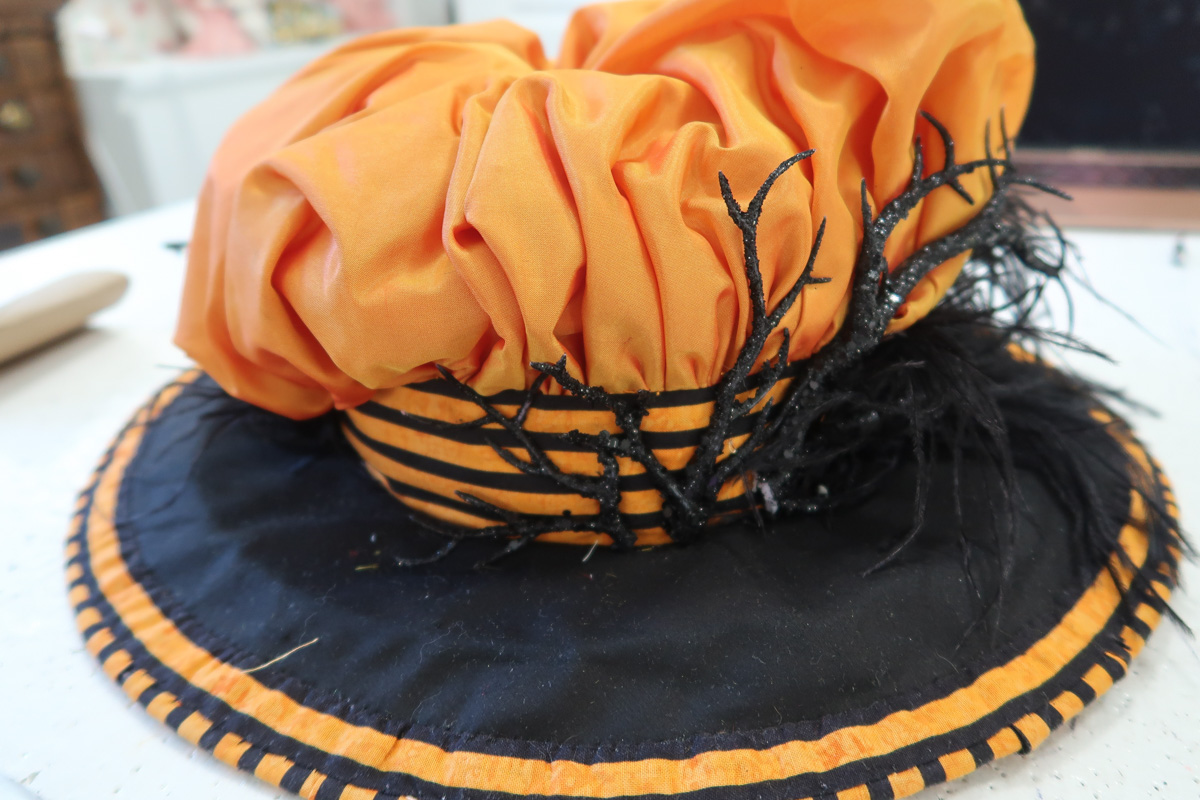
The stem of the pumpkin is made from the base of the branches. I had to glue two together to get the convincing amount of girth for a pumpkin stem, then I glued it over the tufted portion of the hat. There is some thread wound around the stem and securing it on as well, since I didn’t fully trust the glue.
The final touch were some velvet millinery leaves to cover the glue around the stem.
I also tacked one side of the puffed layer to the brim. This covers the knot securing the band around the hat, and makes the pumpkin look slightly tilted.

And that is it! The pumpkin hat was done! And it’s pretty glorious if I do say so myself.
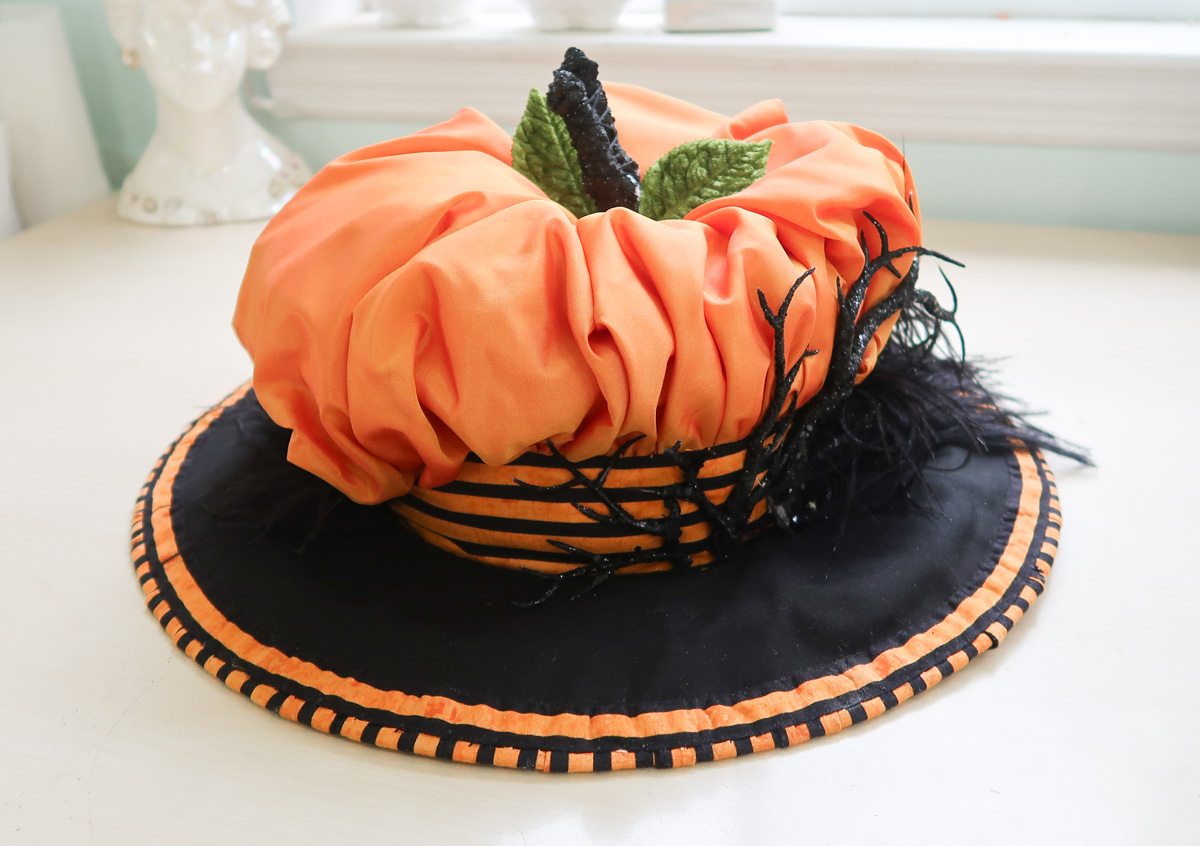
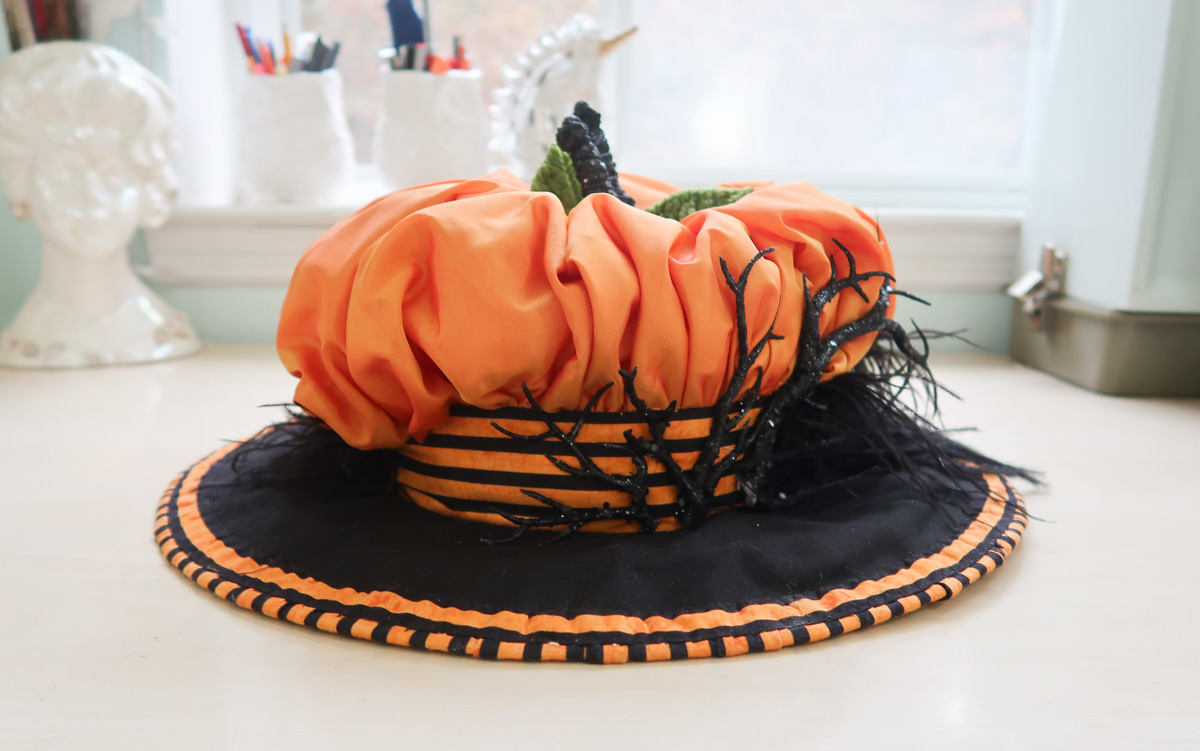
Maybe my favorite hat I’ve ever made. Which is saying a lot, because I’ve made some great hats.
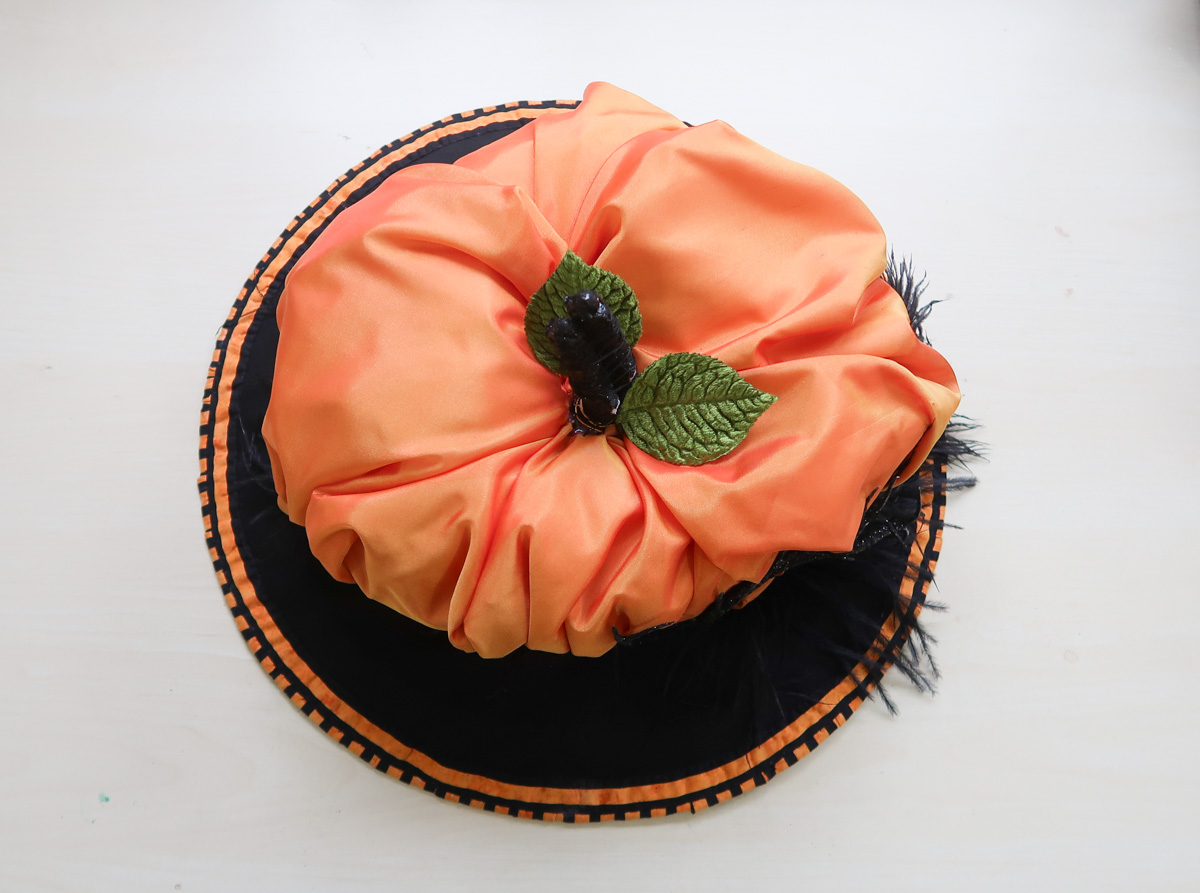
And with the hat finished, and the dress finished, and the underskirt finished, it’s time to finish this post!
Thanks SO much for reading! I will be back with photos of the finished ensemble tomorrow – along with another special post, about another ~spooky~ project.
Also THANK YOU to anyone who has stayed subscribed to my blog despite it’s lack of activity over the past couple years. I really appreciate it, and I’m looking forward to reviving it in the coming months!













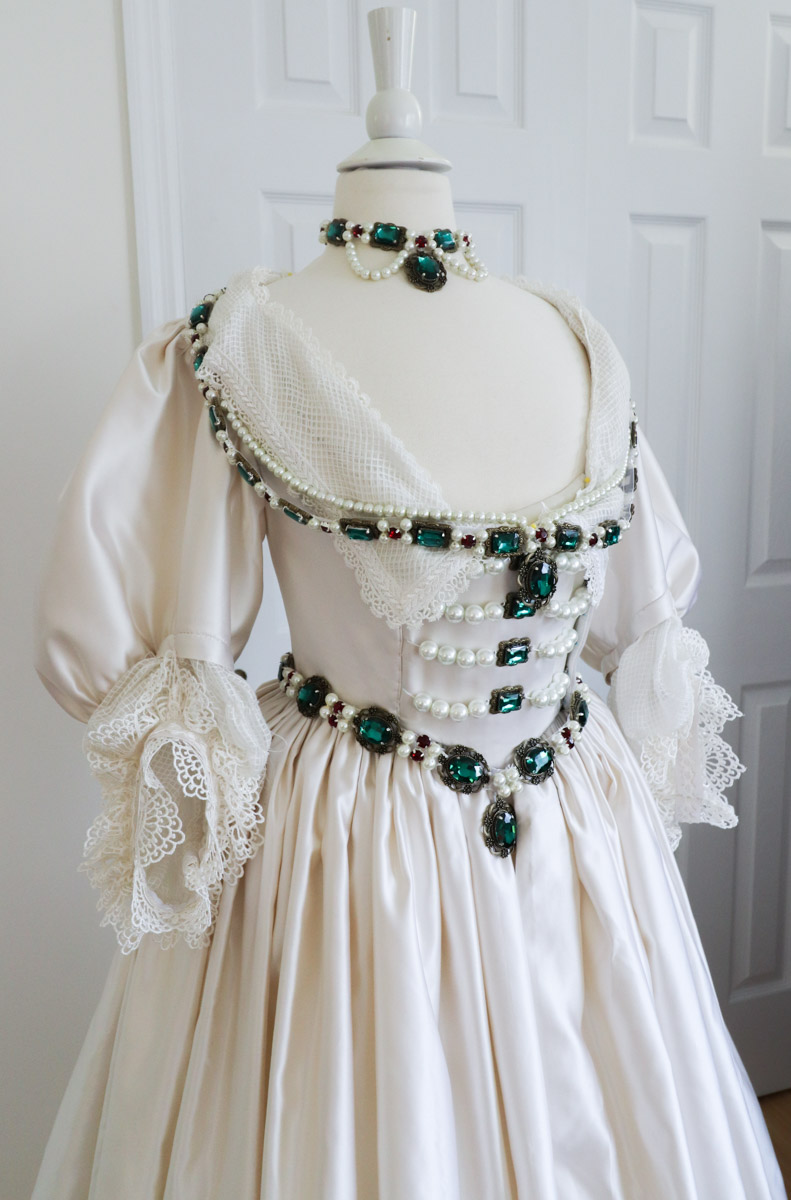

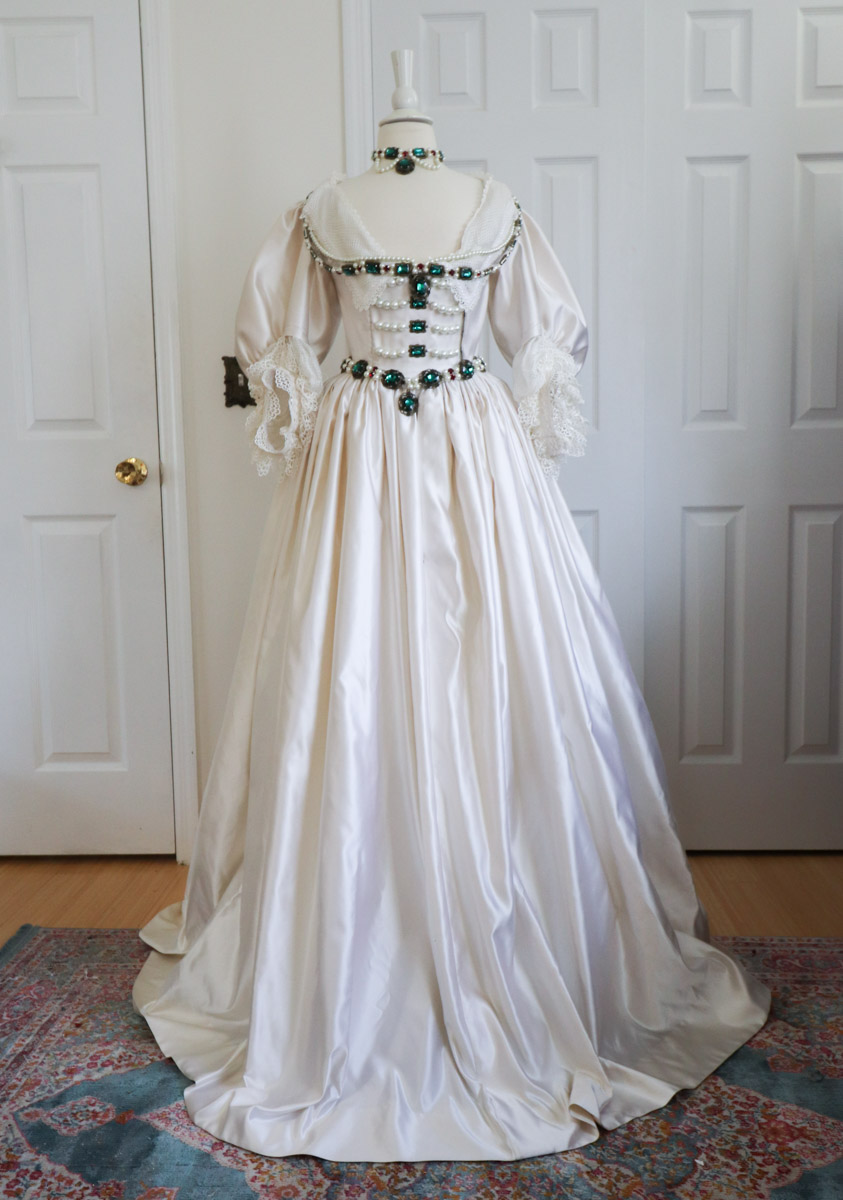
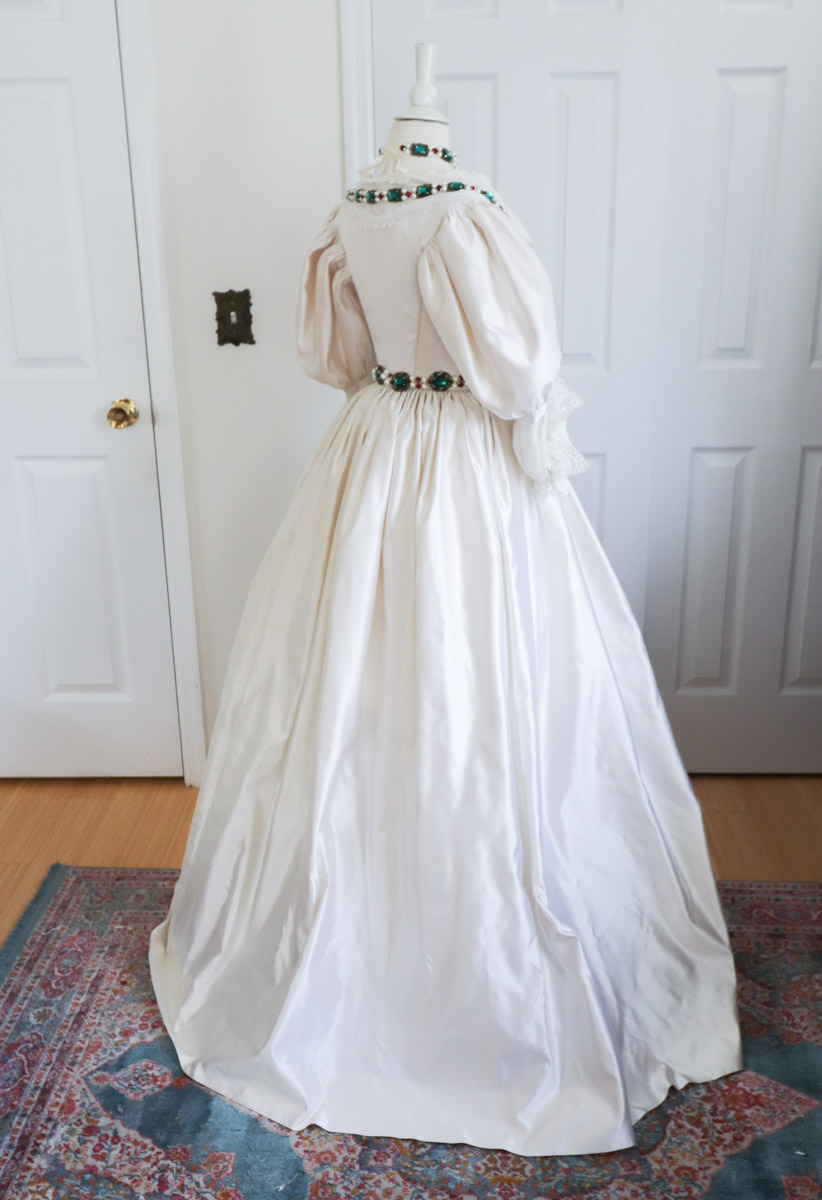

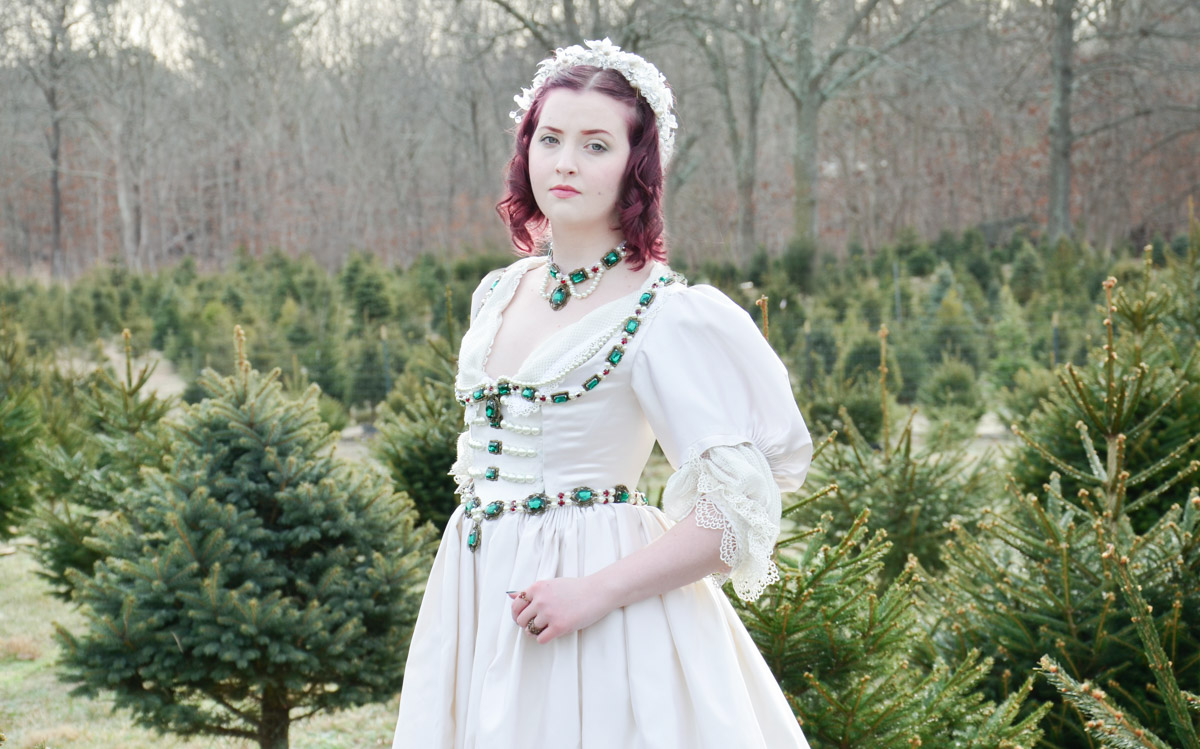
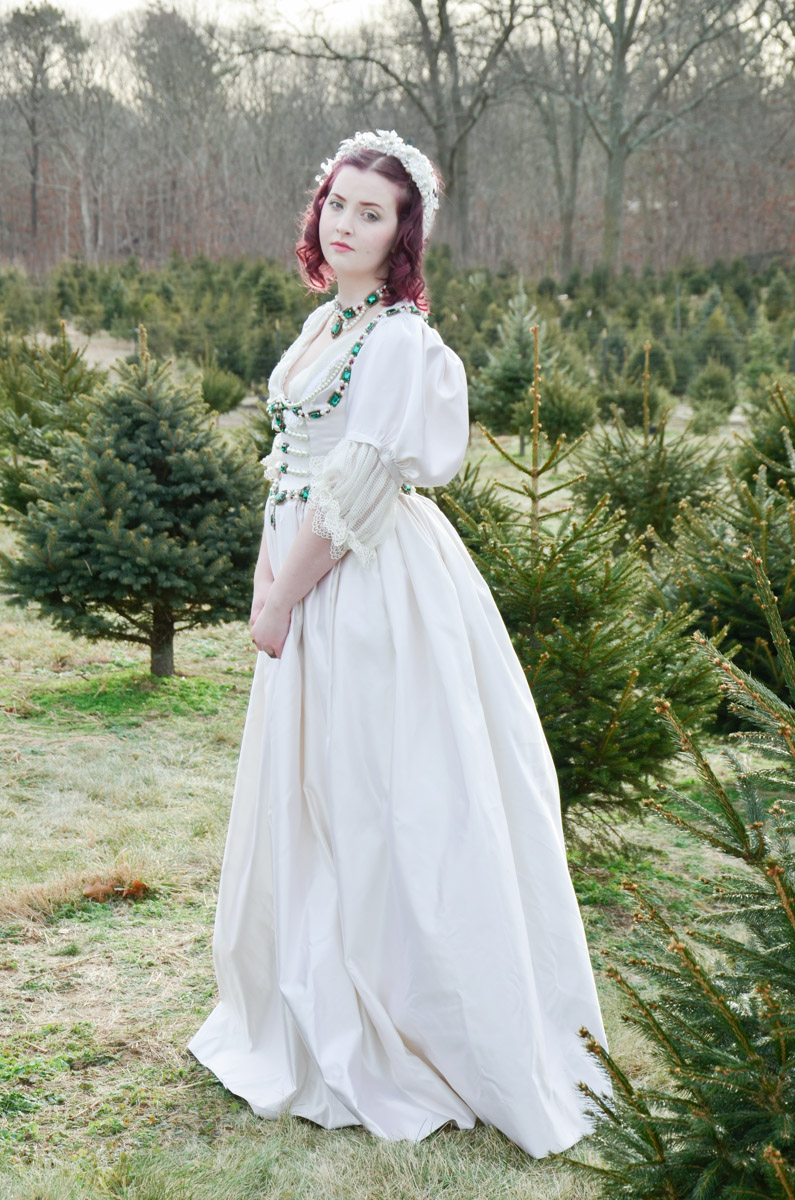


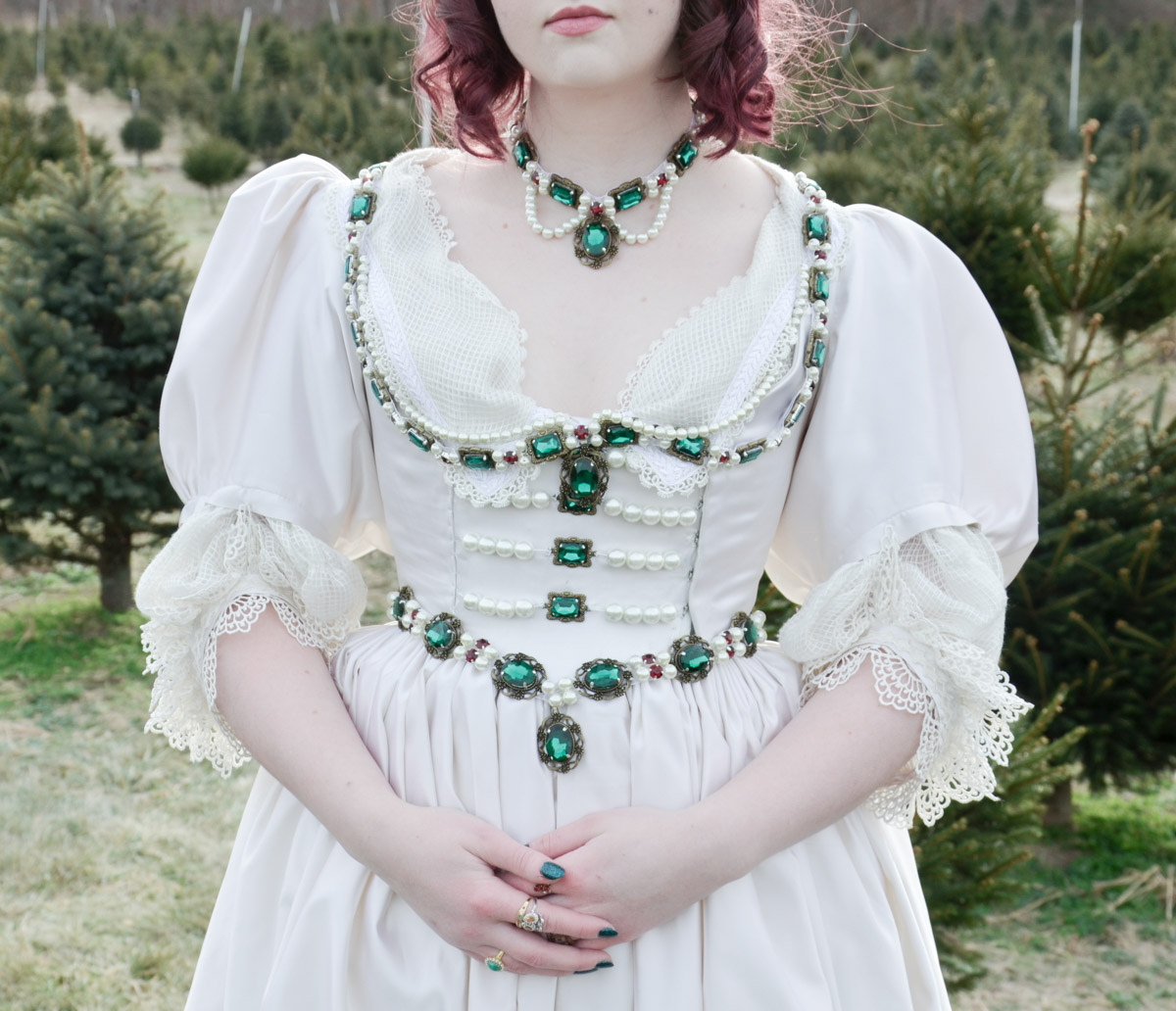
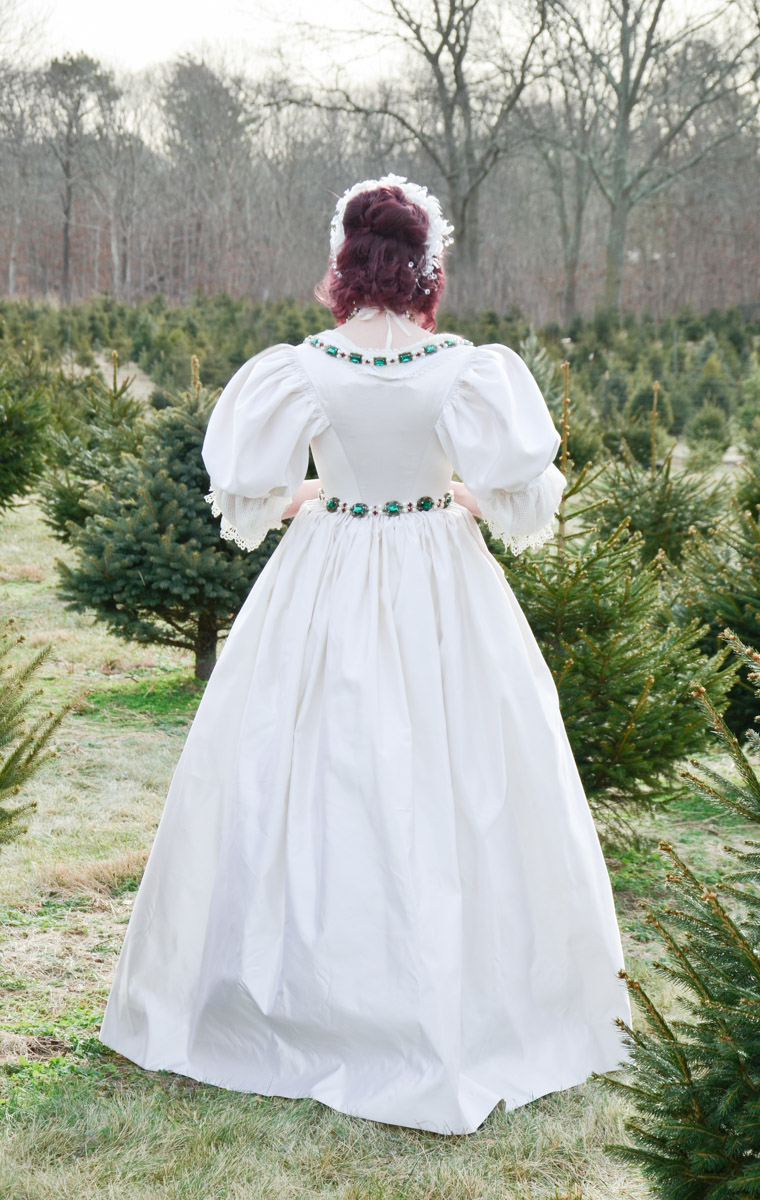
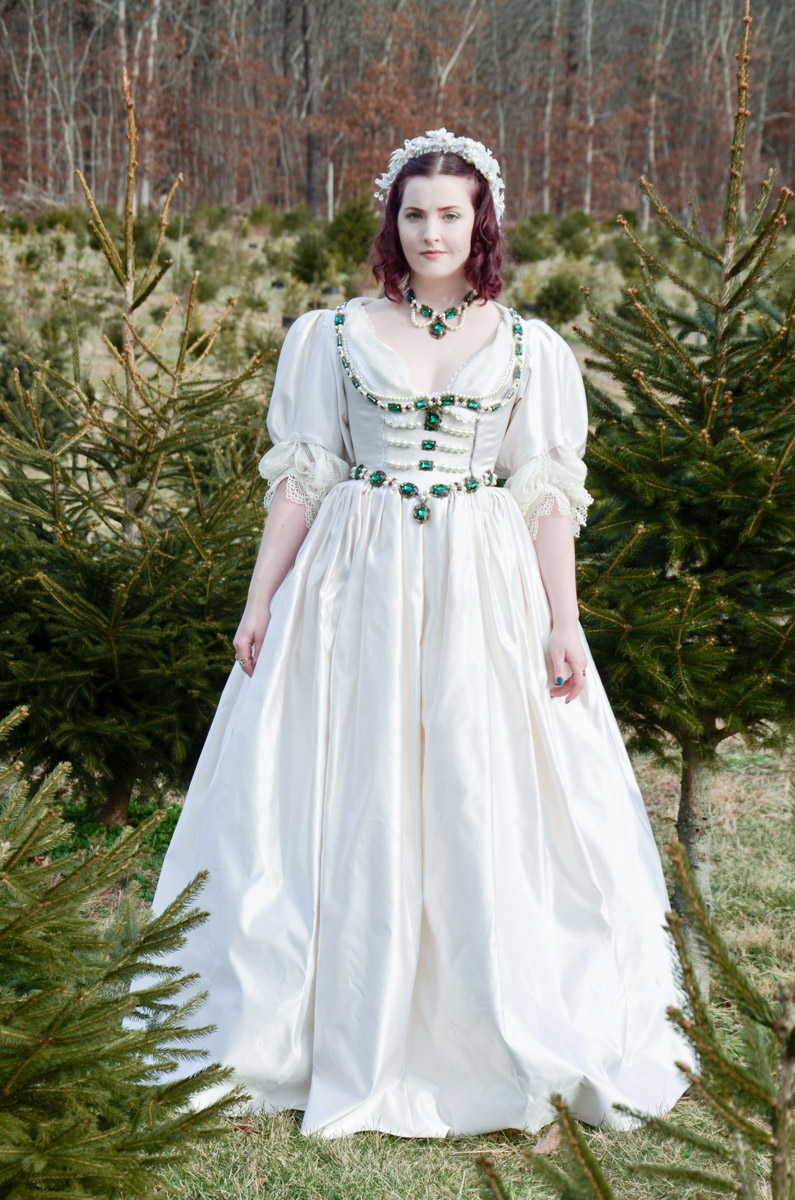
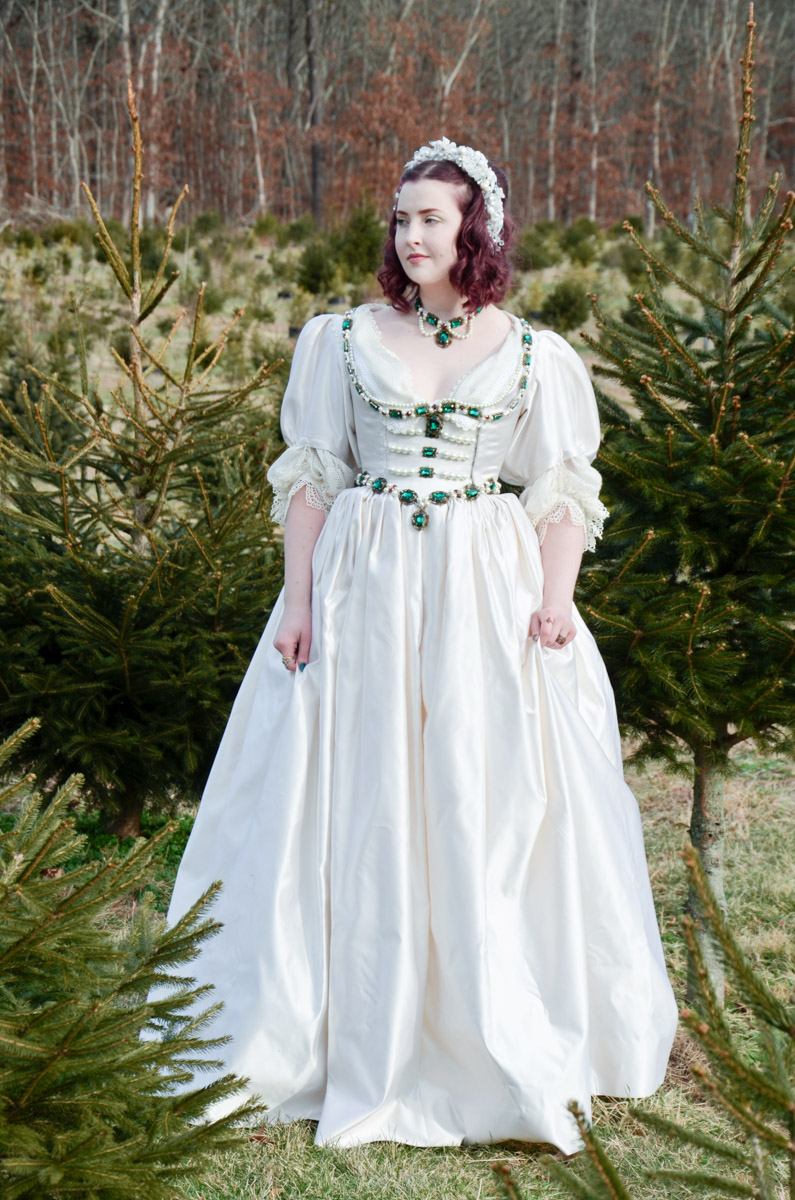
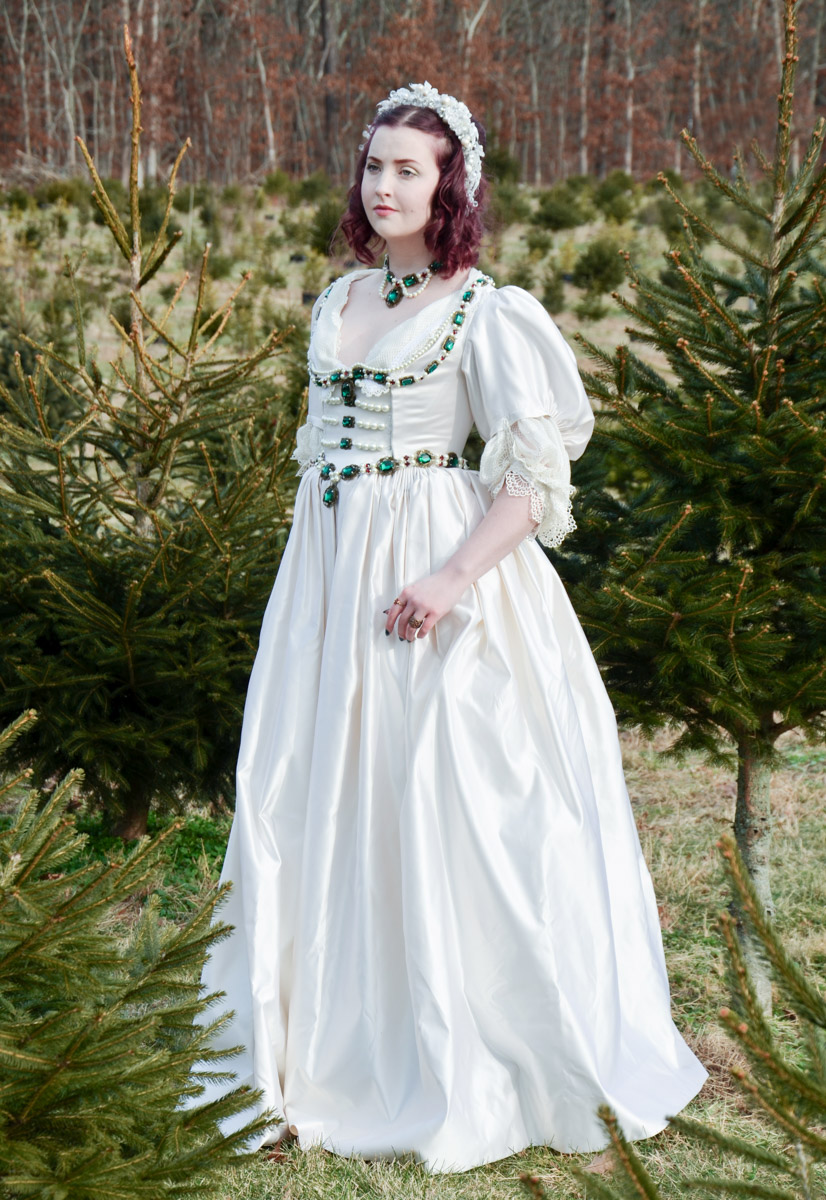


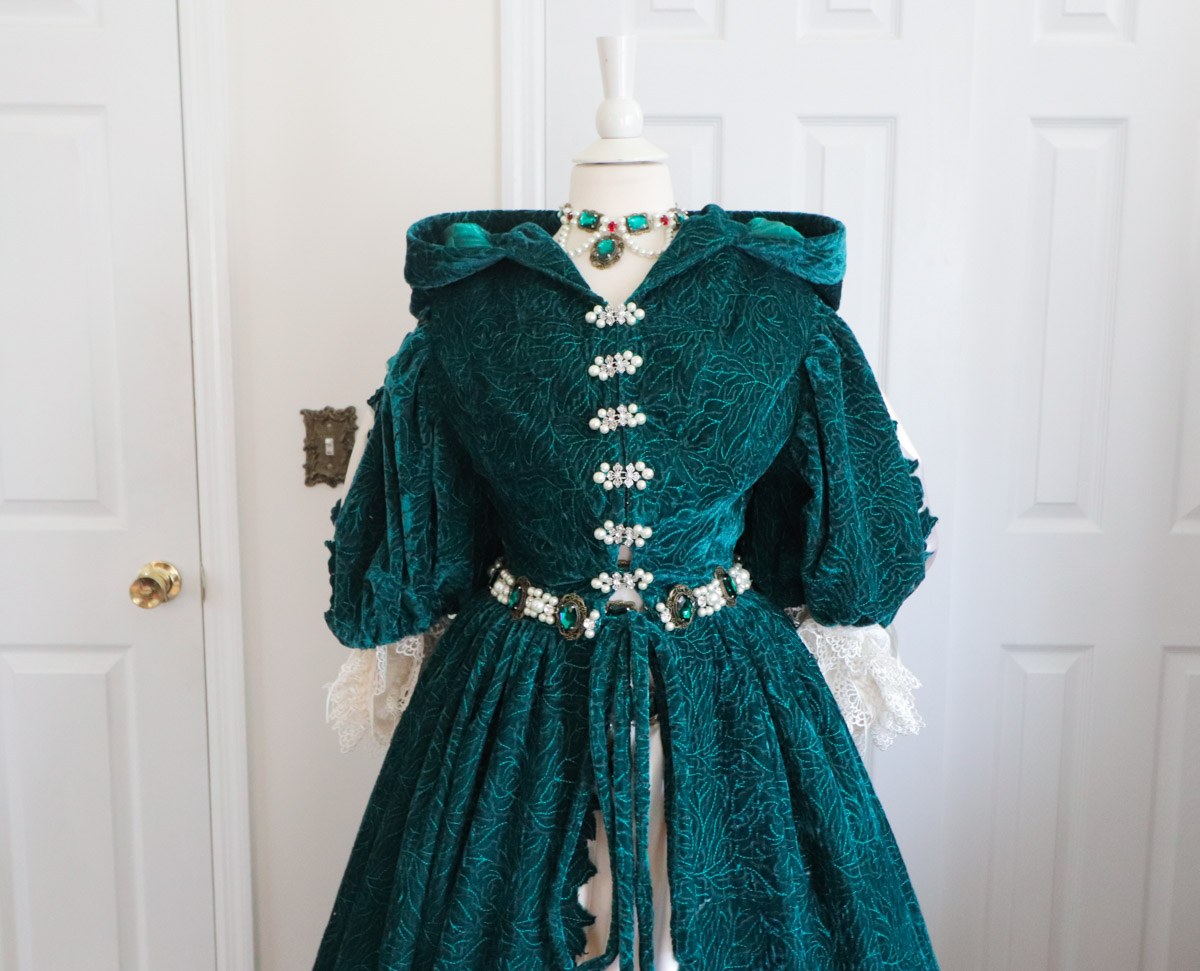


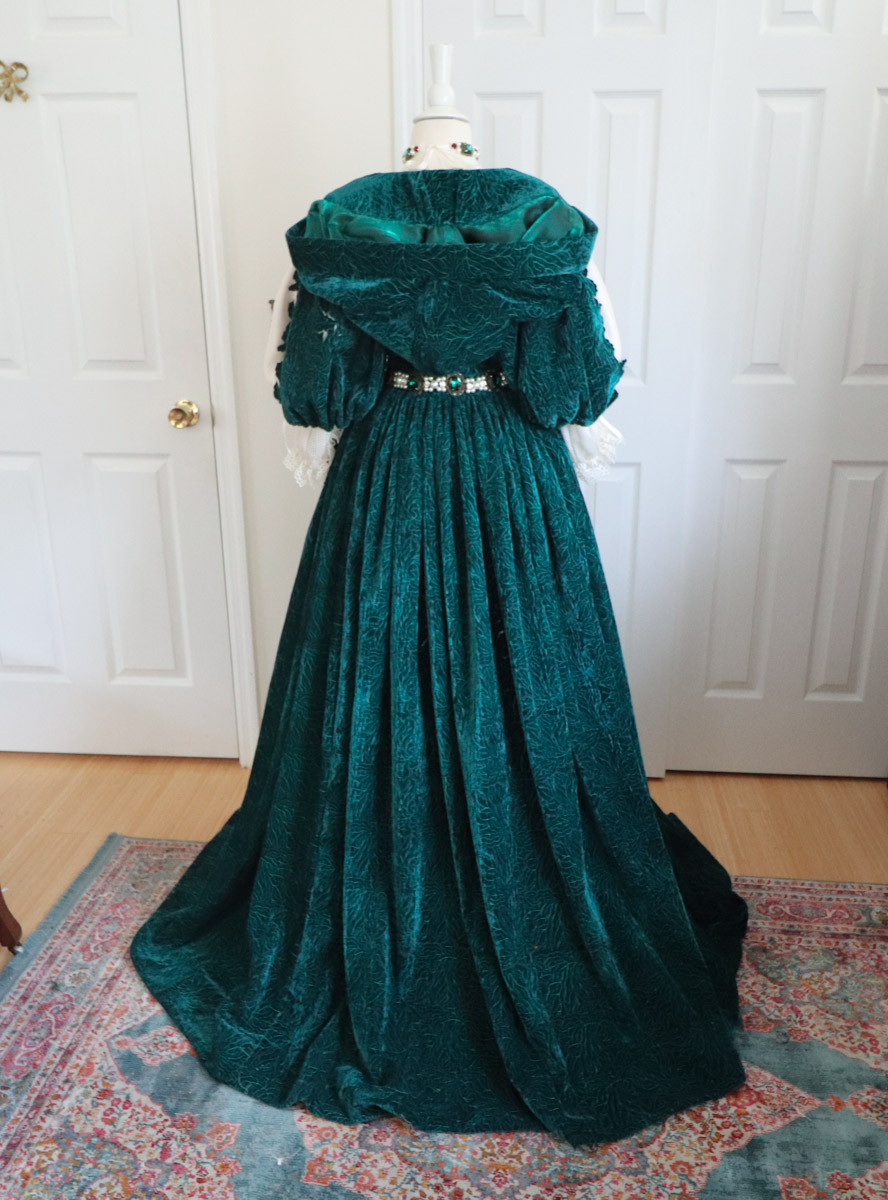
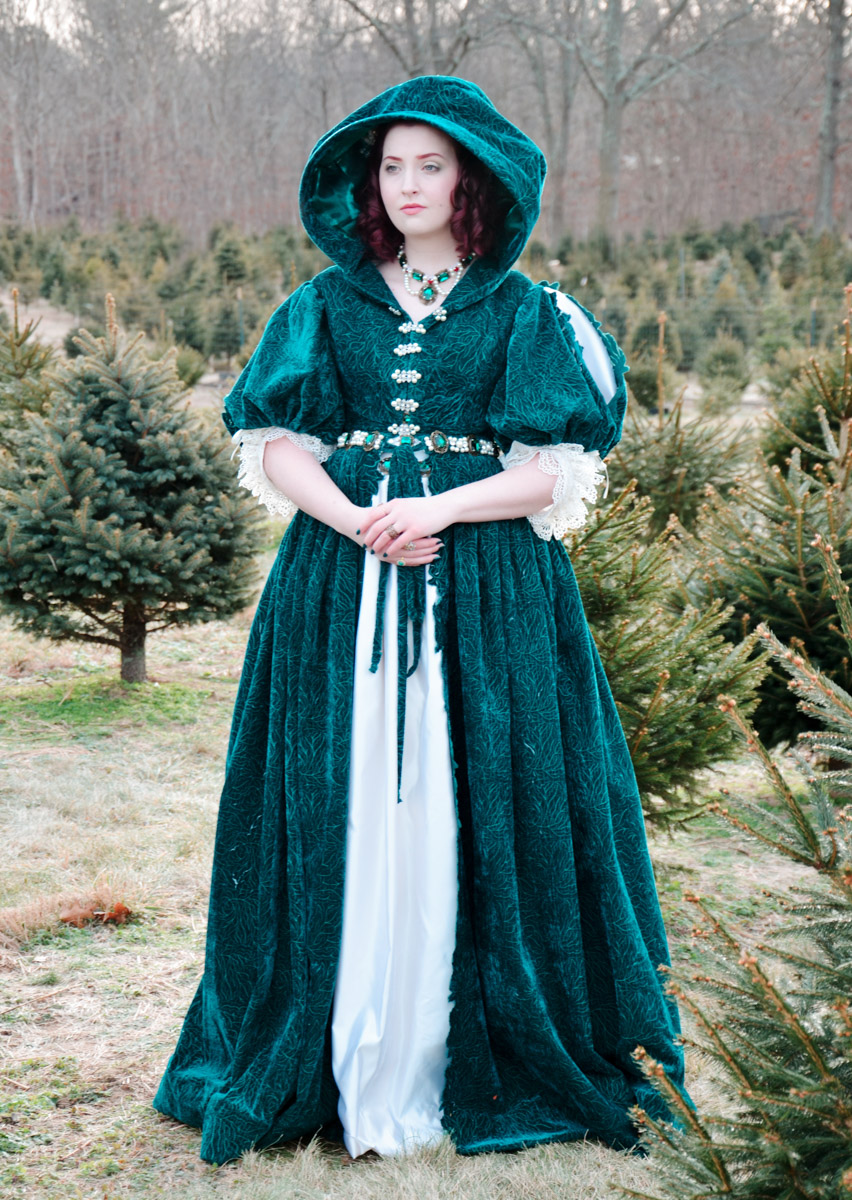
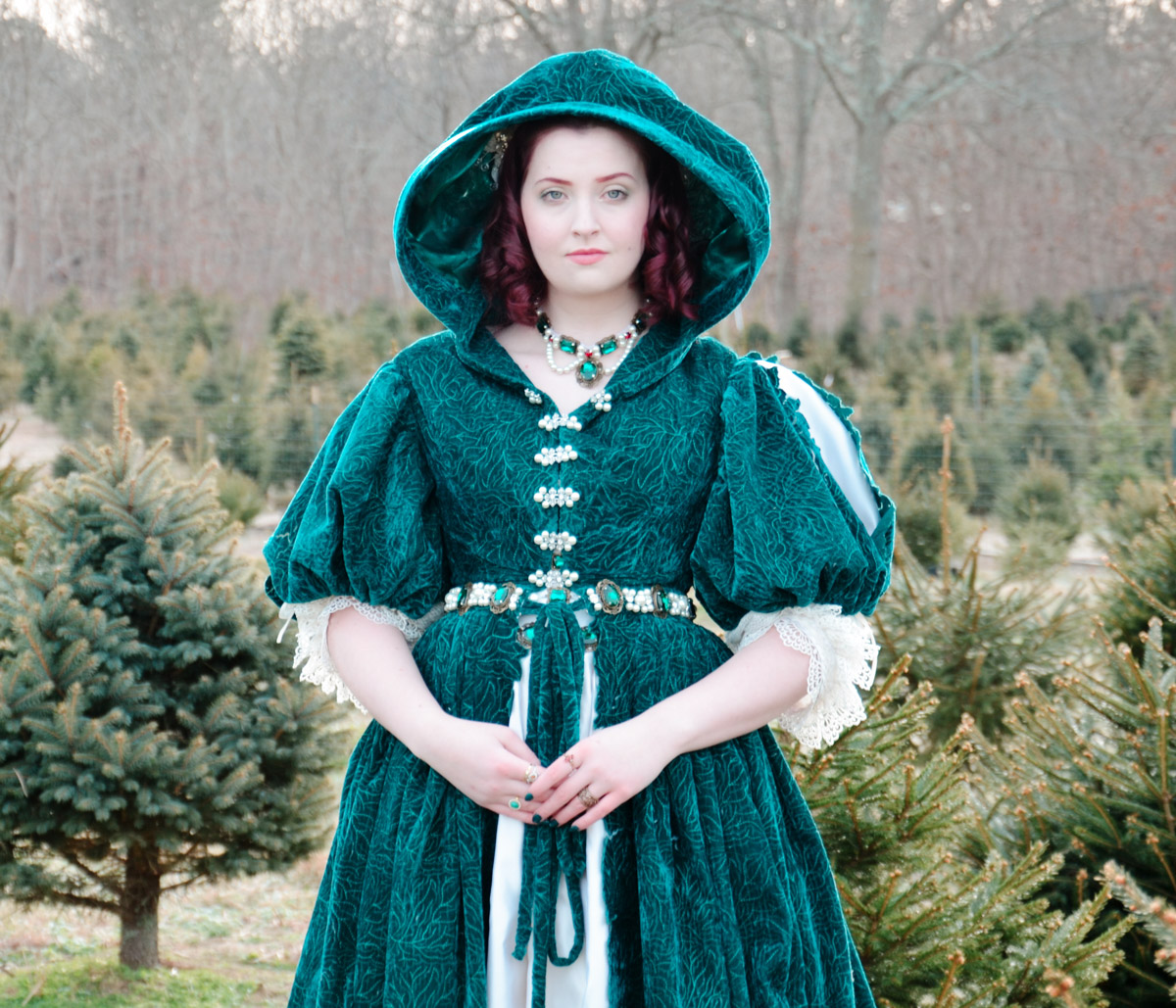

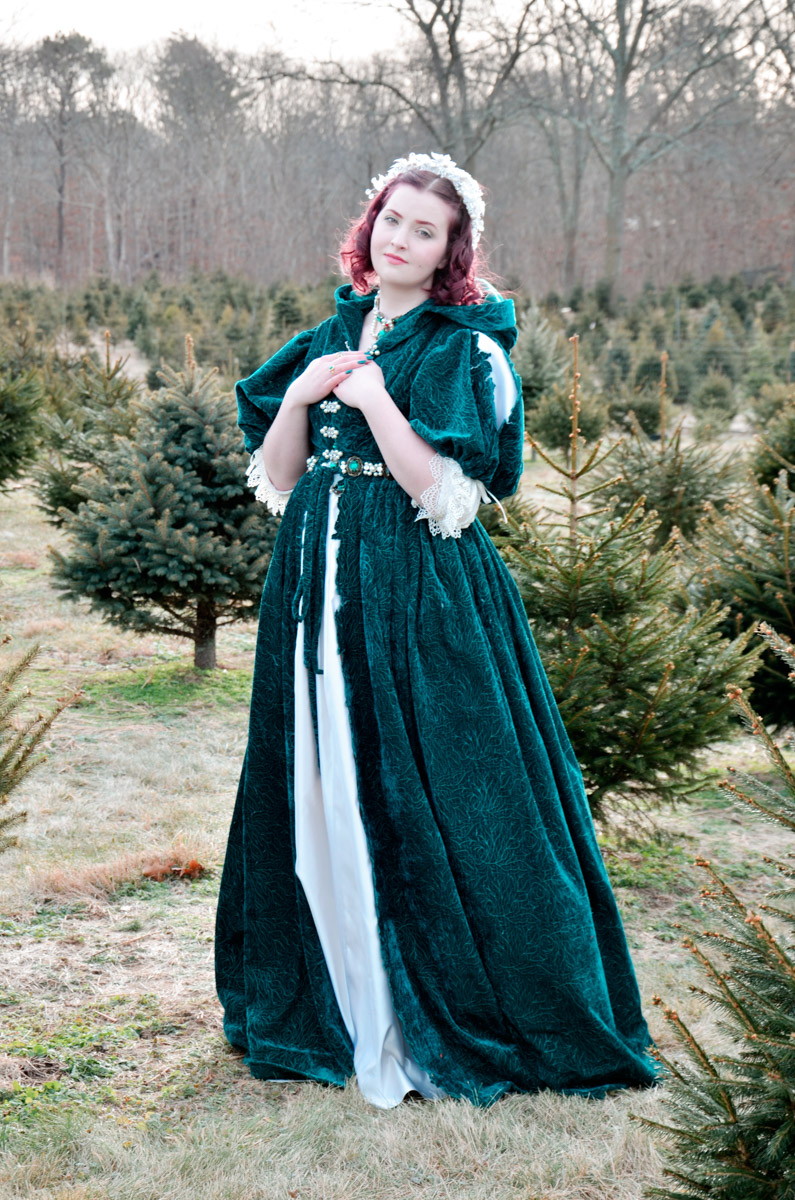
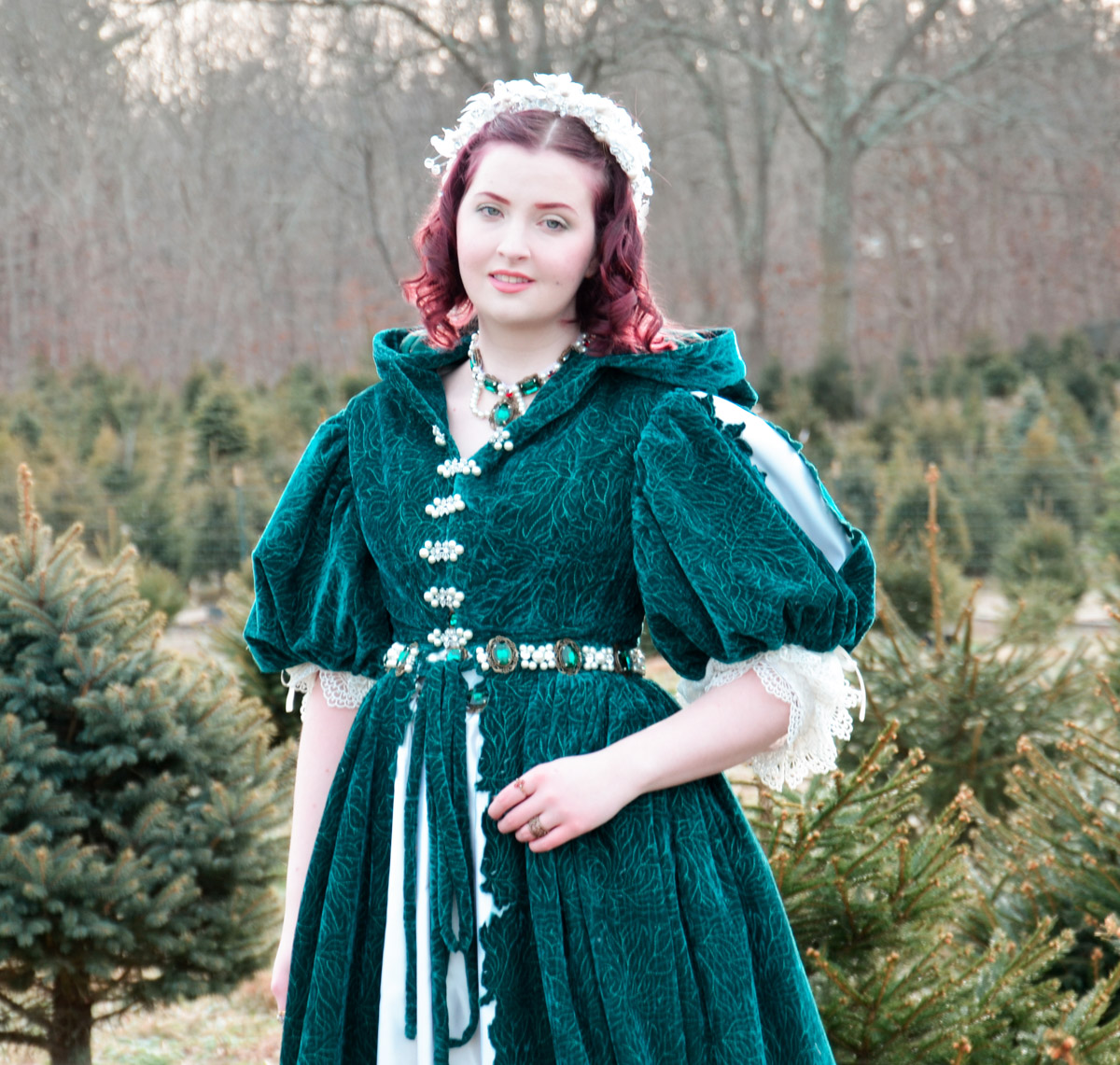
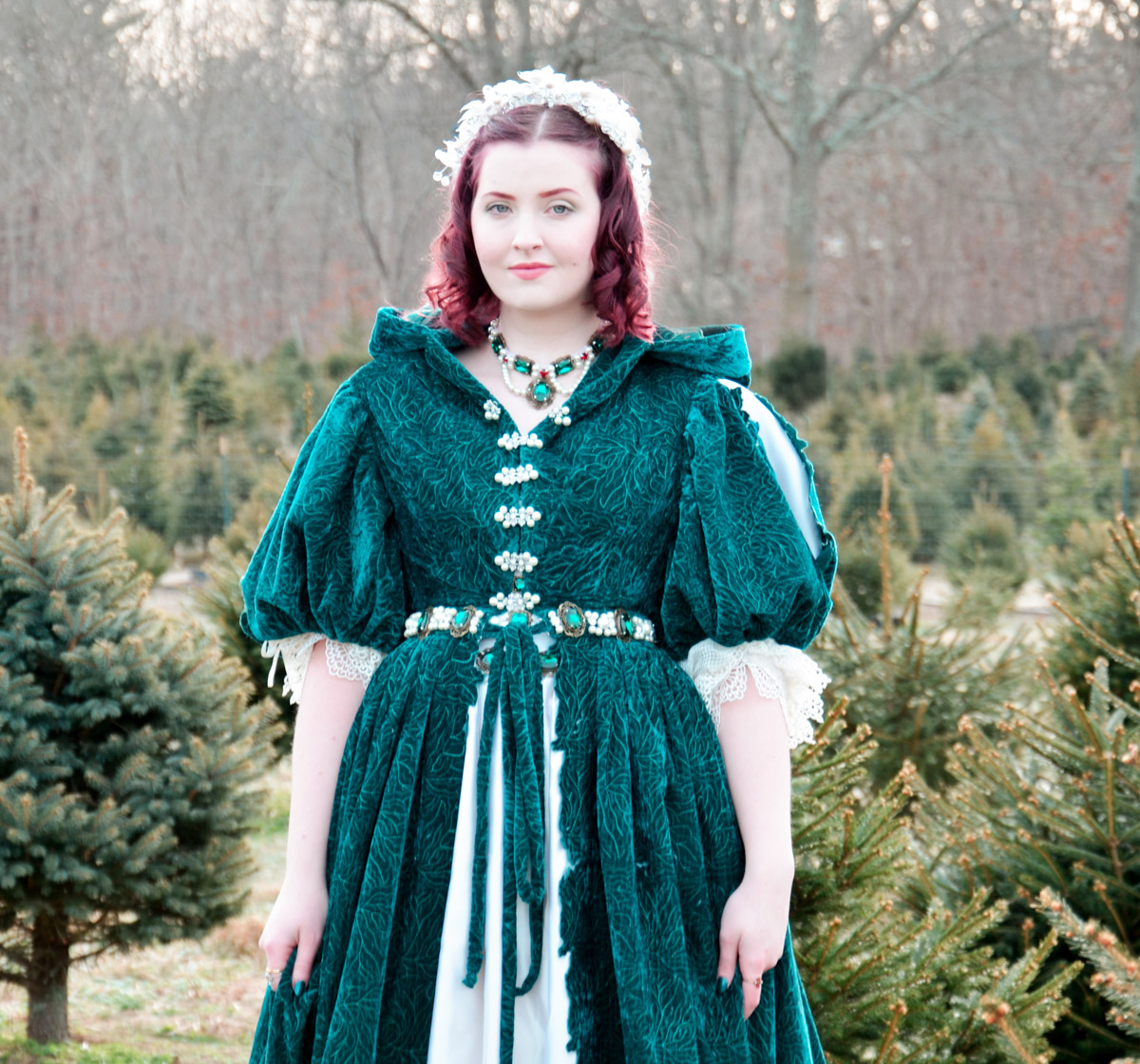
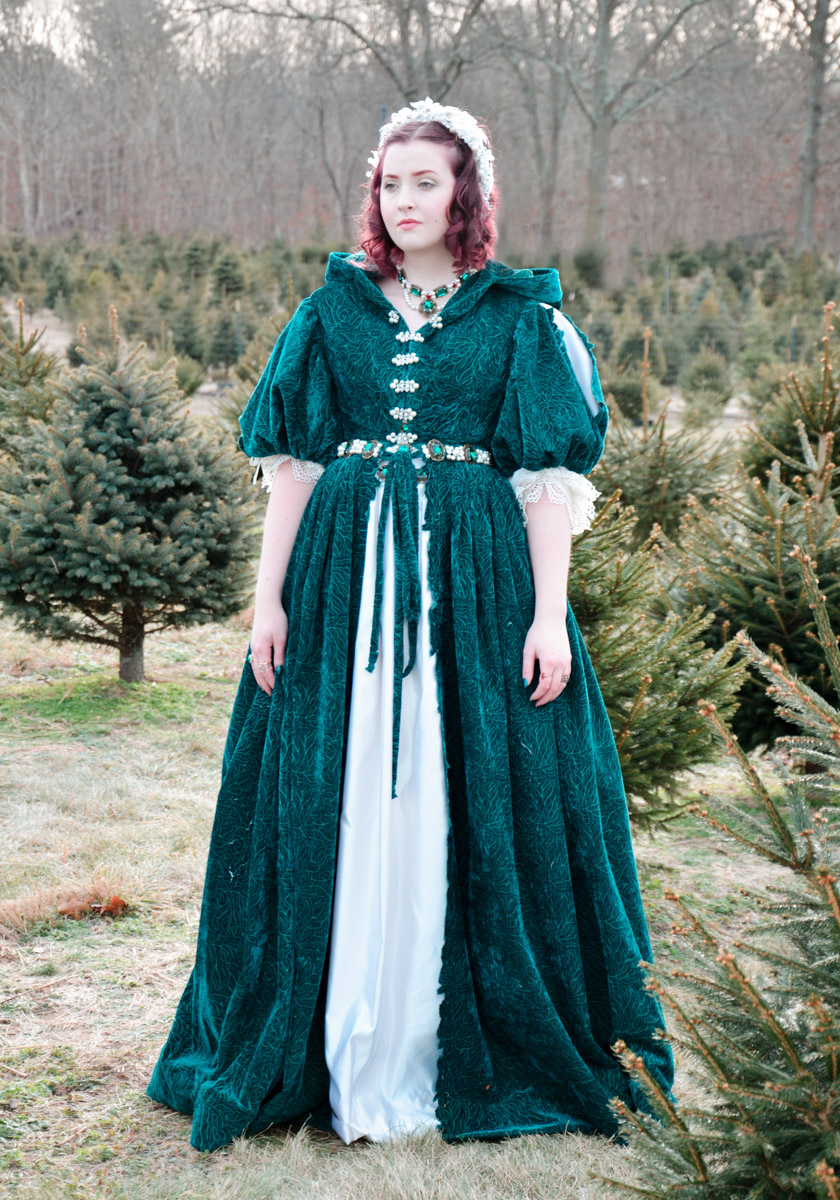
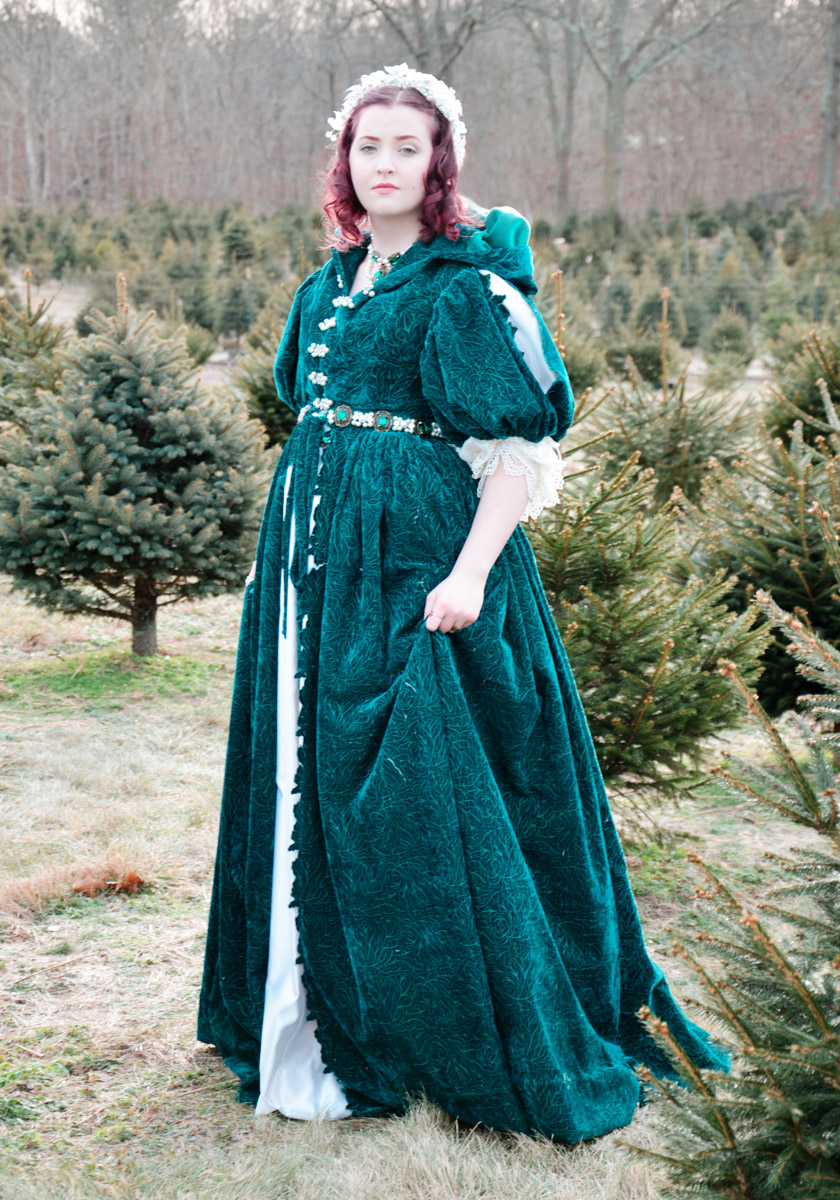
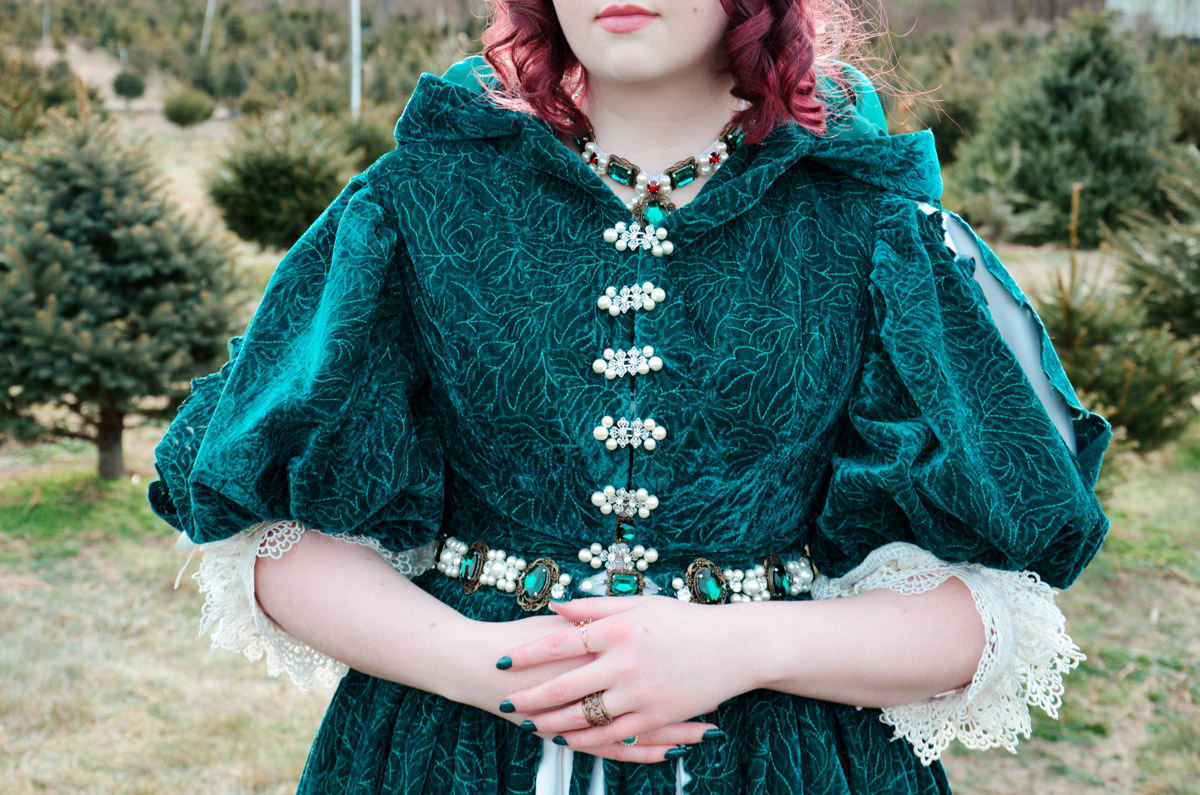
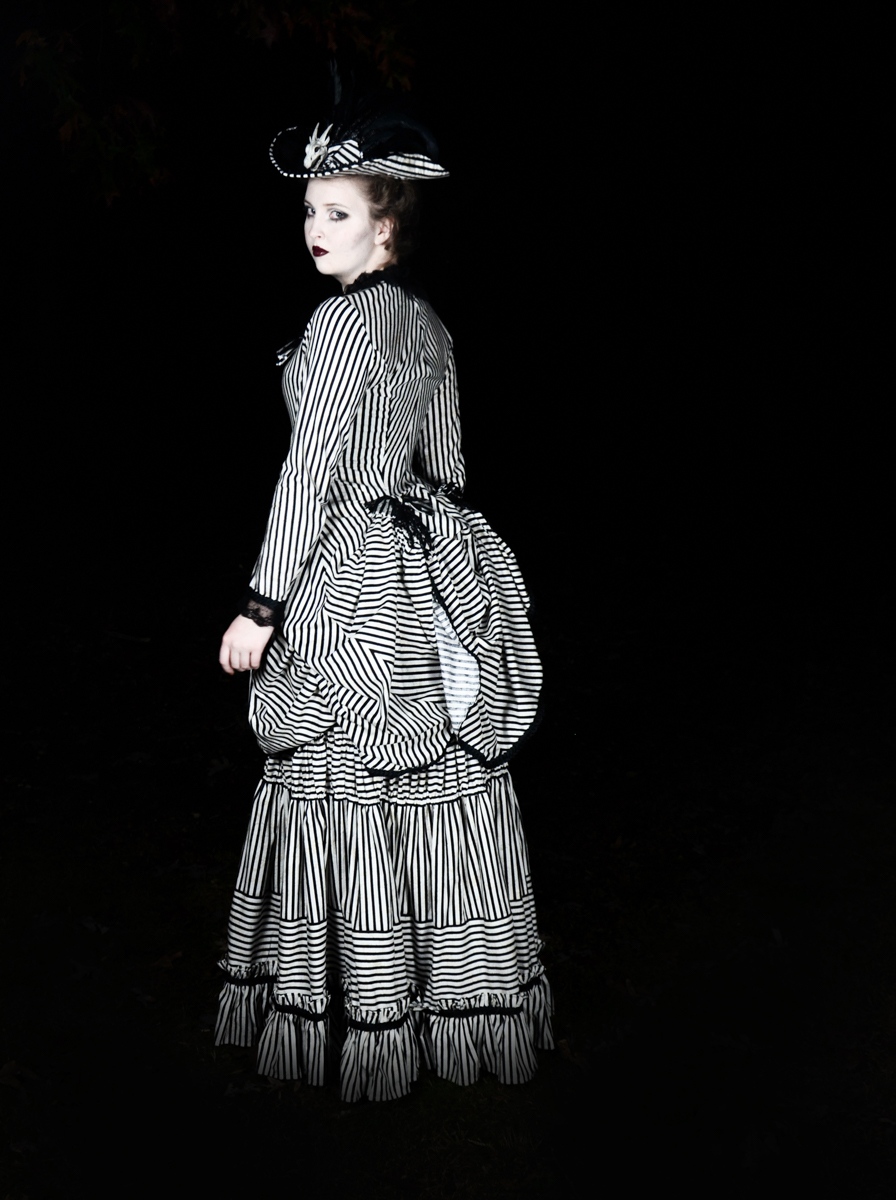




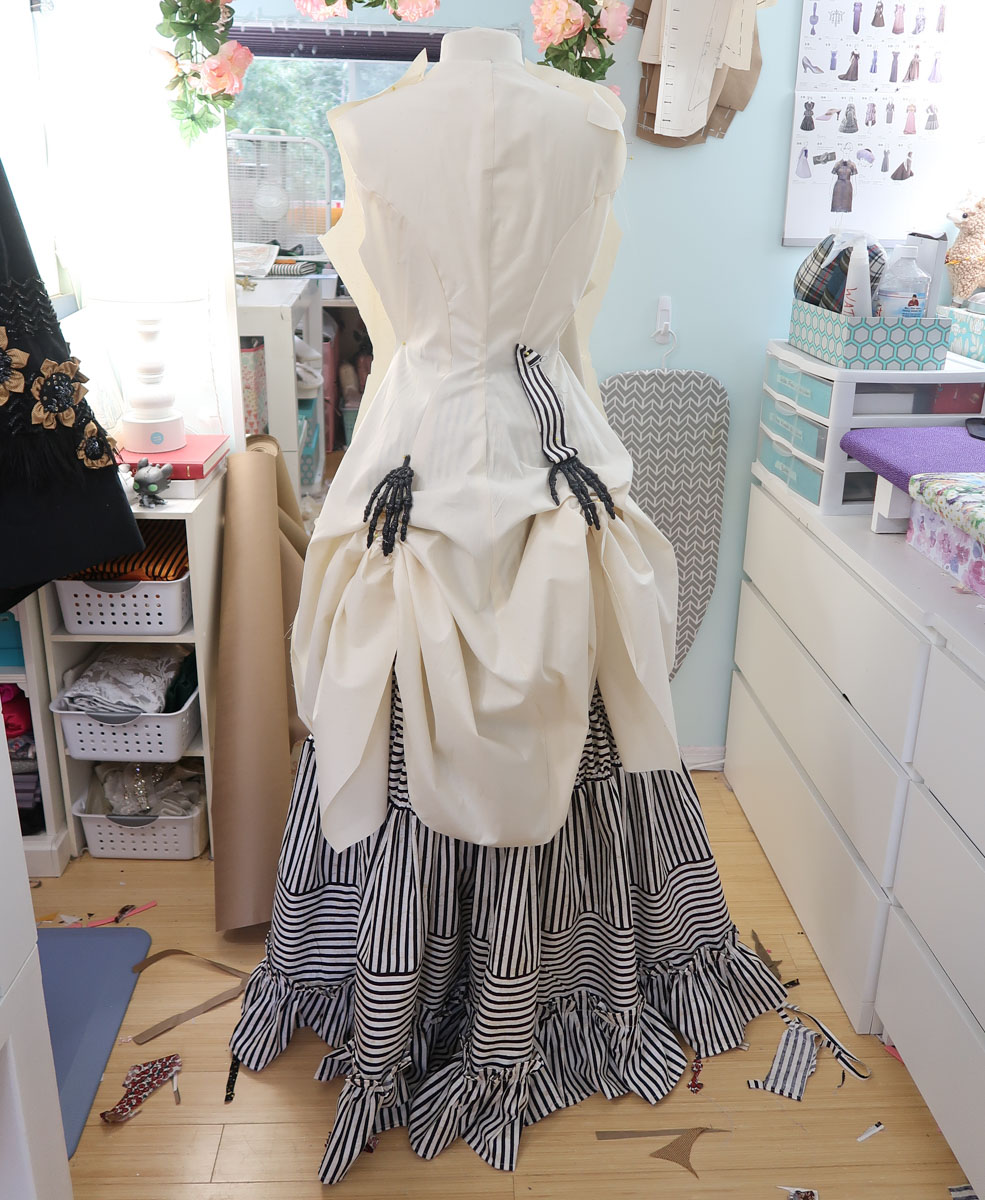
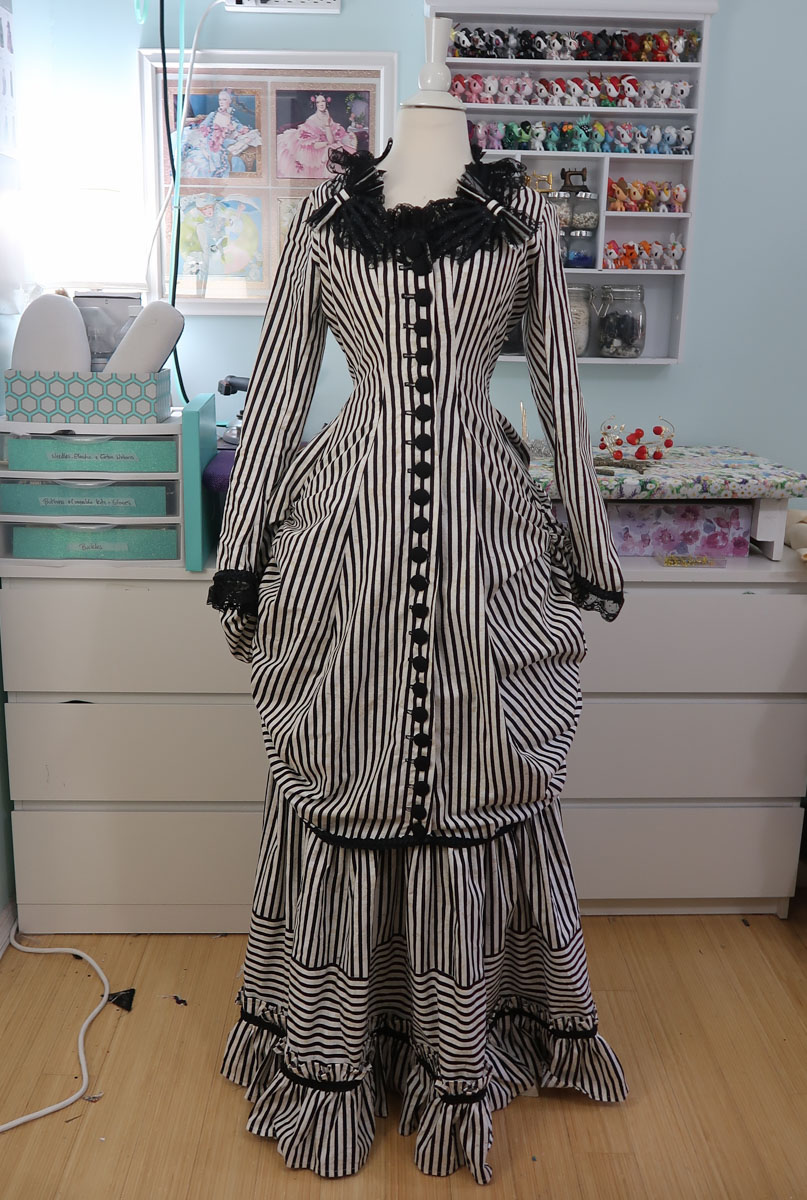

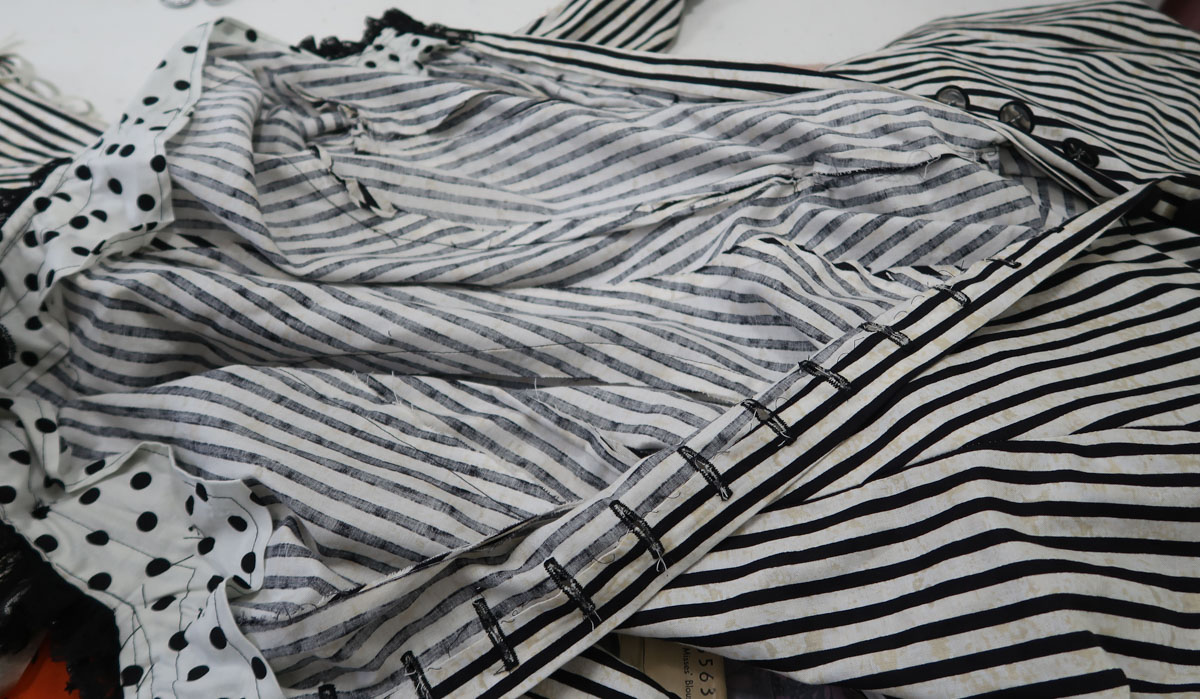
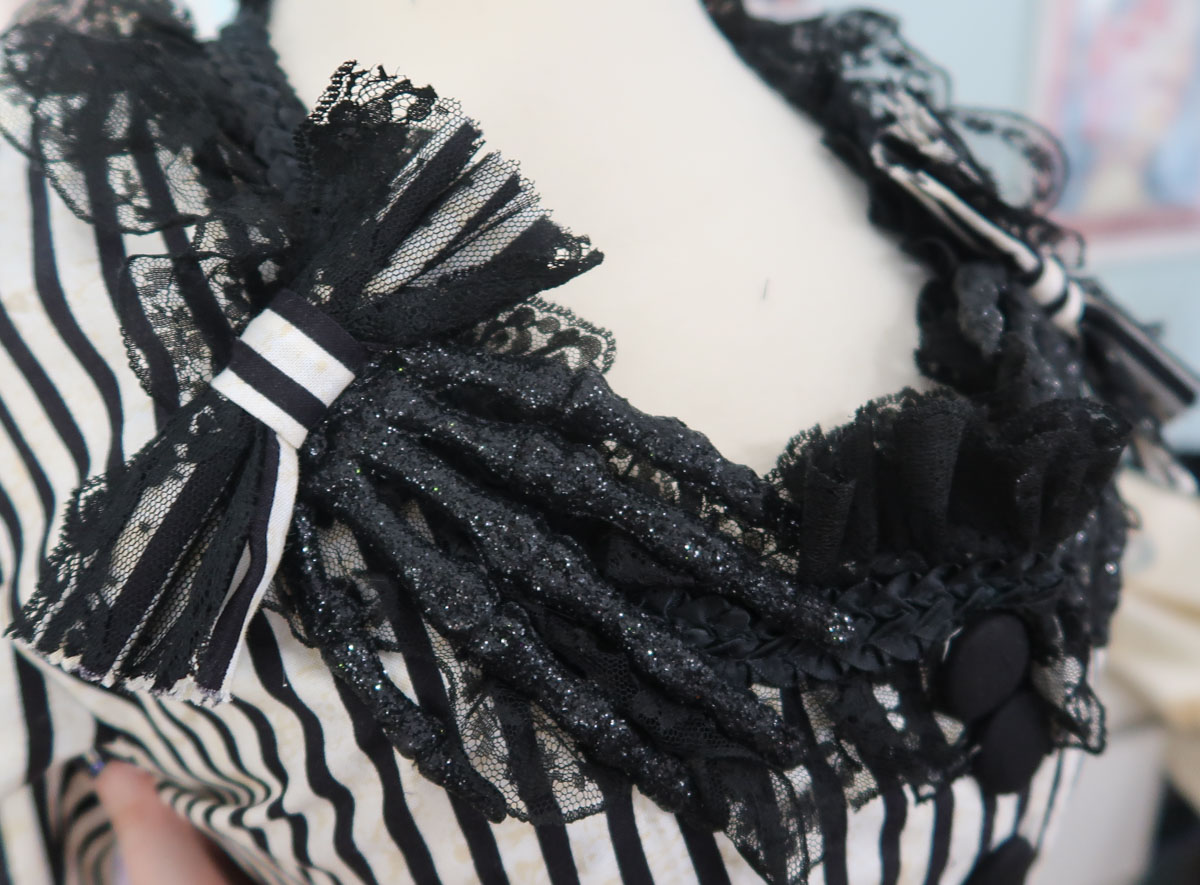
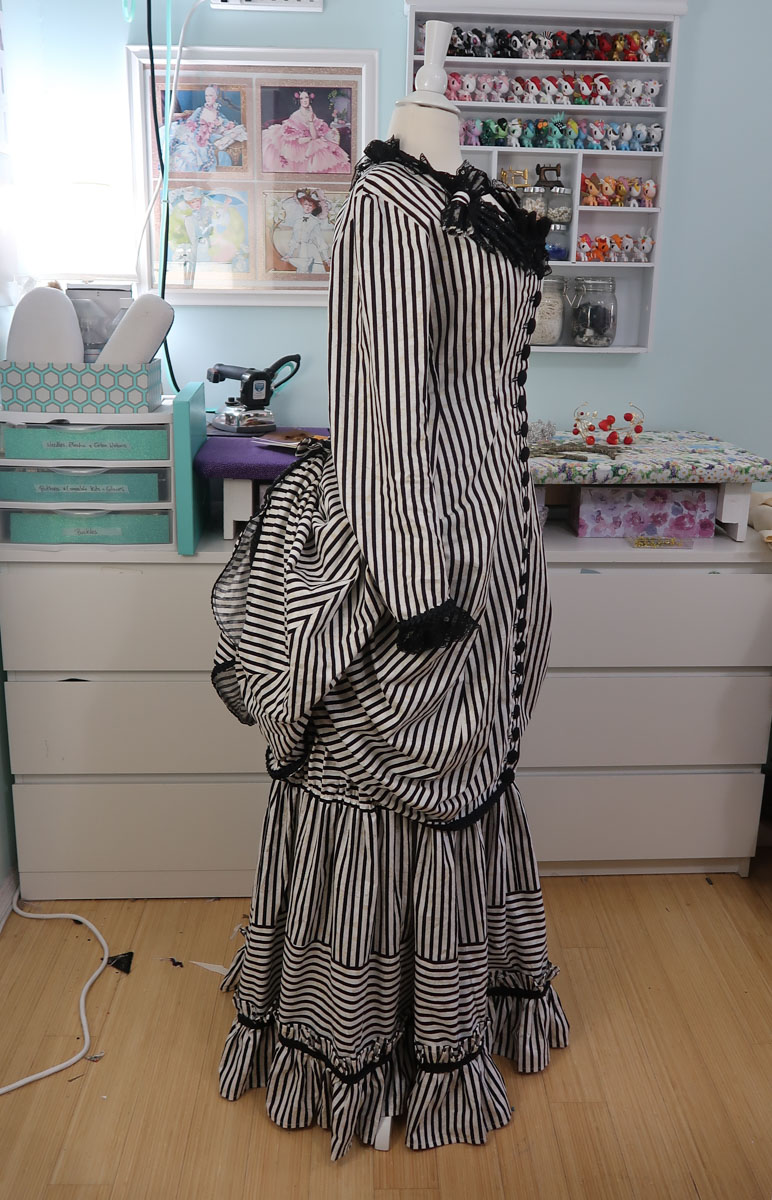
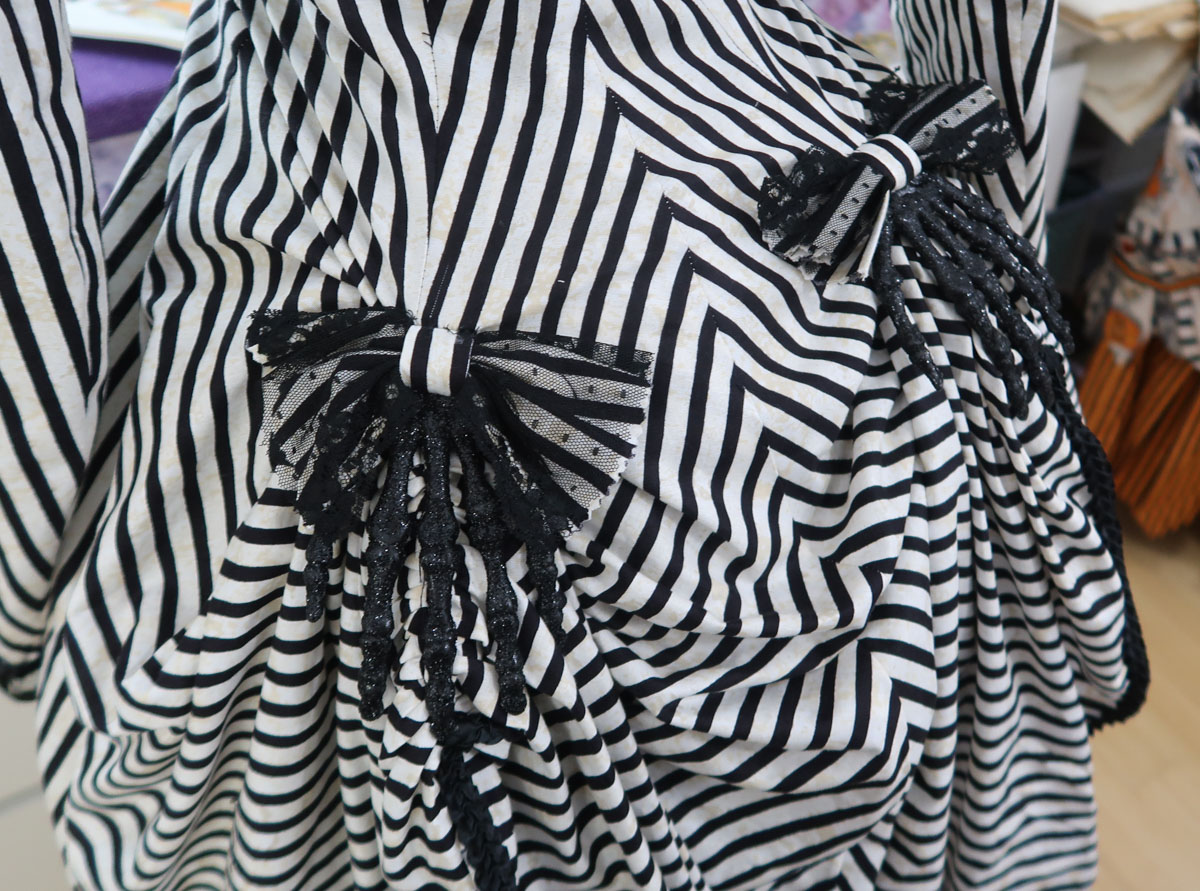
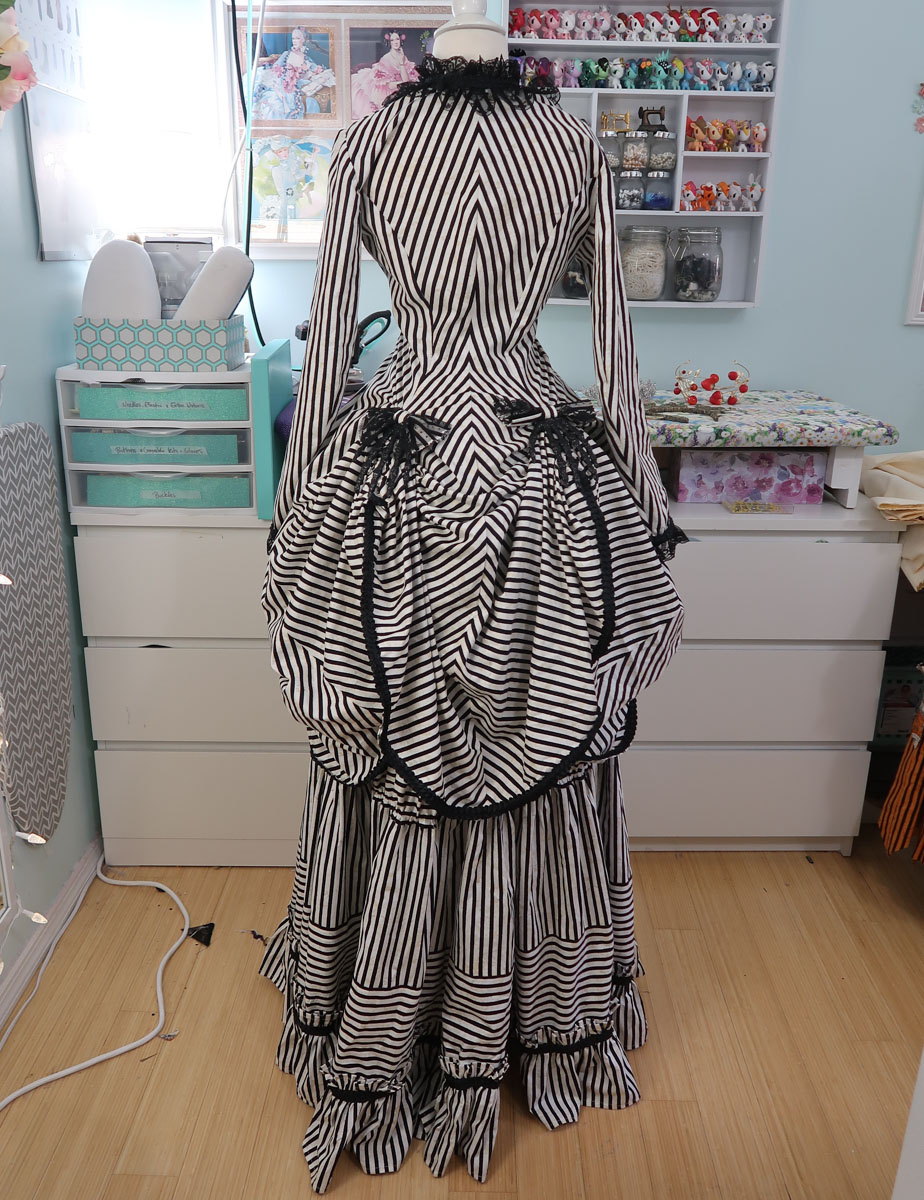
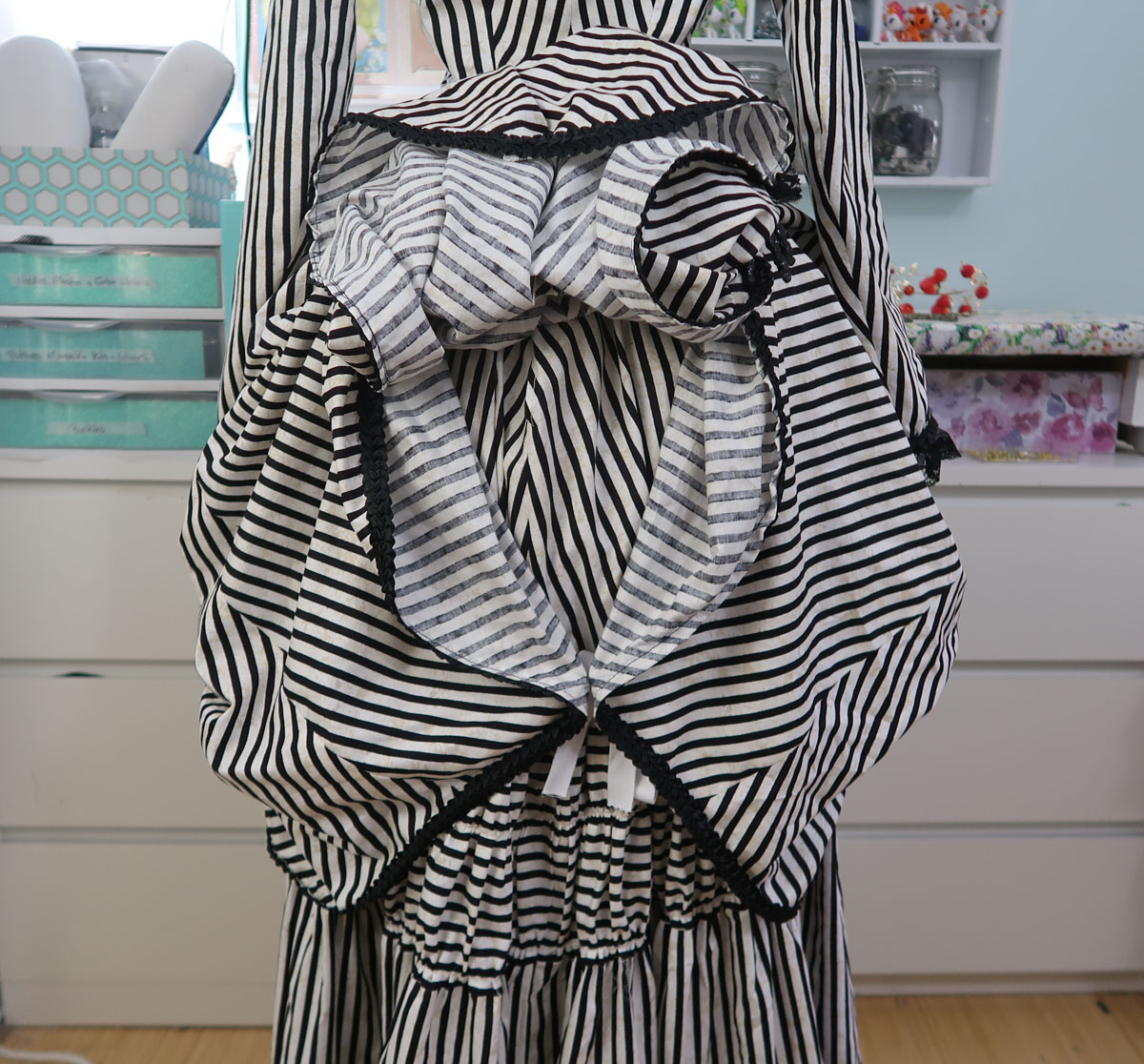
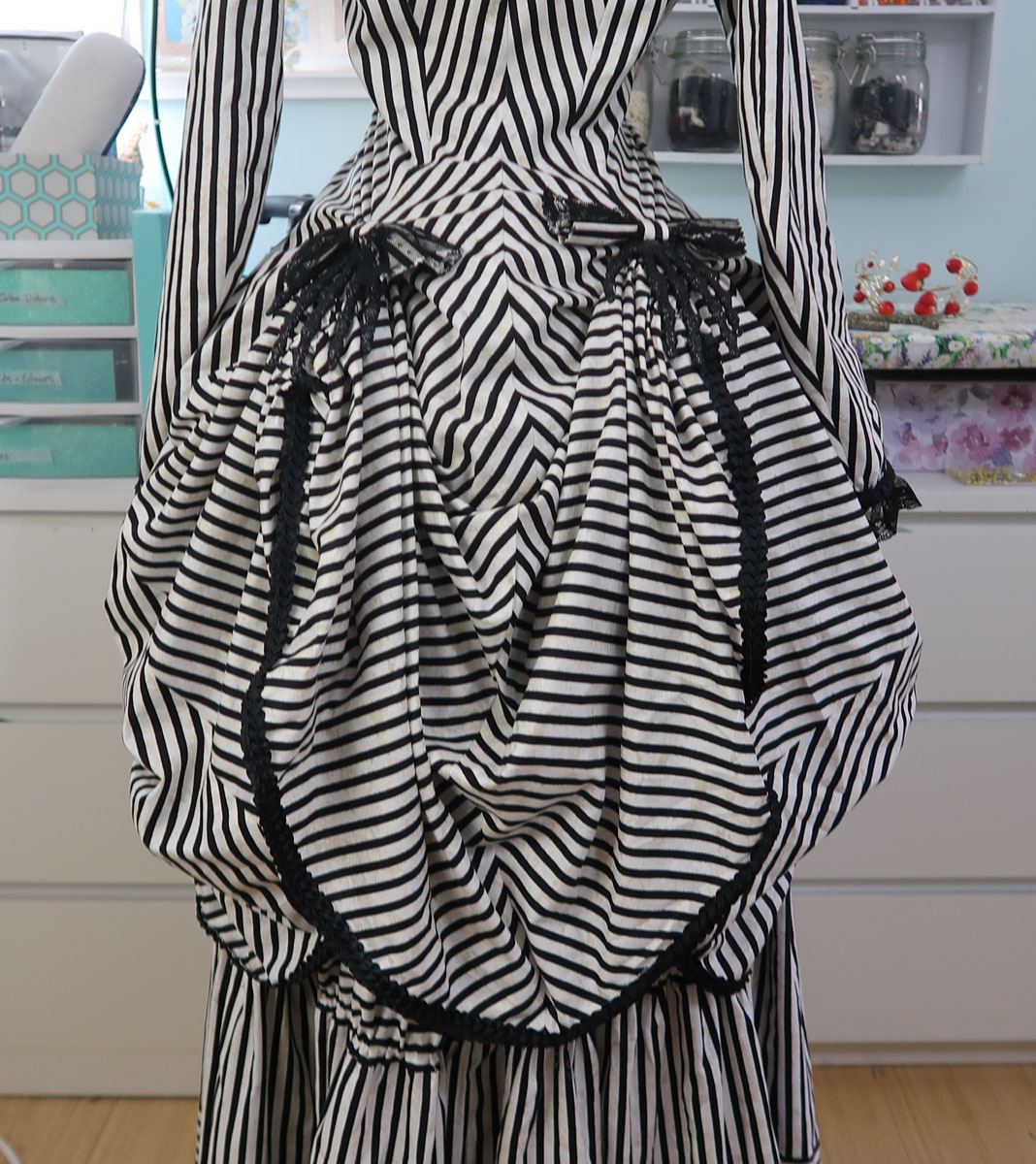



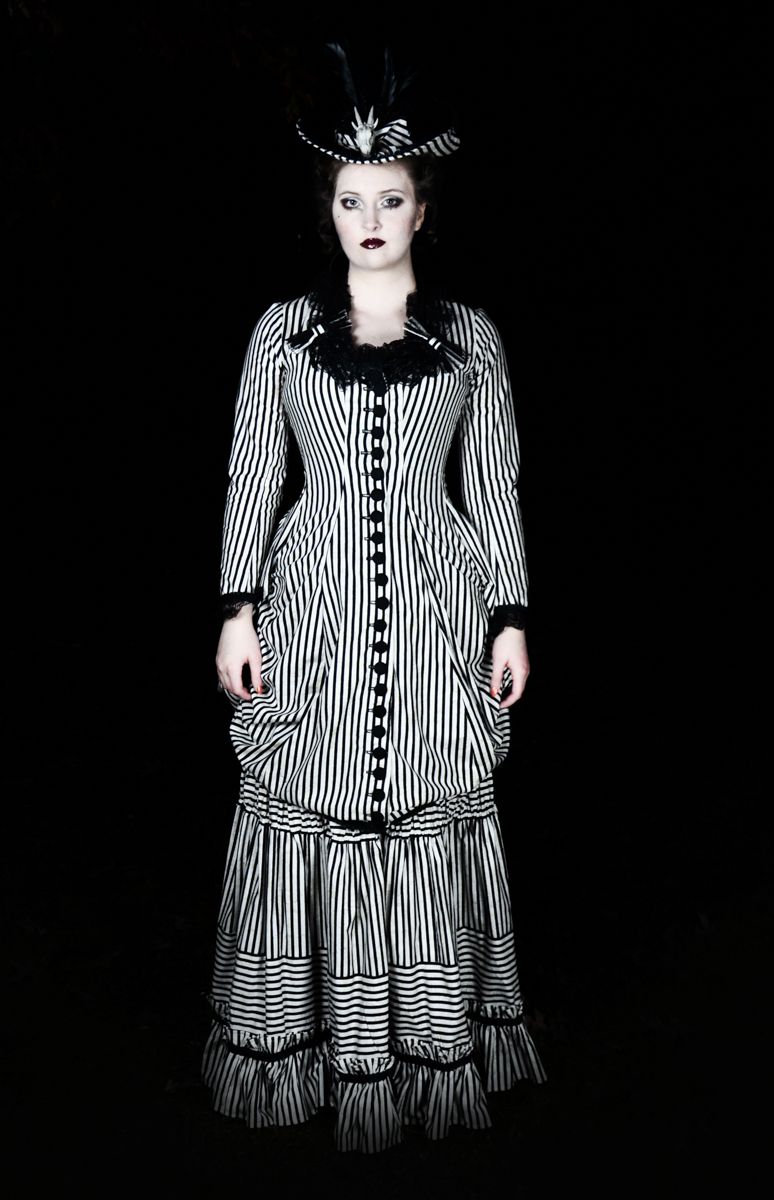
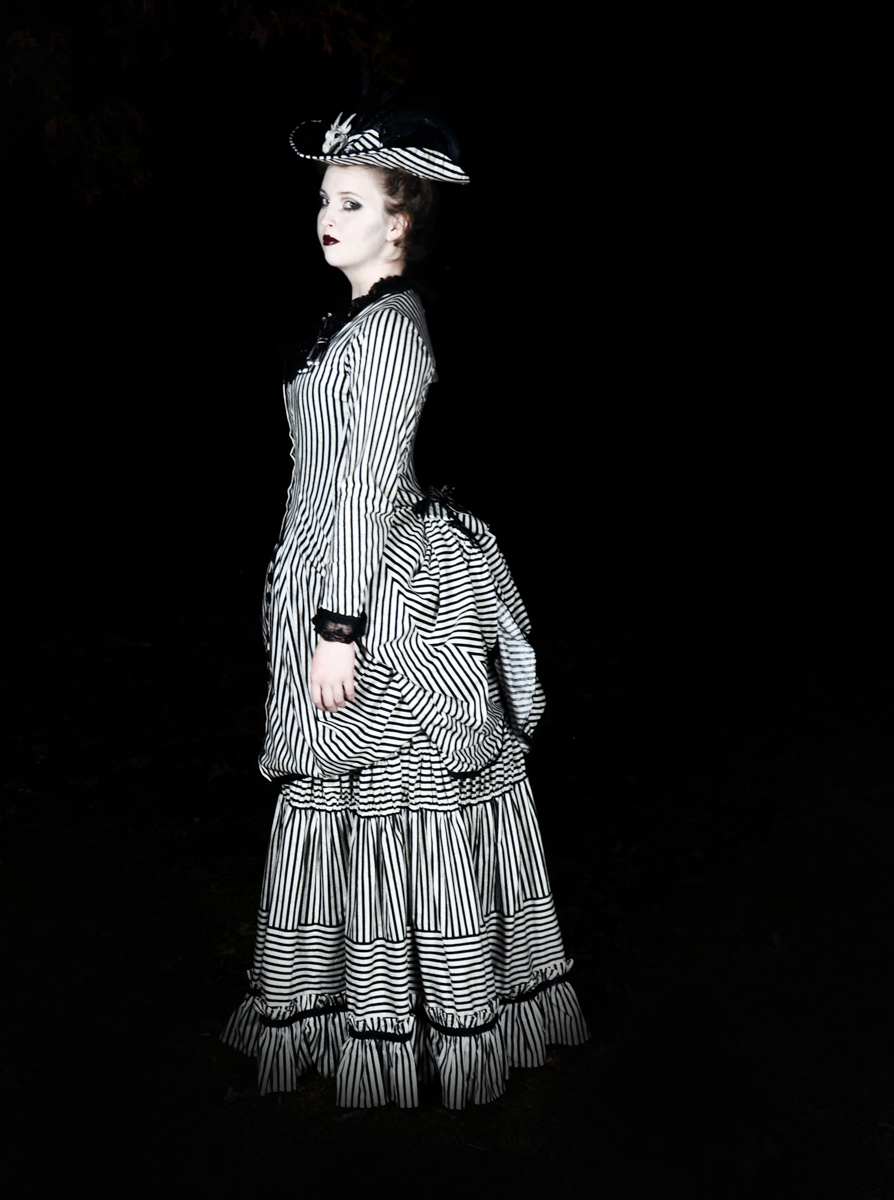
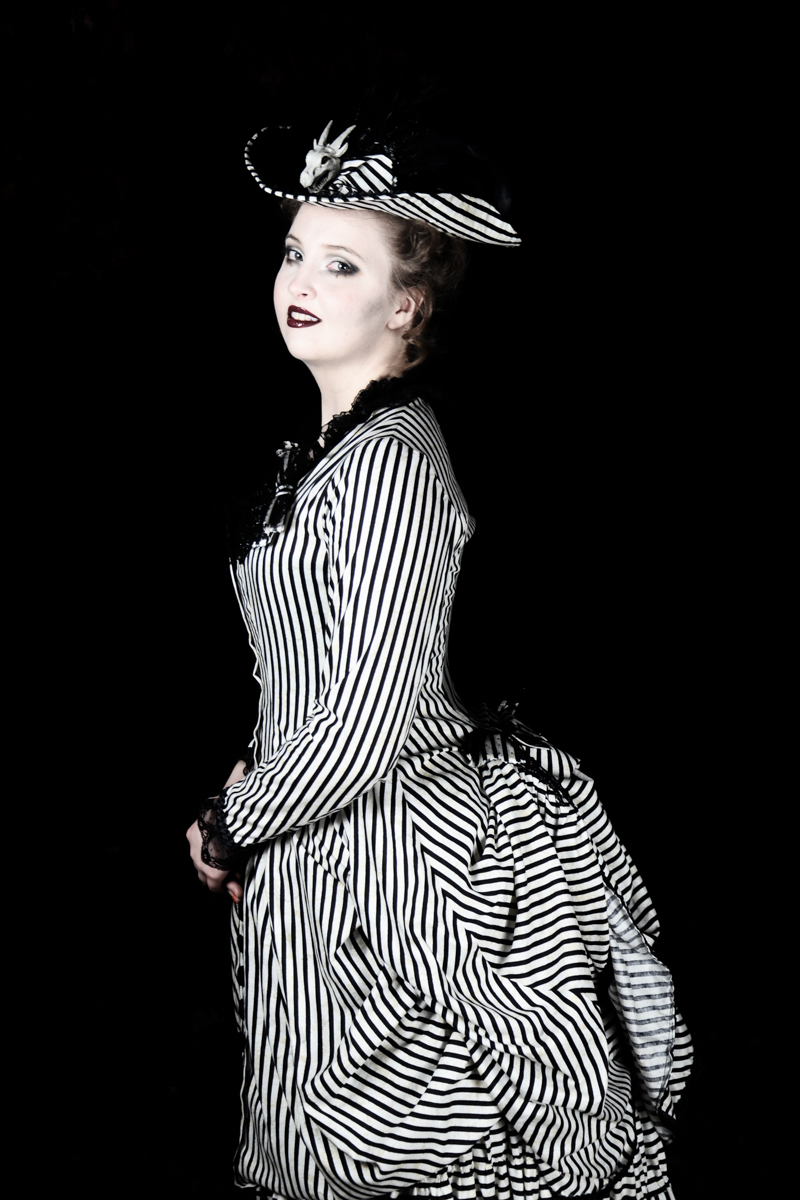
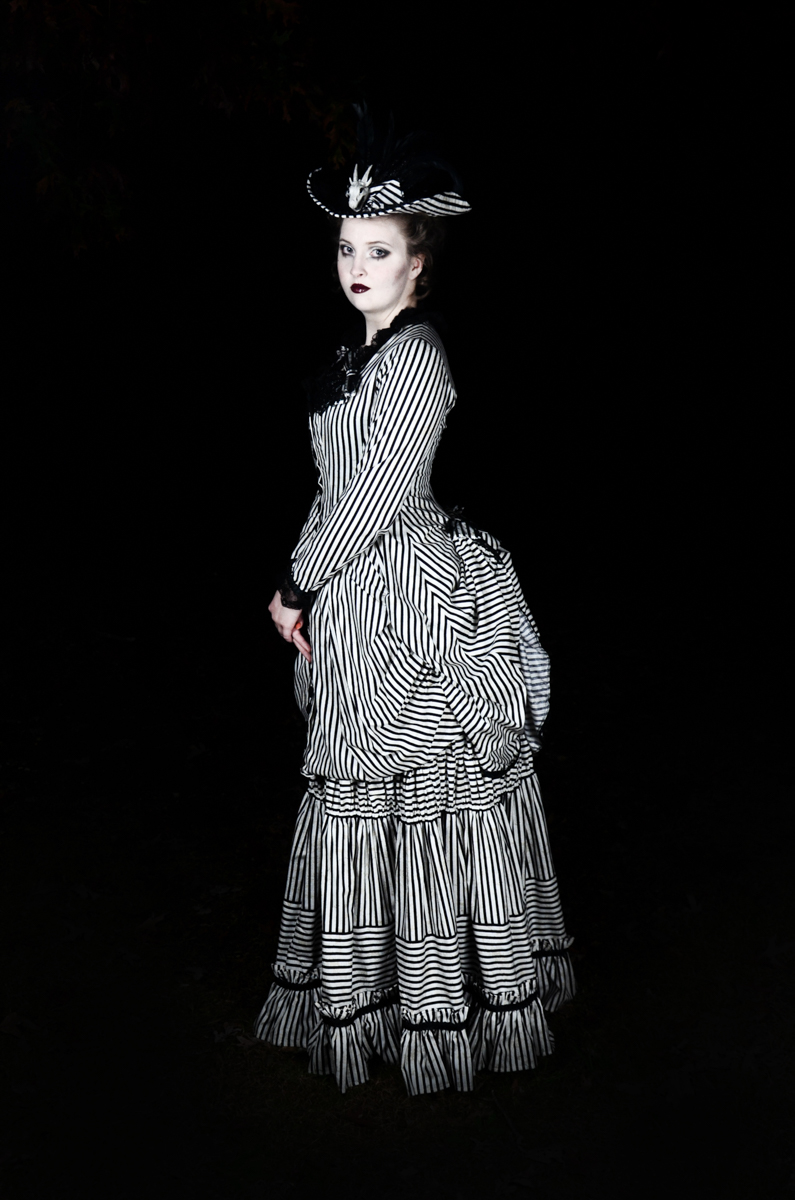
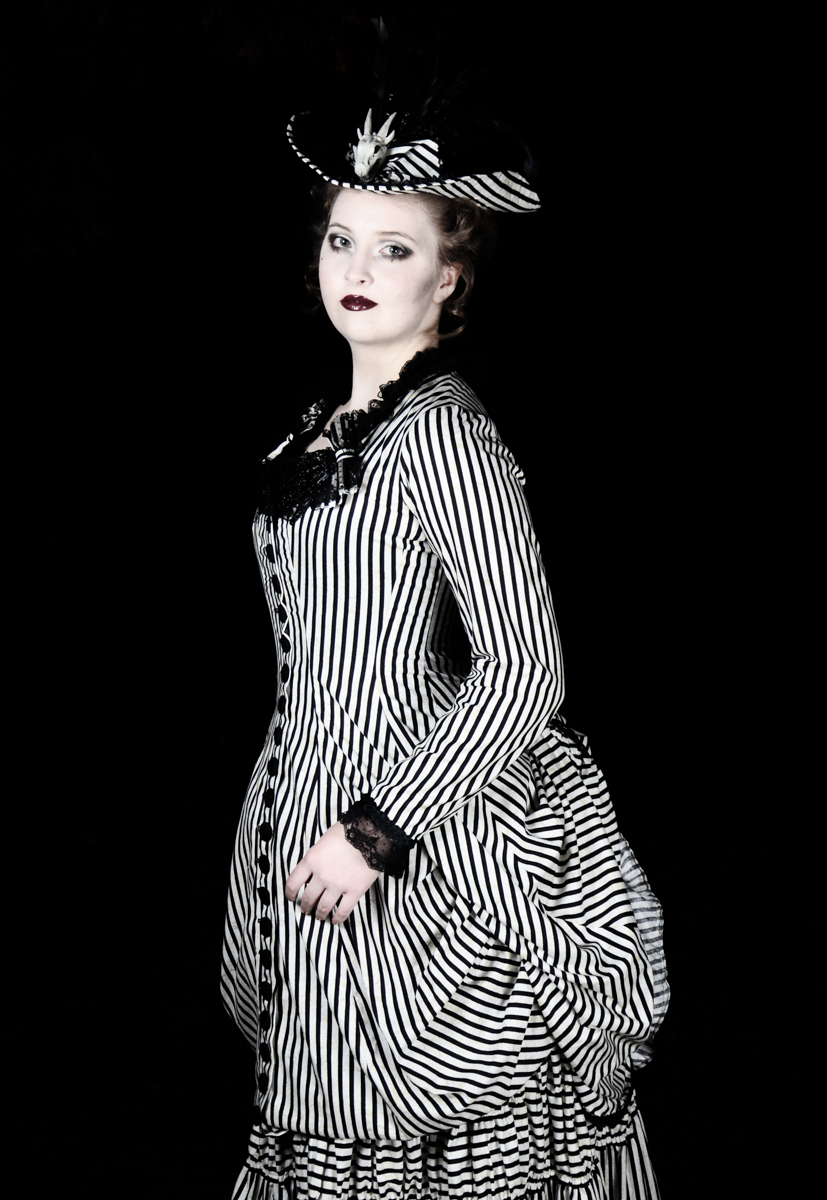
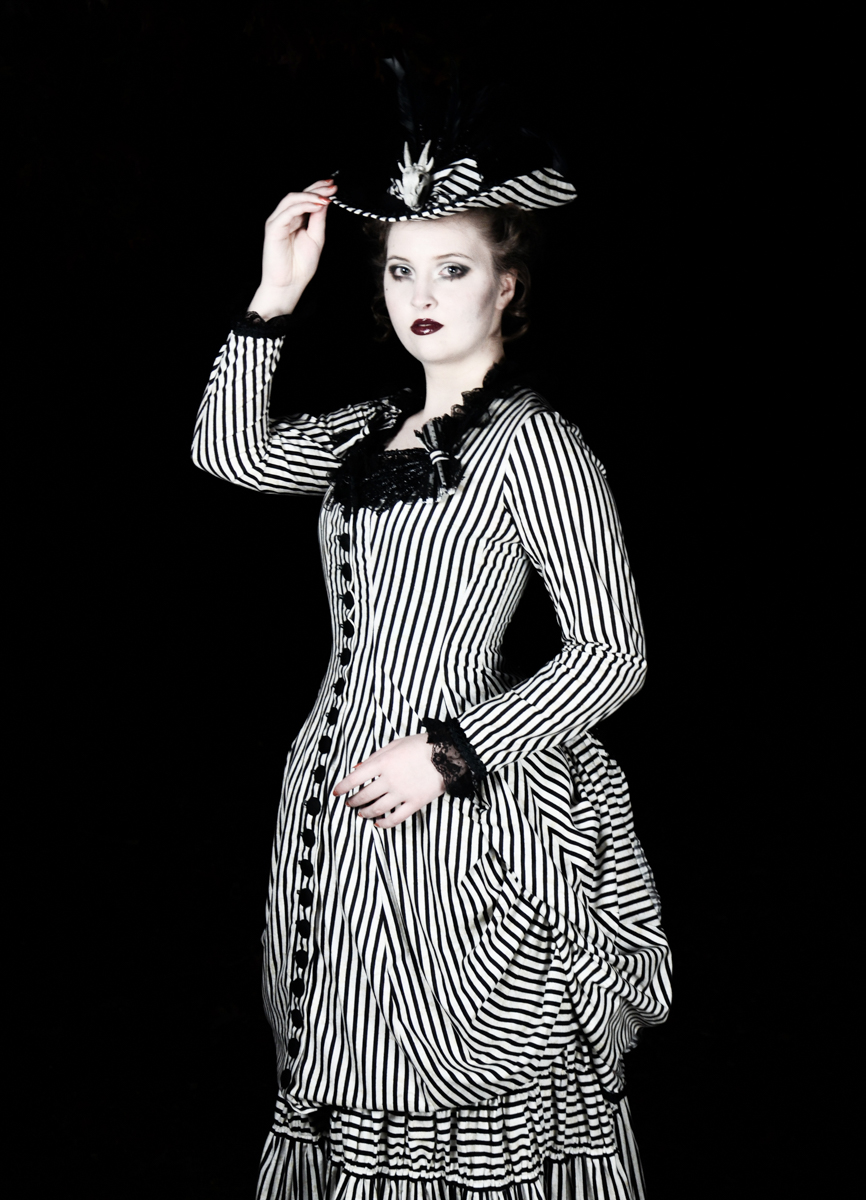

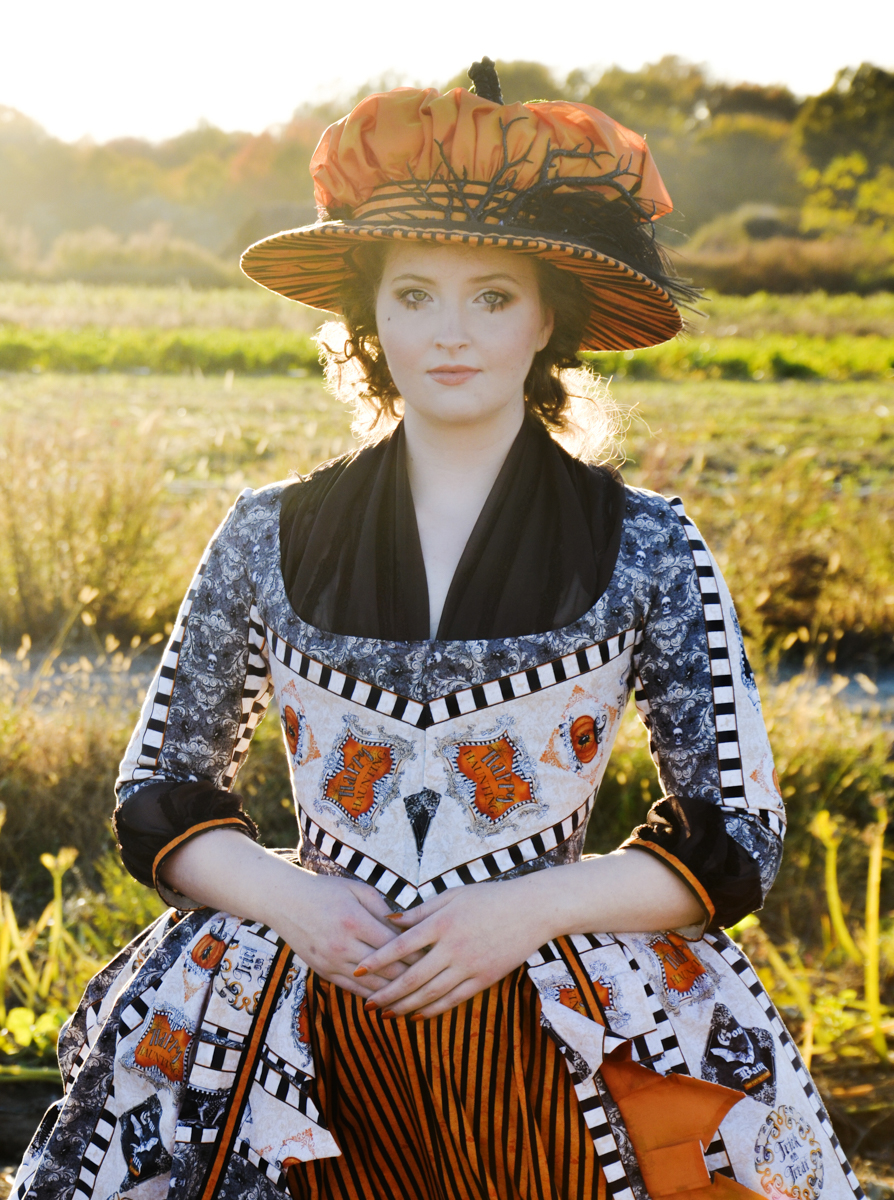
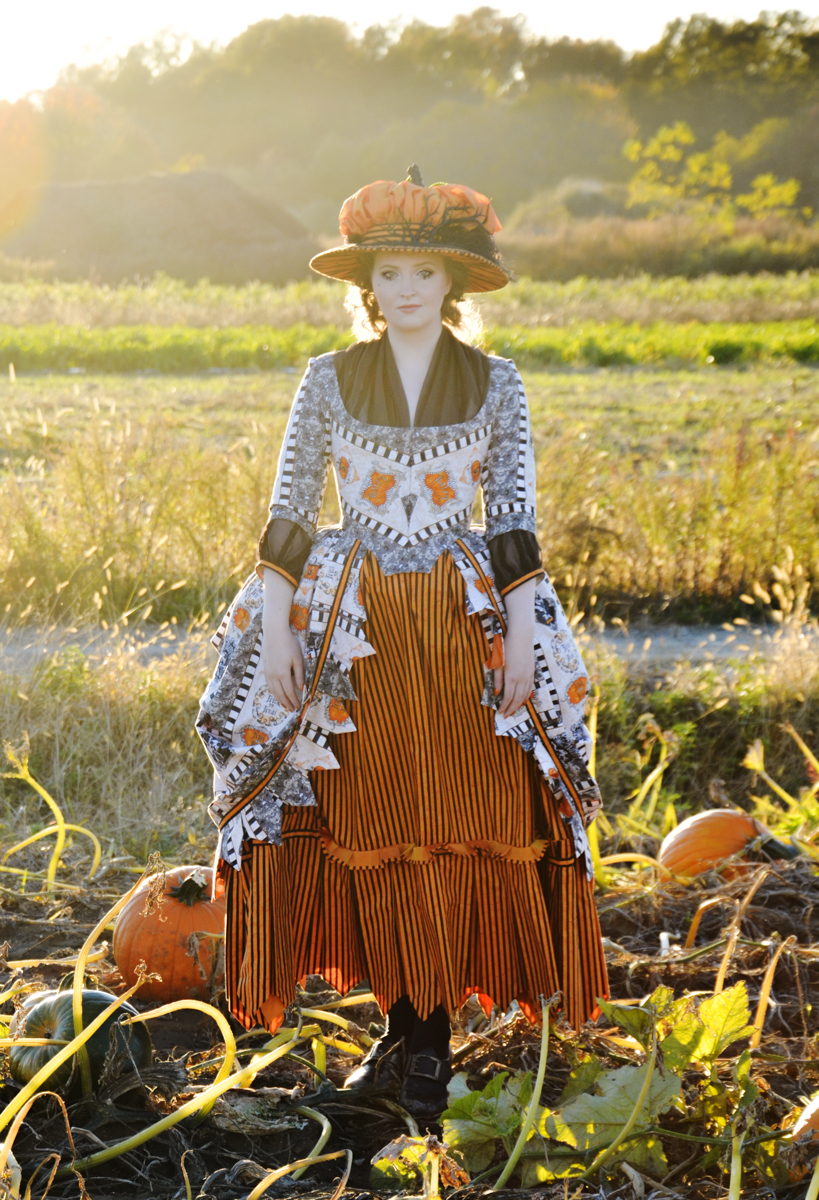

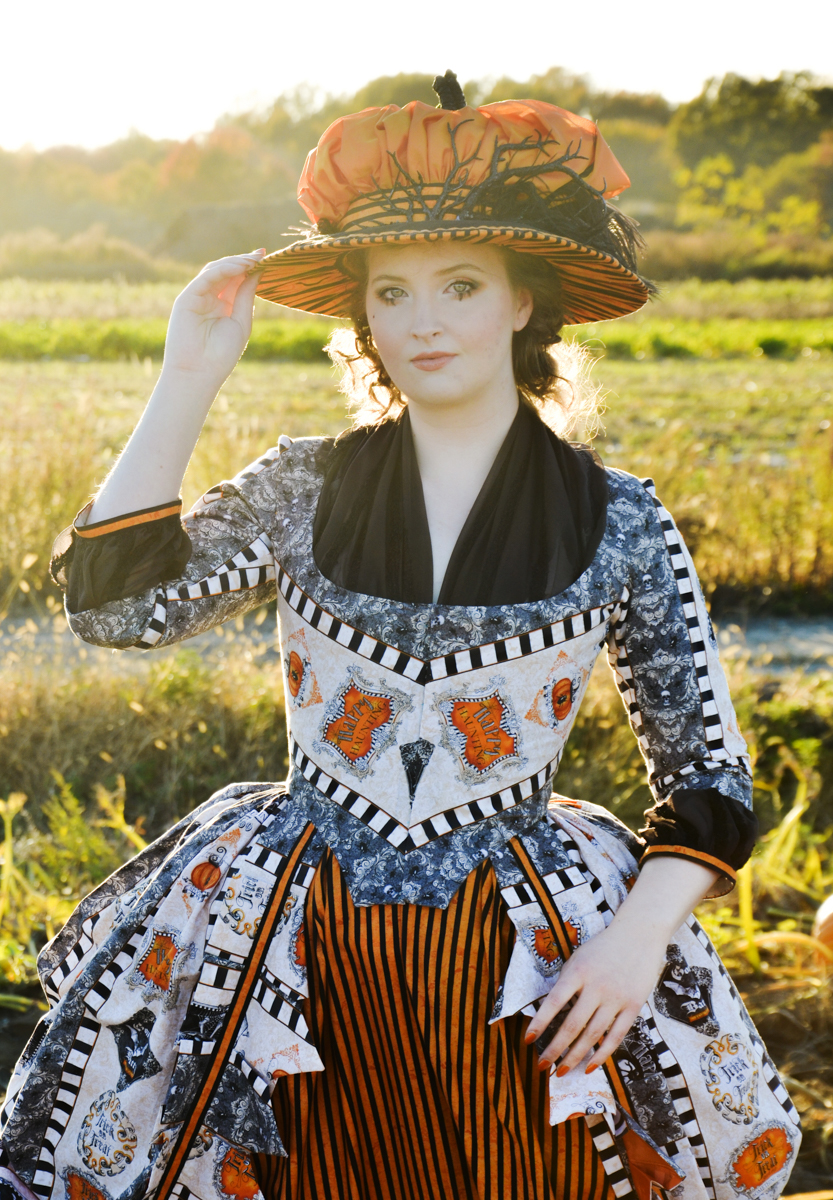
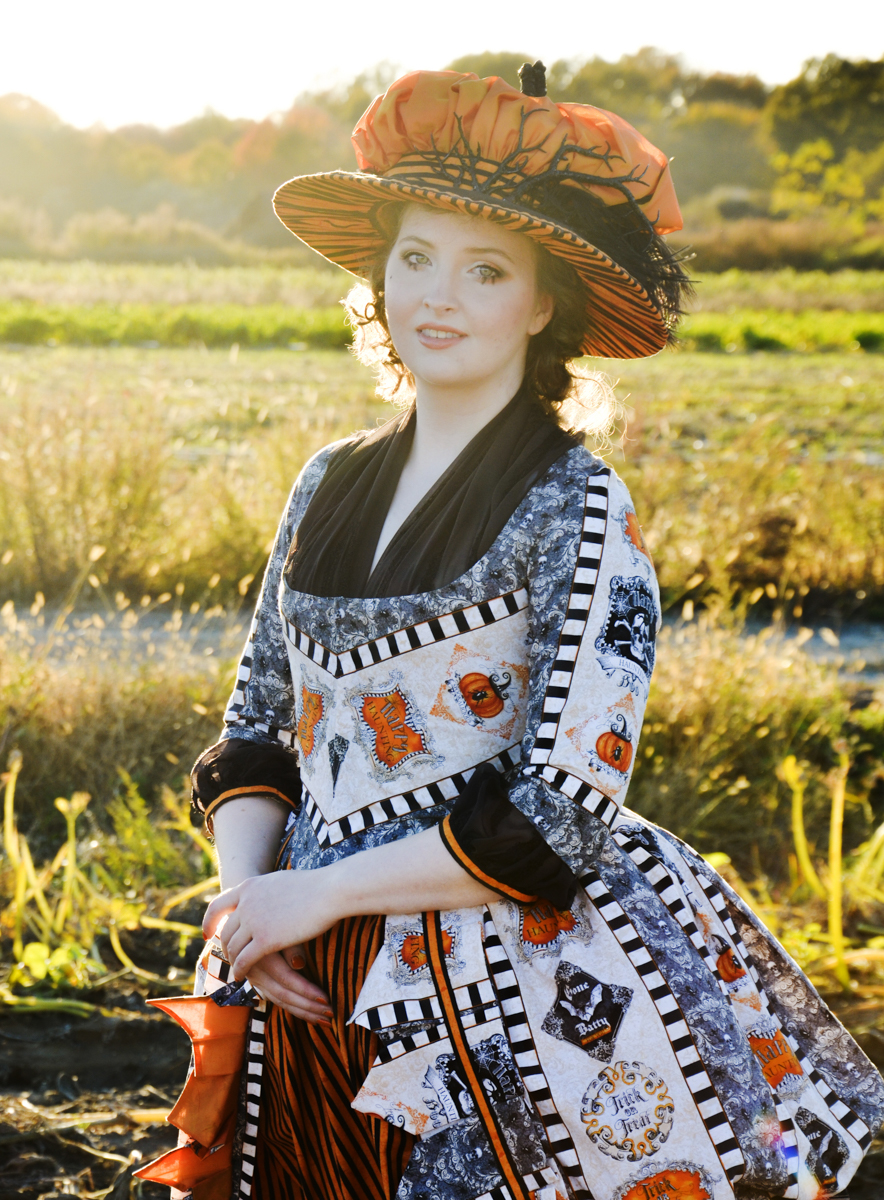
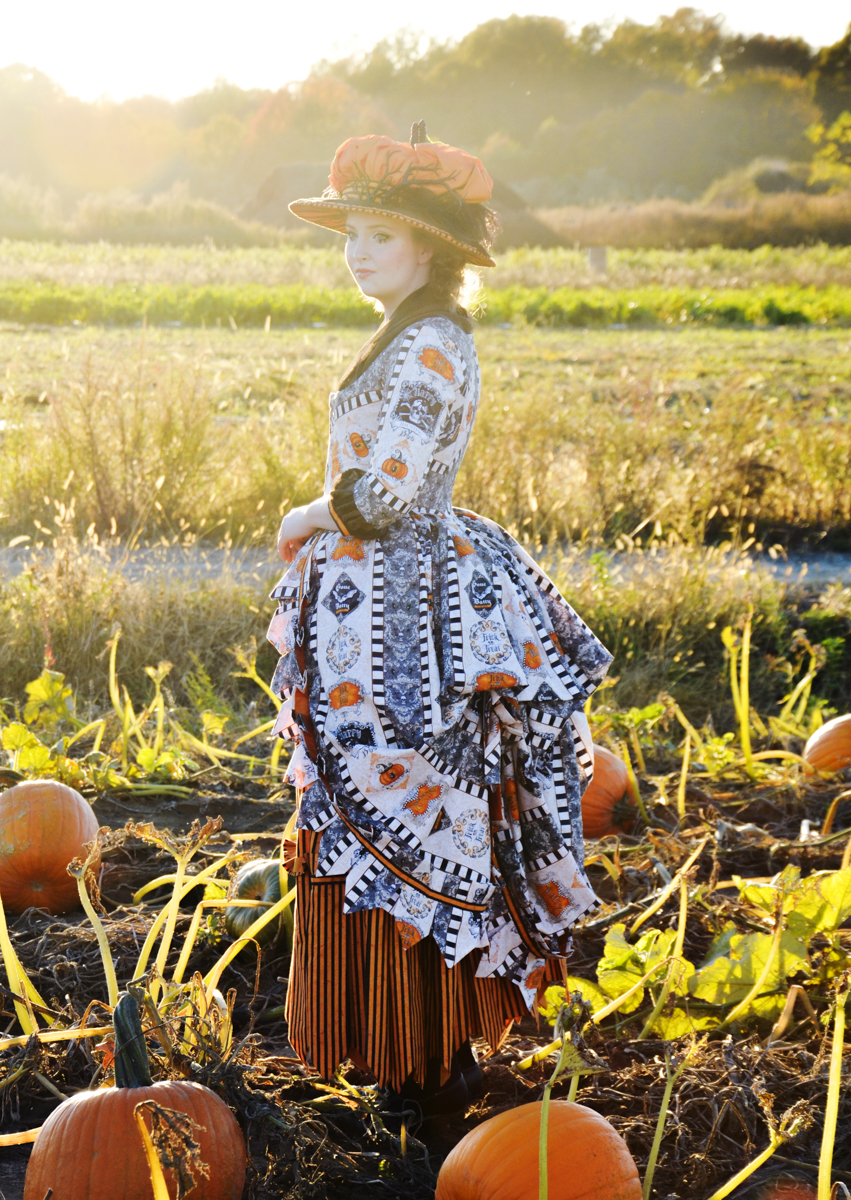
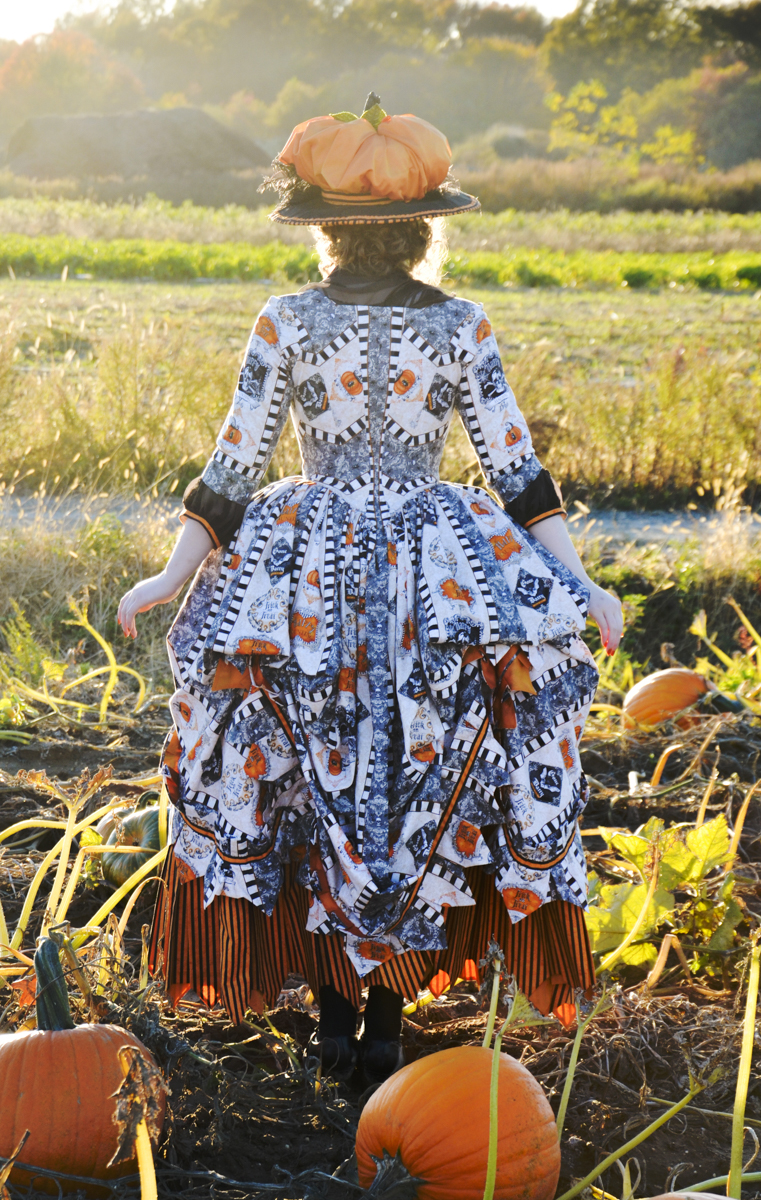

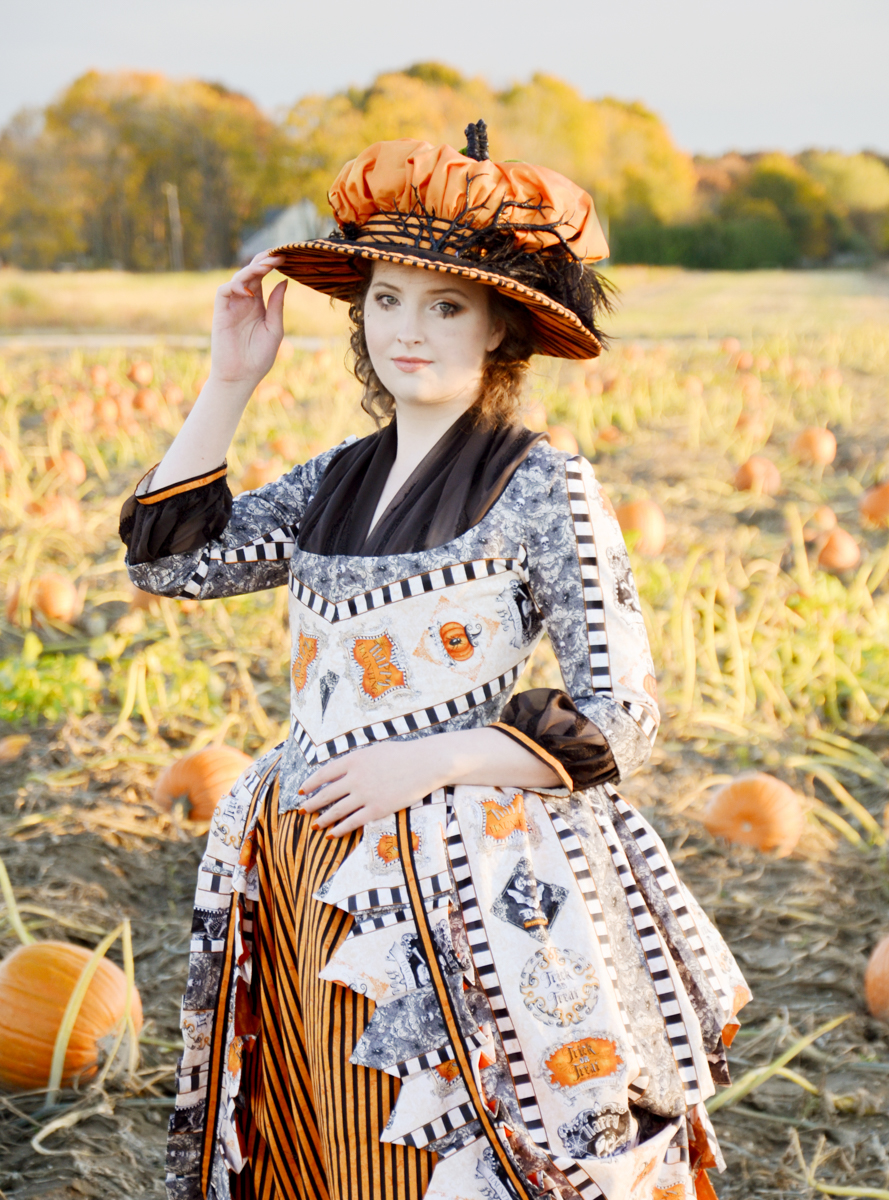

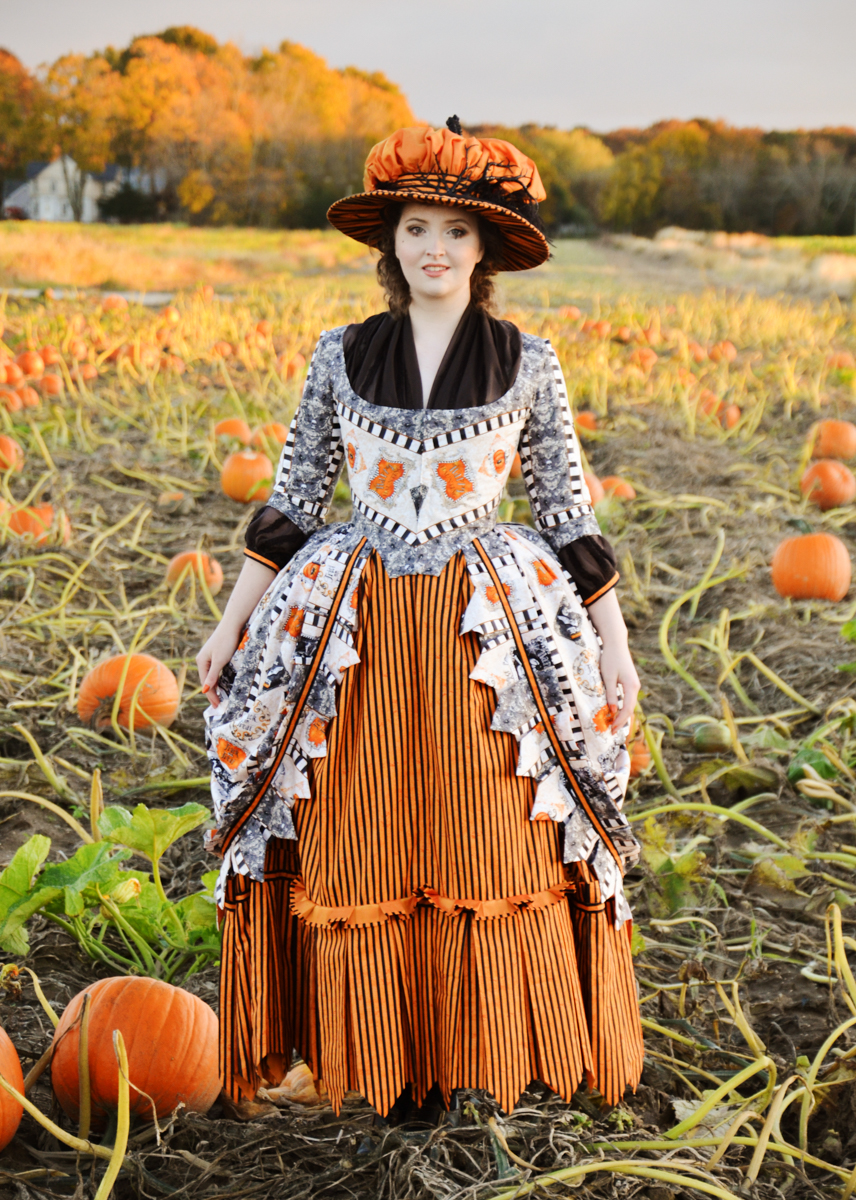

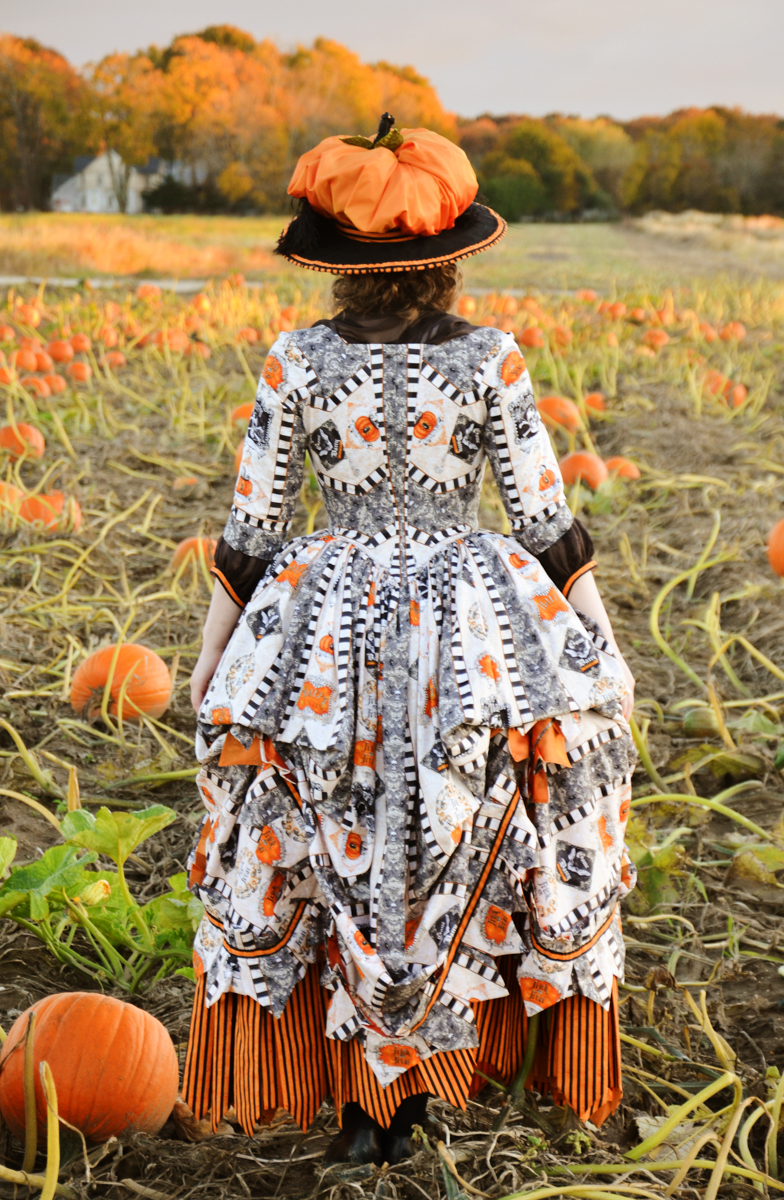
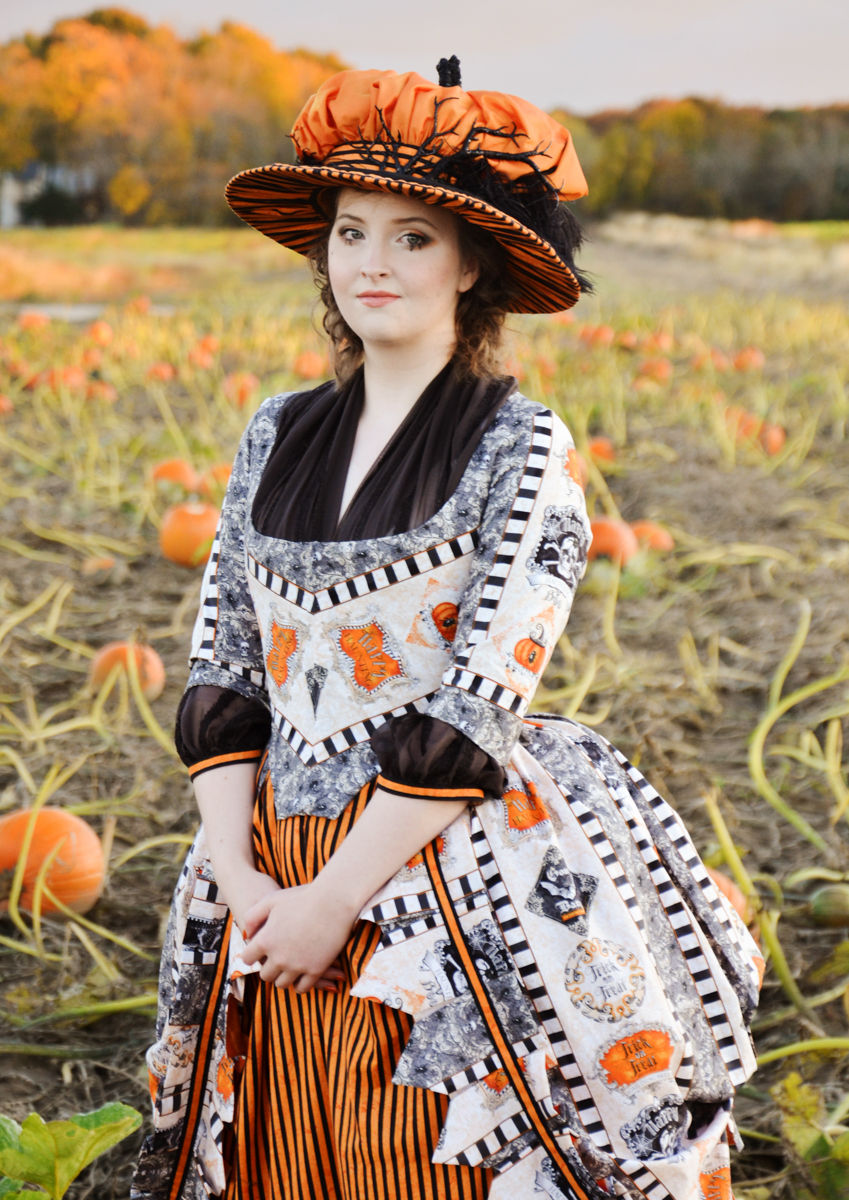
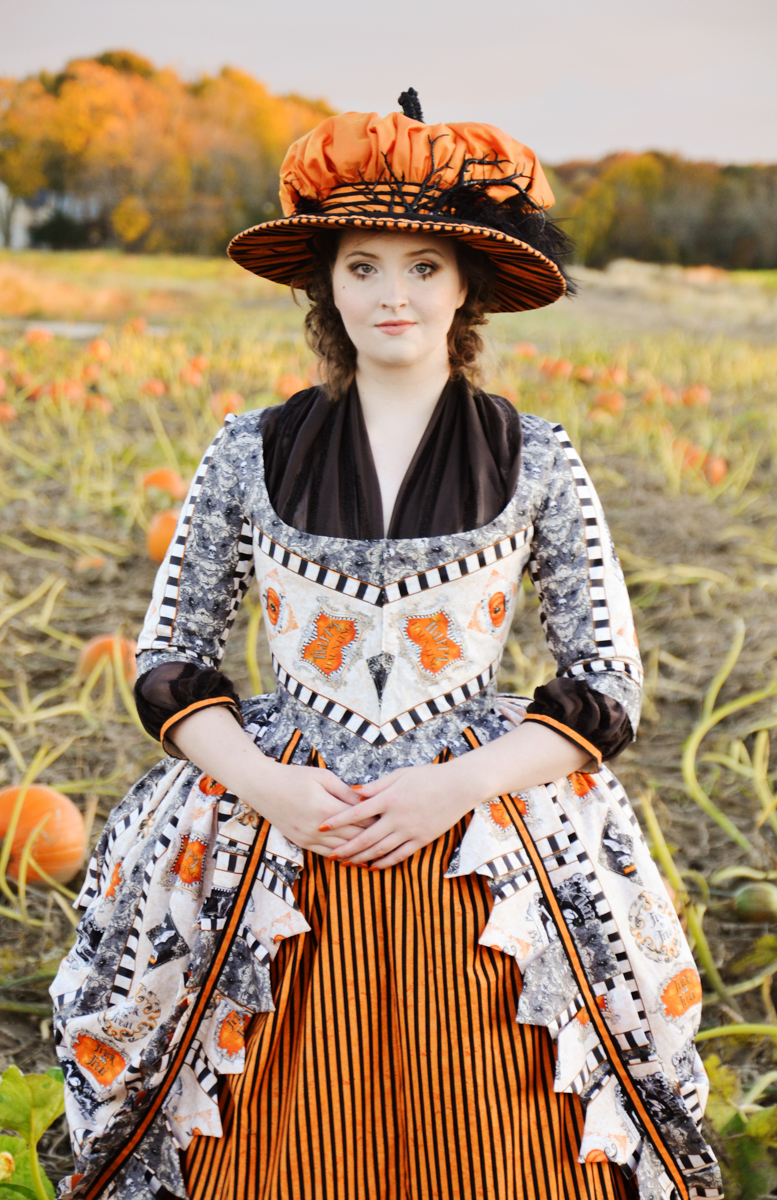
















 I also marked a line 2″ away from the top edge, then ironed the fabric inward so it touched that line. This created an even 1″ hem across the top edge.
I also marked a line 2″ away from the top edge, then ironed the fabric inward so it touched that line. This created an even 1″ hem across the top edge.


































































